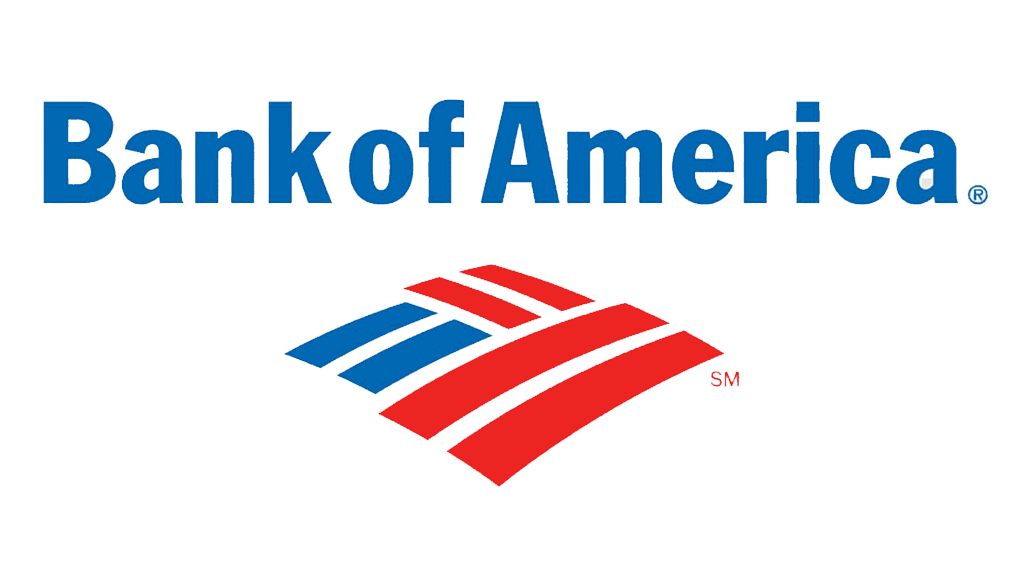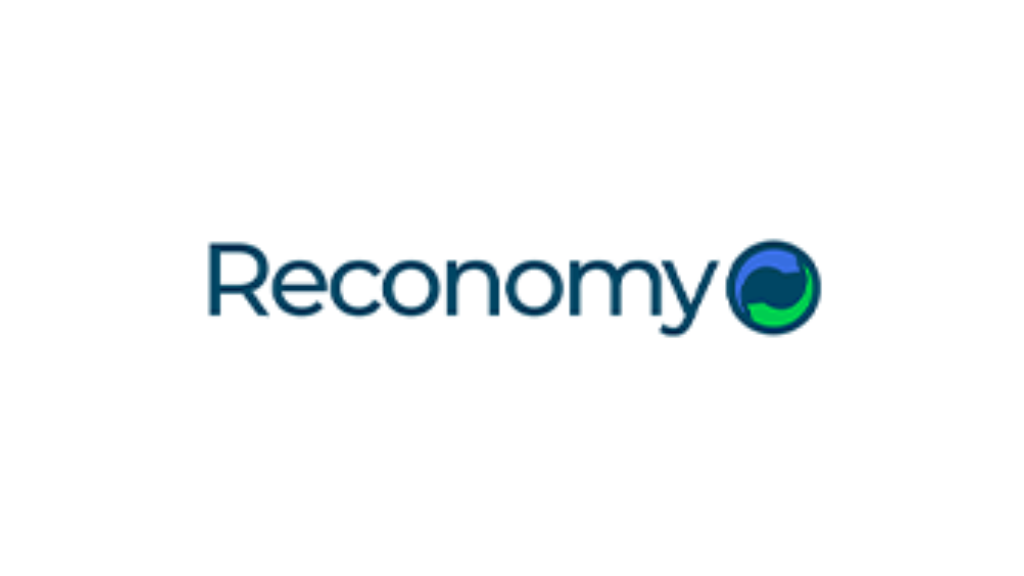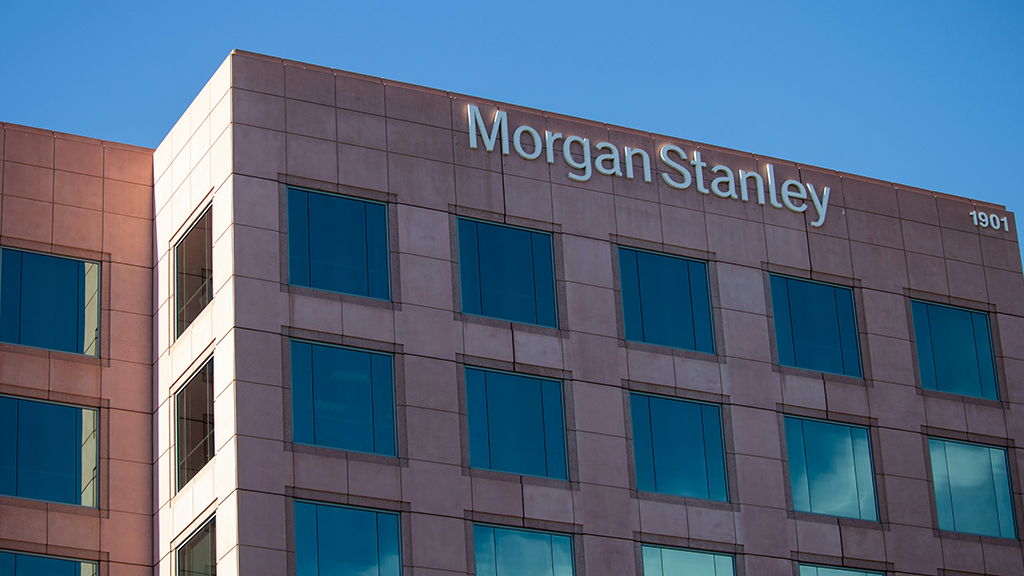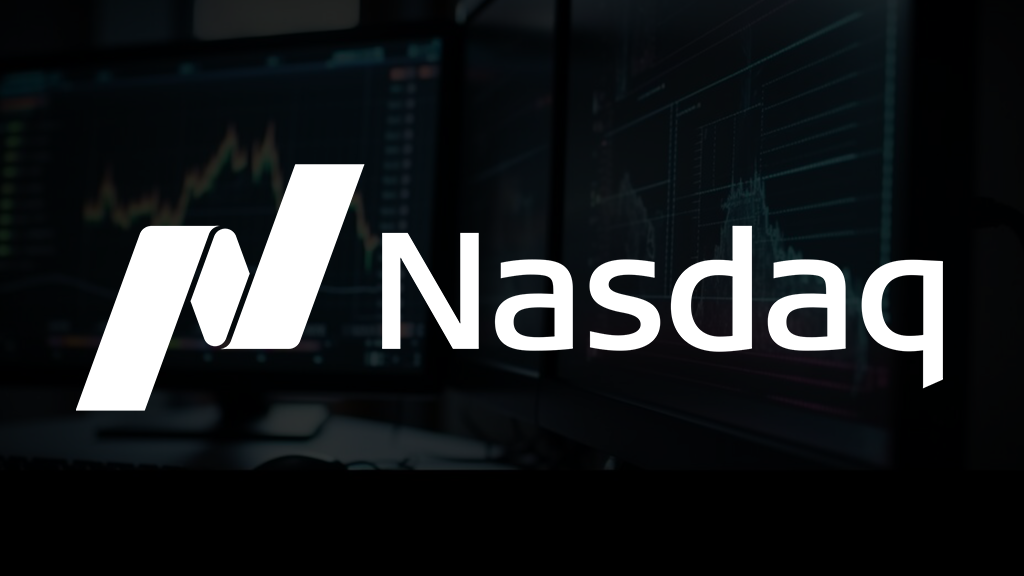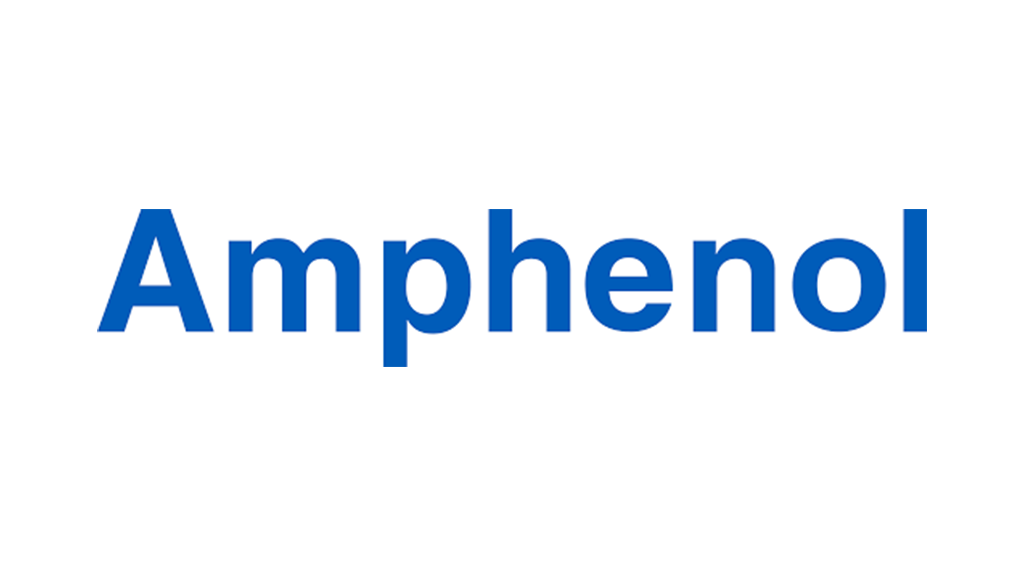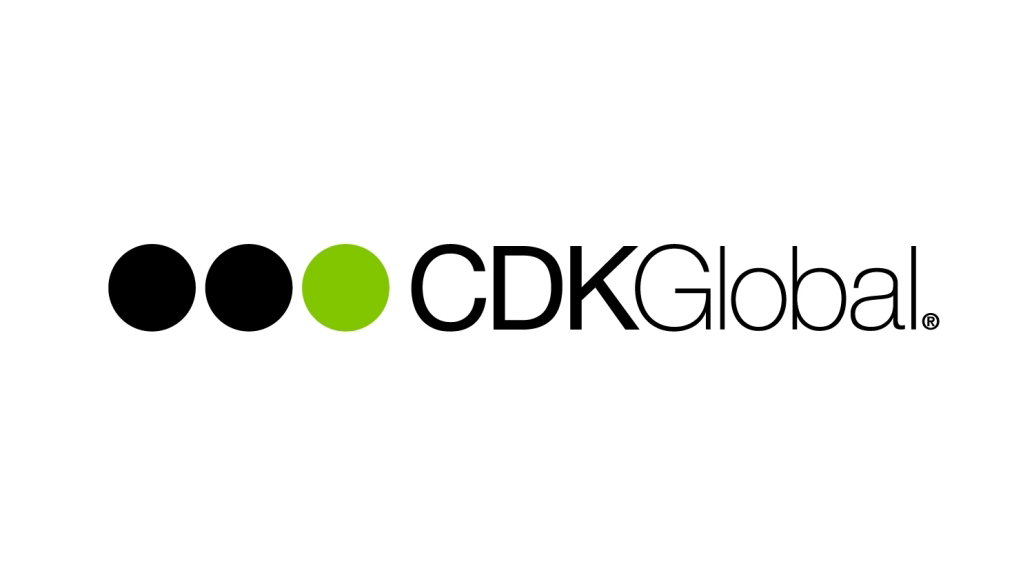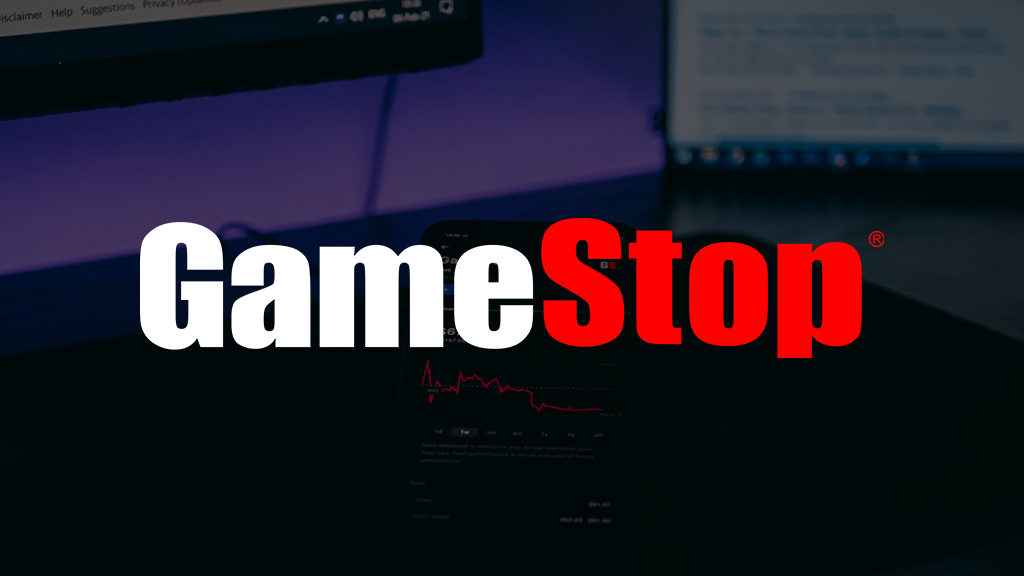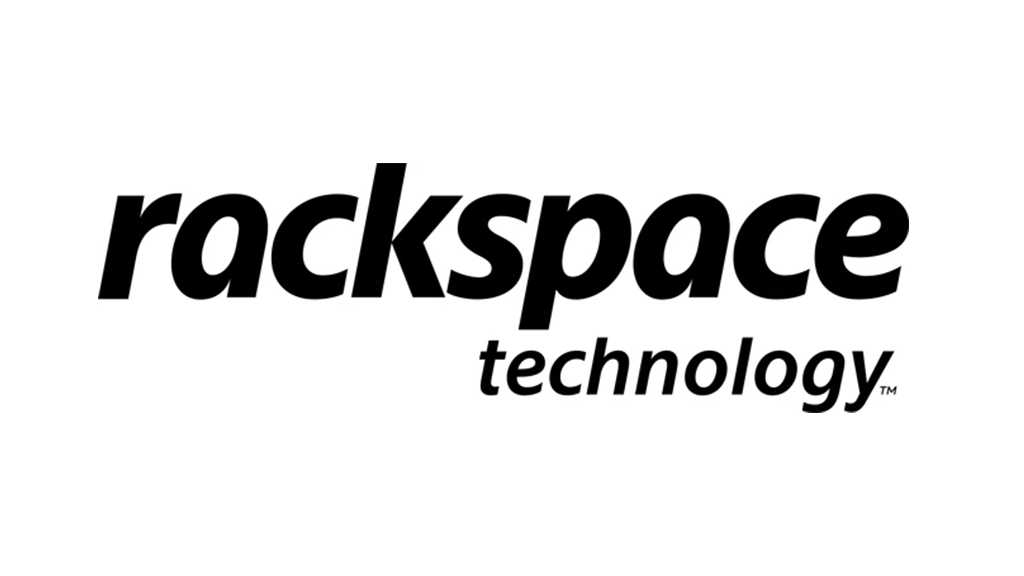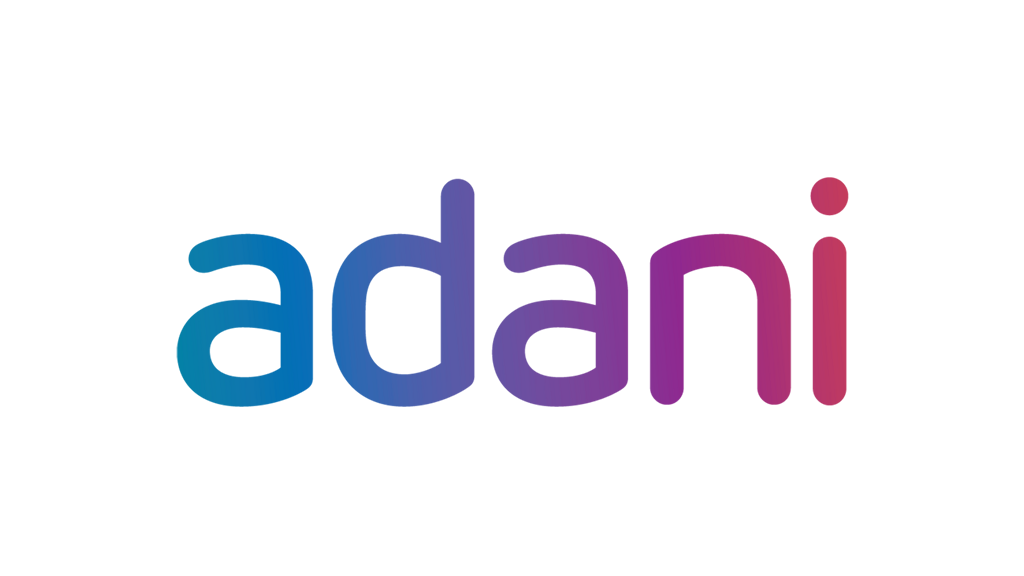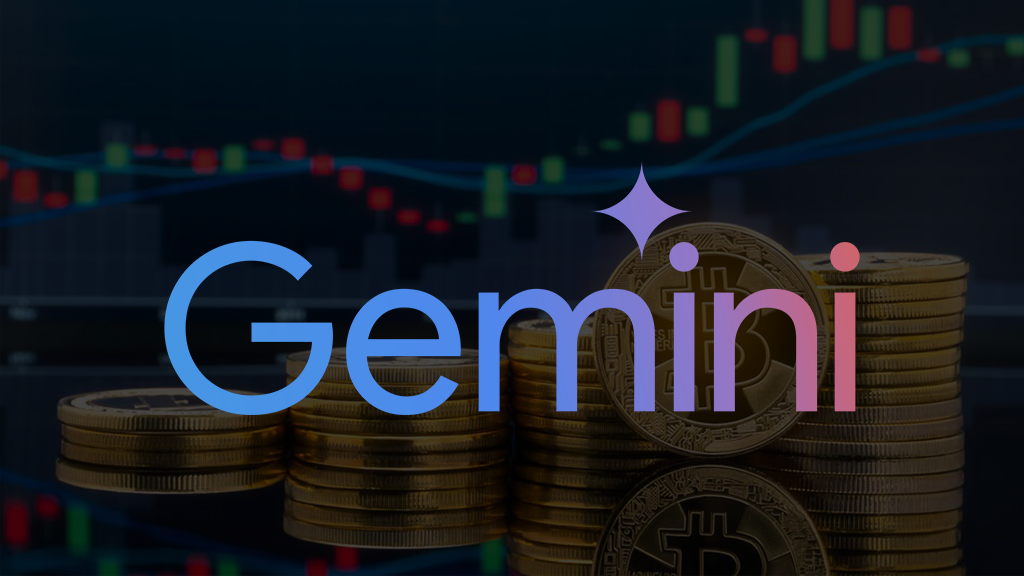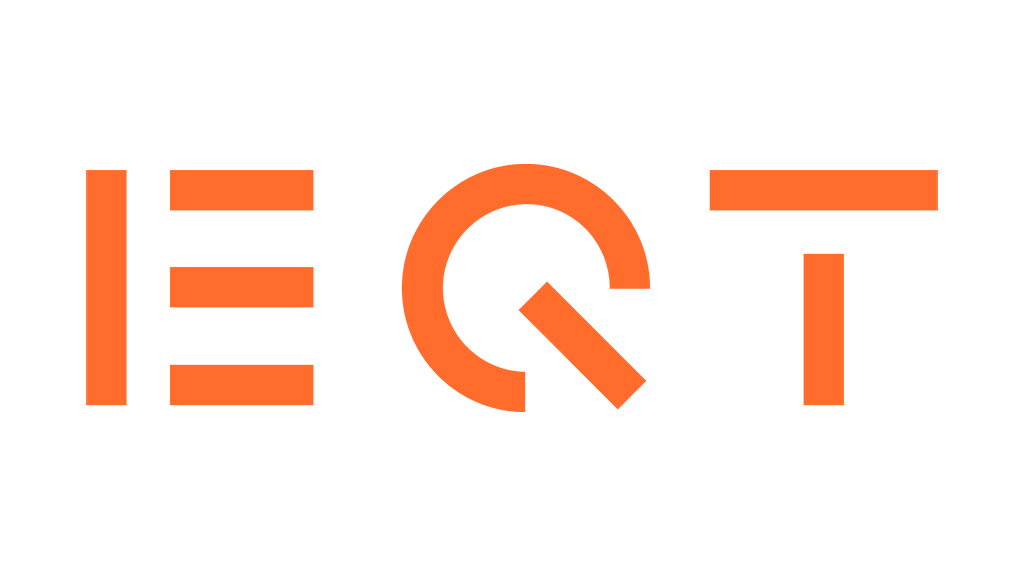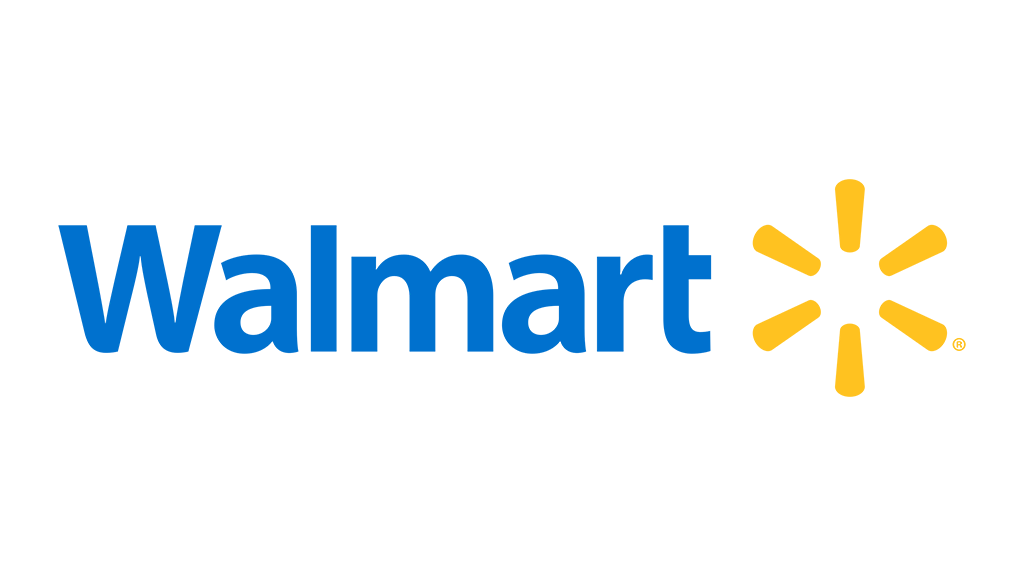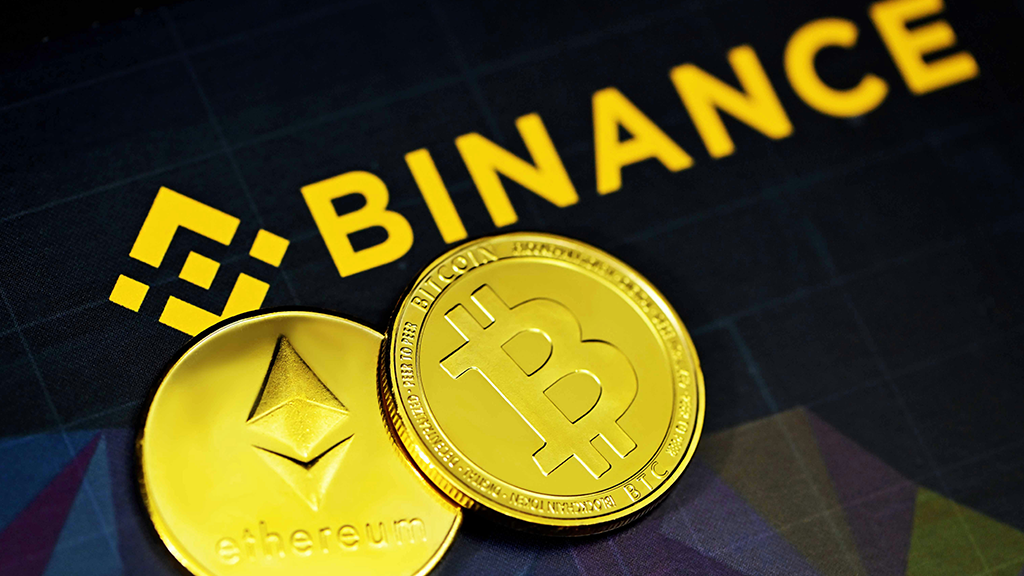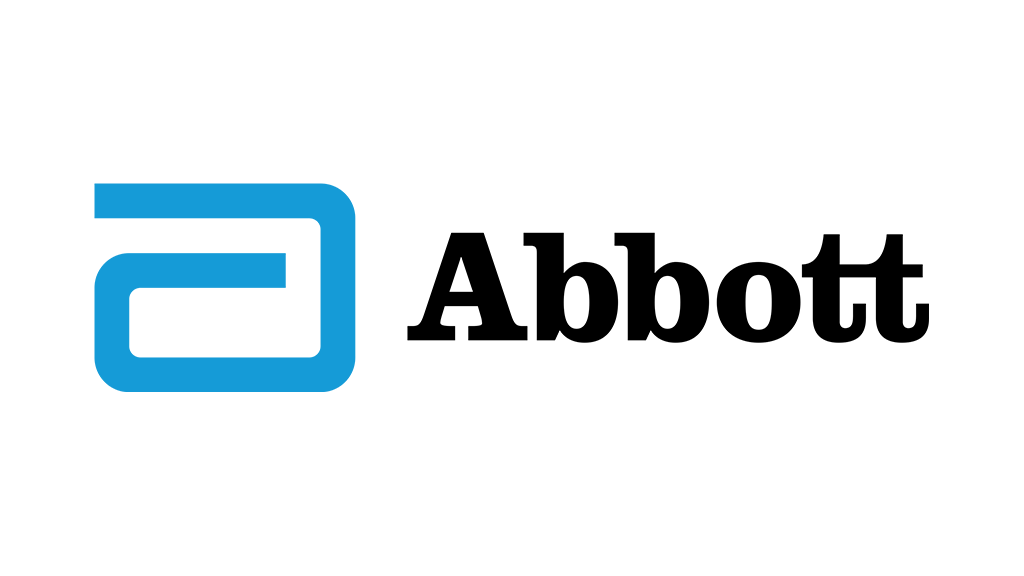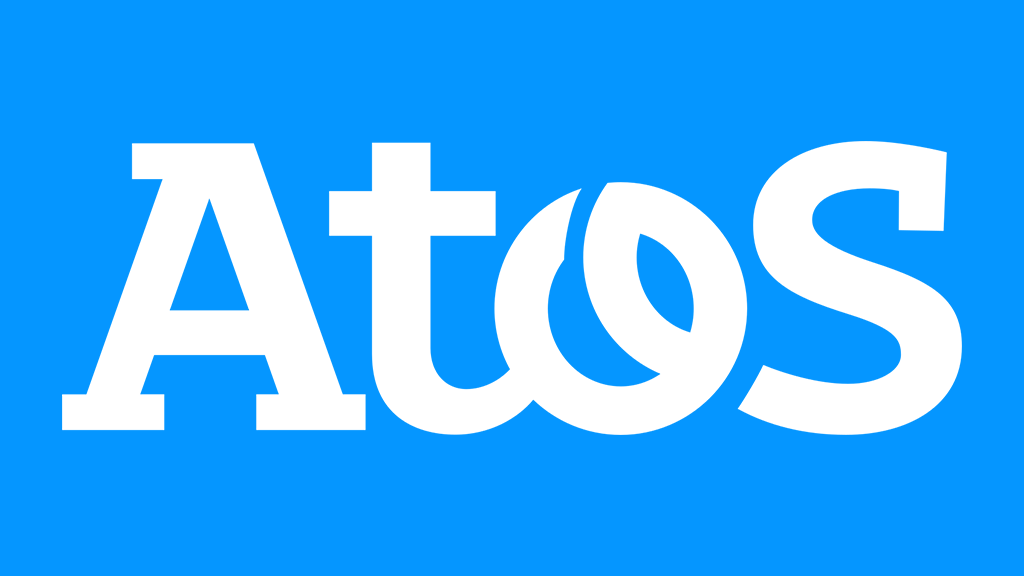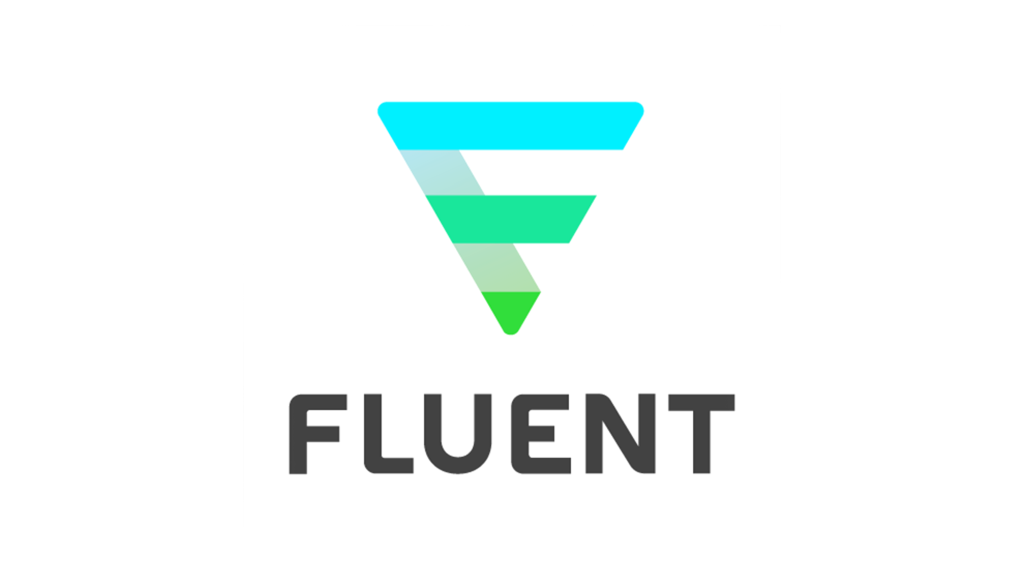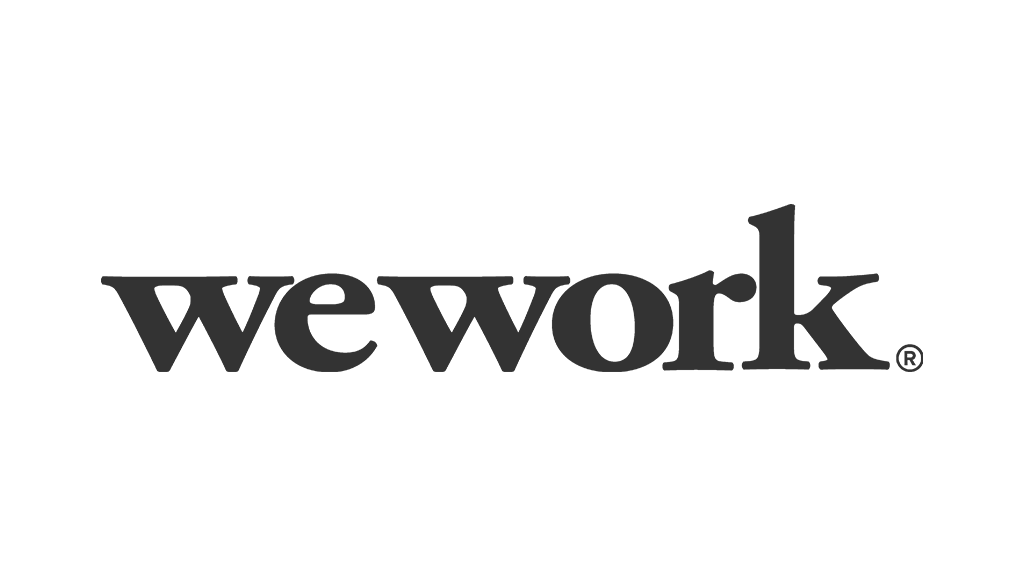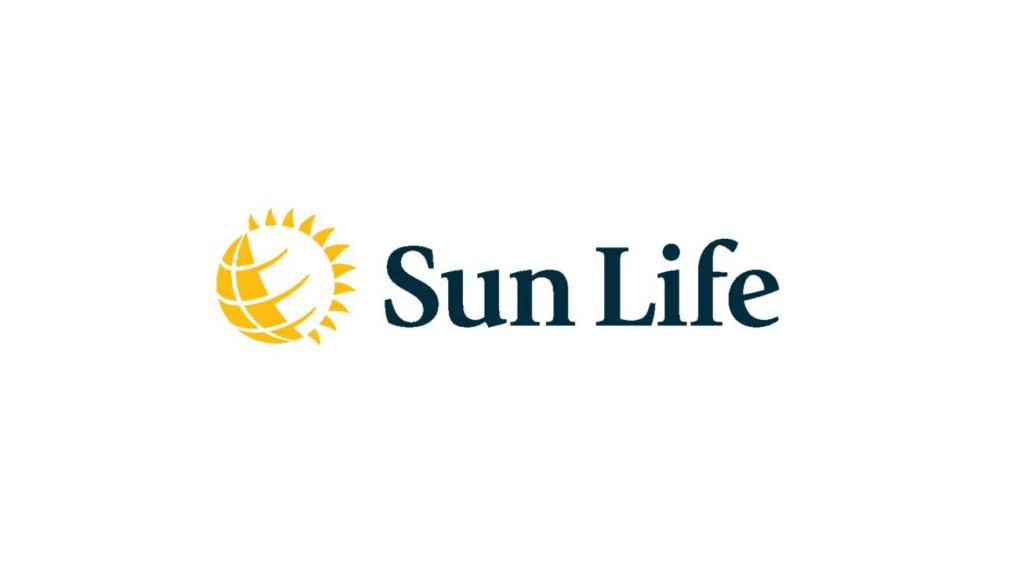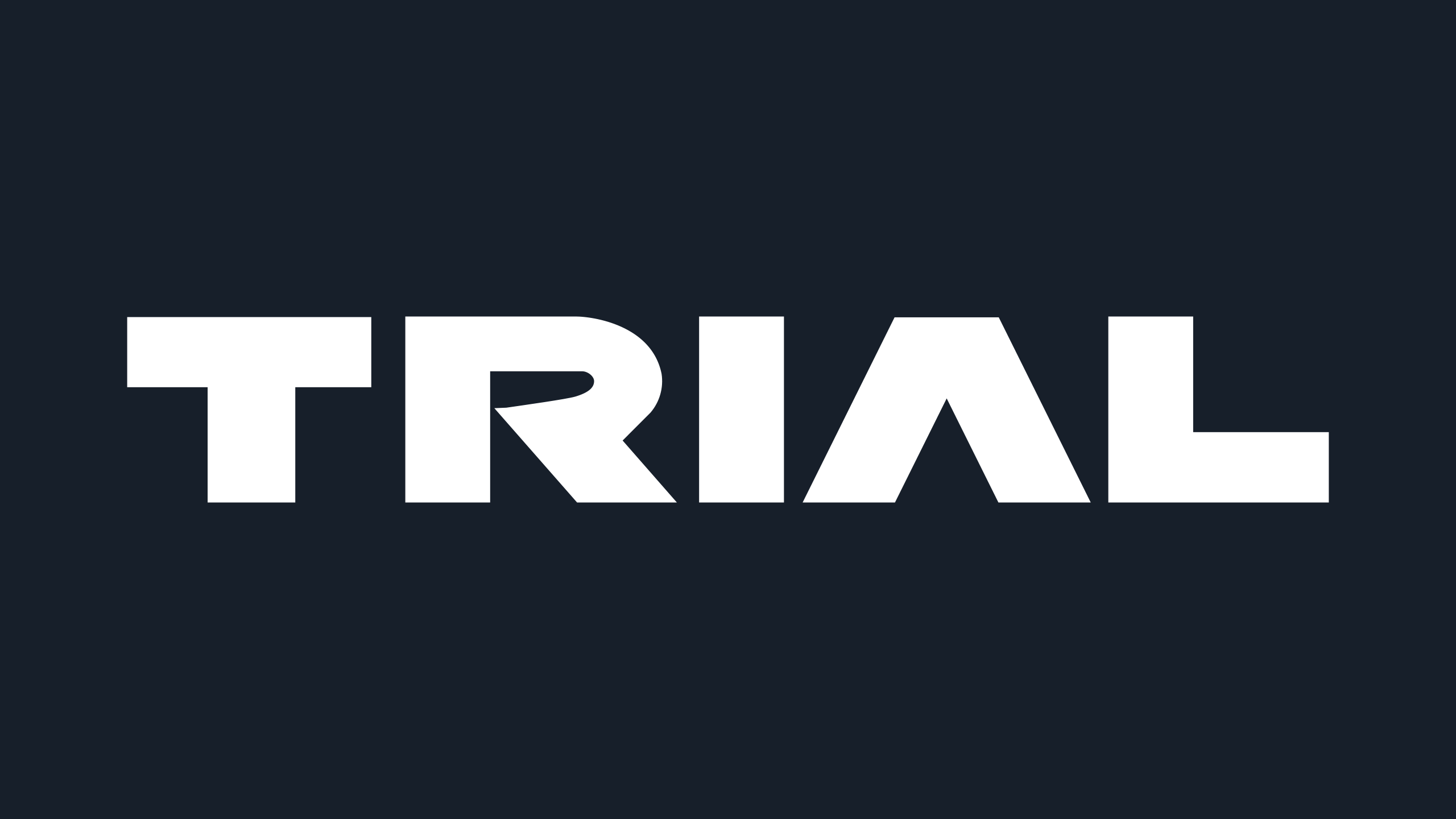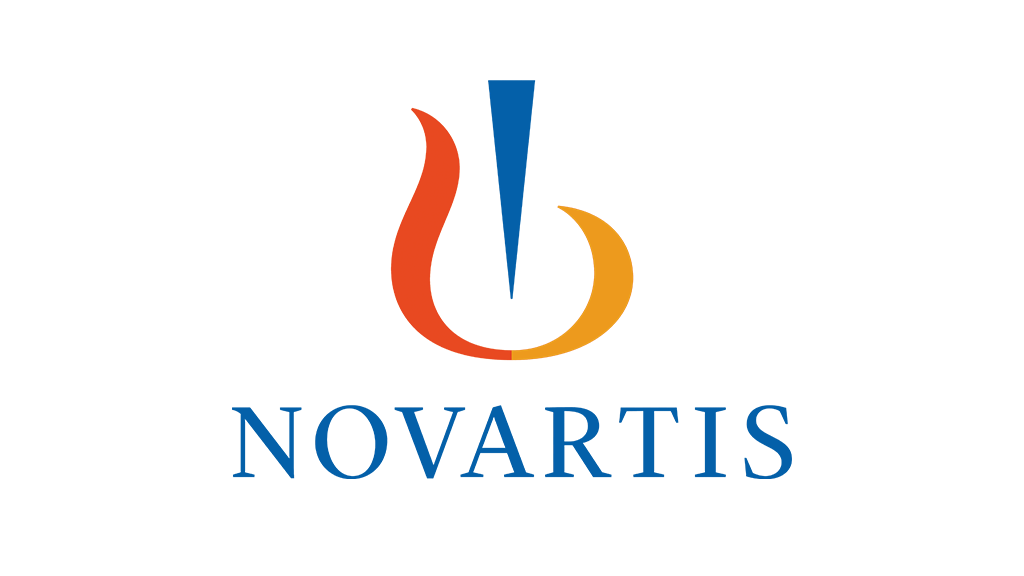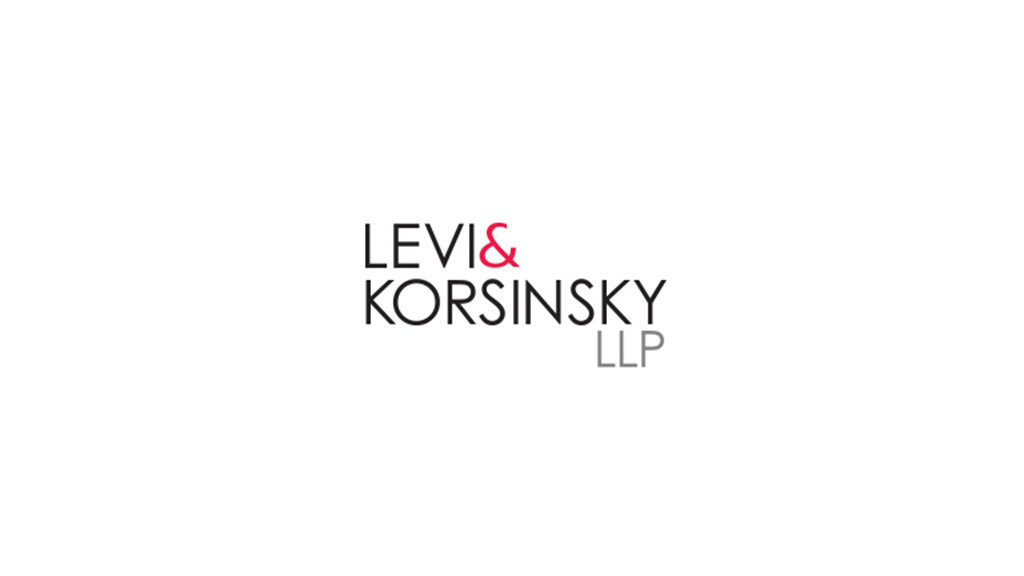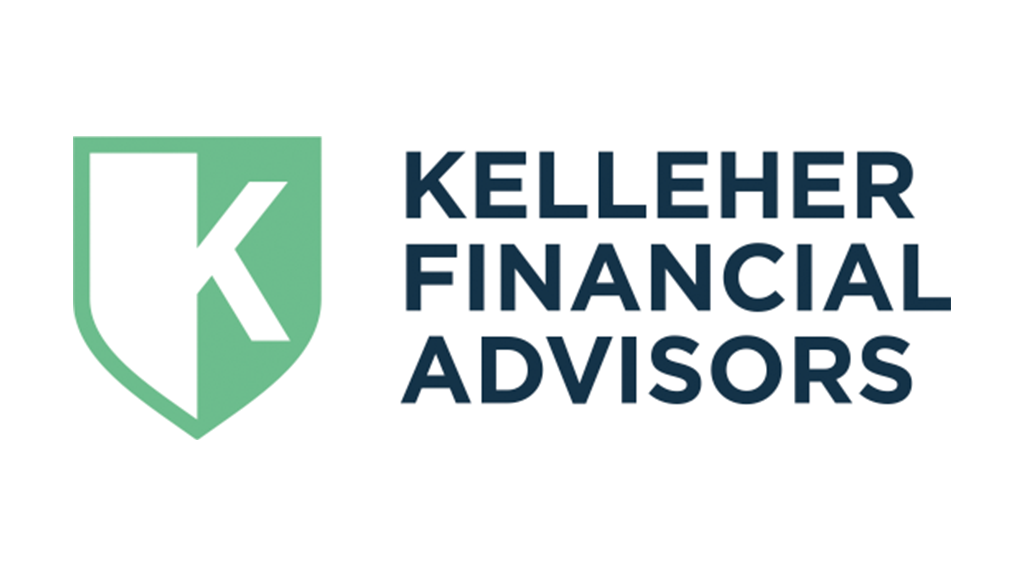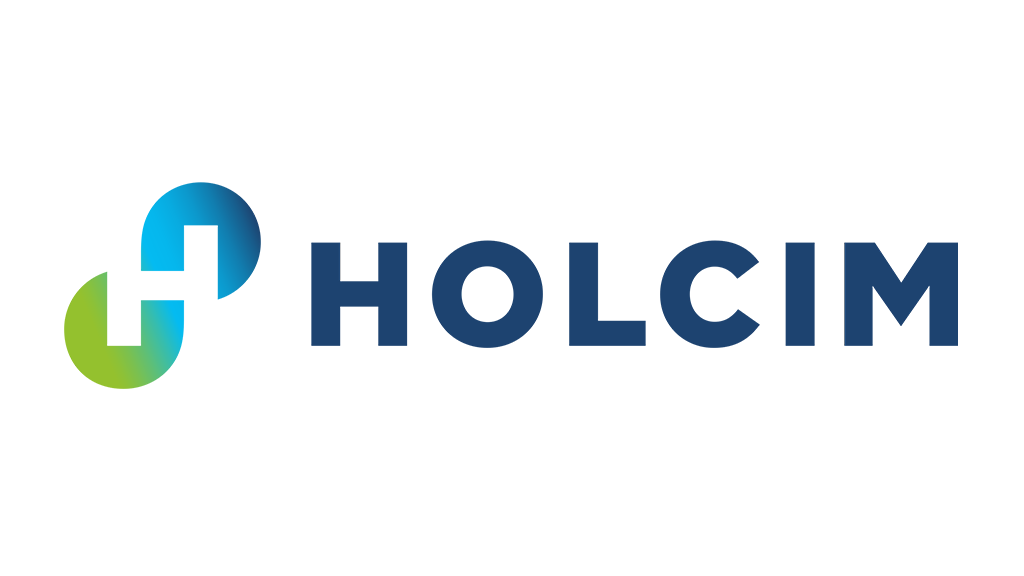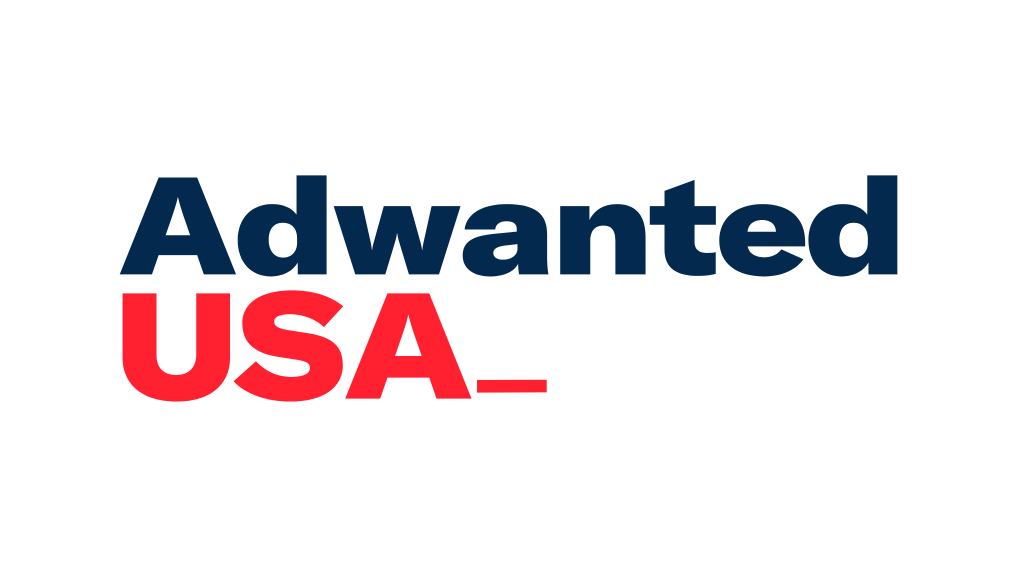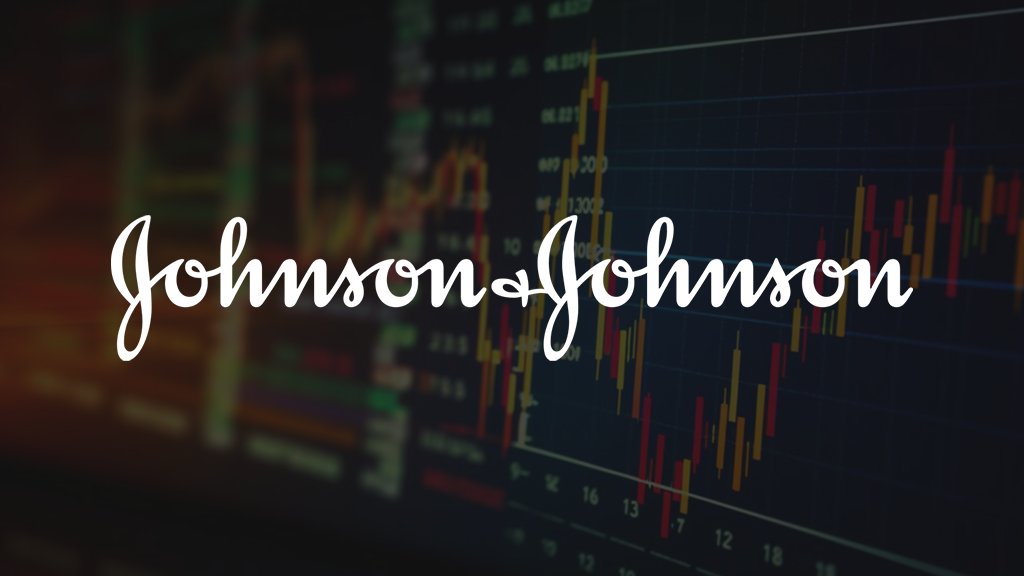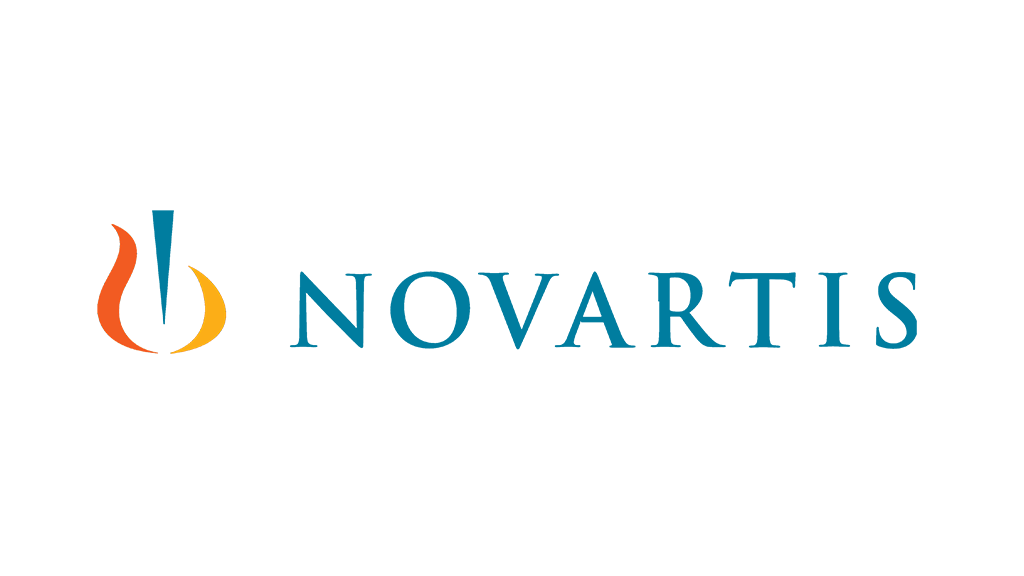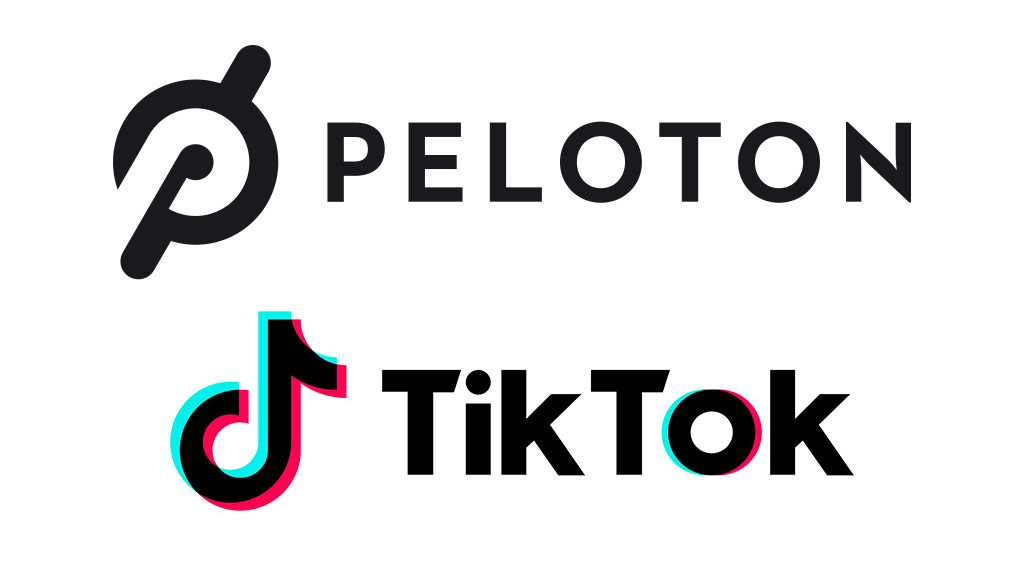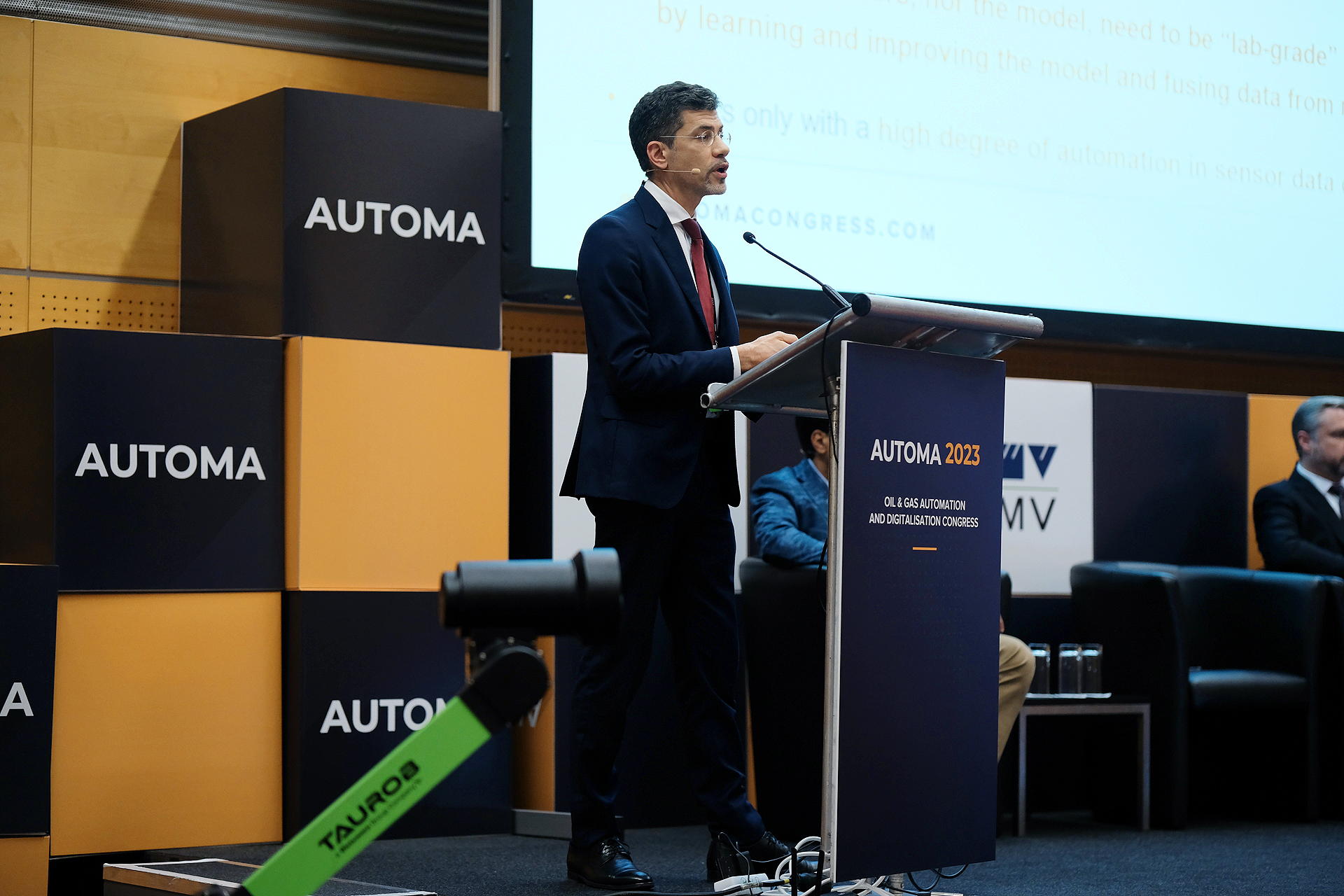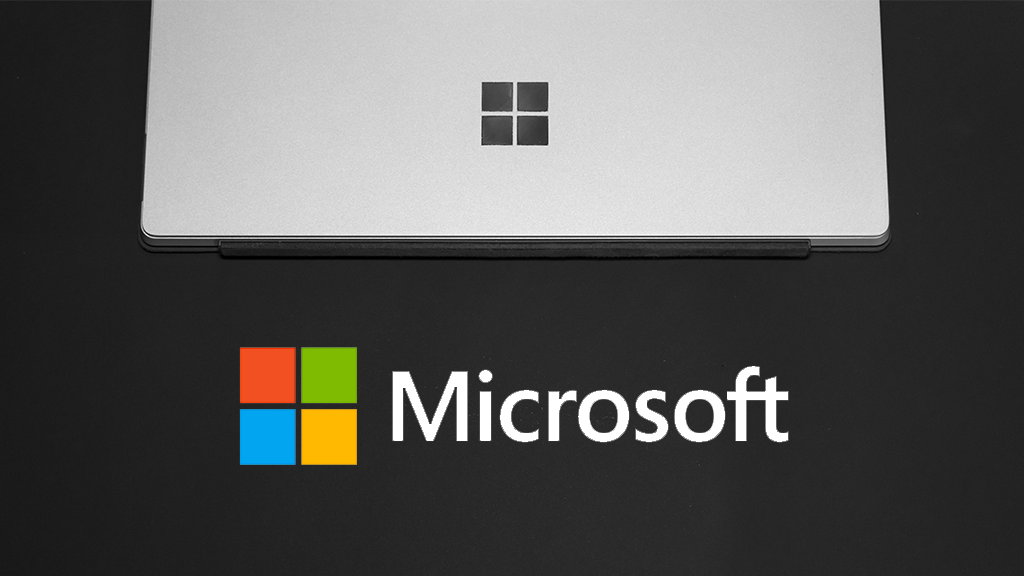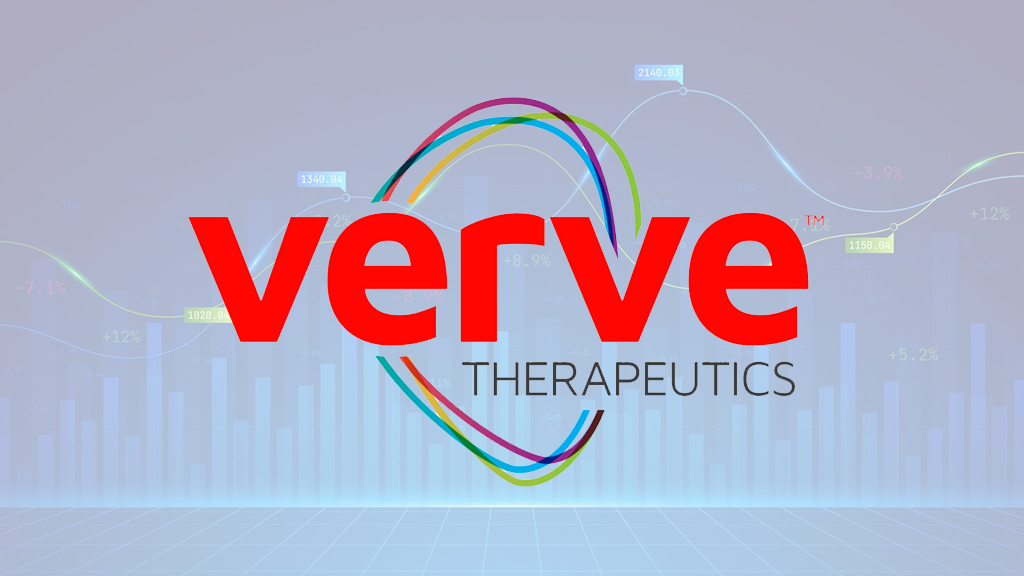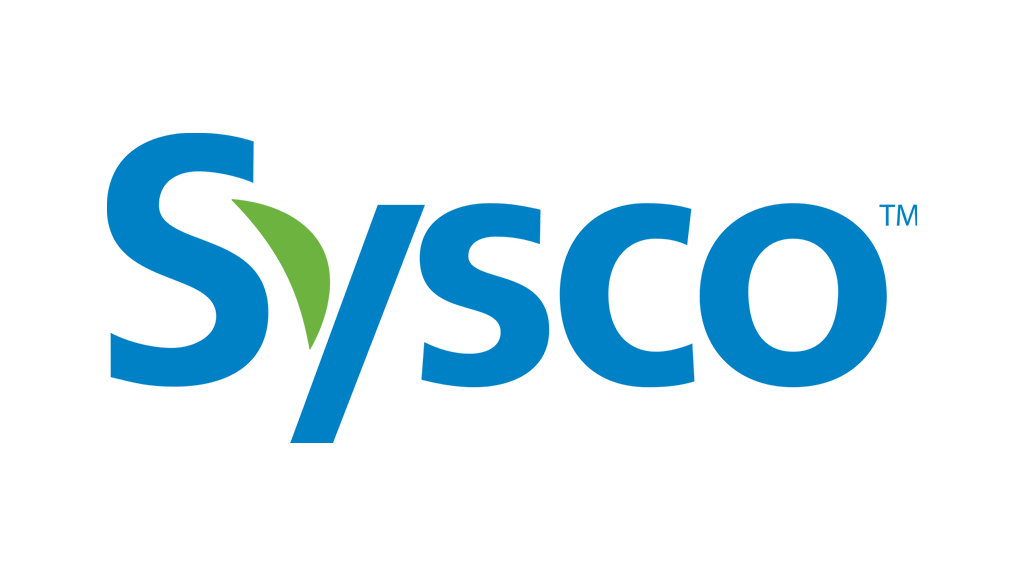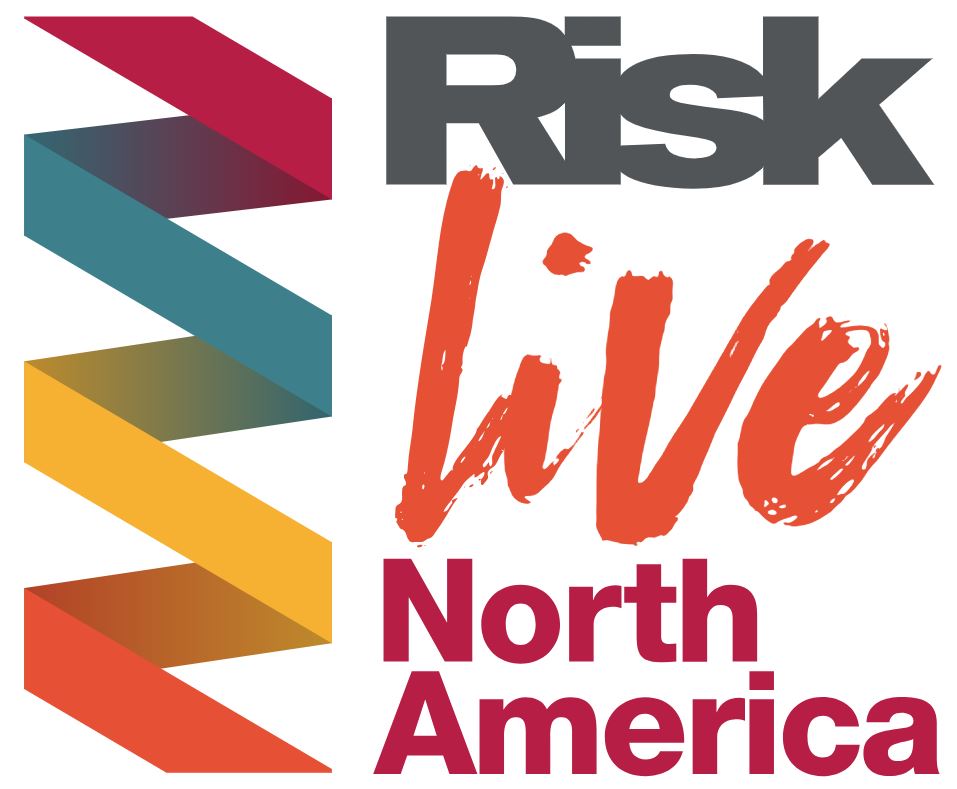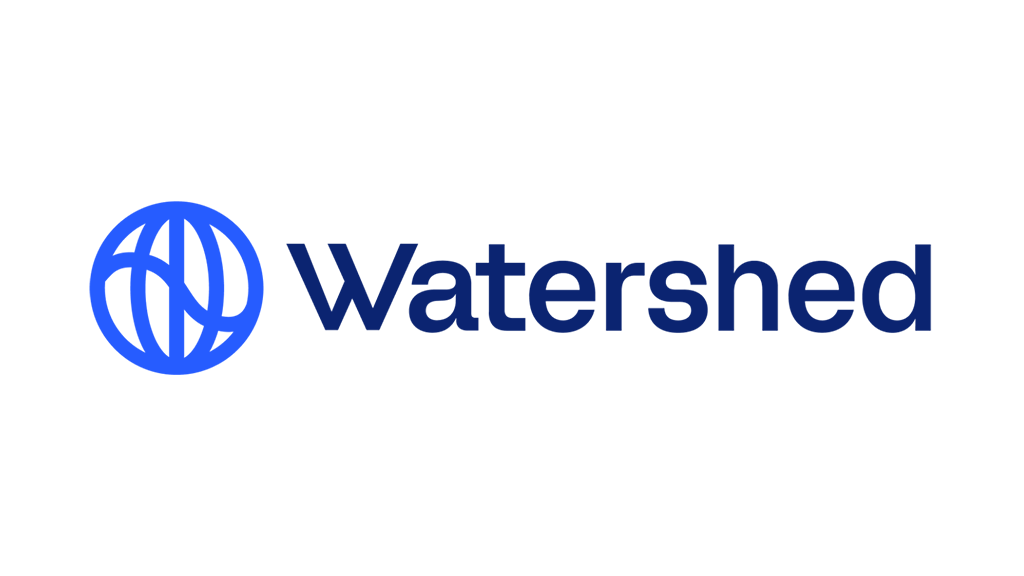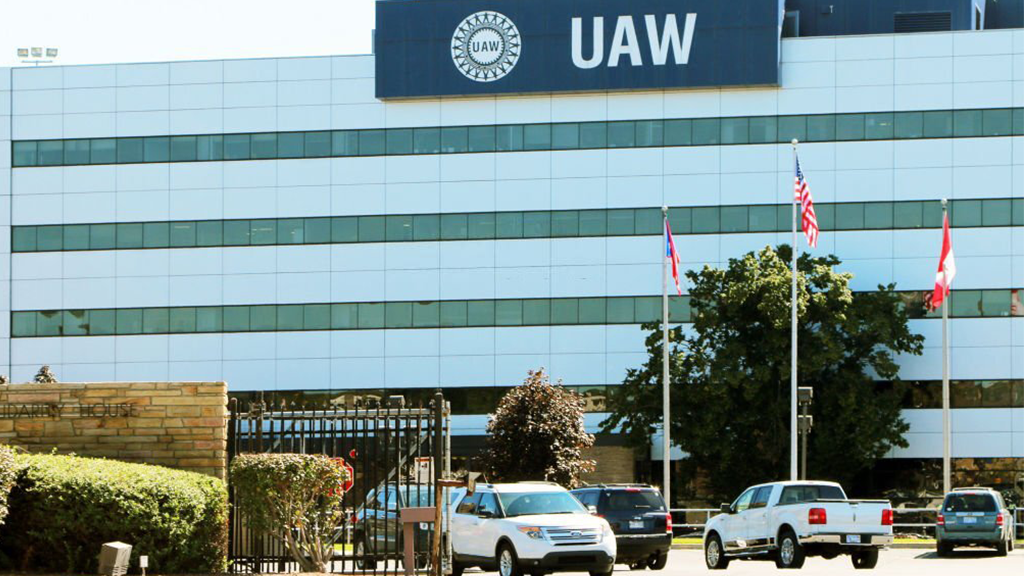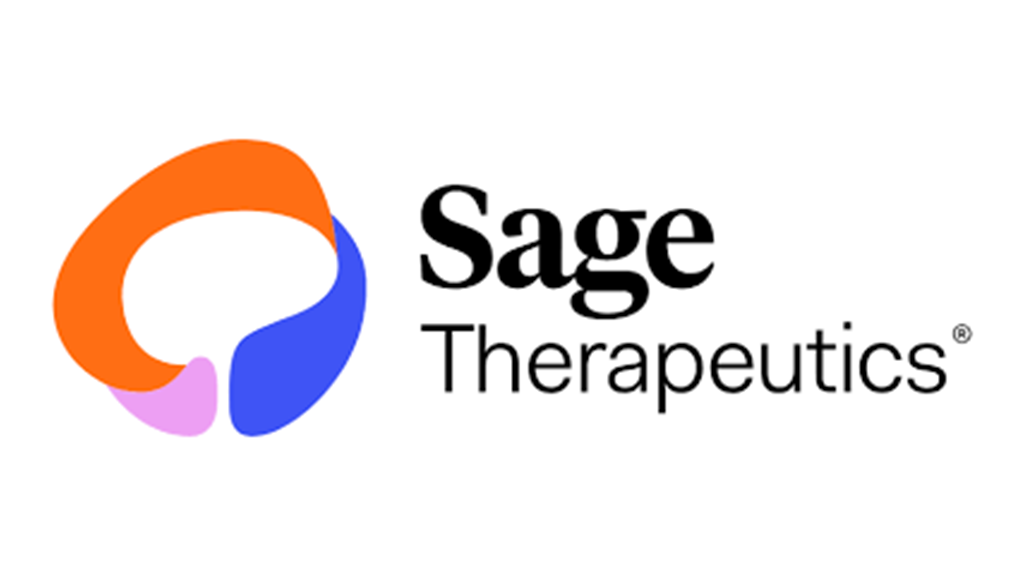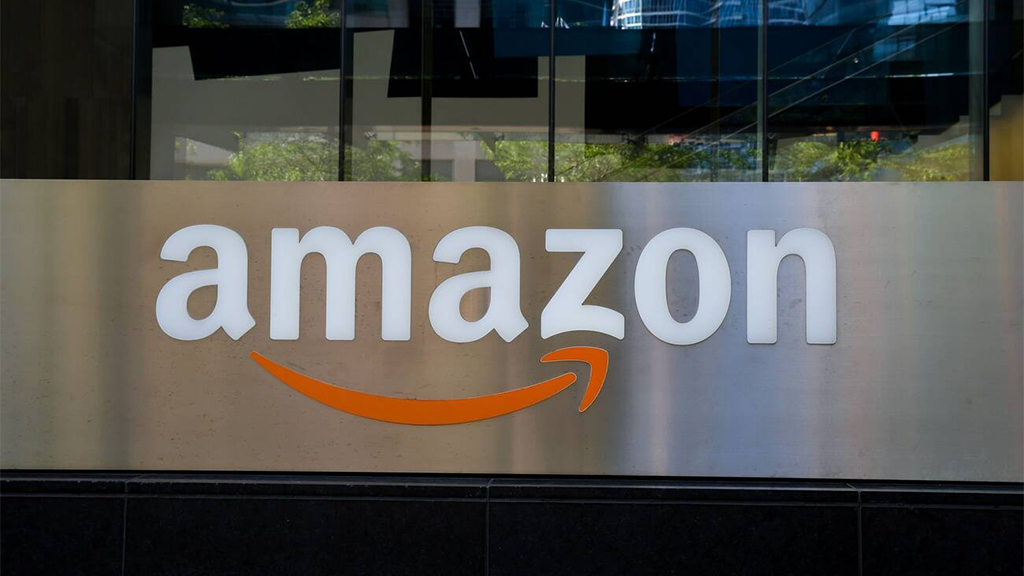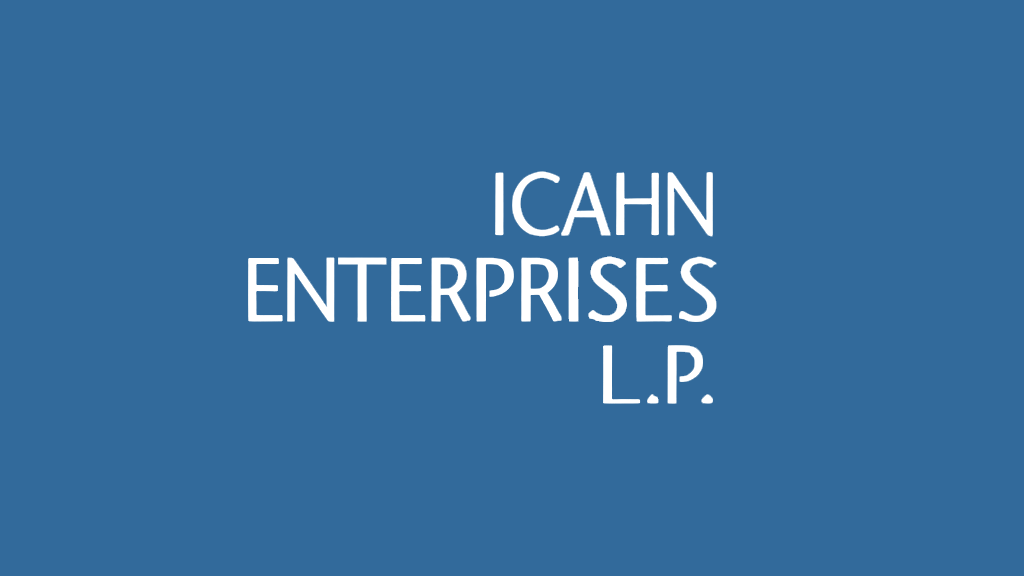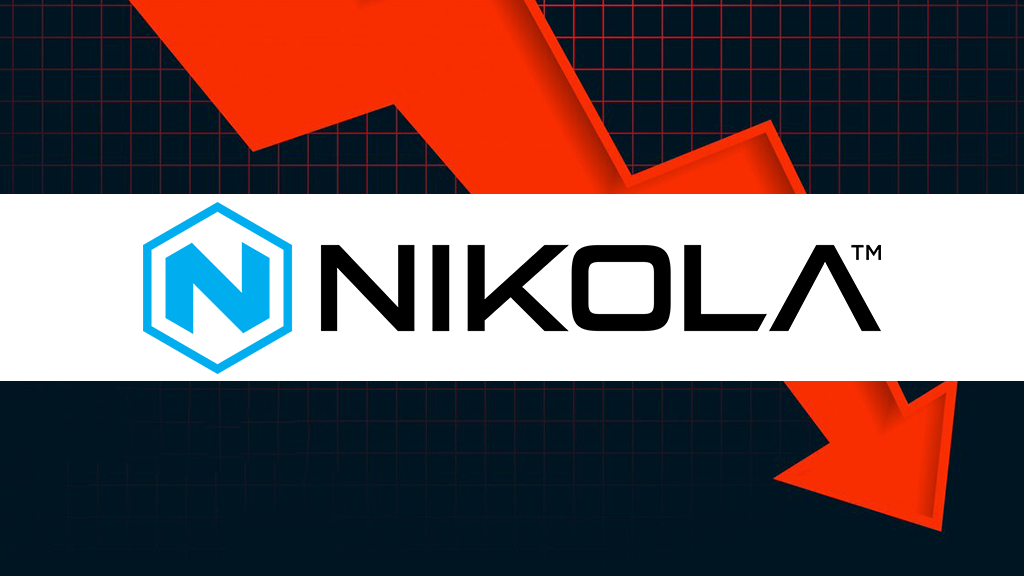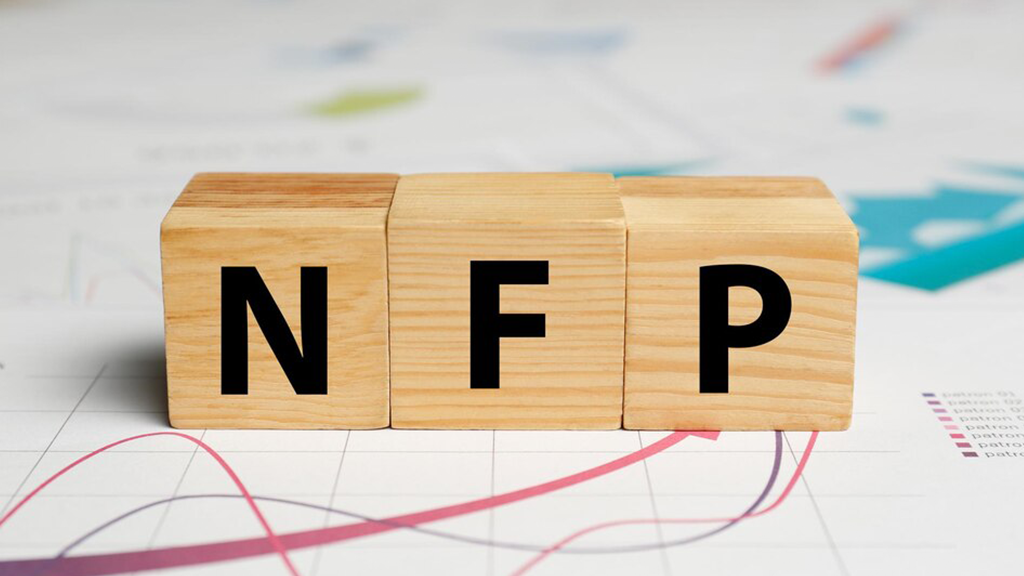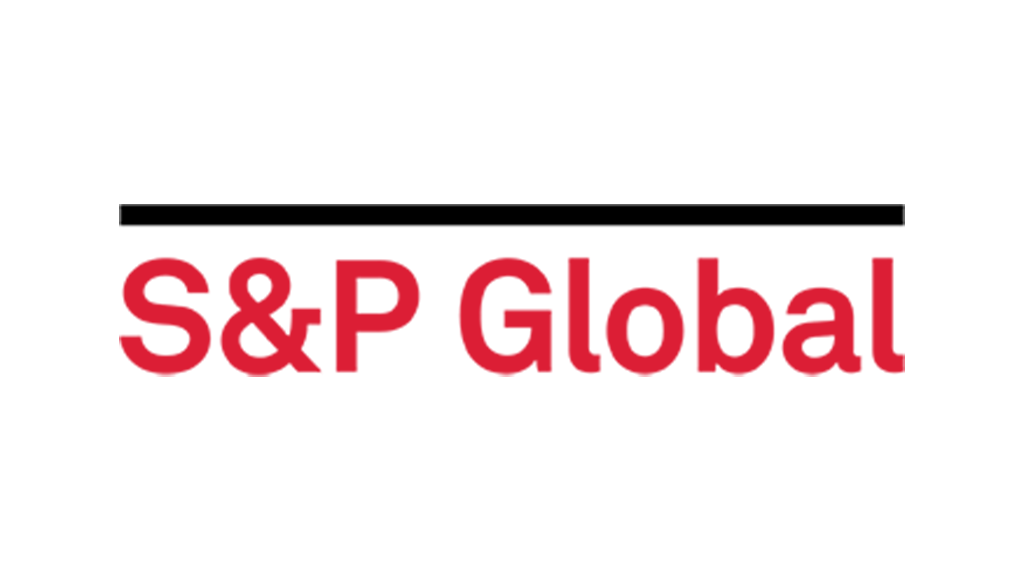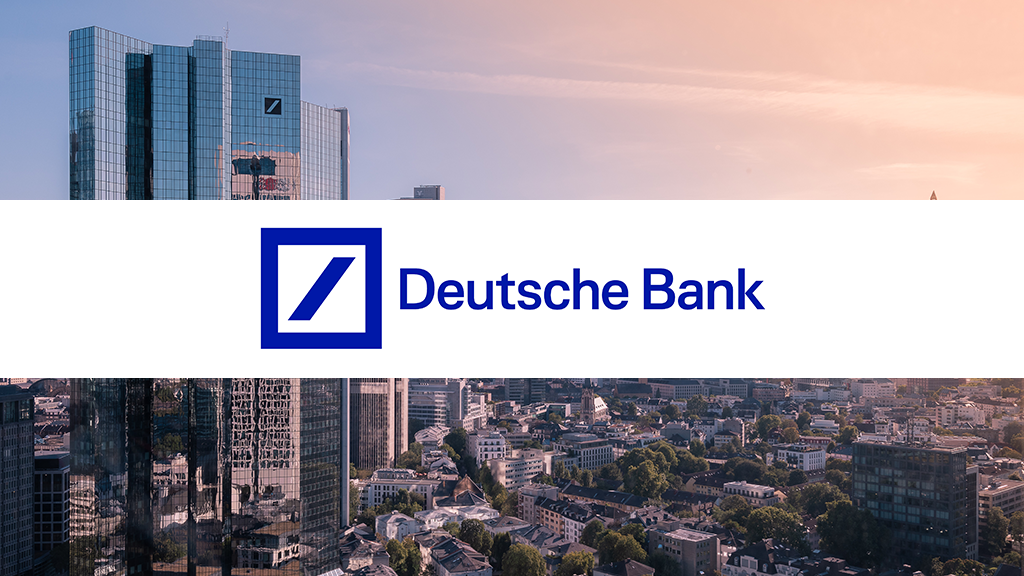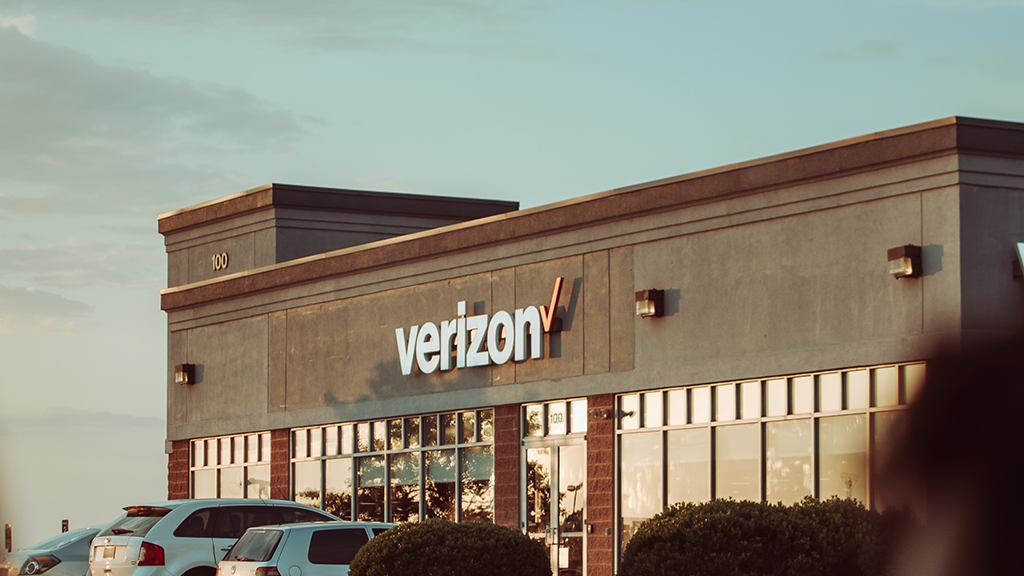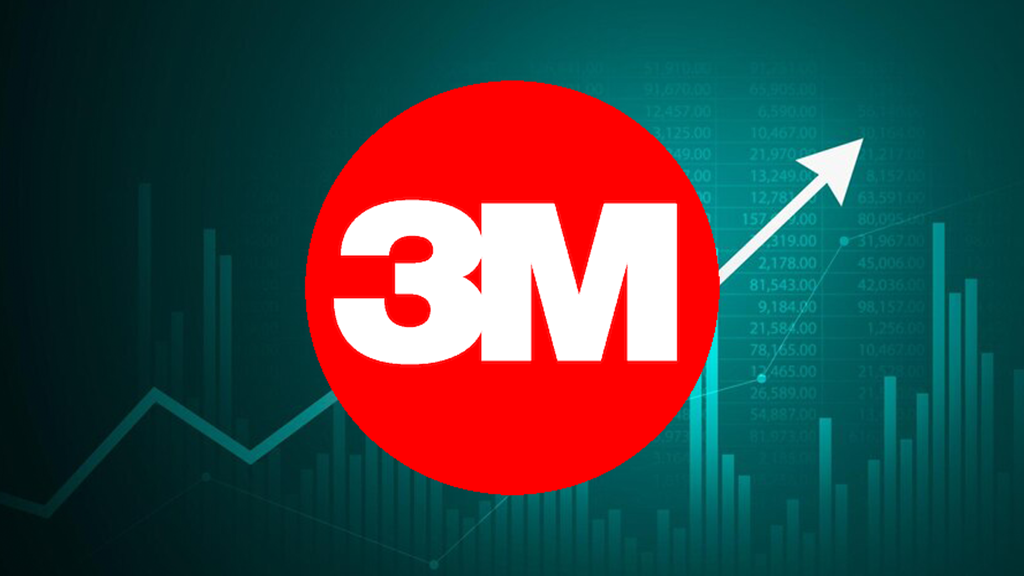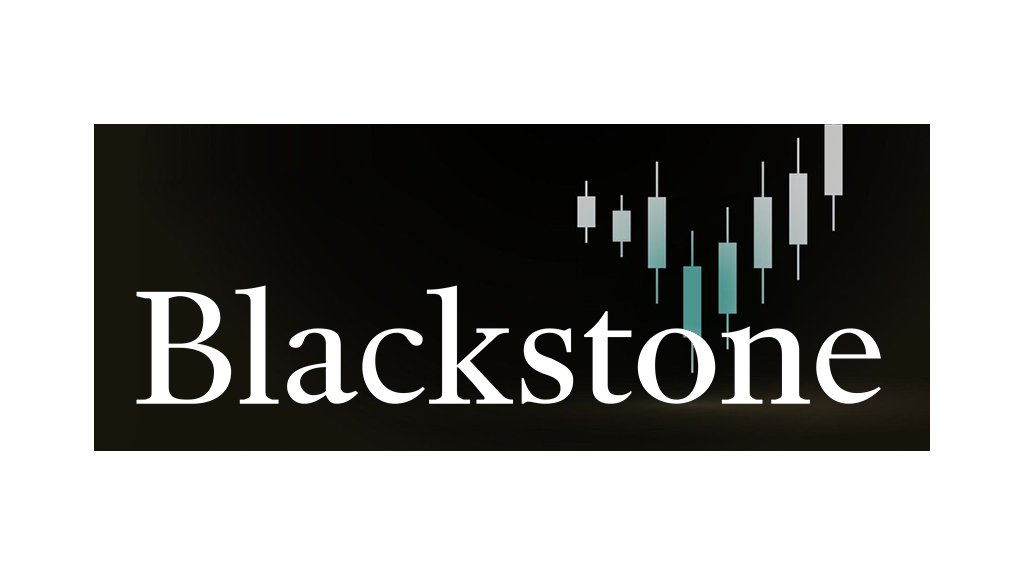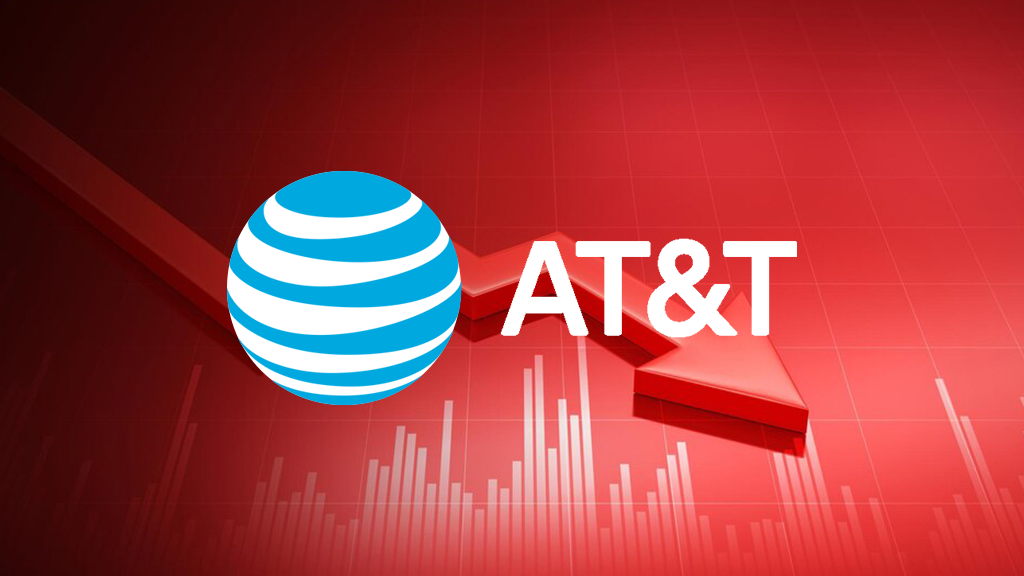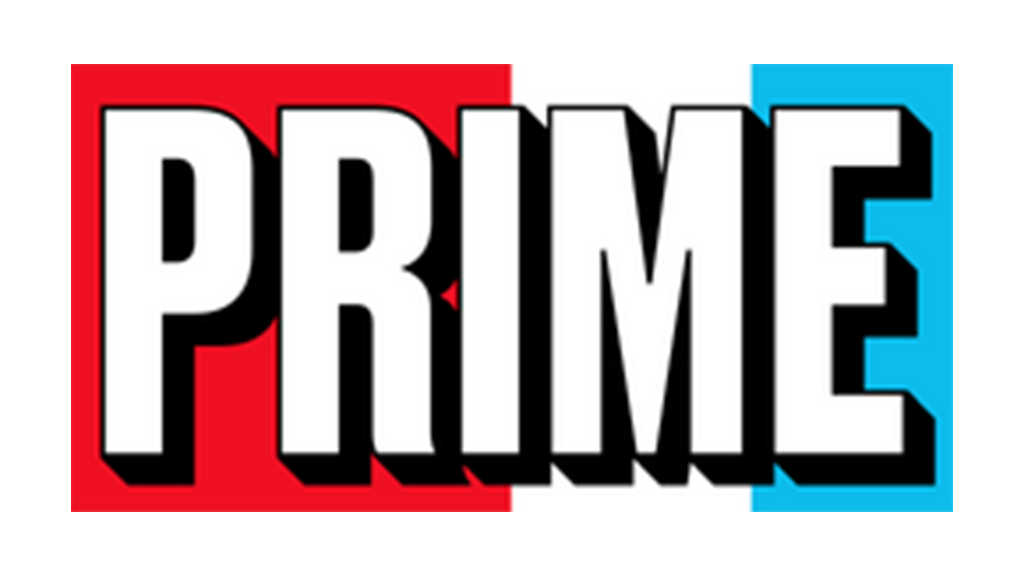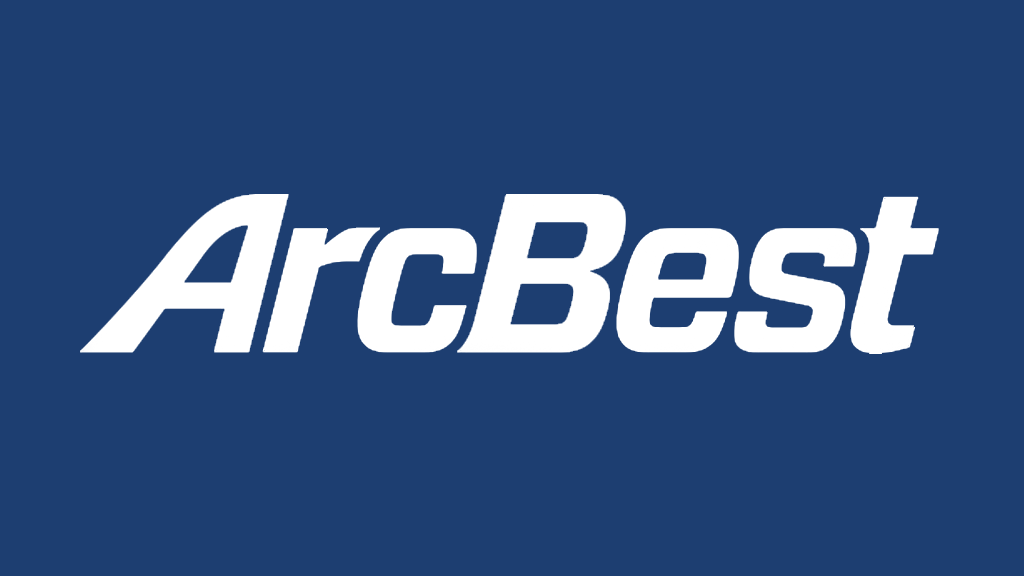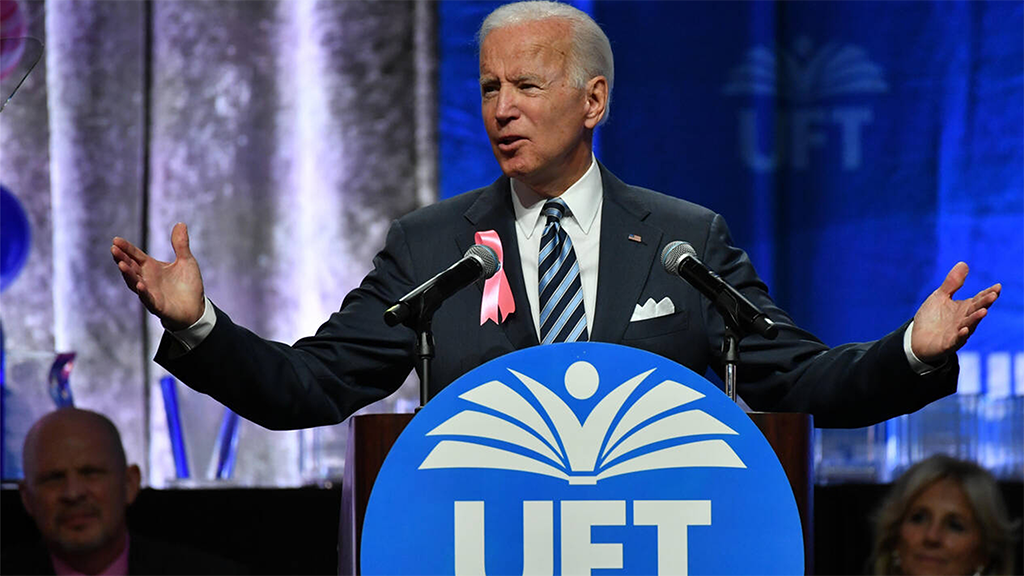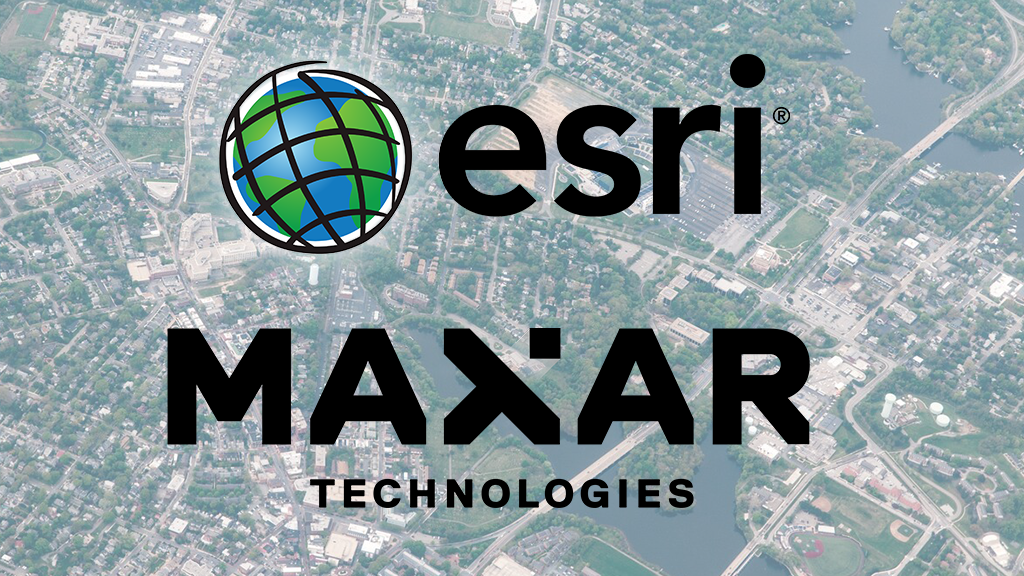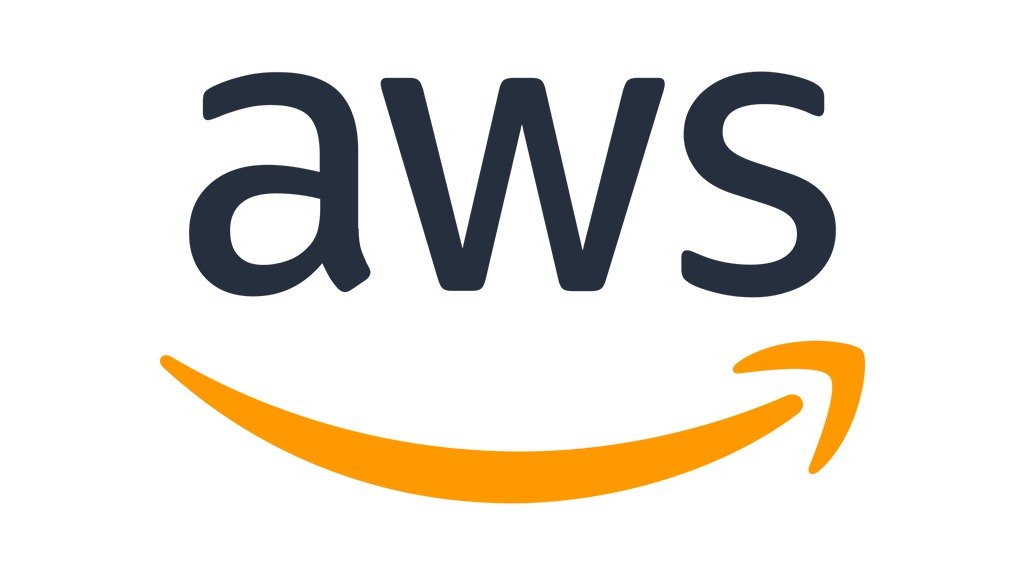News
Peloton Shares Jump 30% as Turnaround Plan Gains Traction

August 23, 2024: Peloton, the popular fitness equipment company, has experienced a surge in its stock price following the release of its latest financial results. The company’s shares have risen by over 30%, reflecting growing investor confidence in its ongoing turnaround plan.
Despite facing significant challenges recently, Peloton has taken decisive steps to improve its financial performance and regain market share. The company has implemented cost-cutting measures, reduced its workforce, and focused on enhancing its product offerings and customer experience.
The positive market reaction to Peloton’s recent financial results indicates that investors are beginning to see the fruits of these efforts. The company’s losses have narrowed, and its revenue has stabilized, suggesting that its turnaround plan is gaining traction.
However, it is important to note that Peloton still faces challenges in a highly competitive market. To sustain its momentum, the company will need to continue to innovate and adapt to evolving consumer preferences.
The rise in Peloton’s stock price is a testament to the company’s resilience and ability to overcome adversity. As the company continues to execute its turnaround plan, investors will be watching closely to see if this positive trend can be sustained.
Also Read, Shein Sues Temu for Copyright Infringement, Claims Losses per Sale

Shein Sues Temu for Copyright Infringement, Claims Losses per Sale

August 22, 2024: In a dramatic escalation of the ongoing rivalry between online fashion giants Shein and Temu, Shein has filed a lawsuit against Temu, alleging copyright infringement and other business malpractices. The legal battle highlights the intense competition and potential conflicts within the fast-fashion industry.
Shein, a global fashion brand known for its rapid turnaround of trendy styles, has accused Temu of stealing its designs and copying its product images. The lawsuit alleges Temu has engaged in “systematic and deliberate infringement” of Shein’s intellectual property rights, undermining Shein’s reputation and business.
Temu, a relatively newer entrant to the online fashion market, has gained popularity due to its ultra-low prices. However, Shein contends that Temu’s aggressive pricing strategy is unsustainable and may indicate unfair business practices. The lawsuit alleges Temu is losing money on every sale, suggesting that its low prices may be subsidized by other means, such as government subsidies or intellectual property theft.
The legal dispute between Shein and Temu raises broader questions about the ethical implications of the fast-fashion industry. The rapid pace of production and consumption associated with fast fashion has come under scrutiny for its environmental and social impacts. The rivalry between Shein and Temu highlights this sector’s intense competition and potential for unethical practices.
As the legal proceedings unfold, how the courts will rule on Shein’s allegations remains to be seen. The outcome of the case could have significant implications for the future of the fast-fashion industry, potentially shaping the rules of engagement for competitors and influencing consumer perceptions of these online retailers.
Also Read, Bank of America Recommends All-Weather Stocks for Market Volatility

Bank of America Recommends All-Weather Stocks for Market Volatility
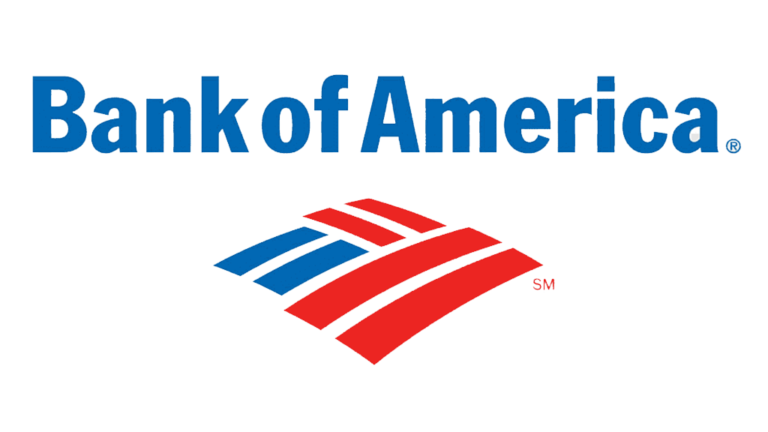
August 21, 2024: In an era of heightened market volatility and economic uncertainty, investors increasingly seek strategies to protect their portfolios from adverse conditions. Bank of America has responded by identifying a group of stocks that it believes are well-positioned to weather the storm and deliver consistent returns regardless of the market’s direction.
These “all-weather” stocks are characterized by their ability to perform well in both up and down markets. They typically possess certain attributes such as strong balance sheets, stable cash flows, and resilient business models. By investing in these stocks, investors can potentially mitigate risks and generate returns over the long term.
Bank of America’s recommendations include a diverse mix of companies from various sectors, including consumer staples, healthcare, and technology. These stocks are believed to be less susceptible to economic downturns and have a history of outperforming the broader market during periods of volatility.
While the concept of all-weather stocks may seem appealing, it is important to note that no investment is entirely risk-free. Even the most defensive stocks can be impacted by unforeseen events or changes in market sentiment. Investors should conduct thorough research and consider risk tolerance before making investment decisions.
The ongoing geopolitical tensions, trade disputes, and economic uncertainties have created a challenging environment for investors. By carefully selecting all-weather stocks, investors may be able to navigate these headwinds and achieve their long-term financial goals.
Also Read, Comfort Systems USA Expands Stock Buyback Program
Comfort Systems USA Expands Stock Buyback Program

August 15, 2024: Comfort Systems USA, Inc. (NYSE: FIX), a prominent provider of commercial, industrial, and institutional heating, ventilation, air conditioning, and electrical contracting services, has recently announced a strategic enhancement to its existing stock repurchase program. This decision, approved by the company’s Board of Directors, involves an amendment to authorize repurchasing an additional 411,426 shares of its outstanding common stock.
With this adjustment, the total number of shares authorized for repurchase under the program ascends to a maximum of 1,000,000 shares. This strategic maneuver underscores the company’s unwavering confidence in its prospects and commitment to augmenting shareholder value.
As of August 7, 2024, Comfort Systems USA had successfully repurchased a substantial portion of its outstanding common stock, amounting to 10,355,551 shares at an aggregate cost of approximately $299,559,997, excluding excise tax. This significant investment in share repurchases reflects the company’s proactive approach to optimizing capital allocation and enhancing financial performance.
The company intends to execute share repurchases judiciously, employing a combination of open market transactions and privately negotiated agreements, as permitted by applicable securities laws and regulations. The specific timing and volume of repurchases will be determined at the sole discretion of management, subject to prevailing market conditions and other relevant factors.
Comfort Systems USA anticipates financing the share repurchase program by utilizing available cash reserves. However, the company’s Board of Directors retains the authority to modify, suspend, extend, or terminate the program at any time, as deemed appropriate.
This strategic initiative positions Comfort Systems USA to optimize its capital structure, enhance shareholder returns, and reinforce its HVAC and electrical contracting industry market leadership. By reducing the number of outstanding shares, the company aims to increase earnings per share, potentially driving upward pressure on its stock price.
Comfort Systems USA, with its extensive network of 177 locations spanning 136 cities across the United States, has established itself as a leading provider of comprehensive HVAC and electrical solutions. The company’s unwavering commitment to delivering exceptional service and innovative solutions has been instrumental in its continued success and growth.
Also Read, Reconomy Deal to Boost U.S. Growth Plans
Reconomy Deal to Boost U.S. Growth Plans
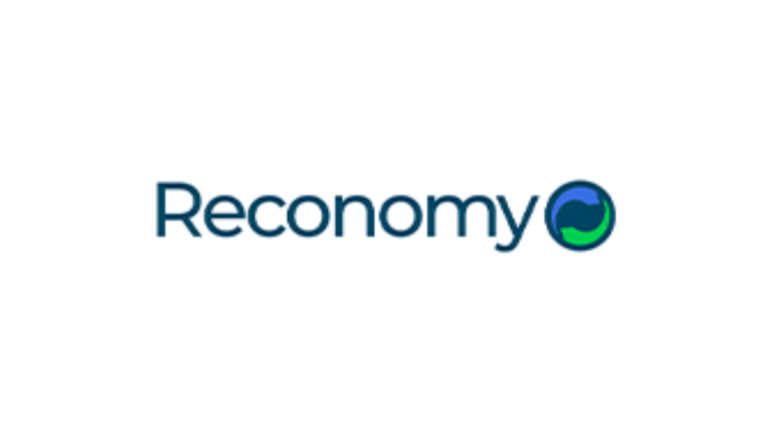
August 14, 2024: Reconomy, a leading international circular economy specialist, has significantly expanded its presence in the United States by acquiring Lincoln Waste Solutions LLC. This strategic move is anticipated to accelerate the company’s growth plans within the North American market.
Lincoln Waste Solutions, a prominent waste and recycling management firm headquartered in Windsor, Connecticut, brings a wealth of expertise and a comprehensive service offering to the Reconomy Group. The acquisition marks a pivotal moment for Reconomy, establishing a robust foundation for future expansion within the United States.
Combining Reconomy’s technological prowess with Lincoln Waste’s established market position, the merged entity is poised to deliver innovative and sustainable waste management solutions to clients nationwide. The acquisition is expected to generate synergies, optimize operational efficiencies, and unlock new growth opportunities.
Reconomy’s entry into the United States is driven by the growing emphasis on circular economy principles and the increasing demand for sustainable waste management practices. The company’s expansion strategy aligns with broader industry trends and the evolving preferences of environmentally conscious consumers and businesses.
Also Read, Morgan Stanley Recommends Quality Defensive Stocks for Investors
Morgan Stanley Recommends Quality Defensive Stocks for Investors
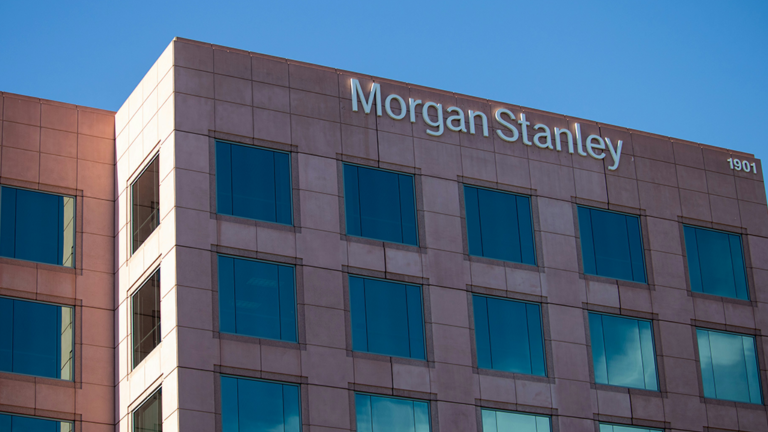
August 13, 2024: In a recent assessment of the prevailing market conditions, Morgan Stanley has underscored the strategic imperative for investors to prioritize quality defensive stocks. Characterized by their resilience to economic downturns and their potential for consistent returns, these equities are posited as the most prudent investment choice.
The investment banking giant’s recommendation is rooted in an analysis of the current macroeconomic landscape marked by heightened volatility and uncertainty. Factors such as geopolitical tensions, inflationary pressures, and the evolving interest rate environment have contributed to a climate of investor apprehension. In such circumstances, defensive stocks, often associated with sectors like consumer staples, healthcare, and utilities, are perceived as offering a relative haven.
These companies typically exhibit stable earnings, robust cash flows, and lower sensitivity to economic fluctuations. As a result, they can provide a degree of insulation against market downturns and serve as a ballast for investment portfolios. Moreover, defensive stocks often possess attractive dividend yields, offering investors a steady income stream.
Morgan Stanley’s emphasis on quality within the defensive sector is noteworthy. The firm suggests that investors focus on companies with strong balance sheets, efficient operations, and sustainable competitive advantages. By adhering to these criteria, investors can enhance their prospects of capturing long-term value appreciation.
While the allure of defensive stocks is undeniable in the current market climate, it is essential to acknowledge that they are not immune to price fluctuations. External factors, such as changes in investor sentiment or unexpected economic developments, can impact their performance. Therefore, a diversified investment approach encompassing a mix of asset classes remains prudent.
In conclusion, Morgan Stanley’s advocacy for quality defensive stocks reflects a cautious outlook on the broader market. As investors navigate these challenging conditions, focusing on resilience and stability may be a sound strategic choice. However, diligent research and a long-term perspective are essential for making informed investment decisions.
Also Read, TKO Exceeds Revenue Forecasts, Raises Guidance Despite UFC Costs
TKO Exceeds Revenue Forecasts, Raises Guidance Despite UFC Costs
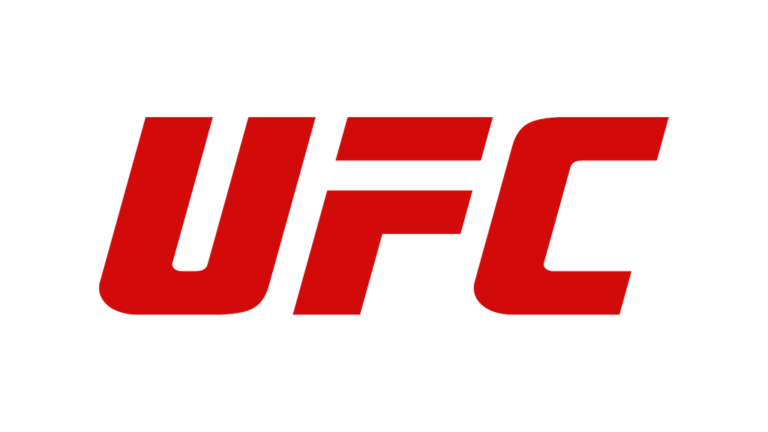
August 9, 2024: TKO Group Holdings Inc. has reported financial results that exceeded Wall Street expectations, accompanied by an upward revision of its full-year guidance.
Despite a significant financial burden stemming from a substantial antitrust lawsuit settlement, the company demonstrated robust revenue growth. This achievement is attributed to the strong performance of its UFC division, which has consistently delivered impressive results. The UFC’s popularity and ability to attract a large, engaged audience have driven revenue and profitability.
While the lawsuit settlement substantially negatively impacted TKO’s bottom line, the company’s overall financial performance highlights its resilience and ability to navigate challenging circumstances. The upward revision of full-year guidance reflects the company’s confidence in its growth trajectory and prospects.
TKO’s success in surpassing revenue expectations underscores the enduring appeal of mixed martial arts and the UFC’s position as a dominant force in the sports entertainment industry. As the company continues to expand its global reach and diversify its revenue streams, it is poised to capitalize on emerging opportunities and drive long-term growth.
Delta Faces $500M Loss Due to CrowdStrike Outage

August 8, 2024: The incident, which occurred in July 2024, ground thousands of flights, causing widespread disruption to travel plans and immense inconvenience to passengers. The airline’s operations were severely impacted, necessitating extensive efforts to restore normal service.
The financial repercussions of the outage extend beyond lost revenue from canceled flights. Delta has incurred substantial expenses related to passenger compensation, hotel accommodations, and rebooking fees. Additionally, the incident has tarnished the airline’s reputation and may have long-term consequences for customer loyalty.
Delta has indicated its intention to seek damages from CrowdStrike, attributing the primary cause of the outage to the cybersecurity firm’s software failure. However, CrowdStrike has disputed these claims, asserting that the airline’s IT infrastructure and response to the incident contributed to the severity of the disruption.
The incident serves as a stark reminder of the critical role of IT systems in modern aviation and the potential consequences of system failures. It has prompted discussions about the need for enhanced cybersecurity measures and contingency plans within the airline industry.
Also Read, SunPower Files for Bankruptcy
SunPower Files for Bankruptcy

August 7, 2024: The filing marks a significant downturn for the once-thriving company, which is grappling with mounting financial challenges. In recent months, SunPower encountered several setbacks, including allegations of accounting irregularities, investor lawsuits, and a credit agreement breach. These factors eroded investor confidence and exacerbated the company’s financial difficulties.
To mitigate its financial burden, SunPower implemented cost-cutting measures, such as workforce reductions and operational curtailments. However, these efforts proved insufficient to stabilize the company’s financial position. The decision to file for bankruptcy was ultimately made to restructure its debt, preserve assets, and explore strategic alternatives.
The bankruptcy filing is expected to have far-reaching implications for the solar industry and the broader energy landscape. SunPower’s role as a major player in the solar market has contributed to the growth and development of the renewable energy sector. The company’s challenges underscore the complexities and risks inherent in the energy transition.
As the bankruptcy proceedings unfold, stakeholders, including creditors, employees, and customers, will closely monitor the situation. The outcome of the bankruptcy case will determine SunPower’s future and its impact on the solar industry.
Also Read, Nvidia Shares Plunge as ‘Magnificent 7’ Lose $620 Billion
Nvidia Shares Plunge as ‘Magnificent 7’ Lose $620 Billion

August 6, 2024: Nvidia Corporation, a prominent player in the semiconductor industry, has experienced a precipitous decline in its stock price, resulting in a substantial erosion of its market capitalization. This downturn has ignited concerns among investors regarding the sustainability of the company’s valuation and the trajectory of the broader technology sector.
The decline in Nvidia’s stock price is inextricably linked to a broader market sell-off characterized by investor apprehension about economic prospects and the potential for a recession. As a high-growth company, Nvidia’s valuation is particularly sensitive to shifts in investor sentiment, as evidenced by the recent market turmoil.
Furthermore, the intense competition within the semiconductor industry and the rapid pace of technological advancement pose challenges to Nvidia’s long-term dominance. While the company remains a formidable force in the market, the emergence of rival technologies and competitors could potentially erode its market share.
Despite the recent setback, Nvidia’s fundamental strength and innovative capabilities remain intact. The company’s leadership position in artificial intelligence and high-performance computing provides a solid foundation for future growth. However, investors must exercise caution and conduct thorough due diligence before making investment decisions.
European Markets Rise with Tech Stocks Leading

August 2, 2024: European equity markets experienced a notable upturn, culminating in a positive closing bell. This upward trajectory occurred concurrently with the release of data indicating a rise in eurozone inflation, a development that typically exerts downward pressure on stock prices.
The Stoxx 600 index registered a substantial gain of 0.79%, with the technology sector emerging as the standout performer, experiencing a robust 2.62% increase. Notably, ASML, a prominent player in the semiconductor equipment industry, spearheaded the rally, witnessing a significant surge in its share price.
The unexpected acceleration of eurozone inflation to 2.6% in July, from 2.5% in the preceding month, defied market expectations. This development raised questions about the potential trajectory of monetary policy and its implications for economic growth.
Despite the inflationary pressures, investor sentiment remained optimistic, driven by various factors. The resilience of the European economy, coupled with ongoing corporate earnings season and positive investor sentiment towards the technology sector, contributed to the market’s upward momentum.
ASML’s performance, a bellwether for the semiconductor industry, played a pivotal role in driving the technology sector’s gains. The company’s strong market position and its involvement in cutting-edge semiconductor manufacturing technologies have solidified its status as a favored investment among investors.
Frasers Group Increases Boohoo Stake to Over 25%

August 1, 2024: Frasers Group has significantly enhanced its position as a major shareholder in Boohoo, acquiring additional shares to elevate its ownership stake to over 25%. This strategic move underscores the ongoing collaboration between the two retail giants and signals Frasers Group’s commitment to the fashion e-commerce sector.
The acquisition of additional Boohoo shares represents a strategic investment by Frasers Group aimed at solidifying its influence and participation in the growth and development of the online fashion retailer. The increased ownership stake will provide Frasers Group with enhanced voting rights and greater control over Boohoo’s strategic direction.
The partnership between Frasers Group and Boohoo has been marked by a series of collaborative initiatives, including the launch of joint ventures and the exploration of synergies between the two companies. This strategic alliance has enabled both businesses to benefit from shared expertise, resources, and market reach.
Frasers Group’s decision to expand its stake in Boohoo reflects a positive outlook on the fashion e-commerce industry’s future prospects. The company’s investment underscores its belief in Boohoo’s ability to navigate the evolving retail landscape and capitalize on emerging opportunities.
As the fashion industry continues to undergo rapid transformation, the collaboration between Frasers Group and Boohoo is poised to play a pivotal role in shaping the future of online retail. The combined strengths of the two companies position them to compete effectively and drive growth in the highly competitive market.
Nvidia CEO Jen-Hsun Huang Sells $27M in Shares

July 31, 2024: Jen-Hsun Huang, the prominent figurehead of Nvidia, has recently executed a substantial sale of his holdings in the company’s stock. The transaction, amounting to a considerable sum exceeding $27 million, has drawn significant attention from financial analysts and investors alike.
Huang’s decision to divest a portion of his Nvidia shares has sparked speculation regarding the underlying motivations behind the sale. While the precise reasons for this action remain undisclosed, such transactions are often attributed to various factors, including diversification of investment portfolios, tax planning considerations, or the need to generate liquidity for personal or philanthropic endeavors.
It is essential to note that the sale of shares by a company’s chief executive officer can psychologically impact investor sentiment. While such transactions do not necessarily indicate a loss of confidence in the company’s prospects, they may inadvertently trigger shareholder concerns.
Despite the substantial scale of Huang’s share disposal, it is crucial to emphasize that his remaining stake in Nvidia remains substantial, underscoring his continued commitment to the company’s long-term success. Nvidia has consistently demonstrated robust financial performance and has emerged as a dominant force in the burgeoning field of artificial intelligence.
As the technology sector evolves rapidly, Nvidia’s strategic positioning and innovative capabilities are expected to remain key drivers of its future growth and profitability. The company’s ability to capitalize on emerging opportunities and maintain its competitive edge will be crucial in determining its long-term trajectory.
Also Read, Abbott Fined $500M for Allegedly Hiding Infant Formula Risks
Abbott Fined $500M for Allegedly Hiding Infant Formula Risks

July 30, 2024: A significant legal judgment has been rendered against Abbott Laboratories, a prominent pharmaceutical and medical device company. A US court has imposed a substantial fine of $500 million on the corporation for allegedly concealing the potentially fatal risks associated with its infant formula product.
The legal action was initiated by the parents of a premature infant who suffered severe brain damage after consuming Abbott’s Similac Special Care 24 formula. The plaintiffs alleged that the company was aware of a potential link between the formula and necrotizing enterocolitis (NEC), a potentially fatal bowel disease, but failed to adequately warn consumers about this risk.
The jury found Abbott liable for negligence and awarded the plaintiffs substantial damages, including compensatory and punitive damages. The compensatory damages are intended to compensate the family for the infant’s medical expenses, lost income, and pain and suffering. The punitive damages serve as a deterrent to similar misconduct in the future and reflect the egregious nature of the alleged wrongdoing.
This case highlights the critical importance of corporate responsibility and transparency in the pharmaceutical industry. The safety and well-being of consumers, especially vulnerable populations such as infants, must be considered paramount. The substantial financial penalty imposed on Abbott underscores the seriousness of the allegations and serves as a warning to other companies to prioritize product safety and accurate labeling.
The outcome of this case is likely to have far-reaching implications for the infant formula industry. It may lead to increased scrutiny of product safety standards and regulations. Additionally, it could encourage other families affected by similar circumstances to pursue legal action against formula manufacturers.
Abbott has disagreed with the verdict and indicated its intention to appeal the decision. The company maintains its innocence and asserts that it acted responsibly in developing and marketing its infant formula products.
Regardless of the outcome of the appeal, this case serves as a stark reminder of the potential consequences of corporate misconduct. The pharmaceutical industry is built on trust, and any breach of that trust can have devastating consequences for both individuals and the industry.
Also Read, NASDAQ Continues Plunge, Drops 1.75%
NASDAQ Continues Plunge, Drops 1.75%

July 26, 2024: The Nasdaq Composite Index experienced a significant decline on July 25, 2024, shedding 1.75% of its value. This downturn continues recent market volatility and underscores the prevailing uncertainty among investors.
Several factors have contributed to this downward trajectory. Rising interest rates, concerns about economic growth, and geopolitical tensions have created a challenging environment for equity markets. Additionally, the technology sector, which heavily influences the Nasdaq, has faced headwinds due to a combination of factors, including slowing growth, increased competition, and regulatory scrutiny.
The decline in the Nasdaq Composite reflects a broader market trend as investors grapple with the implications of these macroeconomic challenges. As a result, many investors have adopted a cautious approach, opting to reduce their exposure to riskier assets, including technology stocks.
The future direction of the Nasdaq Composite remains uncertain, with market participants closely monitoring economic indicators, corporate earnings, and geopolitical developments. While short-term volatility is likely to persist, the long-term prospects for the technology sector and the broader market will depend on the ability of policymakers and businesses to navigate these challenges effectively.
Also Read, 5G Chipset Market to Surge 21.8% CAGR
5G Chipset Market to Surge 21.8% CAGR

July 25, 2024: The global 5G chipset market is experiencing robust growth, with projections indicating a compound annual growth rate (CAGR) of 21.8% between 2021 and 2030. This rapid expansion is driven by many factors, including the increasing adoption of high-speed internet, the proliferation of Internet of Things (IoT) devices, and the surging demand for mobile broadband services.
5G chipsets are the foundational components underpinning the fifth-generation wireless communication networks. These intricate chips enable the transmission of vast amounts of data at unprecedented speeds, facilitating various applications across various industries. From consumer electronics and automotive to healthcare and industrial automation, the potential of 5G technology is immense, driving the demand for advanced chipsets.
However, the growth of the 5G chipset market is not without its challenges. Concerns surrounding privacy and security, coupled with the substantial investments required for developing and deploying 5G infrastructure, pose potential obstacles. Nevertheless, government initiatives aimed at building smart cities are expected to create lucrative opportunities for the expansion of the 5G chipset market, particularly in regions like Asia-Pacific.
The consumer electronics segment emerged as the dominant contributor to the 5G chipset market in 2020, fueled by the increasing adoption of IoT applications. The automotive and transportation sectors also represent significant growth avenues, as 5G technology enables advanced driver assistance systems and autonomous vehicles.
As the world continues to embrace digital transformation, the demand for 5G chipsets is anticipated to remain robust. These chips’ ability to support high-speed data transfer, low latency, and massive connectivity will be instrumental in driving innovation and economic growth across diverse sectors.
Also Read, GM Sees 15% Profit Rise as US Vehicle Prices Near $50K
GM Sees 15% Profit Rise as US Vehicle Prices Near $50K

July 24, 2024: General Motors (GM) reported a robust 15% increase in net income for the second quarter of 2024, exceeding analyst expectations. This upsurge can be primarily attributed to a significant rise in average selling prices for new vehicles in the United States market.
According to GM, the average transaction price for a new car sold by the company in the U.S. during the second quarter reached nearly $49,900. This substantial increase compared to the previous year empowered GM to bolster its profit margin despite ongoing supply chain challenges and inflationary pressures.
The company’s overall net income for the second quarter reached $2.92 billion, surpassing analyst predictions. Revenue also exceeded expectations, reaching $47.97 billion. These figures solidify GM’s position as a leading automaker in North America.
However, industry analysts caution that the long-term viability of this pricing strategy remains uncertain. The significant increase in car prices might dampen consumer demand, potentially leading to a sales slowdown in the future. Furthermore, competitor strategies and overall market conditions will influence the sustainability of GM’s current pricing model.
General Motors’ Chief Financial Officer, Paul Jacobson, downplayed concerns regarding potential price reductions. He expressed confidence that the company can maintain its current pricing strategy, citing strong consumer demand for certain vehicle models and limited dealer inventory. However, he acknowledged the need to monitor market conditions and adjust pricing strategies as necessary.
Looking ahead, the remainder of 2024 is likely to be defined by ongoing efforts to navigate supply chain disruptions and inflationary pressures. While the second-quarter results demonstrate the short-term benefits of higher car prices, GM’s long-term success will depend on its ability to adapt to evolving market dynamics and maintain a balance between profitability and consumer affordability.
Also Read, Nasdaq Composite Drops 2.77% Today
Nasdaq Composite Drops 2.77% Today

July 23, 2024: The Nasdaq Composite Index witnessed a positive trajectory on Monday, July 22nd, 2024, concluding the trading day with a modest increase. This upward movement comes after a week characterized by a shift in investor focus away from large-capitalization technology companies and towards smaller firms.
Closing at 18,007.57, the index gained 1.58% compared to the previous day’s closing figure of 17,726.94. The highest point reached throughout the trading day was 18,040.99, while the low was recorded at 17,839.76.
Market analysts attributed this uptick to a combination of factors. The overall positive performance of the S&P 500, which closed 1.08% higher, likely contributed to the sentiment towards the Nasdaq Composite. Additionally, specific sectors within the technology industry, such as semiconductors, experienced notable gains, bolstering the index.
However, it is essential to acknowledge that the Nasdaq Composite remains volatile. Earlier in the week, the index had experienced a decline. Therefore, ongoing market conditions and investor sentiment will continue influencing the index’s future trajectory.
In contrast, the Dow Jones Industrial Average also closed higher on Monday, July 22nd, with a gain of 0.32%. The broader NYSE Composite Index likewise exhibited a positive performance, closing 0.72% higher.
Investors will likely remain attentive to upcoming earnings reports and economic data releases, which could influence market sentiment and potentially impact the Nasdaq Composite’s performance.
Also Read,Amphenol to Acquire CommScope’s Mobile Networks Businesses
Amphenol to Acquire CommScope’s Mobile Networks Businesses

July 19, 2024: Amphenol Corporation (NYSE: APH) announced a definitive agreement to acquire the mobile network businesses of CommScope Holding Company, Inc. (NASDAQ: COMM) on July 18, 2024. This strategic acquisition, valued at approximately $2.1 billion in cash, is expected to solidify Amphenol’s position within the mobile network infrastructure space.
The acquired businesses encompass CommScope’s Outdoor Wireless Networks (OWN) segment and its Distributed Antenna Systems (DAS) business unit. OWN offers a comprehensive suite of wireless infrastructure solutions for mobile networks, including macro and small cell site equipment. The DAS business unit caters to cellular infrastructure needs within venues, campuses, and enterprise environments.
This acquisition aligns with Amphenol’s long-term growth strategy of expanding its presence in the high-growth mobile network market. The integration of CommScope’s mobile network businesses is anticipated to provide Amphenol with a wider range of products and solutions, enabling them to cater to a broader customer base. Additionally, the combined expertise of both companies is expected to accelerate innovation within the mobile network infrastructure domain.
Amphenol highlighted the acquisition’s potential to bolster its product portfolio, particularly in base station antennas and related interconnect solutions. The company emphasized the strategic fit between the acquired businesses and the former Andrew Corporation portfolio, which Amphenol acquired in a previous transaction. Andrew Corporation has a rich history of innovation and leadership within the wireless industry.
The agreement’s financial details suggest a favorable outcome for CommScope. The $2.1 billion cash injection is expected to improve CommScope’s financial flexibility and allow it to further focus on its core businesses within its CommScope NEXT strategic priorities.
The acquisition is subject to customary closing conditions, including regulatory approvals. It is anticipated to be completed within the first half of 2025.
Industry analysts expressed positive reactions to the news. The acquisition is viewed as a strategic move for both companies. Amphenol gains a stronger foothold in the mobile network market, while CommScope unlocks resources to prioritize its core business segments.
In conclusion, Amphenol’s acquisition of CommScope’s mobile network businesses signifies a significant development in the mobile network infrastructure landscape. This strategic move strengthens Amphenol’s market position and product portfolio while allowing CommScope to focus on its core business priorities. The combined expertise of both companies is expected to drive further innovation within the mobile network infrastructure sector.
Also Read, Needham Maintains Buy on SEMRush After Ryte Acquisition News
Needham Maintains Buy on SEMRush After Ryte Acquisition News

July 18, 2024: Financial services firm Needham & Company reaffirmed its “Buy” rating for SEMrush Holdings, Inc. (NYSE: SEMR) stock on July 17, 2024. This decision follows the recent announcement of SEMrush’s acquisition of Ryte GmbH, a leading competitor in the search engine optimization (SEO) software market. Needham’s continued bullish outlook reflects their belief that the acquisition strengthens SEMrush’s position within the competitive SEO landscape.
The exact financial details of the acquisition remain undisclosed. However, analysts at Needham view the acquisition as strategically advantageous for SEMrush. Ryte boasts a well-established customer base and a complementary suite of SEO tools. The combined entity is expected to offer a more comprehensive solution for businesses seeking to optimize their online presence and improve search engine ranking.
“The acquisition of Ryte is a significant positive for SEMrush,” remarked a Needham analyst familiar with the companies. “It strengthens SEMrush’s market share and product portfolio, positioning them as a more comprehensive provider in the SEO software space.”
Needham also highlighted the potential for cost synergies arising from the combined operations. By consolidating resources and streamlining development efforts, SEMrush could achieve greater operational efficiency. These cost savings could translate into improved profitability for the company in the long run.
While the acquisition is expected to benefit SEMrush, some market observers have expressed concerns about potential integration challenges. Merging two large technology companies can be complex, and ensuring a smooth transition is crucial to maximizing the acquisition’s benefits.
Needham acknowledges these potential challenges but expresses confidence in SEMrush’s management team. The firm believes SEMrush has the necessary experience and expertise to successfully integrate Ryte’s operations and unlock the combined entity’s full potential.
In conclusion, Needham’s continued “Buy” rating for SEMrush stock reflects their confidence in the company’s prospects. The Ryte acquisition is viewed as a strategic move that strengthens SEMrush’s position in the SEO market. While integration challenges exist, Needham expresses optimism that SEMrush will navigate them successfully and emerge as a more dominant force in the industry.
Also Read, Nasdaq Gains 1%, LegalZoom Shares Slide
Nasdaq Gains 1%, LegalZoom Shares Slide

July 15, 2024: The technology-heavy Nasdaq Composite Index (INDEXNASDAQ:.IXIC) closed the trading day with a modest gain of approximately 1%. This positive performance aligns with the broader market sentiment, which witnessed a slight uptick after earlier fluctuations. However, LegalZoom Inc. (NASDAQ: LZ), a prominent online legal services provider, experienced a significant decline in its share price following the release of its quarterly earnings report.
LegalZoom’s stock price dropped by over 12% in after-hours trading after the company disclosed that its financial results for the quarter fell short of analyst expectations. The company reported lower-than-anticipated revenue and earnings per share (EPS), metrics that gauge a company’s financial performance.
Analysts attribute this shortfall to several factors. LegalZoom may face increased competition within the online legal services space, leading to a slowdown in customer acquisition. Additionally, rising marketing costs and potential changes in consumer spending habits could have impacted the company’s bottom line.
Despite the disappointing earnings report, some analysts remain optimistic about LegalZoom’s long-term prospects. They acknowledge the competitive landscape but highlight the company’s established brand presence and potential to expand its product offerings and services.
The overall market reaction to LegalZoom’s earnings miss highlights the importance of exceeding analyst expectations in a competitive environment. Investors closely scrutinize companies’ financial performance, and any deviations from forecasts can trigger significant volatility in stock prices.
LegalZoom’s future trajectory will depend on its ability to navigate the competitive landscape and adapt to evolving consumer needs. Implementing strategies to control costs, attract new customers, and diversify its service offerings will be crucial for the company to regain investor confidence and propel its share price upwards.
While the broader market witnessed a slight gain, LegalZoom’s earnings miss is a cautionary tale. It underscores the importance of exceeding analyst expectations and effectively navigating a competitive environment to ensure investor confidence and a stable share price.
Also Read, Honeywell to Acquire Air Products’ LNG Tech to Expand Services
Honeywell to Acquire Air Products’ LNG Tech to Expand Services

July 11, 2024: Honeywell International Inc. (NASDAQ: HON) announced a definitive agreement to acquire Air Products’ (NYSE: APD) liquefied natural gas (LNG) process technology and equipment business for $1.81 billion in cash. This strategic move underscores Honeywell’s commitment to expanding its energy transition solutions and services portfolio, catering to customers navigating the global shift towards cleaner energy sources.
The acquisition encompasses Air Products’ design and manufacturing capabilities for coil-wound heat exchangers (CWHEs) and related equipment, as well as critical components in natural gas pre-treatment and liquefaction. Honeywell already boasts a leading position in pre-treatment solutions, and adding Air Products’ CWHE technology strengthens their entire LNG value proposition.
Vimal Kapur, Chairman and CEO of Honeywell, acknowledges the role of natural gas as a “critical lower-emission and affordable transition fuel” in the current energy landscape. He emphasizes its potential to bridge the gap towards a future powered by renewables while fulfilling the world’s ever-growing energy demands.
The acquisition presents several advantages for Honeywell. First, it broadens its installed base of LNG equipment, opening doors for lucrative aftermarket services and the potential to integrate its digital automation platform, Honeywell Forge. Second, the acquired CWHE technology enjoys industry recognition for its high efficiency, durability, and safety features, further enhancing Honeywell’s overall LNG solution.
While natural gas is positioned as a transitional fuel, its environmental impact remains a concern. The announcement addresses this by highlighting Air Products’ CWHE technology’s contribution to “efficient, reliable and optimized management of natural gas assets,” suggesting a focus on minimizing the environmental footprint of natural gas operations.
The success of this acquisition hinges on Honeywell’s ability to seamlessly integrate Air Products’ LNG business and leverage the combined expertise to deliver a best-in-class solution to customers. Analysts will closely monitor the impact on Honeywell’s revenue streams, particularly in the aftermarket services and digital automation segments.
In conclusion, Honeywell’s acquisition of Air Products’ LNG business represents a strategic move to solidify its position in the evolving energy landscape. It bolsters its natural gas offerings while aligning with the company’s commitment to providing solutions that pave the way for a cleaner energy future.
Also Read, Arsenic and Lead Found in Tampons Sold in U.K., Greece, and U.S.
Arsenic and Lead Found in Tampons Sold in U.K., Greece, and U.S.

July 10, 2024: A groundbreaking study, the first of its kind to analyze tampons for the presence of metals, has revealed the presence of concerning substances in widely available products worldwide. Researchers from the University of California, Berkeley, tested 30 tampons from 14 different brands purchased from major online retailers and stores in the United States, the United Kingdom, and Greece.
The analysis identified trace amounts of several metals, including lead and arsenic, in all 30 tampon samples. These findings raise significant health concerns, as both lead and arsenic are recognized as toxic substances with the potential to cause a range of health problems, including developmental issues in children and certain cancers.
The study did not differentiate between organic and non-organic tampons or disclose the specific brands tested. However, the researchers did observe some variations in metal concentrations. Organic tampons contained lower levels of lead but slightly higher levels of arsenic than non-organic tampons. Additionally, tampons purchased in the United States exhibited higher lead concentrations than those from the European Union or the United Kingdom.
While the exact source of the contamination remains under investigation, researchers suggest potential pathways for these metals to enter tampons. The cotton plants manufacturing the tampons may absorb these metals from contaminated soil. Alternatively, the metals could be introduced during the manufacturing process through the use of certain additives or through improper sanitation practices.
The study’s lead author, Dr. Jenni Shearston, a postdoctoral scholar at the University of California, Berkeley’s School of Public Health, emphasized the need for further research to understand the potential health implications of these findings. Additionally, Dr. Shearston called for stricter regulations regarding testing metals in tampons by manufacturers.
The study’s findings have sparked public concern and calls for greater transparency from the tampon industry. Regulatory bodies in various countries may need to re-evaluate existing safety standards for menstrual products. Consumers are encouraged to stay informed about future developments and to prioritize their health by choosing trusted brands and potentially opting for organic tampons based on the limited data available.
This groundbreaking research underscores the importance of ongoing product safety assessments, particularly for items intended for intimate use. The presence of toxic metals in tampons necessitates further investigation and potential regulatory changes to ensure the health and safety of women and girls globally.
Also Read, US Stocks Edge Higher as Powell’s Testimony and CPI Data Loom
US Stocks Edge Higher as Powell’s Testimony and CPI Data Loom

July 8, 2024: United States stock markets exhibited modest gains as investors adopted a cautious approach in anticipation of two significant events on the economic calendar. The upcoming testimony by Federal Reserve Chair Jerome Powell and the release of Consumer Price Index (CPI) data for June are poised to influence investor sentiment and potentially impact stock prices.
The S&P 500 index, a broad measure of U.S. stock market performance, closed the trading day marginally higher by approximately 0.24%. This incremental increase reflects investors’ wait-and-see attitude as they await further clarity on the Federal Reserve’s monetary policy direction and the state of inflation.
Jerome Powell’s testimony before the U.S. Congress, scheduled for July [DATE], is expected to shed light on the Fed’s assessment of the current economic landscape. Investors are particularly interested in his insights regarding potential interest rate adjustments in the coming months. The Fed’s monetary policy decisions significantly impact economic growth, inflation, and corporate profitability.
The release of the CPI data on July [DATE] will provide a crucial update on inflation levels in the United States. Inflation refers to the general increase in prices of goods and services over time. A significant rise in inflation can erode corporate profits and lead to decreased consumer spending, both of which can negatively impact stock prices.
The recent market gains can be attributed, in part, to growing expectations that the Fed may enact a rate cut in September. Lower interest rates can stimulate borrowing and investment, potentially leading to increased economic activity and improved corporate performance. This, in turn, can translate to higher stock prices.
However, the potential impact of the CPI data remains uncertain. If the data reveals a higher-than-anticipated inflation rate, it could prompt the Fed to adopt a more hawkish stance on interest rates, potentially dampening investor optimism and leading to a market correction.
In conclusion, US stock markets experienced a modest rise as investors adopted a cautious approach in anticipation of key economic events. Fed Chair Powell’s upcoming testimony and the release of CPI data are likely to shape investor sentiment and influence future market movements.
Also Read, FTC to Sue to Block Tempur Sealy’s Acquisition of Mattress Firm
FTC to Sue to Block Tempur Sealy’s Acquisition of Mattress Firm

July 3, 2024: The Federal Trade Commission (FTC) announced its intention to file a lawsuit to impede Tempur Sealy International Inc.’s proposed $4 billion acquisition of Mattress Firm. The regulatory body expressed concerns that the merger would stifle competition within the mattress industry, potentially leading to negative consequences for consumers.
The FTC’s decision to pursue legal action follows a unanimous vote by its commissioners. The Commission contends that the combined entity would possess a dominant market share, empowering it to unduly influence pricing and product availability for mattress consumers nationwide. Internal communications obtained by the FTC, including emails and presentations, were cited as evidence suggesting Tempur Sealy’s strategic intent to leverage the acquisition to marginalize competitors and solidify its market leadership.
“The FTC’s investigation revealed a clear intention on the part of Tempur Sealy to utilize the acquisition of Mattress Firm to suppress competition within the mattress industry,” declared Henry Liu, Director of the FTC’s Bureau of Competition. “The Commission is resolute in its commitment to safeguarding a fair and competitive marketplace for the benefit of American consumers.”
Mattress Firm, boasting over 2,300 retail locations across the United States, is recognized as one of the nation’s leading mattress retailers. Tempur Sealy, a prominent mattress manufacturer, announced the acquisition agreement in May 2023. The proposed deal, structured as a combination of cash and stock, would have established a mattress industry behemoth with a global presence exceeding 3,000 stores.
The FTC’s lawsuit seeks to impede the merger’s finalization. The legal proceedings are anticipated to take several months to conclude. Should the FTC prevail in court, the acquisition would be definitively blocked. Conversely, a ruling in favor of Tempur Sealy would pave the way for the deal’s completion, potentially by late 2024 or early 2025, as originally envisioned.
This development signifies the FTC’s unwavering commitment to upholding competitive practices within the American marketplace. The ramifications of the lawsuit extend beyond the mattress industry, serving as a cautionary tale for corporations contemplating mergers that have the potential to stifle competition and disadvantage consumers.
Also Read, CVS Health Corp. Stock Outperforms Competitors on Strong Trading Day
CVS Health Corp. Stock Outperforms Competitors on Strong Trading Day

July 2, 2024: On July 2nd, 2024, CVS Health Corp. (CVS) emerged as a strong performer on the New York Stock Exchange (NYSE), outperforming its industry peers amidst a broadly positive trading day. The company’s stock price closed at $57.85, representing a gain of 0.51% from the previous day’s closing price.
This positive performance contrasts with the broader healthcare sector, which experienced mixed results. While some companies within the sector saw gains, others experienced slight declines. For instance, competitors Walgreens Boots Alliance Inc. (WBA) and Rite Aid Corporation (RAD) closed the day down 0.32% and 1.21%, respectively.
CVS Health’s outperformance can be attributed to a confluence of factors. Firstly, the overall market sentiment on July 2nd was positive, with major indices such as the S&P 500 and the Dow Jones Industrial Average experiencing gains. This positive sentiment likely contributed to a general uptick in healthcare stocks, including CVS.
Secondly, CVS Health may have benefited from recent positive news or analyst upgrades. While no major news announcements were reported on July 2nd, any positive developments leading up to the trading day could have influenced investor confidence and buying activity.
It is also important to consider CVS Health’s strong financial performance in recent quarters. The company has consistently reported positive earnings and revenue growth, which may be viewed favorably by investors seeking stability and potential for future returns.
Looking ahead, CVS Health’s stock’s future performance will depend on various factors. These include the overall health of the U.S. economy, the company’s ability to maintain its competitive edge within the pharmacy retail sector, and its success in implementing new growth initiatives.
Despite the positive performance on July 2nd, investors must conduct thorough research and analysis before making investment decisions. The stock market is inherently volatile, and past performance does not necessarily indicate future results.
Also Read, Trucker US Logistics Solutions Shuts Down Amid Bankruptcy
Trucker US Logistics Solutions Shuts Down Amid Bankruptcy

June 28, 2024: US Logistics Solutions (USLS), a prominent Texas-based trucking company specializing in retail goods delivery, has ceased operations following a Chapter 7 bankruptcy filing. The closure, announced on June 21, 2024, resulted in the immediate layoff of approximately 2,000 employees and the removal of over 500 trucks from the road.
The company attributed its demise to its lender’s abrupt withdrawal of funding. This unexpected financial disruption left USLS with no viable alternative but to shutter its operations. Efforts to secure additional investment or establish strategic partnerships proved unsuccessful in the face of the immediate funding shortfall.
USLS primarily focused on transporting retail goods from warehouses to stores using a pool-shipment model. This strategy allowed the company to offer cost-effective freight services to its clientele. The company’s closure represents a significant setback for the national trucking industry, which has already grappled with declining freight demand.
Industry analysts suggest that USLS’s bankruptcy may be a harbinger of further consolidation within the trucking sector. The ongoing economic uncertainty and rising fuel costs are putting immense pressure on trucking companies’ profitability. Smaller firms, like USLS, may struggle to weather these financial storms without access to sufficient capital reserves.
The sudden closure of USLS has left many unanswered questions regarding the fate of its outstanding deliveries and the financial repercussions for its clients. The company has yet to disclose a comprehensive plan for addressing these concerns. However, legal proceedings associated with the bankruptcy filing will likely provide further clarity in the coming months.
The USLS saga underscores the precarious financial landscape many trucking companies face. As the industry navigates economic hurdles and rising operational costs, the long-term viability of smaller firms remains uncertain. The future of the trucking sector will likely hinge on its ability to adapt to these challenges and identify innovative solutions to ensure continued profitability.
Also Read, Ocean Power Secures Deal to Supply US Government with Unmanned Vehicles
Ocean Power Secures Deal to Supply US Government with Unmanned Vehicles

June 27, 2024: Ocean Power Technologies (OPT), a company specializing in innovative and cost-effective marine power, data, and service solutions, announced a significant development on June 26, 2024. The company entered into an agreement in principle with a department of the US government for the delivery of multiple WAM-Vs (Wave Adaptive Modular Vehicles).
This agreement is expected to be finalized as a firm-fixed-price purchase order awarded on a non-competitive basis. Due to confidentiality concerns, the specific department involved and the number of WAM-Vs to be delivered were not disclosed. However, OPT highlighted the anticipated near-term delivery of the vehicles.
Revenue generated from this contract will be recognized gradually over the course of the agreement. The company expressed optimism about this development, emphasizing its potential to contribute to future revenue streams.
“We believe this agreement serves as further validation of our systems’ critical role in shaping the future of ocean security,” stated Philipp Stratmann, CEO and President of OPT. He elaborated on the WAM-V’s potential as a cost-effective solution for the US government and other offshore operators, citing its ability to magnify operational capabilities. Additionally, Stratmann emphasized the “dual-use nature” of OPT’s technology, which allows the company to cater to a wider range of clients.
This agreement is a positive development for OPT, potentially leading to increased revenue and solidifying its position within the US government’s supply chain for maritime security solutions. The WAM-V’s technological advancements and functionalities will enhance ocean security and data collection capabilities.
Also Read, New AI System Targets Power Outage Reduction and Grid Reliability
New AI System Targets Power Outage Reduction and Grid Reliability

June 26, 2024: Researchers at the University of Texas at Dallas have unveiled a novel artificial intelligence (AI) system designed to bolster the reliability of electrical grids. This innovative technology holds the potential to significantly reduce the frequency and duration of power outages, thereby enhancing the overall efficiency and stability of the nation’s energy infrastructure.
The traditional approach to power grid management often relies on human intervention to identify and address potential issues. However, this reactive approach can leave the grid vulnerable to unforeseen disruptions. On the other hand, the newly developed AI system leverages real-time data and machine learning algorithms to proactively anticipate and address potential problems.
The system continuously monitors many data points within the power grid, including power flows, voltage levels, and equipment health. By analyzing these vast datasets, the AI can identify anomalies and predict potential equipment failures before they occur. This enables the system to initiate corrective actions, such as rerouting electricity flows or isolating malfunctioning equipment in milliseconds.
The speed and precision of the AI system offer a significant advantage over traditional methods. Human operators, even with sophisticated monitoring tools, may require minutes or even hours to identify and respond to grid disturbances. The AI system’s ability to react in milliseconds allows for a more immediate and effective response, potentially preventing widespread outages.
The development of this AI-powered grid management system represents a significant leap forward in modernizing the nation’s energy infrastructure. By harnessing artificial intelligence, researchers are paving the way for a more resilient and efficient electricity grid, which will ultimately benefit consumers and businesses alike.
Further research and development efforts will likely focus on refining the AI system’s capabilities and integrating it into existing grid management systems. The successful implementation of this technology has the potential to revolutionize how power grids are operated and maintained, ushering in a new era of reliable and efficient energy delivery.
Also Read, Maersk Settles 401(k) Fee Class Action for $225,000
Maersk Settles 401(k) Fee Class Action for $225,000

June 25, 2024: A proposed class action lawsuit alleging excessive fees within Maersk’s 401(k) retirement plan has been resolved through a settlement agreement valued at $225,000. The lawsuit, filed against the Danish shipping giant, had not yet been certified as a class action by the court.
The details of the lawsuit remain undisclosed. However, it likely centered on allegations that Maersk failed to fulfill its fiduciary duty to plan participants by offering investment options with unreasonable fees or failing to adequately monitor fees charged by plan administrators. In the United States, employers sponsoring retirement plans are legally obligated to act in the best interests of plan participants when selecting investments and managing plan expenses.
The settlement amount of $225,000 will be distributed amongst eligible class members, though the precise manner of distribution has not been made public. It is also unclear whether the settlement agreement includes any stipulations regarding future management of the 401(k) plan or the selection of investment options.
This settlement underscores the growing focus on retirement plan fees and their impact on participant savings. The high costs associated with some 401(k) plans can significantly erode participants’ retirement nest eggs over time. This case serves as a reminder for employers sponsoring retirement plans to carefully evaluate investment options and fees to ensure they act in their employees’ best interests.
Upon court approval, further details regarding the specific allegations in the lawsuit and the terms of the settlement agreement are likely to become available.
Also Read, CDK Global’s DMS Shutdown to Last Several Days After Cyberattack
CDK Global’s DMS Shutdown to Last Several Days After Cyberattack
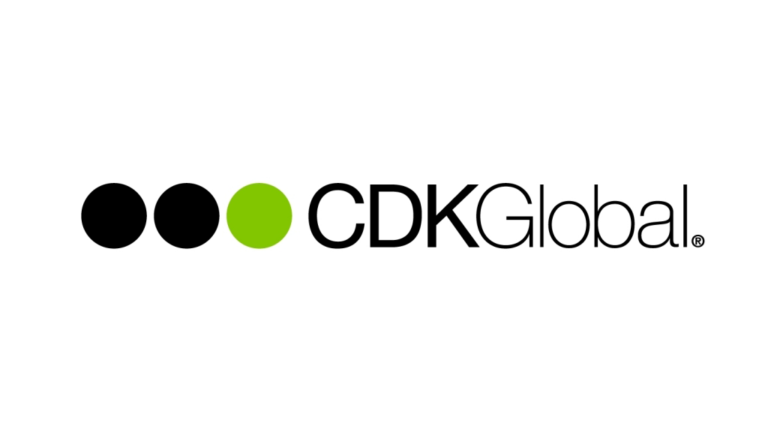
June 21, 2024: CDK Global, a leading provider of dealership management software (DMS) to the automotive industry in North America, announced a significant disruption to its operations following a cyberattack. The company confirmed that its core DMS platform and other critical systems were forced offline in the late hours of June 19th, 2024.
In a statement released on June 20th, CDK Global acknowledged the ongoing nature of the incident, stating that the company’s systems would likely remain offline “for several days.” This extended outage poses a significant challenge for dealerships across the United States, who rely heavily on CDK’s software to manage core functions such as vehicle sales, financing, and customer service.
The attack comes at a particularly inopportune time for the auto industry, which is already grappling with ongoing supply chain issues and chip shortages. The disruption to CDK Global’s DMS will undoubtedly hinder dealerships’ ability to conduct day-to-day operations, potentially leading to lost sales and frustrated customers.
While the specific nature of the cyberattack remains undisclosed, CDK Global emphasized its commitment to working with external security experts to assess the situation and restore functionality as swiftly as possible. The company further stated that it prioritizes customer data protection and takes all necessary precautions to mitigate potential risks.
The incident serves as a stark reminder of the growing cyber threats businesses across all sectors face. With its reliance on interconnected systems and sensitive customer data, the automotive industry is particularly vulnerable to attacks. CDK Global’s experience underscores the importance of robust cybersecurity measures for businesses of all sizes.
The coming days will be crucial for CDK Global as it works to resolve the cyberattack and restore full functionality to its systems. Dealerships and industry observers alike will closely monitor the company’s response and communication throughout this incident.
Also Read, Gen X to Gain Most from $84 Trillion Wealth Transfer
Gen X to Gain Most from $84 Trillion Wealth Transfer

June 20, 2024: A paradigm shift is underway in the distribution of wealth across the United States, with a staggering $84 trillion projected to change hands over the next few decades. This colossal transfer of assets, dubbed the “Great Wealth Transfer,” is expected to disproportionately benefit Generation X.
Experts predict that Gen X, the demographic cohort born between roughly 1965 and 1980, will inherit the lion’s share of this wealth. Estimates suggest they receive approximately $30 trillion, eclipsing the inheritances projected for Millennials ($27 trillion) and Baby Boomers ($4 trillion).
Several factors contribute to Gen X’s advantageous position. Firstly, their parents, the Baby Boomer generation, currently hold most of U.S. wealth. As this generation ages, their assets will be passed down to their heirs. Secondly, Gen X tends to fall within the middle-aged demographic, which is statistically a time of peak earning potential. This financial stability allows them to absorb larger inheritances without significantly disrupting their financial security.
The wealth transfer presents both opportunities and challenges. On the positive side, a significant influx of capital could empower Gen X to invest, launch businesses, and contribute to economic growth. Additionally, increased financial security could translate into greater charitable giving and philanthropic endeavors.
However, potential drawbacks also merit consideration. A widening wealth gap could exacerbate existing social inequalities. Unequal distribution of inherited wealth might also lead to distortions within the housing market and other asset classes.
Financial experts recommend that Gen X proactively prepare for potential inheritances. Consulting with financial advisors to develop sound wealth management strategies can ensure the windfall benefits them and future generations.
In conclusion, the Great Wealth Transfer represents a monumental shift in the U.S. financial landscape. While Gen X stands to gain the most, careful planning and responsible management will be crucial in maximizing this historic event’s positive societal and economic impact.
Also Read, Big Stocks Rise: Patterson, Silk Road Medical, Micron, HP on Tuesday
Big Stocks Rise: Patterson, Silk Road Medical, Micron, HP on Tuesday

June 19, 2024: A wave of positive sentiment swept through the U.S. stock market on Tuesday, propelling shares of several prominent companies higher. This upward movement suggests a potential shift in investor confidence following recent market fluctuations.
Patterson Companies (NYSE: PDCO), a leading distributor of dental and medical supplies, emerged as a top gainer, with its stock price surging by over 8%. This positive performance may be attributed to recent company announcements regarding product innovations or strategic partnerships, although the specific catalyst for the rise remains unclear.
Silk Road Medical (NASDAQ: SILK), a medical device company specializing in brachytherapy solutions for cancer treatment, also witnessed a significant increase in its stock price, exceeding 7% on Tuesday. This positive movement could respond to favorable clinical trial results or new product approvals by regulatory bodies.
Micron Technology Inc. (NASDAQ: MU), a major player in the global semiconductor industry, experienced a more modest gain of around 3%. This upward tick likely reflects continued optimism about the chip shortage and its potential to benefit memory chip manufacturers like Micron shortly.
Hewlett Packard Enterprise (NYSE: HPE), a provider of enterprise technology solutions, also joined the upward trend, with its stock price increasing by approximately 2%. This positive movement could result from investor confidence in HPE’s cloud computing and artificial intelligence initiatives.
The broader market indexes also reflected the positive sentiment. The S&P 500 Index rose by over 1%, while the Nasdaq Composite Index climbed by nearly 1.5%. This synchronized upward movement suggests a general improvement in investor risk appetite and a potential return to bullish market sentiment.
It is important to note that stock prices can fluctuate based on various factors, including company-specific news announcements, broader economic trends, and investor sentiment. While Tuesday’s gains are a positive sign, they may not necessarily represent a sustained upward trajectory for the market.
In the coming days, investors will likely remain attentive to upcoming earnings reports, economic data releases, and geopolitical developments, as these factors can influence future market movements.
Also Read, Truist Bank Confirms Data Breach After Stolen Data Surfaces Online
Truist Bank Confirms Data Breach After Stolen Data Surfaces Online

June 18, 2024: Truist Bank, a major United States financial holding company, confirmed a data breach after a cybercriminal sold customer information on a hacking forum. This development raises concerns about potential identity theft and fraud risks for affected customers.
The confirmation comes after a threat actor known as “Sp1d3r” posted an advertisement on the forum, claiming to possess data on 65,000 Truist employees, including bank transactions, account details, and balances. Additionally, the seller mentioned having access to the source code for Truist’s Interactive Voice Response (IVR) system, which could potentially expose vulnerabilities exploitable for fraudulent activities.
Initially, Truist did not publicly acknowledge the data breach. However, following inquiries from journalists and heightened online discussion, a spokesperson confirmed that the bank had experienced a “cybersecurity incident” in October 2023. They assured that the incident was “quickly contained” and downplayed the severity, stating that only a “small number of clients” were affected.
The discrepancy between Truist’s initial silence and the online advertisement raises questions about the bank’s transparency regarding the data breach. Customers are likely to seek clarification on the nature and extent of the compromised data and the potential consequences for their financial security.
Truist has not disclosed the cause of the data breach or the specific measures taken to address it. However, they have stated that they are “providing awareness to teammates” regarding the situation, suggesting potential internal security improvements.
This incident underscores the heightened vulnerability of financial institutions to cyberattacks. Truist’s data breach highlights the importance of robust cybersecurity measures, transparent communication with customers during security incidents, and proactive efforts to mitigate potential financial losses or identity theft risks for impacted individuals. In the coming days, we are likely to see further scrutiny of Truist’s response to the data breach, with regulators and customers alike demanding a more comprehensive explanation of the incident and its consequences.
Also Read, GameStop Shareholder Meeting Servers Crash Amid Overwhelming Interest
GameStop Shareholder Meeting Servers Crash Amid Overwhelming Interest
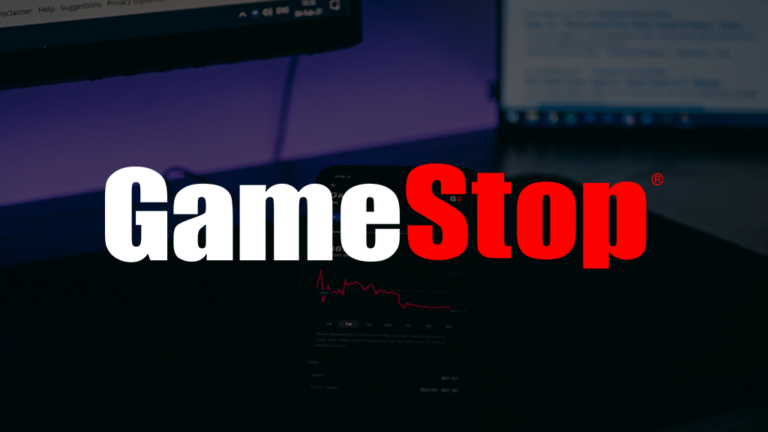
June 14, 2024: The annual shareholder meeting of GameStop Corporation, a prominent video game retailer, was disrupted due to an unanticipated surge in online attendance. The virtual meeting, hosted by transfer agent firm Computer Share, was scheduled to begin at 11:00 AM Eastern Time. However, as many shareholders attempted to log in, the company’s servers became overwhelmed, resulting in widespread inaccessibility.
Social media platforms were flooded with reports from frustrated shareholders encountering error messages and login issues. A spokesperson for Computer Share confirmed the technical difficulties, attributing them to an unexpectedly high volume of participants. The company representative acknowledged that their servers were not equipped to handle such a large influx of concurrent users, a situation exacerbated by an unanticipated rise in interest surrounding the meeting.
The surge in attendance is believed to be linked to recent speculation regarding the potential appointment of prominent investor Keith Gill, also known online as “Roaring Kitty,” to the GameStop board of directors. This speculation stemmed from an unverified document circulating on social media. Mr. Gill’s past influence on the company’s stock price, particularly during the 2021 short squeeze phenomenon, is considered a significant factor in heightened investor interest.
The technical difficulties ultimately postponed the shareholder meeting. While an official date for the rescheduled event has not yet been announced, GameStop has issued a statement announcing that shareholders will be notified promptly. The company is also working with Computer Share to ensure a more robust platform can accommodate a larger audience for the rescheduled meeting.
The incident highlights the growing influence of retail investors in the modern financial landscape. The potential impact of online communities and social media speculation on corporate governance and shareholder engagement is a topic of ongoing discussion within the financial sector. While the long-term ramifications of this specific event remain to be seen, it serves as a reminder of the evolving dynamics of shareholder participation in the digital age.
Also Read, Shutterstock & Databricks Launch ImageAI: Customizable Text-to-Image AI
Shutterstock & Databricks Launch ImageAI: Customizable Text-to-Image AI
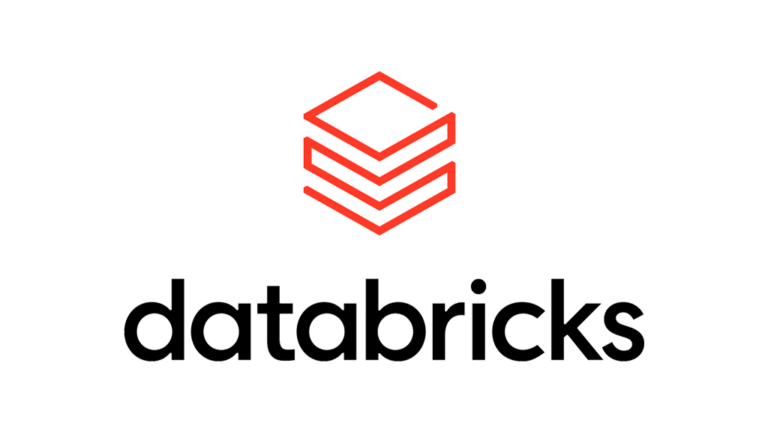
June 13, 2024: A collaborative effort between Shutterstock, a leading global creative platform, and Databricks, a data and AI company, has resulted in the launch of a groundbreaking new product: ImageAI. This innovative solution empowers businesses to generate high-quality, custom-designed images directly from text descriptions.
ImageAI leverages the power of generative AI technology, specifically a text-to-image diffusion model. This model is trained on Shutterstock’s vast repository of curated, high-resolution images, ensuring that the images generated by ImageAI adhere to enterprise-level standards for quality and data governance. Additionally, the training data is meticulously selected to avoid incorporating copyrighted material, addressing potential concerns regarding intellectual property rights.
Generating customized images through text descriptions offers significant advantages for businesses. It streamlines the creative process, allowing marketing teams, designers, and product developers to rapidly generate visuals that align perfectly with their specific needs. This eliminates time-consuming searches for stock photos or the need for expensive commissioned artwork.
ImageAI caters to the growing demand for visual content within the business landscape. Social media platforms, marketing campaigns, and product presentations rely heavily on impactful visuals to capture attention and effectively communicate messages. ImageAI provides a cost-effective and efficient way to fulfill this demand.
Furthermore, ImageAI prioritizes data security and privacy, a critical consideration for businesses navigating the ever-evolving regulatory landscape. The platform operates within the framework of Databricks’ secure data intelligence platform, ensuring adherence to industry best practices for data protection.
The launch of ImageAI signifies a notable advancement in generative AI. By combining Shutterstock’s extensive image library with Databricks’ data expertise, this innovative tool empowers businesses to harness the power of AI to create unique and commercially viable visual content. The long-term impact of ImageAI on creative workflows and content creation strategies within the business world remains to be seen. Still, its potential to revolutionize how companies approach visual communication is undeniable.
Also Read, Flyhomes Acquires Tech from Sam Altman-Backed Startup to Boost AI Home Search Tool
Flyhomes Acquires Tech from Sam Altman-Backed Startup to Boost AI Home Search Tool

June 12, 2024: Seattle-based real estate company Flyhomes has bolstered its home search capabilities by acquiring technology assets from ZeroDown, a San Francisco startup specializing in artificial intelligence (AI)- powered software for prospective homebuyers. The financial terms of the deal were not disclosed.
ZeroDown, backed by OpenAI CEO Sam Altman, focuses on developing innovative tools to streamline the homebuying journey. Flyhomes, established in 2016, has primarily catered to consumers in the later stages of the process, offering programs that provide upfront funding to strengthen purchase offers and facilitate “buy-before-you-sell” solutions.
This strategic acquisition signifies Flyhomes’ intention to expand its reach and influence the earlier stages of home search. The core element of the deal is the integration of ZeroDown’s proprietary AI technology, which will be incorporated into a new “Flyhomes AI” platform.
According to a company press release, Flyhomes AI is designed to be the “industry’s first purpose-built AI home search portal.” The platform leverages a comprehensive dataset encompassing hundreds of data points sourced from various public and private entities, including the U.S. Census Bureau, the Federal Emergency Management Agency (FEMA), and the United States Geological Survey (USGS). This data, combined with information traditionally provided by Multiple Listing Services (MLS), aims to provide a more holistic view of potential properties.
Significantly, Flyhomes AI is touted as offering a “conversational” search experience. This translates to the platform’s ability to answer user queries in a natural, question-and-answer format, similar to interacting with a real estate agent. This functionality is powered, in part, by OpenAI models, suggesting Flyhomes AI may leverage advancements in large language models (LLMs) to provide users with nuanced and informative responses.
The acquisition brings key personnel from ZeroDown on board. Laks Srini, co-founder and former CTO of ZeroDown, will assume the role of CTO at Flyhomes, while his co-founder Abhijeet Dwivedi will become the company’s Chief Growth Officer. Their expertise will undoubtedly be instrumental in developing and deploying Flyhomes AI.
The real estate industry is witnessing a growing trend towards technology adoption, with companies striving to leverage AI and machine learning to enhance the user experience. Flyhomes’ acquisition of ZeroDown’s AI technology positions them as a frontrunner in this evolving landscape. The success of Flyhomes AI will hinge on its ability to deliver a truly intelligent and user-friendly home search experience that empowers buyers to make informed decisions.
Also Read, Fortinet to Acquire Lacework, Expanding Cybersecurity Platform
Fortinet to Acquire Lacework, Expanding Cybersecurity Platform

June 11, 2024: In a move poised to significantly impact the cybersecurity landscape, Fortinet, a leading cybersecurity firm, announced the acquisition of Lacework, a prominent cloud security company. This strategic acquisition is expected to bolster Fortinet’s security offerings, creating a more comprehensive platform for enterprises navigating the ever-evolving threat landscape.
Financial details of the agreement were not publicly disclosed. However, the acquisition signifies Fortinet’s commitment to expanding its cybersecurity solutions, particularly in the rapidly growing cloud security domain. Lacework, a well-established player in the cloud-native application protection platform (CNAPP) market, offers advanced security solutions specifically designed for cloud environments.
Integrating Lacework’s capabilities will significantly enhance Fortinet’s Security Fabric platform. This platform offers a comprehensive suite of security tools designed to protect organizations across on-premises, hybrid, and multi-cloud environments. By incorporating Lacework’s expertise in cloud security, Fortinet aims to provide customers with a seamless and unified security experience, regardless of their deployment model.
A key strength of Lacework lies in its utilization of artificial intelligence (AI) and machine learning (ML) technologies. The company’s Polygraph engine, a core component of its platform, leverages these advanced algorithms to analyze vast amounts of data and detect potential security threats within cloud environments. This data-driven approach allows for proactive threat identification and mitigation, ultimately improving an organization’s security posture.
The acquisition is also expected to benefit from the complementary strengths of both companies. Fortinet’s established presence in the cybersecurity market, coupled with Lacework’s innovative cloud security solutions, creates a synergistic combination. This powerful alliance can potentially redefine how organizations approach cloud security, offering a more robust and integrated solution.
The impact of this acquisition extends beyond the immediate benefits for Fortinet and Lacework. It sends a clear message within the cybersecurity industry – the demand for comprehensive, cloud-centric security solutions is rising. By combining their expertise, Fortinet and Lacework are well-positioned to address this growing need and contribute to a more secure digital landscape for enterprises worldwide.
While the official closing of the deal is still pending regulatory approval, the announcement has generated significant interest within the cybersecurity community. With both companies expressing confidence in the integration process, the future appears bright for the combined entity. The acquisition is expected to be finalized in the latter half of 2024.
Also Read, ECB Tightens Controls on Buyout and Climate Risks Under Buch
ECB Tightens Controls on Buyout and Climate Risks Under Buch

June 7, 2024: The European Central Bank (ECB), led by Christine Lagarde, is embarking on a period of heightened vigilance regarding potential risks within the Eurozone financial system. This approach aligns with her stated priorities of ensuring financial stability and fostering a sustainable economic future for the region.
One key area of focus for the ECB is the burgeoning leveraged buyout (LBO) market. LBOs involve the acquisition of companies using a significant amount of borrowed funds. While these transactions can unlock growth opportunities, they can also expose the financial system to potential instability if debt levels become excessive. The ECB is emphasizing the need for stricter oversight of LBO activity, focusing on ensuring that borrowers can manage their debt burdens effectively.
Beyond financial risks, the ECB also places greater emphasis on environmental considerations. Climate change is increasingly recognized as a significant threat to financial stability. The ECB advocates for integrating climate-related risks into financial institutions’ risk management frameworks. This entails assessing the potential financial implications of climate change, such as those arising from extreme weather events or the transition towards a low-carbon economy.
The ECB’s intensified focus on these issues reflects a broader global trend within central banking circles. Regulatory authorities increasingly acknowledge the interconnectedness of financial stability, environmental sustainability, and economic growth. The ECB’s leadership under Lagarde signifies a commitment to addressing these challenges comprehensively and forward-looking.
The ECB’s approach is not without its challenges. Implementing stricter oversight on LBOs necessitates collaboration with national regulators across the Eurozone. Similarly, integrating climate-related risks into financial risk management frameworks requires the development of robust assessment methodologies and data collection practices.
Despite these challenges, many in the financial sector welcome the ECB’s proactive approach. Stakeholders acknowledge the importance of proactively addressing potential risks to safeguard financial stability and promote long-term economic prosperity. The ECB’s leadership under Lagarde fosters a culture of risk awareness and responsible financial practices within the Eurozone.
In conclusion, the ECB under Christine Lagarde is spearheading a period of heightened vigilance towards financial risks in the Eurozone. This focus encompasses traditional concerns like leveraged buyouts and emerging threats like climate change. The ECB’s leadership is laying the groundwork for a more robust and sustainable financial system within the Eurozone, fostering collaboration with national regulators and industry stakeholders to achieve these goals.
Also Read, Citi Bullish on Boeing Stock Amid Strong Airline Campaigns
Citi Bullish on Boeing Stock Amid Strong Airline Campaigns

June 6, 2024: Financial services giant Citigroup has expressed renewed confidence in Boeing (NYSE: BA) stock, citing recent developments within the airline industry. This positive outlook is underpinned by a surge in aircraft purchasing campaigns undertaken by several major international airlines.
On Wednesday, a Citi analyst reaffirmed a “buy” rating for Boeing stock, accompanied by a price target of $224. This endorsement comes in the wake of reports detailing significant aircraft orders placed by airlines. Turkish Airlines reportedly seeks to acquire roughly 250 new planes, while Qatar Airways has expressed interest in approximately 200 aircraft. Additionally, Flyadeal, a low-cost carrier in Saudi Arabia, is said to be in the market for 20 new planes.
Citi’s analyst believes that most of these orders will likely be directed toward Boeing’s wide-body aircraft models, specifically the 787 and 777. While Airbus’s A350 is also expected to garner interest, Boeing is positioned to benefit substantially from this potential influx of orders.
The certification and subsequent production ramp-up of Boeing’s wide-body jets are anticipated to significantly bolster the company’s free cash flow (FCF). The analyst forecasts this growth will surpass Boeing’s long-standing target of $10 billion. These projections underscore a potentially positive trajectory for Boeing’s financial performance in the coming years.
Citi’s optimistic outlook on Boeing stock aligns with the broader sentiment within the aerospace industry. The industry is paying close attention to production and delivery schedules, focusing on Boeing’s progress on wide-body aircraft. The analyst’s projections, therefore, contribute to a more positive perspective on Boeing’s future financial health.
It is important to note that the airline industry remains susceptible to various external factors, including fluctuations in fuel prices and global economic conditions. Nonetheless, the recent surge in aircraft orders suggests a degree of optimism among airlines regarding future passenger demand. This, in turn, translates to potential benefits for Boeing’s production output and overall financial performance.
In conclusion, Citi’s renewed confidence in Boeing stock reflects the positive impact of recent airline purchasing campaigns. The anticipated increase in demand for Boeing’s wide-body aircraft, coupled with the potential for exceeding free cash flow targets, paints a promising picture for the company’s future. However, ongoing monitoring of external factors influencing the airline industry remains crucial for a comprehensive assessment of Boeing’s long-term prospects.
Also Read, Rackspace Boosts Sharestates’ User Experience with AWS Modernization
Rackspace Boosts Sharestates’ User Experience with AWS Modernization
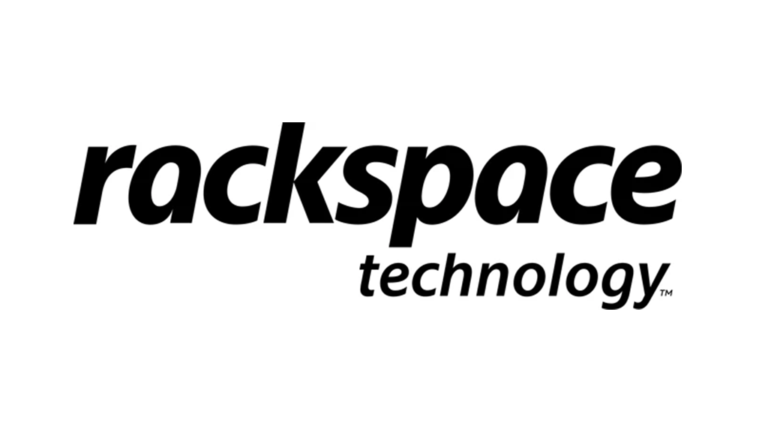
June 5, 2024: Rackspace Technology®, a leading provider of end-to-end, hybrid multi-cloud, and artificial intelligence (AI) solutions, recently announced the successful migration of Sharestates’ infrastructure to Amazon Web Services (AWS). This strategic move signifies a commitment by Sharestates, a prominent online marketplace for real estate lending solutions, to modernize its technology stack and enhance its overall user experience and operational performance.
Previously, Sharestates relied on a legacy infrastructure housed in a private cloud environment managed by Rackspace. The decision to migrate to AWS was driven by a desire to leverage the cloud’s inherent benefits, including cost-effectiveness, scalability, and access to cutting-edge technologies.
The migration process involved a three-pronged approach. First, a secure and robust foundation was established on AWS, ensuring the continued smooth operation of Sharestates’ applications and databases. Second, Rackspace continues to provide ongoing monitoring services, offering Sharestates valuable insights into their cloud environment’s health and performance. Finally, Sharestates retains the ability to manage its own internal systems within the AWS framework, fostering a degree of control and customization.
This cloud modernization initiative has yielded several positive outcomes for Sharestates. Customers can expect a more streamlined and efficient user experience when interacting with the Sharestates platform. Additionally, the migration has optimized Sharestates’ operational processes, potentially leading to increased productivity and cost savings. Furthermore, Sharestates now has access to a wider array of advanced cloud technologies offered by AWS, allowing them to explore new avenues for innovation and service expansion.
The collaboration between Rackspace Technology and AWS has proven instrumental in facilitating Sharestates’ successful cloud migration. Rackspace’s expertise in cloud implementation and AWS’s robust infrastructure have combined to create a secure and scalable foundation for Sharestates’ future growth.
Looking ahead, Sharestates is well-positioned to capitalize on the advantages of the AWS cloud environment. The enhanced scalability and agility offered by AWS will allow Sharestates to adapt to evolving market demands and continue providing exceptional service to its users. This strategic move positions Sharestates as a leader in its field, demonstrating a commitment to technological innovation and a superior user experience.
Also Read, Norwegian Contractor Secures Job on World’s Largest Offshore Oilfield
Norwegian Contractor Secures Job on World’s Largest Offshore Oilfield

June 4, 2024: A major contract award has been announced in the global oil and gas industry. ABL, Norwegian energy, and marine consultancy firm, has been chosen by China’s Offshore Oil Engineering Company (COOEC) as a subcontractor for critical work on the world’s largest conventional offshore oilfield—the Safaniyah asset owned by Saudi Aramco.
This significant development designates ABL as the provider of Marine Warranty Survey (MWS) services for the build-out of the CRPO 122 project within the Safaniyah oilfield, situated offshore Saudi Arabia. The scope of ABL’s responsibilities entails a comprehensive review, survey, and approval process for all operations related to the transportation and installation (T&I) of various crucial components. This includes 13 shallow-water steel jackets, associated piles, conductors, and other project-critical elements.
The selection of ABL for this prestigious project underscores the company’s expertise in marine warranty surveying. MWS is a critical risk management tool in offshore construction projects, ensuring personnel, equipment, and environment safety and integrity throughout the T&I phase. ABL’s proven track record and adherence to stringent international standards likely played a decisive role in securing this contract.
The Safaniyah oilfield is strategically important for Saudi Arabia, a leading global oil producer. The CRPO 122 project represents a significant expansion effort to maintain and potentially increase the field’s production capacity. ABL’s involvement in this project signifies a valuable opportunity for the Norwegian company to contribute to a major energy development initiative on the world stage.
While the contract’s financial details remain undisclosed, it is safe to assume that this project represents a substantial win for ABL. The scale and complexity of the Safaniyah oilfield development project guarantee significant workload and revenue generation for the company. Additionally, the successful completion of this project will further solidify ABL’s reputation as a leading provider of MWS services, potentially opening doors to future contracts in the global offshore oil and gas sector.
The future trajectory of the global oil and gas industry remains a subject of debate, with growing concerns surrounding sustainability and the transition towards renewable energy sources. However, the award of this major contract to ABL highlights the continued relevance of offshore oil and gas development projects in the near to medium term. The expertise of companies like ABL will remain crucial in ensuring the safe and efficient execution of such large-scale undertakings.
Also Read, Adani Group Market Cap Surpasses Pre-Hindenburg Level After Exit Polls
Adani Group Market Cap Surpasses Pre-Hindenburg Level After Exit Polls
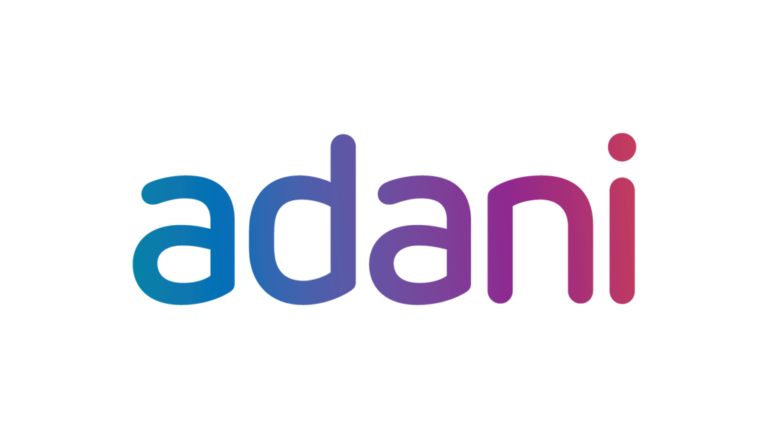
June 3, 2024: The Adani Group, a prominent Indian conglomerate helmed by billionaire Gautam Adani, has witnessed a remarkable resurgence in its market capitalization. On June 3rd, 2024, the group’s combined market cap surpassed its level before the release of a scathing report by Hindenburg Research in January 2023. This significant turnaround coincides with a surge in the broader Indian stock market following positive exit polls for the upcoming national elections.
The Hindenburg report, which alleged accounting irregularities and stock manipulation within the Adani Group, triggered a major sell-off, leading to a substantial erosion of the group’s market cap. However, in the ensuing months, the Adani Group aggressively contested these allegations and undertook measures to bolster investor confidence. Additionally, a strong performance by the underlying businesses within the group appears to have reassured investors.
The recent surge in the Adani Group’s stock prices can be attributed, in part, to the positive sentiment prevailing in the Indian stock market. Exit polls, conducted by various news agencies following the conclusion of national election voting, suggest a potential landslide victory for the incumbent Bharatiya Janata Party (BJP) led by Prime Minister Narendra Modi. This prospect of political continuity appears to have buoyed investor confidence, leading to a broad market rally.
The Adani Group’s diverse portfolio of companies, encompassing sectors like ports, power generation, and infrastructure, stands to benefit from continued economic growth in India. Investors view the potential for increased infrastructure spending under a stable BJP government favorably, positively impacting the share prices of Adani Group entities.
However, some analysts caution against excessive optimism. While the recent market rally is encouraging for the Adani Group, long-term sustainability hinges on its ability to deliver strong financial performance and maintain transparency in its operations. Though contested, the lingering concerns raised by the Hindenburg report have not entirely dissipated. Continued scrutiny from regulatory bodies and investors will be a factor to watch.
Overall, the Adani Group’s rebound in market capitalization signifies a significant recovery from the Hindenburg report. The positive sentiment surrounding the Indian stock market and the group’s efforts to regain investor confidence appear to be paying off. However, the long-term trajectory of the Adani Group remains contingent on its ability to navigate ongoing challenges and demonstrate sustained financial growth with robust corporate governance.
Also Read, Gemini Returns $2.2B to Users After 18-Month Withdrawal Pause
Gemini Returns $2.2B to Users After 18-Month Withdrawal Pause

May 30, 2024: In a move aimed at regaining user trust, cryptocurrency exchange Gemini announced restoring $2.2 billion in digital assets to users. This follows an 18-month suspension of withdrawals from the platform’s Earn program, which offered interest-bearing accounts in partnership with crypto broker Genesis. The reintegration of funds stems from a significant settlement reached between Genesis and the New York Attorney General’s office.
The Earn program’s suspension in November 2022 stemmed from liquidity issues encountered by Genesis, which had exposure to the bankrupt crypto hedge fund Three Arrows Capital. This triggered a domino effect, impacting Gemini’s ability to distribute funds from the program. Subsequently, the exchange faced criticism from users regarding the lack of transparency and delayed access to their holdings.
The recent settlement with the New York Attorney General mandated the return of a substantial portion of user funds held by Genesis. Gemini has indicated that approximately 97% of the initial Earn program distributions are now available in user accounts. The remaining 3% is expected to be returned within the next year.
This development signifies a potential turning point for Gemini, which has strived to maintain user confidence throughout the ordeal. The exchange has emphasized its commitment to regulatory compliance and has undertaken efforts to bolster its risk management protocols. The successful return of a significant portion of frozen funds is likely to be viewed favorably by users and could serve to stabilize Gemini’s position within the cryptocurrency exchange landscape.
The broader cryptocurrency industry continues grappling with lending platform issues and liquidity risks. Gemini’s experience serves as a cautionary tale, highlighting the potential pitfalls of these offerings. Moving forward, regulators are likely to increase scrutiny of crypto lending activities, potentially leading to stricter regulations.
Also Read, Scaling Content Quality with AI Improvements
Scaling Content Quality with AI Improvements

May 29, 2024: The ever-expanding digital landscape demands a constant stream of high-quality content. Keeping pace with this demand can be a significant challenge, particularly for organizations producing content at scale. However, advancements in artificial intelligence (AI) offer a promising solution: the ability to automate and enhance content creation, ensuring consistent quality without sacrificing efficiency.
AI can be harnessed for content creation in several key ways. Firstly, natural language processing (NLP) techniques allow AI to analyze vast amounts of existing content. This analysis helps identify patterns, styles, and best practices associated with high-performing content. These insights can then guide the creation of new content more likely to resonate with target audiences.
Secondly, AI-powered tools can automate various content creation tasks. For instance, AI can generate high-quality product descriptions, blog post outlines, or even basic news articles based on pre-defined parameters. This frees human content creators to focus on more complex tasks requiring creativity and strategic thinking.
Furthermore, AI can play a crucial role in quality assurance. Grammar and plagiarism checkers powered by AI can seamlessly integrate into the content creation workflow, ensuring that all content adheres to established standards and avoids unintentional plagiarism. This contributes to maintaining a consistently high quality across all content produced.
The benefits of utilizing AI for content creation go beyond cost savings and efficiency. AI-powered tools can help overcome human limitations such as writer’s block or the inability to analyze vast quantities of data quickly. This can lead to the generation of content that is more data-driven, insightful, and potentially even more creative than content created solely by humans.
However, it is important to emphasize that AI is not intended to replace human content creators altogether. The most effective approach lies in a collaborative model where AI augments human capabilities. Human expertise remains essential for developing a content strategy, injecting a unique voice and perspective, and ensuring brand alignment.
In conclusion, AI offers a transformative approach to content creation. By automating mundane tasks, analyzing vast data sets, and assisting with quality assurance, AI empowers organizations to produce high-quality content at scale. This technology can potentially revolutionize content creation across various sectors, from marketing and journalism to education and entertainment. As AI continues to develop, its role in shaping content in the future will likely become increasingly influential.
Mitsubishi Electric Launches NEXIEZ-Fit Elevator
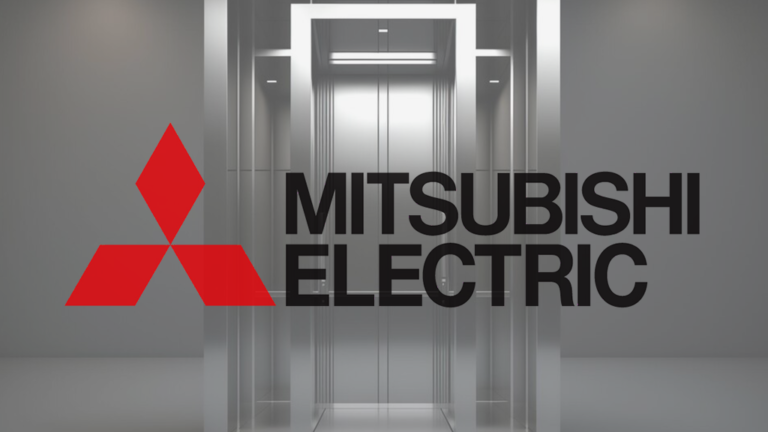
May 28, 2024: Mitsubishi Electric Building Solutions Corporation (MEBS) has announced the launch of the NEXIEZ-Fit elevator, a new product specifically designed for low-rise residential buildings. This development caters to the growing demand for such buildings, particularly in regions experiencing rapid urbanization.
The NEXIEZ-Fit builds upon the established platform of the NEXIEZ-MRL Ver.2, MEBS’s premium elevator model used in high-end sectors like luxury hotels and office buildings. However, the NEXIEZ-Fit streamlines the design and construction process for low-rise applications.
This optimization is achieved through several key features. Firstly, MEBS has reviewed shipping patterns and implemented adjustments to improve installation efficiency. Secondly, the NEXIEZ-Fit reduces the on-site welding required, further expediting the construction timeline. These modifications are achieved while maintaining the safety and reliability that are hallmarks of Mitsubishi elevators.
Beyond construction efficiency, the NEXIEZ-Fit offers additional benefits for building owners and residents. The carefully selected specifications provide a cost-effective solution for low-rise applications. The NEXIEZ-Fit can be optionally equipped with M’s BRIDGE™, a global remote maintenance service that monitors elevator performance and provides valuable data for proactive maintenance practices.
The launch of the NEXIEZ-Fit reflects MEBS’s commitment to cater to diverse market needs. While the NEXIEZ-MRL Ver.2 remains the company’s flagship elevator model for premium segments, the NEXIEZ-Fit offers a compelling option for low-rise residential buildings. This strategic product launch positions MEBS to capture a wider elevator market share.
The growing demand for low-rise residential buildings is driven by several factors. In regions experiencing rapid urbanization, there is a need for high-density housing solutions. Additionally, a growing population opts for smaller living spaces, particularly in urban areas. The NEXIEZ-Fit elevator is well-suited to cater to these evolving market trends.
In conclusion, introducing the NEXIEZ-Fit elevator signifies a strategic expansion within the Mitsubishi Electric Building Solutions product portfolio. This new model, designed for low-rise residential buildings, offers a cost-effective and efficient solution while maintaining the company’s high standards for quality and reliability.
Also Read, US to Sue Ticketmaster Owner Live Nation
US to Sue Ticketmaster Owner Live Nation

May 23, 2024: The United States Department of Justice (DOJ) is reportedly about to file an antitrust lawsuit against Live Nation Entertainment, the parent company of ticketing giant Ticketmaster. The lawsuit alleges that Live Nation has abused its dominant market position to stifle competition and harm consumers.
The impending legal action comes amidst mounting concerns regarding Live Nation’s control over concert promotion and ticketing services. The DOJ contends that this combined ownership structure allows Live Nation to exert undue influence on the live entertainment industry, potentially limiting consumer choice and inflating ticket prices.
Specifically, the lawsuit is expected to focus on Live Nation’s use of exclusive ticketing contracts with concert venues. These contracts reportedly prevent venues from partnering with competing ticketing platforms, effectively limiting event organizers’ options and potentially hindering the growth of alternative ticketing services.
The DOJ’s legal challenge builds upon previous investigations into Live Nation’s business practices. In 2010, the department approved Live Nation’s merger with Ticketmaster under certain conditions aimed at promoting competition. However, the DOJ now alleges that Live Nation has failed to comply with these conditions, prompting this renewed legal action.
The outcome of this lawsuit could have significant implications for the live entertainment industry. If the DOJ prevails, Live Nation may be forced to divest itself of Ticketmaster or restructure its business operations to promote fair competition. This could potentially lead to a more level playing field for ticketing services and benefit consumers through lower prices and greater choice.
Live Nation has yet to publicly comment on the impending lawsuit. However, the company will likely mount a strong defense, arguing that its business practices are lawful and do not stifle competition. The legal battle could be protracted and complex, with both sides presenting arguments and evidence to support their positions.
This lawsuit signifies the DOJ’s ongoing commitment to enforcing antitrust laws and promoting fair competition within various industries. The case also underscores the increasing scrutiny faced by large corporations with dominant market positions, particularly in the digital age.
Also Read, Texas Power Prices Surge 1,600% Amid Spring Heat Wave
Texas Power Prices Surge 1,600% Amid Spring Heat Wave

May 22, 2024: Texas faces the prospect of record energy demand this spring and a surge in wholesale electricity prices. This scenario raises concerns about potential grid strain and power outages, particularly in light of the state’s independent power grid.
Recent forecasts predict a significant increase in electricity demand across Texas. The Electric Reliability Council of Texas (ERCOT), the state’s grid operator, anticipates demand to reach record highs, potentially exceeding 74 gigawatts (GW) later this week. This surge is attributed to various factors, including unseasonably hot spring weather and increased reliance on air conditioning.
Compounding these concerns is a dramatic rise in wholesale electricity prices. On Thursday, ERCOT data revealed a spike in spot prices, reaching nearly $4,750 per megawatt-hour (MWh). This represents a staggering 1,600% increase compared to average prices on the previous day. While these prices are expected to stabilize, the volatility underscores the potential for significant consumer cost increases.
The specific reasons behind the price surge are multifaceted. Limited natural gas supplies and planned maintenance outages at some power plants have contributed to tighter market conditions. Additionally, the independent nature of the Texas power grid can lead to price fluctuations that are not observed in interconnected national grids.
Texas has a history of power grid challenges, notably the widespread blackouts experienced during Winter Storm Uri in February 2021. ERCOT has implemented various measures to improve grid reliability in response to that crisis. However, the upcoming heat wave and associated energy demand will be a crucial test of these efforts.
ERCOT officials have urged Texans to conserve energy during peak usage hours to help alleviate strain on the grid. Conservation measures could include raising thermostats, using major appliances during off-peak hours, and minimizing unnecessary lighting use.
The situation in Texas highlights the complex challenges associated with energy production, distribution, and affordability. While Texas boasts abundant natural resources, ensuring a reliable and cost-effective energy supply remains a constant concern. The coming days will be crucial in determining the effectiveness of measures taken to bolster the state’s grid and navigate this period of high demand.
Also Read, Faraday Future Stock Suspended After 5,240% Surge in 4 Days
Faraday Future Stock Suspended After 5,240% Surge in 4 Days

May 17, 2024: Electric vehicle (EV) startup Faraday Future (FFIE) witnessed a dramatic surge in its stock price this week, culminating in a trading suspension. The company’s stock price skyrocketed by a staggering 5,240% over just four trading days, prompting intervention by the Nasdaq exchange.
This volatility stems from Faraday Future’s ongoing battle against potential delisting from the Nasdaq exchange. In late December 2023, the exchange issued a warning due to the company’s stock price falling below $0.10 per share for ten consecutive days. To avert delisting, Faraday Future appealed the decision and initiated a temporary 15-day suspension of its securities on May 1st, 2024.
The recent surge in stock price appears to result from this delisting appeal. With the suspension scheduled to end on May 16th, investors potentially engaged in a buying spree, driving the stock price well above the minimum requirement of Nasdaq. This rapid and dramatic increase triggered trading halts multiple times throughout Thursday as market regulators sought to curb volatility and ensure orderly trading.
While the surge has enabled Faraday Future to meet the listing requirements temporarily, the company’s long-term viability remains uncertain. The dramatic stock price increase does not necessarily indicate the company’s financial health or prospects.
Financial analysts caution against interpreting this short-term price movement as reflecting Faraday Future’s true value. The company still faces significant challenges, including ongoing development of its electric vehicle, securing funding for production, and navigating a highly competitive market.
The future of Faraday Future’s stock and the company itself remains to be seen. The immediate concern surrounding delisting has been addressed, but the company must focus on its core business operations to ensure long-term sustainability and investor confidence.
Also Read, Google Unveils Trillium: Energy-Efficient Cloud TPU Boosts AI
Google Unveils Trillium: Energy-Efficient Cloud TPU Boosts AI

May 16, 2024: Google Cloud has unveiled Trillium, its sixth-generation Tensor Processing Unit (TPU), marking a significant advancement in artificial intelligence hardware. Notably, Trillium boasts the distinction of being Google’s most energy-efficient TPU. This innovation is poised to empower the development and deployment of the next generation of AI models.
Trillium surpasses its predecessors in several key metrics. It delivers a remarkable 4.7-fold increase in peak compute performance per chip compared to the TPU v5e. This enhanced processing prowess is attributed to advancements in the chip’s design, including expanding its matrix multiply units and increasing its overall clock speed. Additionally, Trillium features double the memory bandwidth of its predecessor, enabling it to handle demanding workloads more efficiently.
Beyond raw performance, Trillium incorporates the third generation of SparseCore technology. This specialized accelerator is designed to expedite the processing of intricate data structures known as embeddings, which are prevalent in sophisticated ranking and recommendation algorithms. Incorporating SparseCore is expected to accelerate the training of next-generation AI models while concurrently reducing latency and lowering operational costs.
Furthermore, Google emphasizes Trillium’s exceptional energy efficiency. The new TPU is touted to be 67% more energy-efficient than the TPU v5e. This advancement is crucial in the ever-growing demand for AI processing power. The exponential growth of machine learning workloads necessitates the development of more sustainable hardware solutions, and Trillium represents a significant stride in this direction.
Trillium boasts scalability, offering the capability to be configured with up to 256 TPUs within a single, high-bandwidth, and low-latency pod. These pods can be further scaled into hundreds using Google’s multislice technology, unveiled in late 2023. This enables the interconnection of tens of thousands of chips via Google’s Jupiter data center network, facilitating the execution of massive-scale AI workloads.
The introduction of Trillium signifies Google’s continued commitment to pioneering advancements in AI hardware. This novel TPU is expected to empower researchers and developers to push the boundaries of what’s achievable in the field of artificial intelligence. It is anticipated that Trillium will play a pivotal role in the development and deployment of the next generation of AI models, fostering breakthroughs across various domains.
Also Read, Baird Shifts Squarespace (SQSP) Rating to Neutral
Baird Shifts Squarespace (SQSP) Rating to Neutral
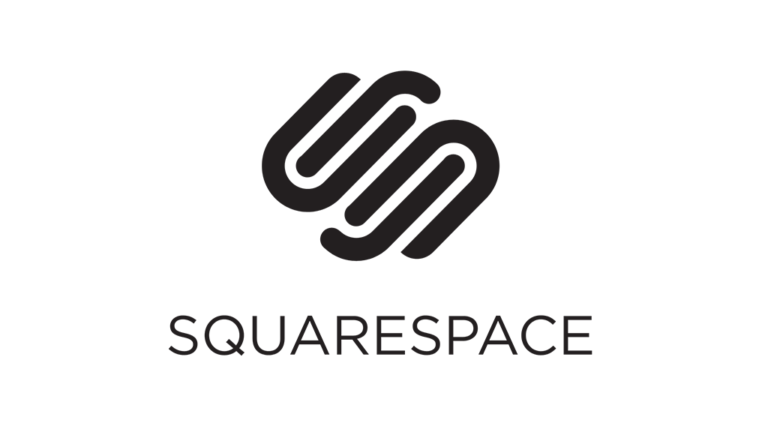
May 15, 2024: Investment research firm Baird has downgraded its recommendation for Squarespace Inc. (SQSP), a website builder and hosting company. Previously rated as “Outperform,” Baird analyst Vikram Kesavabhotla has now assigned Squarespace a “Neutral” rating. This revision reflects a shift in the analyst’s outlook on the company’s prospects.
Downgrade Rationale
Baird did not explicitly disclose the specific reasons behind the downgrade. However, financial analysts typically consider a variety of factors when making rating changes. These factors might include:
- Changes in Company Performance: A decline in Squarespace’s financial performance, such as revenue growth or profitability, could prompt a downgrade.
- Shifts in Market Conditions: If the overall market outlook for website builders or the technology sector sours, Squarespace’s performance could be downgraded, even if the company itself is performing adequately.
- Valuation Concerns: If Baird believes Squarespace’s stock price is currently trading above its fair value, a downgrade might be issued to reflect this view.
Limited Price Target Adjustment
While the downgrade to “Neutral” signifies a less bullish outlook, it is important to note that Baird also slightly adjusted its price target for Squarespace’s stock. Previously set at $45.00, the new price target is $44.00. This suggests that Baird still anticipates some potential upside for Squarespace’s stock price, albeit to a lesser extent than before.
Continued Monitoring
The downgrade does not necessarily imply a negative outlook for Squarespace. Baird will likely continue to monitor the company’s performance and may revise its rating again in the future if new developments warrant it.
Investor Considerations
Investors holding Squarespace stock or considering purchasing shares should conduct their research and due diligence rather than relying solely on analyst ratings. A comprehensive investment strategy should take into account the company’s financial health, market trends, and individual risk tolerance.
Overall Impact
The downgrade from Baird might lead to some short-term volatility in Squarespace’s stock price. However, the company’s long-term trajectory will depend on its ability to execute its business strategy and deliver value to its shareholders.
Also Read, Walgreens Settlement: Up to $918.28 for Americans
Walgreens Settlement: Up to $918.28 for Americans

May 13, 2024: Walgreens Boots Alliance (WBA) has reached a settlement agreement to resolve a class action lawsuit filed against the company. The lawsuit alleged violations of the Fair Credit Reporting Act (FCRA) concerning background checks conducted on job applicants.
Under the settlement terms, Walgreens has agreed to establish a fund to compensate individuals who applied for a position at the company between March 30, 2020, and May 17, 2022. They were denied employment due to inaccurate or misleading information within their background check reports.
The maximum potential payout for eligible individuals is $918.28. It is important to note that Walgreens has not admitted any wrongdoing as part of the settlement.
Here’s what you need to know about the settlement:
- Eligibility: Individuals who applied for a job at Walgreens during the specified timeframe and were denied employment potentially qualify for compensation.
- No Receipt Required: Unlike some class action settlements, a receipt documenting your job application is unnecessary to claim compensation.
- Claim Process: A court-appointed claims administrator will announce the exact details of the claims process. Potential claimants should monitor the official settlement website and any relevant legal notices for further instructions.
- Benefits: The settlement offers financial compensation to eligible individuals who may have experienced financial hardship due to the alleged inaccuracies in their background checks.
The settlement underscores the importance of fair and accurate background checks in hiring. The FCRA mandates that employers ensure the accuracy of information obtained in background checks before making employment decisions based on that information.
While the settlement compensates affected individuals, it does not address potential bias within background check practices. This area requires ongoing scrutiny to ensure fairness and equal opportunity within the job market.
Further details regarding the claims process and the distribution of funds are expected to be available in the coming weeks. Individuals who believe they may be eligible for compensation should monitor the official settlement website and legal notices for further instructions.
Also Read, T-Mobile, Verizon Eyeing U.S. Cellular Purchase, WSJ Reveals
T-Mobile, Verizon Eyeing U.S. Cellular Purchase, WSJ Reveals

May 10, 2024: A recent report by the Wall Street Journal has ignited speculation about a potential reshaping of the U.S. cellular landscape. The report suggests that both T-Mobile U.S. Inc. (TMUS) and Verizon Communications Inc. (V.Z.) are engaged in separate acquisition discussions with U.S. Cellular Corp. (USM), a regional wireless carrier.
The details surrounding these potential deals remain undisclosed. However, the Wall Street Journal cites sources familiar with the matter who indicate that T-Mobile is nearing a deal to acquire a significant portion of U.S. Cellular’s assets, including its wireless spectrum licenses and operations in certain markets. The estimated value of this acquisition could surpass $2 billion.
On the other hand, Verizon’s discussions are reportedly in earlier stages and might not culminate in a definitive agreement. This distinction could be attributed to existing regulatory hurdles related to potential market dominance concerns if Verizon acquired a larger share of U.S. Cellular’s assets.
The potential acquisition of U.S. Cellular by T-Mobile or Verizon signifies a strategic move within the competitive wireless carrier market. U.S. Cellular boasts a well-established customer base, particularly in rural regions across the United States. Acquiring these assets could allow T-Mobile or Verizon to expand their network coverage and customer reach, potentially solidifying their positions within the industry.
Analysts suggest several potential motives behind these acquisition talks. For T-Mobile, acquiring U.S. Cellular’s assets could be a strategic move to further bolster its competitive edge against Verizon, the current market leader. For Verizon, the focus might lie on acquiring specific spectrum licenses held by U.S. Cellular, which could enhance network capacity and improve service quality in certain areas.
The potential impact of these acquisitions on U.S. Cellular’s existing customers remains to be seen. However, some industry experts speculate that the acquisition could lead to service disruptions or network integration challenges during the transition period. Potential job losses within U.S. Cellular cannot be entirely ruled out.
Regulatory approval is another significant hurdle that any potential acquisition must overcome. The Federal Communications Commission (FCC) and the Department of Justice (DOJ) would likely scrutinize the deals to ensure they do not stifle competition within the wireless market.
The news of these potential acquisitions has generated mixed reactions. While some analysts view it as a positive development, potentially leading to network improvements and broader coverage, others express concerns about the potential for reduced competition and higher prices for consumers.
The coming weeks and months will likely provide further clarity on the status of these negotiations. Whether either T-Mobile or Verizon successfully acquires a portion of U.S. Cellular’s assets will depend on their ability to navigate regulatory hurdles and finalize mutually agreeable terms. Regardless of the outcome, these discussions highlight the dynamic nature of the U.S. cellular market and the constant drive for market share and network expansion among major carriers.
Also Read, Tech Stock Tipped as Next S&P 500 Addition by Barclays
Tech Stock Tipped as Next S&P 500 Addition by Barclays

May 9, 2024: Financial services firm Barclays has pinpointed Block Inc. (SQ), a leading fintech company, as a strong contender for inclusion in the prestigious S&P 500 stock market index. This potential addition is expected during the upcoming quarterly rebalancing scheduled for June 7, 2024.
The S&P 500 serves as a benchmark index for the U.S. stock market, tracking the performance of 500 large-cap companies listed on stock exchanges in the United States. Inclusion in this index signifies a company’s financial strength, stability, and market influence.
Barclays analysts arrived at this conclusion after analyzing Block’s recent financial performance. The company achieved positive net income in the fourth quarter of 2023, exceeding $178 million. This positive trend continued into the first quarter of 2024, with net income surpassing $472 million. Block’s positive net income over the trailing twelve months ending in December 2023 also met the S&P 500’s eligibility criteria.
While inclusion is not guaranteed, Barclays analysts believe Block exhibits strong characteristics that align with the S&P 500’s selection process. The S&P 500 committee considers various factors beyond financial performance, including industry sector representation. Block’s classification under “Financial Services” within the Global Industry Classification Standard (GICS) system might be a strategic factor for its inclusion. Through Block’s addition, the S&P 500 committee might aim to address a potential underweighting of the financial services sector.
Inclusion in the S&P 500 carries significant implications for Block. It would likely result in increased investor interest and potentially lead to a company stock price rise. Additionally, S&P 500 inclusion can enhance a company’s brand reputation and solidify its position as a major player in the U.S. financial landscape.
It is important to note that Barclays’ analysis constitutes an expert opinion and does not guarantee Block’s definitive inclusion in the S&P 500. The S&P 500 committee operates with a degree of discretion during the selection process, and other factors not publicly known may influence their final decision.
GameStop Stock Surges 29% in Impressive Rally

May 8, 2024: GameStop Corp.’s (GME) shares experienced a significant surge on Friday, closing the trading session up 29.1%. This substantial increase extends a recent rally and marks the company’s largest daily percentage gain since March 22nd, 2023.
The reasons behind this sudden surge remain unclear. No major company news or announcements preceded the stock’s rise, leaving analysts to speculate about potential driving forces.
One possibility is renewed interest from retail investors who were instrumental in propelling GameStop’s stock to record highs in early 2021. Often active on social media platforms, these investors may have contributed to the recent upswing.
Another potential factor is short interest, which refers to the number of shares borrowed and sold by investors betting on a stock price decline. GameStop continues to hold a relatively high short interest, meaning any positive news or momentum could trigger a “short squeeze,” where short sellers are forced to buy back shares to cover their positions, further driving the price up.
The recent surge has propelled GameStop’s stock price to its highest level since early 2022. However, it is important to note that the company’s fundamentals, such as its financial performance and long-term growth prospects, have not necessarily changed significantly.
This development serves as a reminder of the potential volatility associated with meme stocks like GameStop. These stocks are often susceptible to rapid price fluctuations driven by speculation and social media sentiment rather than traditional financial analysis.
Looking ahead, it remains to be seen whether this rally can be sustained. The long-term future of GameStop’s stock price will likely depend on a combination of factors, including the company’s business performance, broader market conditions, and continued investor interest.
Also Read, EQT to Buy Perficient for $3B in Digital Consultancy Deal
EQT to Buy Perficient for $3B in Digital Consultancy Deal

May 6, 2024: EQT, a leading global investment firm, has entered into a definitive agreement to acquire Perficient, Inc., a prominent digital consultancy, in an all-cash transaction valued at approximately $3 billion. This acquisition signifies a significant development within the digital consulting landscape.
The deal, unanimously approved by Perficient’s board of directors, involves EQT acquiring each share of Perficient’s common stock for $76. This price represents a substantial premium of 58% over Perficient’s closing stock price on the day before the announcement and a 51% premium compared to its 30-day volume-weighted average share price.
Following the acquisition’s completion, Perficient will be delisted from the Nasdaq stock exchange and transition into a private company under EQT’s ownership. However, the current leadership team, including CEO Tom Hogan, is expected to remain in place, ensuring continuity in Perficient’s operations.
This acquisition presents strategic benefits for both parties. EQT gains access to Perficient’s established expertise in digital transformation services, allowing them to expand their portfolio within a high-growth sector. Perficient, in turn, benefits from EQT’s financial resources and global network, potentially enabling further growth and market reach.
The potential for enhanced financial flexibility and operational support under EQT’s ownership could empower Perficient to further strengthen its service offerings and client base. This, in turn, could lead to a more prominent position within the competitive digital consulting market.
While the full ramifications of this acquisition will unfold in the coming months, it undoubtedly marks a significant shift for Perficient and the broader digital consulting landscape. EQT’s investment signals the significant potential within Perficient’s business model and its ability to contribute to EQT’s long-term growth strategy.
Also Read, Equities Climb as Central Bank Holds Steady on Rates
Equities Climb as Central Bank Holds Steady on Rates

May 3, 2024: Equity markets globally responded positively following the central bank’s decision to maintain current interest rates. This move, widely anticipated by market participants, instilled a sense of stability and predictability within the financial landscape.
In its policy statement, the central bank acknowledged the lack of significant progress in achieving its inflation target. However, investors interpreted the absence of an immediate rate hike as a sign of cautious optimism regarding the economic outlook. Consequently, buying sentiment swept through the markets, pushing stock prices upwards.
While specific market movements varied across different indices, the overall trend was positive momentum. Notably, the Dow Jones Industrial Average increased moderately, while the tech-heavy Nasdaq Composite experienced a slightly smaller gain.
This market reaction suggests that investors perceive the central bank’s decision as a measured approach to navigating the current economic climate. The maintenance of current interest rates, while acknowledging inflationary concerns, potentially indicates a commitment to fostering economic growth while simultaneously aiming to control inflation over time.
Walmart Plans Closure of 51 US Health Centers

May 1, 2024: Walmart Inc. has closed all 51 in-person health centers across the United States, effectively shutting down its Walmart Health initiative. This decision comes after five years of operation and follows the discontinuation of the company’s virtual healthcare services.
The company cited an unsustainable business model as the primary reason for the closures, highlighting challenges in navigating the complex healthcare reimbursement landscape and rising operational costs. This move marks a significant shift in strategy for Walmart, which had previously expressed ambitions to expand its healthcare footprint.
While the health centers offered primary care services at affordable prices, attracting patients proved difficult within the competitive healthcare market. Concerns about the venture’s profitability ultimately led Walmart to prioritize its core retail business.
Despite the closure of the health centers, Walmart will continue to offer healthcare services through its established network of nearly 4,600 pharmacies and over 3,000 vision centers. These locations provide accessible and affordable healthcare options for various needs, complementing the company’s broader retail offerings.
The closure of Walmart Health reminds us of the complexities associated with entering the healthcare sector, particularly for non-traditional providers. While the company’s initial foray into healthcare aimed to disrupt the market, the challenges encountered ultimately led to a strategic retreat.
Also Read, Au Small Finance Bank Gains 2.71% Amid Sensex Rise
Au Small Finance Bank Gains 2.71% Amid Sensex Rise

April 30, 2024: Au Small Finance Bank Ltd.’s stock price witnessed a notable upward trajectory, registering a 2.71% increase as of the most recent market data. This positive movement coincided with a broader upsurge in the Indian stock market, as reflected by the Sensex index’s climb.
While the precise factors influencing AU Small Finance Bank’s specific stock performance remain subject to ongoing analysis, the overall market sentiment likely played a significant role. The Sensex index, a widely recognized indicator of the Indian equity market’s health, experienced a positive trend, potentially contributing to general investor confidence that extended to AU Small Finance Bank’s shares.
Acknowledging that many complex economic and financial factors influence stock market fluctuations is important. While the Sensex’s upward trend undoubtedly played a part in AU Small Finance Bank’s stock price increase, other company-specific developments or market forces could have contributed to this positive movement.
Therefore, a comprehensive understanding of this specific stock price change necessitates further investigation into the broader market context alongside any potential company-specific news or events that might have impacted investor sentiment toward AU Small Finance Bank.
Also Read, Lufthansa Flight #LH456 Executes Go-Around at LAX
Lufthansa Flight #LH456 Executes Go-Around at LAX

April 25, 2024: An incident involving a Lufthansa Boeing 747-8 cargo aircraft, designated flight #LH456, occurred on Tuesday, April 23rd, 2024, at Los Angeles International Airport (LAX). The aircraft departed Frankfurt, Germany, on a scheduled 13-hour flight earlier that day and experienced a rough landing attempt on runway 24R.
Lufthansa has not disclosed the nature of the rough landing. However, footage captured by Airline Videos Live, an aviation enthusiast channel on YouTube, clearly depicts the Boeing 747-8 making a hard touchdown followed by a significant bounce upon initial contact with the runway.
In response to this event, the pilots opted for a go-around maneuver, a standard aviation procedure whereby a landing attempt is aborted due to safety concerns. The go-around ensured the safety of the aircraft, its crew, and any potential ground personnel.
Lufthansa flight #LH456 circled back for a successful second landing on the same runway approximately 15 minutes later. There are no reports of injuries or damage to the aircraft.
The Federal Aviation Administration (FAA) and the National Transportation Safety Board (NTSB) are standard protocols likely to investigate this incident. Their investigation will aim to determine the cause of the rough landing and ensure the continued safety of future operations.
This event serves as a reminder of pilot judgment’s critical role in ensuring safe air travel. The crew’s decision to execute a go-around prioritized safety above completing the initial landing attempt.
US Pursues 36 Months’ Jail for Binance Founder Zhao
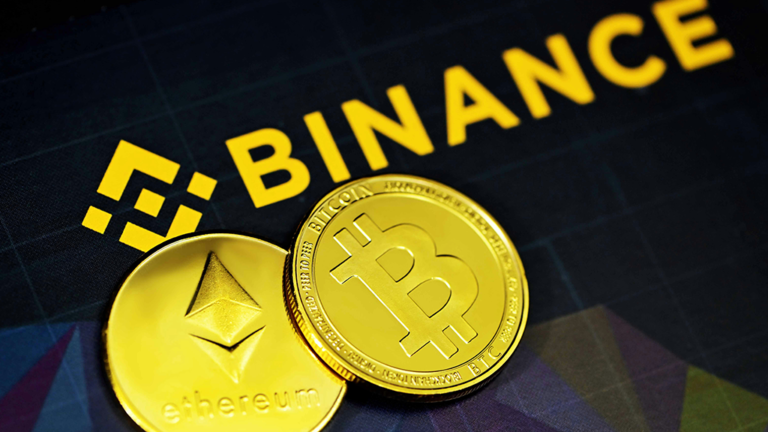
April 24, 2024: The United States Attorney’s Office for the Western District of Washington has filed a sentencing memorandum advocating for Changpeng Zhao’s 36-month prison term. This recommendation follows Zhao’s guilty plea to violating anti-money laundering laws.
The memorandum argues that the severity of the offense necessitates a sentence exceeding the federal sentencing guidelines, which typically suggest a maximum of 18 months imprisonment. Prosecutors contend that Zhao willfully disregarded US regulations, resulting in significant consequences.
Specifically, authorities allege that Binance failed to implement adequate safeguards to prevent money laundering activities. This lack of oversight reportedly facilitated over 100,000 suspicious transactions involving designated terrorist organizations. Additionally, concerns have been raised regarding the potential use of the platform for transactions involving child abuse materials.
In response to these accusations, Binance agreed to a hefty financial penalty of $4.32 billion as part of a settlement agreement reached last November. Furthermore, Zhao stepped down from his position as CEO of the company.
Despite these concessions, prosecutors maintain that a significant custodial sentence is warranted to deter future misconduct within the cryptocurrency industry. They emphasize the need to send a clear message regarding the seriousness of anti-money laundering regulations and the potential consequences for violators.
The court date for sentencing is scheduled for April 30th in Seattle. It remains to be seen whether the judge will accept the prosecution’s recommendation or opt for a more lenient sentence. This case has significant implications for the future of cryptocurrency regulation in the United States. It underscores the ongoing challenges of ensuring transparency and compliance within the digital asset space.
Also Read, Atlas Salt Inc. Releases Great Atlantic Salt Project under EPA Conditions
Atlas Salt Inc. Releases Great Atlantic Salt Project under EPA Conditions
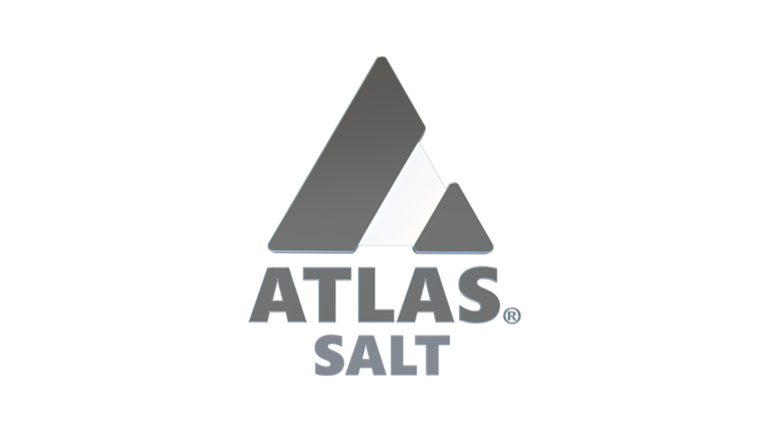
April 23, 2024: Atlas Salt Inc. is proud to announce a significant milestone for its Great Atlantic Salt Project. The Honourable Bernard Davis, Newfoundland and Labrador’s Minister of Environment and Climate Change, has released the proposed project from the provincial environmental assessment (EA) process. This decision, a crucial step in our journey, comes with a set of conditions that Atlas Salt is committed to satisfying before proceeding with development.
The press release highlights the project’s potential to bring economic growth to the region. The Great Atlantic Salt Project envisions the development of an underground salt mine on the west coast of Newfoundland, with a projected capacity of producing 2.5 million tonnes of rock salt annually for the North American de-icing market.
This positive development follows the release of a feasibility study by Atlas Salt in August 2023, outlining a 34-year mine life for the project. The study detailed plans for accessing the salt deposit via twin declines and employing a room and pillar method with continuous mining equipment for salt extraction. Processed salt would be crushed and screened within the mine before being transported to the surface via conveyor belts.
The press release emphasizes the project’s strategic advantages. Its location offers logistical benefits, while its environmental sustainability and economic viability are key selling points for potential investors. The company has already completed a greenhouse gas emissions study to validate the project’s low-carbon footprint.
However, the path forward for the Great Atlantic Salt Project is not without hurdles. The conditional release from the environmental assessment process signifies that the project must adhere to specific environmental regulations established by the provincial government. These conditions may involve measures to mitigate potential environmental impacts of the mine’s operation. The press release does not elaborate on the specific conditions the Ministry of Environment and Climate Change outlined.
Despite these conditions, Atlas Salt views the release from the environmental assessment process as a major step forward. The company now possesses the necessary clearance to pursue financing and construction and, ultimately, generate value for its stakeholders.
Industry analysts will be following the project’s progress with interest. The Great Atlantic Salt Project’s potential economic benefits for the region are undeniable. However, ensuring responsible development that prioritizes environmental protection will be crucial for the project’s long-term success. Atlas Salt’s ability to navigate the remaining regulatory hurdles and adhere to the environmental conditions will be a key factor in determining the project’s viability.
Also Read, Goldman Sachs Invests $47.5M in AI for Hospital Use
Goldman Sachs Invests $47.5M in AI for Hospital Use

April 22, 2024: In a move indicative of the growing prominence of Artificial Intelligence (AI) within healthcare, Goldman Sachs has made a significant investment in Kontakt.io, a company specializing in AI-powered hospital analytics. This $47.5 million Series C funding round signifies Goldman Sachs’ belief in the potential of AI to revolutionize hospital operations and patient care.
Kontakt.io’s core offering centers on an AI-driven platform that leverages real-time data collected through Internet of Things (IoT) sensors. These sensors gather information on the movement of patients, staff, and equipment within a hospital setting. The AI platform then analyzes this data, generating insights that can be used to optimize hospital workflows, improve resource allocation, and enhance patient safety.
Before the implementation of AI-powered solutions, hospital administrators primarily relied on manual data collection and analysis, a process that can be time-consuming and error-prone. Kontakt.io’s AI platform streamlines this process, offering real-time insights that can be readily utilized to improve hospital efficiency.
For instance, Kontakt.io’s technology can identify bottlenecks in patient flow, allowing hospitals to optimize staffing levels and reduce wait times. Additionally, the platform can track the location of critical equipment, ensuring its availability when needed. These operational efficiency improvements can translate into cost savings for hospitals and a more positive patient experience.
Goldman Sachs’ investment in Kontakt.io reflects a broader trend within the healthcare industry. Hospitals are increasingly recognizing the potential of AI to address longstanding challenges related to inefficiency, resource allocation, and patient care. The $47.5 million funding round signifies Goldman Sachs’ confidence in Kontakt.io’s ability to become a leader in this emerging field.
The successful implementation of AI solutions within hospital settings requires careful consideration of data privacy and security concerns. Kontakt.io emphasizes its commitment to adhering to strict data privacy regulations and ensuring the security of sensitive patient information.
The long-term impact of AI on healthcare delivery remains to be fully understood. However, Goldman Sachs’ investment in Kontakt.io underscores the potential of AI to play a transformative role in optimizing hospital operations and ultimately improving patient outcomes. Industry analysts will closely follow the development and implementation of Kontakt.io’s AI platform to gauge its effectiveness in achieving these goals.
Also Read, Abbott Exceeds Profit Estimates with Strong Medical Device Sales
Abbott Exceeds Profit Estimates with Strong Medical Device Sales
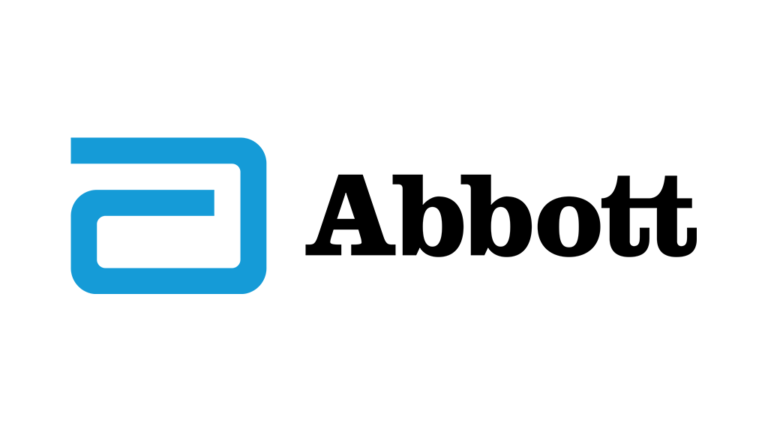
April 18, 2024: In a positive development for investors, Abbott Laboratories, a leading healthcare company, surpassed analysts’ expectations for quarterly profits. This achievement was credited to a significant surge in sales within the medical device sector.
Abbott’s financial performance for the first quarter, ending March 31st, 2024, revealed a company-wide revenue of $9.96 billion. This figure exceeded analyst predictions of $9.88 billion. On an adjusted basis, Abbott reported a quarterly profit of 98 cents per share, outperforming the average analyst estimate of 95 cents per share.
The primary driver behind Abbott’s robust financial performance was a marked increase in medical device sales. The company recorded total medical device sales of $4.45 billion, exceeding analyst expectations of $4.30 billion. A particularly noteworthy contributor to this growth was Abbott’s FreeStyle Libre continuous glucose monitoring device, which generated sales of $1.5 billion.
This upsurge in medical device sales can be attributed, in part, to a recent trend. With the COVID-19 pandemic receding, there has been a corresponding rise in demand for previously delayed medical procedures. This includes joint replacements and other surgeries that are reliant on Abbott’s medical device technology.
Abbott’s positive performance is not limited to exceeding quarterly profits. The company also revised its full-year profit forecast upwards. Previously, Abbott anticipated full-year earnings per share to range between $4.50 and $4.70. Due to the strong first-quarter results, the company has increased the lower end of that range to $4.55 per share, with the upper end remaining unchanged.
However, it is important to note that Abbott’s stock price experienced a slight decline of 3% during morning trading on the day the news was announced. This dip suggests that some investors might have been disappointed that the upward revision to the full-year forecast was not more substantial.
Overall, Abbott’s first-quarter performance reflects a positive trend within the healthcare sector. The company’s ability to capitalize on the rising demand for medical devices positions it for continued growth in the coming months.
Also Read, DataHorizzon Research Forecasts HEPA Filter Market at $4.6B by 2032
DataHorizzon Research Forecasts HEPA Filter Market at $4.6B by 2032

April 17, 2024: DataHorizzon Research anticipates the global HEPA filter market to achieve a valuation of USD 4.6 billion by the year 2032. This projection signifies a growth trajectory characterized by a compound annual growth rate (CAGR) of 4.1% over the forecast period. The market’s expansion in 2023 is attributed to a confluence of factors, most notably the escalating public concern surrounding air pollution.
The deterioration of air quality, driven by rising pollution levels, has served as a significant impetus for the demand for HEPA filters. Heightened awareness of the detrimental health effects of poor indoor air quality has further bolstered market growth. Particulate matter, encompassing dust, dirt, soot, smoke, and airborne liquid droplets, poses a substantial threat to human health, potentially leading to respiratory ailments, cardiovascular disease, and even lung cancer.
HEPA filters, designed to capture a high percentage of these airborne contaminants, are increasingly viewed as a vital tool for safeguarding indoor air quality. Their efficacy in eliminating these harmful particles from indoor environments translates into improved health outcomes for building occupants.
The growth of the HEPA filter market is also fueled by its expanding application across various industries. Beyond residential use in air purifiers, HEPA filters are increasingly being adopted within the industrial sector. Industries such as oil and gas, chemicals and petrochemicals, and food and beverage are incorporating HEPA filters into their air filtration systems. These filters effectively remove pollutants generated during production processes, mitigating the release of fine particles, odors, and volatile organic compounds (VOCs) into the surrounding air.
Looking ahead, the HEPA filter market is expected to maintain its upward trajectory. Stringent government regulations mandating stricter air quality standards are anticipated to contribute to market growth. Additionally, the rising disposable income levels observed in developing economies are likely to fuel consumer demand for air purifiers equipped with HEPA filters, further propelling market expansion.
DataHorizzon Research’s report provides valuable insights into the current dynamics and prospects of the global HEPA filter market. This comprehensive analysis equips industry stakeholders with the necessary information to make informed strategic decisions and capitalize on the anticipated market growth.
Also Read, General Motors, Bedrock to Redevelop Detroit HQ Towers
General Motors, Bedrock to Redevelop Detroit HQ Towers

April 16, 2024: In a significant development for Detroit’s urban landscape, General Motors (GM) announced plans to relocate its global headquarters and redevelop its current iconic waterfront location along the Detroit River on April 15th, 2024. The announcement signifies a collaborative effort between GM and Bedrock, a prominent Detroit real estate development firm.
This move represents GM’s strategic decision to establish its headquarters within a more modern and vibrant office environment. The company will relocate its operations to the Hudson’s Detroit development, a new high-rise complex currently under construction in downtown Detroit. This location offers a state-of-the-art workspace and fosters closer integration with the city’s core.
The redevelopment of GM’s current headquarters towers presents an exciting opportunity for Detroit’s ongoing revitalization. While details regarding the specific plans for the site are still under development, a joint effort between GM, Bedrock, the City of Detroit, and Wayne County will determine the future use of the location.
This collaboration between public and private entities signifies a commitment to maximizing the waterfront property’s potential. The redevelopment is expected to contribute to Detroit’s economic growth by attracting new businesses and residents to the city center.
The relocation to Hudson’s Detroit and the subsequent redevelopment of the current headquarters mark a new chapter for GM’s presence in Droit. The company has maintained a longstanding presence in the city, with its current headquarters towers serving as a symbol of Detroit’s automotive heritage for d ades. This move reflects GM’s continued commitment to Detroit while embracing a more contemporary and collaborative work environment.
The specific timeline for the relocation to Hudson’s Detroit and the commencement of the redevelopment project remains to be finalized. However, the announcement signifies a positive development for both GM and the city of Detroit. The relocation provides GM with a modern workspace, while the redevelopment holds the potential to revitalize a significant waterfront location and contribute to Detroit’s ongoing economic resurgence.
In conclusion, General Motors’ decision to relocate its headquarters and redevelop its current towers marks a pivotal moment for Detroit. This collaborative effort with Bedrock and local government entities signifies a commitment to both GM’s future and the city’s ongoing revitalization. The project presents an opportunity to create a vibrant new space on the Detroit waterfront and further solidify the city’s position as a center for innovation and economic growth.
Also read, Bitcoin Rises as Crypto Market Awaits Hong Kong ETF Decision
Bitcoin Rises as Crypto Market Awaits Hong Kong ETF Decision

April 15, 2024:The cryptocurrency market experienced a resurgence on Monday, April 15th, 2024, with Bitcoin (BTC) leading the charge. This positive price movement comes amidst heightened anticipation surrounding the potential approval of spot-traded Bitcoin exchange-traded funds (ETFs) in Hong Kong.
Following a weekend characterized by geopolitical tensions that caused a dip in the market, Bitcoin’s price climbed above $65,000 per unit. This upward trajectory aligns with a broader recovery observed across the cryptocurrency landscape. Ether (ETH), the second-largest cryptocurrency by market capitalization, also witnessed a price increase, surpassing the $3,100 mark.
Analysts attribute this market upswing to two primary factors. Firstly, the overall volatility in the cryptocurrency market appears to be subsiding. Recent geopolitical unrest, particularly the tensions between Iran and Israel, had triggered a sell-off in digital assets. However, as these concerns recede, investor confidence seems to be returning.
Secondly, and perhaps more significantly, the cryptocurrency market is eagerly awaiting a potential decision from Hong Kong regarding the approval of spot-traded Bitcoin ETFs. These financial instruments would allow investors to gain exposure to Bitcoin’s price movements without the complexities of directly owning and storing the digital asset.
According to industry experts, the introduction of spot-traded Bitcoin ETFs in Hong Kong could unlock significant new capital inflows into the cryptocurrency market. Analysts at Matrixport, a digital asset financial services company, estimate that such ETFs could attract up to $25 billion in investment.
This potential influx of capital is seen as a positive catalyst for Bitcoin’s price, as increased demand typically leads to higher prices. Hong Kong’s move towards approving these ETFs also signifies a growing acceptance of cryptocurrencies within the mainstream financial sector. This regulatory recognition could further bolster investor confidence and contribute to the long-term growth of the cryptocurrency market.
However, it is important to note that the approval of spot-traded Bitcoin ETFs in Hong Kong is not guaranteed. Regulatory bodies still need to make a final decision, and the timeline for this remains uncertain. Additionally, the broader economic climate and ongoing geopolitical developments could still influence market sentiment and impact Bitcoin’s price in the coming days and weeks.
In conclusion, Bitcoin’s recent price recovery reflects a combination of subsiding geopolitical tensions and the positive anticipation surrounding the potential approval of spot-traded Bitcoin ETFs in Hong Kong. If these ETFs are indeed greenlit, they could inject significant new capital into the cryptocurrency market and contribute to further price appreciation for Bitcoin. However, investors should remain cautious and conduct thorough research before making any investment decisions in the volatile cryptocurrency market.
Additional U.S. Regulators Join Morgan Stanley Probe
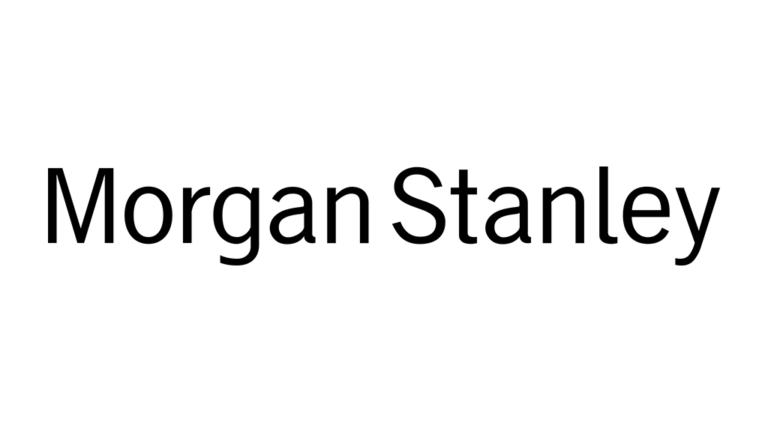
April 12, 2024: The regulatory landscape surrounding Morgan Stanley’s wealth management division continues to shift, with additional government agencies joining the ongoing investigation. This development comes after a Wall Street Journal report revealed that three more U.S. regulatory bodies scrutinize the division’s practices.
Previously, the Federal Reserve had been the sole regulator investigating Morgan Stanley’s wealth management unit. This initial probe focused on the firm’s money laundering controls. However, the recent Wall Street Journal report suggests that the scope of the investigation has broadened considerably.
According to the report, the Securities and Exchange Commission (SEC), the Office of the Comptroller of the Currency (OCC), and a division of the U.S. Treasury Department are now actively involved in the investigation. This collective effort signifies a more comprehensive examination of Morgan Stanley’s wealth management practices.
The SEC is reportedly concerned about Morgan Stanley’s thoroughness in vetting certain high-net-worth clients. The Wall Street Journal specifically cited a billionaire with connections to Russia who has faced sanctions from the United Kingdom as a potential source of concern for the SEC.
On the other hand, the OCC appears to be focused on ensuring that Morgan Stanley is adhering to adequate customer due diligence (CDD) protocols. CDD is a critical regulatory requirement that obligates financial institutions to verify their clients’ identities and assess their potential risks.
While the specific details of the investigation remain confidential, these developments highlight potential concerns regarding Morgan Stanley’s client onboarding procedures and the potential for exposure to money laundering activities. The involvement of the Treasury Department suggests that the investigation might extend beyond traditional securities regulations and delve into potential violations of anti-money laundering (AML) laws.
Morgan Stanley has not publicly commented on the expanded investigation. However, in January 2024, the firm settled charges related to leaked confidential information within its block trading business, incurring a penalty of $249 million. This prior incident underscores regulatory sanctions’ potential financial and reputational ramifications.
The ongoing investigation is poised to cast a long shadow over Morgan Stanley’s wealth management division in the foreseeable future. Investors and industry observers will be on high alert for any further developments, particularly those that illuminate the alleged shortcomings and the potential consequences for the company. The outcome of this investigation could reverberate across the wealth management industry, potentially leading to heightened regulatory scrutiny and more stringent compliance requirements.
Also Read, JPMorgan Argues High Rates Drive Inflation
JPMorgan Argues High Rates Drive Inflation

April 11, 2024: JPMorgan Chase, a leading global financial institution, has presented a counterintuitive perspective on the current economic climate. In a recent shareholder letter, the company’s CEO, Jamie Dimon, argued that rising interest rates, a traditional tool for combating inflation, might be exacerbating the problem in the short term.
This viewpoint stands in contrast to the prevailing economic orthodoxy. Central banks worldwide, including the U.S. Federal Reserve, have been aggressively raising interest rates to curb inflation. The underlying rationale is that higher borrowing costs will dampen economic activity and consumer spending, ultimately leading to a decrease in demand and a subsequent decline in prices.
However, Dimon suggests that the current economic landscape presents unique challenges. He emphasizes the significant role of supply chain disruptions and geopolitical tensions in driving up prices of essential commodities like energy and food. According to Dimon, these factors are external to the traditional demand-driven inflation typically addressed by interest rate hikes.
Furthermore, Dimon argues that higher interest rates can incentivize businesses to hold onto existing inventories rather than restocking, potentially exacerbating supply chain bottlenecks. He highlights the potential for higher borrowing costs to constrain investment, hindering economic growth and productivity—factors that could contribute to long-term inflationary pressures.
JPMorgan’s analysis does not advocate for abandoning interest rate hikes altogether. However, it does call for a nuanced approach that acknowledges the complex interplay of factors contributing to inflation in the current environment. The bank suggests that central banks may need to carefully calibrate their monetary policy strategies to address both near-term inflationary pressures and the potential for hindering long-term economic growth.
Dimon’s perspective has sparked a lively debate within the financial and economic communities. Some economists endorse his concerns, urging central banks to proceed cautiously with further rate increases. Others maintain that controlling inflation remains the paramount objective, even if it necessitates a short-term economic slowdown.
The coming months will be crucial in determining the effectiveness of central bank actions in combating inflation. The data and economic indicators released shortly will be closely monitored to assess the impact of rising interest rates and shed light on the validity of JPMorgan’s counterintuitive stance.
South Korea ‘s Jobless Claims Drop 9.1% in March

April 10, 2024: In a significant development, South Korea ‘s labor market showed signs of improvement in March 2024, with a substantial decrease in individuals filing new unemployment claims. The data released by the Ministry of Employment and Labor on April 8th, 2024, revealed a noteworthy 9.1% drop in jobless claims compared to the same month in the previous year.
This decrease represents a continuation of a positive trend, marking the second consecutive month of double-digit declines in unemployment claims. In February 2024, jobless claims had already witnessed a significant drop.
The data revealed that 130,800 individuals filed new applications for job-seeking benefits in March 2024. This figure stands in contrast to the 144,000 claims submitted during March 2023. The decline was attributed to decreased demand for workers within specific sectors.
The Ministry of Employment and Labor highlighted reducing job openings within the education service, manufacturing, wholesale, and retail sectors as contributing factors to fewer jobless claims. However, it is important to note that some sectors, such as finance and insurance and information and communication, continued to experience an increase in job applications.
The report also indicated a positive trend in individuals receiving unemployment benefits. The total number of benefit recipients in March 2024 dipped by 3.0% year-on-year, reaching 654,600. This marked the first time in fourteen months that the number of benefit recipients had declined.
Furthermore, the total amount of money disbursed in job-seeking benefits decreased by 6.2% compared to March 2023. The total expenditure on these benefits amounted to 969.6 billion won (approximately 716.7 million USD) in March 2024.
The decline in jobless claims suggests a potential South Korean labor market improvement. However, it is crucial to acknowledge that these figures represent a single month’s data. Continued monitoring and analysis are necessary to determine if this trend is sustainable and reflects a broader positive shift in the job market.
Also Read, Verizon Partners With NASA for Solar Eclipse Broadcast
Verizon Partners With NASA for Solar Eclipse Broadcast

April 9, 2024: Telecommunications giant Verizon has joined forces with the National Aeronautics and Space Administration (NASA) to facilitate a live broadcast of the upcoming total solar eclipse. This collaborative effort leverages Verizon’s robust network infrastructure to transmit multiple video feeds across the United States, capturing the celestial event in real time for viewers worldwide.
Verizon Business, a key player in this endeavor, has successfully established a 1GB E-Line service between the Great Lakes Science Center in Cleveland, Ohio, and the John Glenn Space Center in Cleveland. This critical infrastructure upgrade, completed within less than 30 days, empowers NASA to thoroughly test video and broadcast applications prior to the eclipse.
The enhanced network connectivity allows seamless video feed integration into a unified broadcast. Viewers can expect to witness the eclipse from diverse perspectives, encompassing telescopic views captured by astronomers and live commentary provided by broadcast professionals. This comprehensive approach ensures a captivating and informative experience for global audiences.
Verizon’s involvement in this project extends beyond technical expertise. The company is committed to fostering public interest in science and space exploration. By facilitating a live solar eclipse broadcast, Verizon empowers individuals worldwide to witness this awe-inspiring astronomical phenomenon firsthand.
The upcoming solar eclipse on April 8th, 2024, presents a unique scientific observation and public engagement opportunity. Verizon’s collaboration with NASA ensures that this celestial event is witnessed by professional astronomers and shared with a global audience in real time. This partnership exemplifies the potential for collaboration between the public and private sectors to advance scientific understanding and spark public interest in space exploration.
Also Read, Butler Industries Joins Onepoint in Atos Rescue Consortium
Butler Industries Joins Onepoint in Atos Rescue Consortium
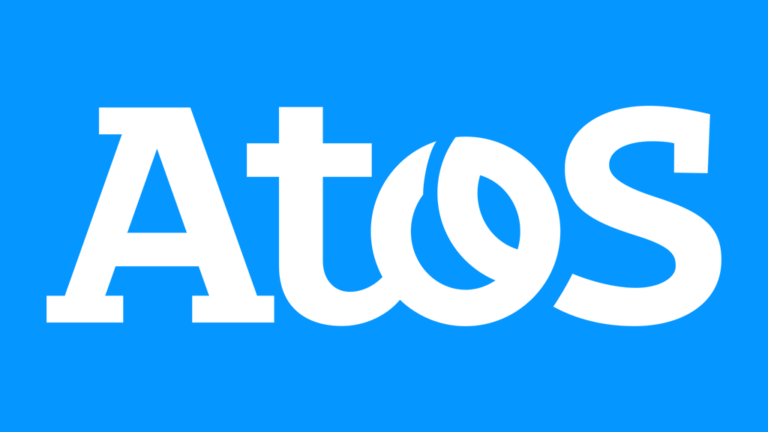
April 8, 2024: Struggling French IT services giant Atos received a potential lifeline with the announcement that investment firm Butler Industries is joining forces with Onepoint, Atos’s largest shareholder. This consortium aims to formulate a rescue plan to prevent Atos from collapsing due to its significant debt burden.
Onepoint, which currently holds an 11.4% stake in Atos, previously announced its intention to lead a restructuring effort. Butler Industries’ addition to the consortium strengthens this initiative. Financial details regarding Butler Industries’ involvement have not been made public.
The consortium’s overarching goal is to revitalize Atos and establish it as a preeminent European player in digital technology, cybersecurity, and artificial intelligence. Additionally, the plan seeks to solidify Atos’s position as Europe’s leading provider of sovereign cloud services, a type of cloud computing infrastructure controlled by a government.
Onepoint’s CEO, David Layani, expressed his satisfaction with Butler Industries’ participation, highlighting the firm’s experience in restructuring operations. He stated that Butler Industries’ involvement strengthens the “OneAtos” project, the official name for the consortium’s rescue plan.
Atos is currently grappling with nearly $5 billion in debt and has been engaged in ongoing discussions with its creditors to restructure its finances. The company is scheduled to hold a call with its creditors on April 8th, 2024, to discuss these efforts further.
The news of Butler Industries joining the rescue consortium resulted in a positive reaction from Atos’s investors. The company’s shares experienced a surge of over 25% in morning trading on the Paris Bourse. This significant rise in share price reflects investor optimism regarding the potential success of the consortium’s rescue plan.
The addition of Butler Industries to the consortium injects a dose of optimism into Atos’ future. The combined expertise of Onepoint and Butler Industries and the restructuring plan they intend to unveil by the end of April 2024 offers hope for Atos’s recovery.
SLB Acquires ChampionX for $7.8B, Evercore ISI Optimistic

April 5, 2024: In a move indicative of consolidation within the North American energy sector, Schlumberger Limited (SLB) announced the acquisition of its competitor, ChampionX Corporation (CHX), on April 2nd, 2024. The all-stock transaction is valued at approximately $7.75 billion.
ChampionX shareholders will receive 0.735 shares of SLB common stock for each CHX share, translating to a price of $40.59 per share. This represents a premium of 14.6% over ChampionX’s closing stock price on the day before the announcement. Schlumberger’s most significant purchase since its $14.8 billion acquisition of Cameron International in 2016.
Analysts at Evercore ISI view the acquisition favorably. They note that the deal will enable Schlumberger to enhance the efficiency of its customers’ well production and reservoir recovery processes. Additionally, the acquisition expands Schlumberger’s exposure to the growing and less cyclical production segment within the global energy market. This aligns with Schlumberger’s focus on delivering strong returns and maintaining a capital-light business model.
The transaction follows a trend of consolidation within the North American energy sector. Companies are increasingly seeking to streamline operations and address challenges related to both operational efficiency and pricing pressures. This acquisition positions Schlumberger to offer a wider range of services across the oil and gas production lifecycle.
Market observers are keenly interested in this deal’s potential effects on the broader energy market. While the specific details regarding cost savings and operational synergies remain undisclosed, the acquisition is likely to have a lasting impact on the competitive landscape. Further details regarding the integration plans and potential cost savings could provide a clearer picture of Schlumberger’s long-term benefits.
Despite analysts’ positive outlook, the success of the acquisition will ultimately hinge on Schlumberger’s ability to effectively integrate ChampionX’s operations and leverage the combined expertise to deliver enhanced value to its customers.
Fluent (NASDAQ: FLNT) Receives Analyst Coverage from StockNews.com

April 2, 2024: Fluent Corporation (NASDAQ: FLNT), a prominent participant in the performance marketing industry, has garnered initial coverage from StockNews.com’s equities analysts. This development signifies a growing interest in Fluent’s operations and prospects within the financial analyst community.
The StockNews.com report issued a neutral “hold” rating on Fluent’s stock. While the report acknowledges Fluent’s established position within the performance marketing sector, it also highlights the company’s competitive landscape and potential challenges.
Specifically, the report cites the ever-evolving nature of the digital advertising landscape as a key factor to consider. Fluent’s ability to adapt its strategies and technologies to keep pace with these changes will be crucial for maintaining its market share and achieving continued growth.
The report also acknowledges Fluent’s recent financial performance. The company reported revenue of $72.8 million for the fourth quarter of 2023 and $298.4 million for the full fiscal year. However, Fluent also incurred a net loss of $1.9 million for the quarter and $63.2 million for the full year. StockNews.com emphasizes the need for Fluent to improve its profitability metrics to enhance investor confidence.
The StockNews.com report outlines several factors that could influence Fluent’s future performance. These factors include:
- The effectiveness of Fluent’s ongoing efforts to expand its product and service offerings.
- The company’s success in navigating the evolving regulatory environment surrounding data privacy and online advertising.
- The overall health of the performance marketing industry and its susceptibility to broader economic trends.
The initiation of coverage by StockNews.com broadens Fluent’s analyst landscape. Investors now have access to additional insights and perspectives when evaluating Fluent’s stock. However, it is important to remember that this is just a single analyst opinion, and investors should conduct their own comprehensive analysis before making any investment decisions concerning Fluent or any other company.
AirAsia’s Capital A, Trip.com Expand Partnership

April 1, 2024: Capital A Berhad, the parent company of low-cost carrier AirAsia, has announced a significant expansion of its strategic partnership with Trip.com Group, a leading online travel service provider headquartered in China. This comprehensive collaboration signifies a new chapter in the two companies’ relationship, fostering deeper cooperation across various aspects of the travel industry.
The expanded partnership builds upon an initial agreement established in 2020. This prior agreement focused on promoting AirAsia flights and ancillary services on Trip.com Group’s online platforms. The new agreement, however, encompasses a broader and more multifaceted approach.
Firstly, the expanded partnership aims to leverage the extensive networks of both companies to enhance customer reach. AirAsia’s substantial presence in Southeast Asia will be strategically combined with Trip.com Group’s vast user base in China, fostering increased travel opportunities for customers in both regions.
Secondly, the agreement extends beyond promoting AirAsia flights. Trip.com Group will now offer its users access to a wider range of travel products and services associated with Capital A’s ecosystem. This includes hotels managed by AirAsia’s sister company, Teleport, and activities, attractions, and ride-hailing options facilitated by the airasia.com platform. This comprehensive offering allows Trip.com Group users to conveniently plan and book their travel experience through a single platform.
Thirdly, the collaboration extends into technological innovation. Both companies have expressed a commitment to developing and implementing technological solutions that streamline operations and enhance the travel experience. While the specifics of these technological advancements have not been disclosed, they suggest a potential focus on areas such as data integration, personalized recommendations, and seamless booking processes.
This expanded partnership holds significant potential benefits for Capital A and Trip.com Group. Capital A gains a powerful platform to reach a broader audience, particularly within the lucrative Chinese travel market. Trip.com Group, in turn, strengthens its offerings by providing customers with a wider variety of travel options and a more holistic travel booking experience.
The deepening collaboration between Capital A and Trip.com Group reflects a growing trend within the travel industry. Companies are increasingly recognizing the value of strategic partnerships to expand their reach, optimize offerings, and cater to the evolving needs of travelers in a globalized world.
Also Read, WeWork Co-founder Adam Neumann’s $500M Buyback Bid
WeWork Co-founder Adam Neumann’s $500M Buyback Bid

March 28, 2024: In a surprising turn of events, Adam Neumann, the co-founder of WeWork who was ousted in 2019, has reportedly submitted a bid to reacquire the company as it emerges from bankruptcy. The details surrounding Neumann’s offer remain undisclosed, but estimates suggest it surpasses $500 million.
Neumann’s tenure at WeWork was marked by meteoric growth and significant controversy. Under his leadership, WeWork became the world’s largest provider of co-working spaces, valued at a staggering $47 billion at its peak. However, concerns regarding WeWork’s business model and Neumann’s management style ultimately led to a dramatic fall from grace. The company’s initial public offering was scrapped, and Neumann was forced to step down amidst mounting financial pressures.
WeWork subsequently filed for Chapter 11 bankruptcy protection in 2019. The company has since undergone significant restructuring, focusing on streamlining operations and achieving profitability. Current creditors are expected to maintain company control after it exits bankruptcy.
Neumann’s proposition to regain control of WeWork has sparked a range of responses from industry observers. Some perceive it as a daring gamble, given Neumann’s previous leadership style. On the other hand, there are those who see his entrepreneurial drive and deep understanding of the industry as potential catalysts for WeWork’s revival.
It’s crucial to bear in mind that Neumann’s bid is just one of several options being considered. The ultimate verdict on WeWork’s future ownership will be delivered by the company’s creditors in collaboration with the bankruptcy court, adding a layer of unpredictability to the situation.
This unexpected development adds a new layer of intrigue to WeWork’s ongoing saga. Whether Neumann’s bid is successful remains to be seen, but it undoubtedly raises questions about the company’s future direction and ability to overcome past challenges.
Sunlife Retains Position as Top PH Insurer
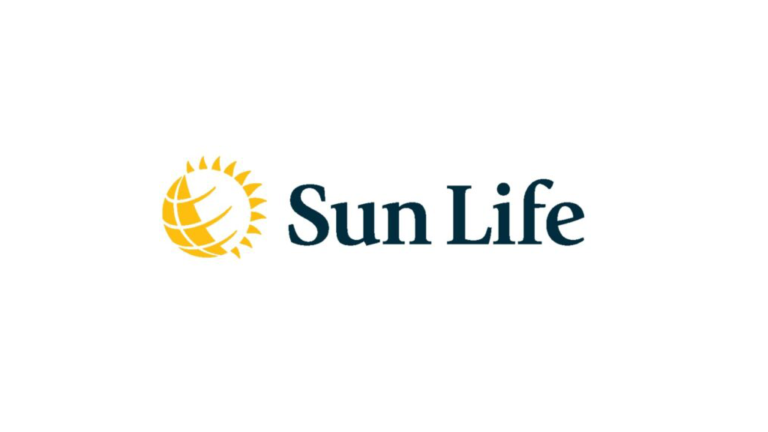
March 26, 2024: SunLife of Canada (Philippines) Inc. was confirmed to have retained its position as the leading life insurance company in the Philippines for the thirteenth consecutive year. This achievement was secured through the company’s impressive performance in 2023, demonstrably reflected in its total premium income.
According to a report by the Insurance Commission, compiled from unaudited quarterly reports submitted by life insurance companies operating within the Philippines, Sun Life Philippines garnered a total premium income of P55.79 billion in 2023. This figure solidified the company’s dominance within the life insurance market.
Sun Life Philippines’ leadership extended beyond its premium income. The company also ranked top in total assets, accumulating a substantial P306.33 billion by the end of 2023. Furthermore, their net annual income reached P8.79 billion, showcasing their robust financial health.
In a statement released by Sun Life Philippines, Chief Executive Officer and Country Head Benedict Sison attributed the company’s continued success to their clients’ unwavering trust. He emphasized Sun Life’s commitment to empowering Filipinos to secure a brighter future for themselves and their loved ones.
Sun Life Philippines’ sustained leadership within the Philippine life insurance market signifies the company’s ability to effectively cater to the needs of its policyholders. Their consistent performance underscores their position as a reliable and trusted partner for Filipinos seeking financial security.
Trial Holdings Surges 29% Post Japan’s Biggest 2024 IPO

March 22, 2024: Trial Holdings Inc., a leading operator of discount supermarkets in Japan, experienced a significant surge in its share price following its highly anticipated initial public offering (IPO). This stellar debut marks the largest IPO in Japan for 2024 and underscores investor enthusiasm for the company’s growth prospects within the discount retail sector.
Trial Holdings successfully raised ¥38.85 billion (approximately USD 256 million) by selling 22.85 million shares at ¥1,700 (USD 11.33) per share, the upper end of the marketed price range. This capital infusion will empower Trial Holdings to accelerate its expansion plans and potentially strengthen its market position in the competitive Japanese retail landscape.
On Thursday, the day of its listing on the Tokyo Stock Exchange (TSE) Growth Market, Trial Holdings’ stock price witnessed a notable rise. The stock opened at ¥1,700 per share and peaked at ¥2,491 (USD 16.54) during the trading session, reflecting a nearly 47% increase from its IPO price. While the share price moderated slightly towards the close, it ultimately ended the day at ¥2,200 (USD 14.67), representing a remarkable 29.41% gain from its IPO price.
This strong market debut can be attributed to several factors. Firstly, Trial Holdings boasts a well-established presence within the Japanese discount retail sector, operating over 280 stores across the country. The company’s focus on offering a wide range of products at competitive prices resonates with budget-conscious consumers, particularly amidst a period of rising inflation in Japan.
Secondly, Trial Holdings’ proven track record of profitability and strong financial performance make it an attractive proposition for investors seeking exposure to Japan’s growing discount retail segment. The company’s successful IPO signifies investor confidence in its business model and ability to navigate the competitive retail landscape.
Thirdly, the broader economic climate in Japan has witnessed an increased focus on value-driven shopping. Consumers are becoming more price-sensitive, and discount retailers like Trial Holdings are well-positioned to capitalize on this trend. This presents a favorable opportunity for Trial Holdings to expand its customer base and solidify its market share.
The long-term trajectory of Trial Holdings’ stock price will depend on the company’s ability to execute its growth strategy. Successful store expansion, effective inventory management, and a strong customer value proposition will be crucial for Trial Holdings to sustain its current valuation and deliver consistent returns to its shareholders. The company’s performance in the coming quarters will be closely monitored as it competes within the dynamic Japanese retail sector.
GRVT Announces Fundraise, Launches Private Beta
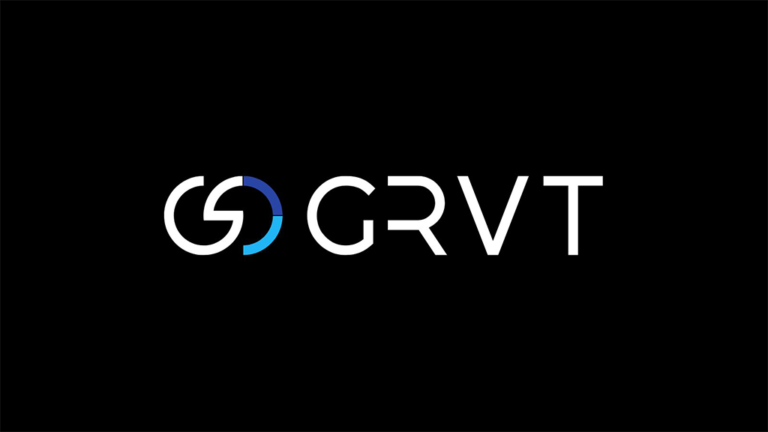
March 20, 2024: GRVT, a trailblazing hybrid cryptocurrency exchange, has recently announced a successful strategic funding round and the launch of its private beta platform. These developments underscore the growing market interest in GRVT’s innovative approach to digital asset trading.
The funding round, a strategic move that secured $2.2 million, has raised GRVT’s total capital to $9.3 million. This significant influx of investment signifies strong investor confidence in GRVT’s long-term vision and its potential to disrupt the cryptocurrency exchange landscape.
The funding round attracted participation from prominent industry players, including major trading firms and market makers such as QCP Capital, Selini Capital, Antelope, Pulsar Trading, and Ampersand. These established names’ involvement lends further credence to GRVT’s technology and business strategy.
GRVT differentiates itself by combining traditional centralized exchange (CEX) infrastructure with blockchain technology’s security and transparency benefits. This hybrid model leverages off-chain order matching for speed and efficiency while relying on on-chain settlements for immutability and trust.
This innovative approach is designed to deliver superior transaction speeds. GRVT aims to achieve a processing capacity of up to 600,000 transactions per second (TPS) with single-digit millisecond latency, surpassing the capabilities of many existing cryptocurrency exchanges.
The launch of GRVT’s private beta, an exclusive opportunity, marks a crucial milestone towards the official launch of its main net platform. This initial phase allows a select group of industry influencers and partners to test the platform’s functionality and provide valuable feedback.
Following a successful private beta period, GRVT plans to gradually open access to the platform to a wider pool of community testers. This phased approach ensures a smooth and efficient rollout of the exchange and allows GRVT to address any potential issues before a full public launch.
GRVT’s strategic funding round and private beta launch coincide with heightened interest in hybrid cryptocurrency exchanges. Investors and traders are increasingly seeking solutions combining traditional CEX functionality’s benefits with the security advantages of blockchain technology.
Looking ahead, GRVT will focus on refining its platform during the private beta phase and expanding its community outreach. The successful execution of these initiatives will be critical for GRVT to establish itself as a leading player in the evolving cryptocurrency exchange ecosystem.
Appeals Court Resurrects Regeneron’s Lawsuit vs. Novartis
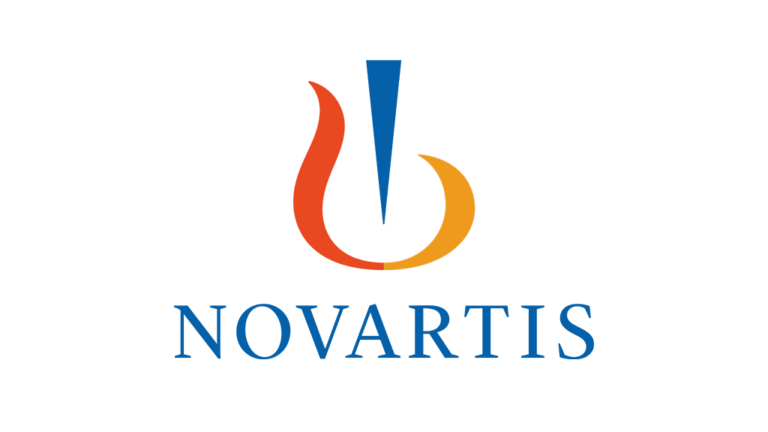
March 19, 2024: The U.S. Court of Appeals for the Second Circuit has made a pivotal decision, breathing new life into a major antitrust lawsuit initiated by Regeneron Pharmaceuticals Inc. (REGN) against Novartis AG (NVS). This turn of events reignites a legal clash involving allegations of anticompetitive practices in the prescription eye medication market, setting the stage for a high-stakes legal battle.
Regeneron’s lawsuit, filed in 2020, levels serious accusations against Novartis. It claims that Novartis employed tactics to delay the market entry of Regeneron’s Eylea PFS, a prefilled syringe version of its established eye drug Eylea. The lawsuit further alleges that Novartis, which markets a competing product called Lucentis, used a patent on prefilled syringe technology to stifle competition. In a shocking twist, Regeneron also accuses Novartis of colluding with a contract manufacturer, Vetter Pharma International GmbH, to further restrict Regeneron’s access to this technology.
A lower court’s initial dismissal of the lawsuit in 2022 hinged on its determination that Regeneron had not adequately defined the relevant product market. However, the appeals court disagreed with this assessment. In its ruling, the court acknowledged the complexity of the market for ophthalmic drugs but concluded that Regeneron’s definition, focusing on prefilled syringes containing anti-VEGF medications for specific eye disorders, was sufficiently precise for antitrust purposes.
This appeals court decision paves the way for the lawsuit’s continuation. Regeneron will now have the opportunity to present its case in full, outlining Novartis’s alleged anticompetitive conduct and seeking damages for any harm suffered.
The legal battle between these two pharmaceutical giants has significant implications for the healthcare industry. A successful outcome for Regeneron could establish a precedent for deterring similar anticompetitive practices and promoting fair competition in developing and marketing essential medications.
Industry observers and legal experts will closely monitor the progress of this lawsuit. The outcome could influence pharmaceutical companies’ behavior regarding product development and market competition, potentially impacting the accessibility and affordability of critical drugs for patients.
This case underscores the ongoing scrutiny of anticompetitive practices within the pharmaceutical industry. Regeneron’s revived lawsuit reminds us of the importance of upholding fair competition to ensure patients have access to a variety of treatment options.
Also Read, Liberal Discontent Grows Over Fed ‘s 2% Inflation Target
Liberal Discontent Grows Over Fed ‘s 2% Inflation Target
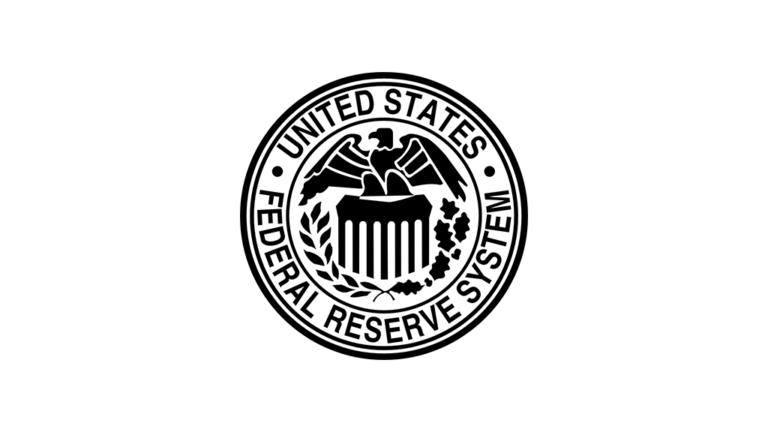
March 18, 2024: The Federal Reserve’s (Fed) long-held inflation target of 2% is being increasingly criticized by prominent liberal voices on the economic spectrum. These critics argue that this target may need to be more relaxed and hinder efforts to achieve full employment and equitable economic growth.
The Fed uses various monetary policy tools, such as interest rates, to influence inflation and economic activity. Its 2% annual inflation target maintains price stability while promoting moderate economic growth. However, some liberal economists contend this target may no longer be appropriate in the current economic climate.
One compelling argument favoring a slightly higher inflation target is the potential for significant benefits. Advocates of this approach propose that a target closer to 3% could enable the Fed to sustain lower interest rates for an extended period. This could ignite economic growth and foster a more favorable environment for wage increases, particularly benefiting low-income workers.
Another area of concern is the historical context in which the 2% target was established. This target was adopted in the early 1990s, characterized by relatively low inflation and a focus on price stability. Critics argue that economic conditions have changed significantly since then, and the target may not adequately address the challenges of the current era, such as income inequality and sluggish wage growth.
The Fed is aware of the ongoing debate surrounding its inflation target. While it has not indicated an immediate change, Fed officials have expressed a readiness to review the target in light of evolving economic circumstances. This signals a potential for future adjustments, although the exact timing and nature of such changes remain uncertain.
The debate over the inflation target is not just a technical discussion but a crucial dialogue about the Fed’s overall monetary policy framework. Some liberal economists advocate for a more expansive approach that prioritizes not just price stability, but also full employment and inclusive economic growth. The Fed will likely face continued pressure to consider these alternative perspectives as it navigates the complexities of the current economic landscape, making this debate significant for all stakeholders.
Looking ahead, financial markets and policymakers alike will closely monitor the Fed’s monetary policy decisions, particularly regarding its inflation target. The outcome of this debate can potentially influence economic conditions for workers, businesses, and consumers for years to come.
Fleet Unveils World’s Tiniest SATCOM Demonstration

March 15, 2024: Fleet Space Technologies, an Australian company focused on miniaturized satellite technologies, has achieved a significant milestone. The company recently successfully demonstrated Centauri-4, a satellite it claims is the world’s smallest operational Satellite Communication (SATCOM) device currently in orbit.
This achievement signifies a remarkable leap in satellite technology’s miniaturization. Centauri-4, a satellite comparable in size to a shoebox, is a tiny marvel and a voice communication powerhouse. In a live demonstration hosted by the Defence Science and Technology Group (DSTG), Fleet successfully updated Centauri-4’s software while in low-Earth orbit, enabling push-to-talk (PTT) functionalities for the Australian Defence Force (ADF).
PTT allows instant voice communication between connected devices with the simple push of a button, a critical capability for military operations. Centauri-4’s successful demonstration of this technology underscores the potential of miniaturized satellites to fulfill crucial communication needs in various sectors, not just the military.
Centauri-4 builds upon communication technology previously developed through a collaborative research project funded by the SmartSat Cooperative Research Centre. This project, “Beagle,” focused on creating a streamlined waveform specifically designed for use with miniaturized satellites. The successful integration of “beagle” into Centauri-4 demonstrates the value of collaborative research efforts in driving technological innovation.
Fleet Space is keen to underline that Centauri-4 is not just a technological feat but also a game-changer regarding accessibility. The company envisions a future where these smaller, more affordable satellites open space for various organizations and applications. This could include scientific research, environmental monitoring, and even disaster relief operations in remote areas.
However, successfully deploying and operating these smaller satellites is not possible without hurdles. Limited power generation capacity and data transmission bandwidth limitations pose significant technical challenges. Moreover, ensuring their resilience in the harsh space environment is critical for their long-term functionality.
Despite these challenges, Fleet Space’s achievement with Centauri-4 signifies a significant step forward in miniaturized satellite technology. This technology has vast potential benefits, particularly its affordability and broader accessibility. The successful demonstration has garnered considerable attention within the aerospace industry, and future developments in this field will be closely monitored.
SkyDrive Initiates Construction of Initial eVTOL Model

March 13, 2024: Japanese flying car developer SkyDrive has initiated a crucial step towards realizing its vision for urban air mobility. The company recently announced the commencement of construction on the very first prototype of its SD-05 eVTOL (electric vertical takeoff and landing) aircraft.
This development signifies a significant milestone for SkyDrive, marking the tangible transition from design and planning to physical creation. The SD-05 is envisioned as a three-seater eVTOL designed for personal and commercial applications.
The construction process is being undertaken in collaboration with Suzuki Motor Corporation, a prominent Japanese automaker. Suzuki is leveraging its manufacturing expertise to establish a dedicated production line for the SD-05 prototype at its factory in Iwata City. This partnership highlights the growing convergence between traditional automotive companies and the burgeoning eVTOL industry.
The production facility boasts the capacity to assemble up to 100 SD-05 aircraft annually, laying the groundwork for future mass production. However, SkyDrive emphasizes that the immediate focus remains on completing the prototype in time for the 2025 Osaka World Expo.
Participation in the World Expo presents an opportunity for SkyDrive to showcase the SD-05’s capabilities and garner public interest in eVTOL technology. Additionally, it will allow the company to secure the necessary permits for conducting public test flights within Japan.
While specific details regarding the construction timeline haven’t been disclosed, SkyDrive has confirmed its commitment to achieving provisional airworthiness approval for the SD-05 by the time of the World Expo. This signifies a critical step towards ensuring the aircraft meets rigorous safety standards established by regulatory authorities.
The successful construction and certification of the SD-05 prototype will pave the way for further development and testing. SkyDrive envisions a future where eVTOLs revolutionize urban transportation, offering efficient and environmentally friendly solutions for short-distance travel within congested cities.
Looking ahead, the progress of SkyDrive’s SD-05 program will be closely monitored within the eVTOL industry. The successful completion of the prototype and its performance during test flights will be instrumental in determining the viability of SkyDrive’s vision for urban air mobility.
Faruqi & Faruqi , LLP Probes Investor Claims in Ongoing NYCB Investigation

March 7, 2024: Faruqi & Faruqi, LLP, a reputable law firm, diligently investigates potential securities violations by New York Community Bancorp (NYCB). This investigation focuses on claims from investors who incurred losses after purchasing NYCB stock or options.
Investors are urged to act swiftly, as they have a limited time until April 8, 2024, to potentially become the lead plaintiff in a class action lawsuit. To be eligible, they must have purchased NYCB securities between March 1, 2023, and February 5, 2024, and incurred losses exceeding $100,000.
The investigation stems from NYCB’s disclosures on January 31, 2024, which revealed a staggering surge in loan loss provisions, from $62 million to $552 million compared to the previous quarter. This led to a substantial financial setback for the company in Q4 2023. Furthermore, NYCB reduced its quarterly dividend from $0.17 to $0.05 per share, potentially impacting investors’ financial positions.
Following these announcements, NYCB’s stock price fell nearly 38%. Faruqi & Faruqi allege that NYCB may have withheld important information about its financial health, potentially misleading investors.
It’s important to note that this investigation doesn’t mean NYCB did anything wrong. The legal process will involve thoroughly examining all evidence before conclusions are reached.
Investors who believe they may be eligible to participate in the lawsuit are encouraged to contact Faruqi & Faruqi, LLP. The firm emphasizes the importance of meeting the April 8 deadline to be considered for the lead plaintiff position.
Also Read, Super Micro Computer Director Offloads $4.37M in Company Stock
Super Micro Computer Director Offloads $4.37M in Company Stock

March 6, 2024: In a filing disclosed on Monday, Sherman Tuan, a key director at Super Micro Computer (NASDAQ: SMCI), a leading provider of artificial intelligence server technology, has sold off approximately $4.37 million worth of company shares. The reasons behind this divestiture remain undisclosed.
Director stock sales can offer insights into potential insider sentiment regarding a company’s prospects, potentially impacting the company’s stock performance. However, it is crucial to interpret such information with caution. Several factors can motivate an insider to sell stock, and these decisions may not necessarily reflect a negative outlook on the company’s overall health.
That being said, this divestiture’s specific timing and size warrant some consideration. The sale coincides with a period of significant growth for Super Micro Computer. The company’s stock price has skyrocketed over 276% year-to-date, fueled partly by the increasing demand for AI hardware and the inclusion of Super Micro Computer in the prestigious S&P 500 stock market index.
Against this backdrop of bullish market sentiment, Mr. Tuan’s decision to sell a substantial amount of stock might raise eyebrows among some investors. Mr. Tuan is simply choosing to diversify his investment portfolio or may have personal financial reasons necessitating the sale.
Alternatively, the sale could signal profit-taking by Mr. Tuan, who may believe the stock price has peaked. It is also conceivable that Mr. Tuan possesses information that has influenced his decision to sell.
In the absence of any official explanation from Mr. Tuan or Super Micro Computer, investors are left to speculate about the motivations behind the stock sale. However, this divestiture should not be viewed in isolation. It is imperative to continue monitoring the company’s financial performance, industry trends, and any forthcoming announcements from Super Micro Computer to understand the potential implications of this insider stock sale.
Also Read, Trader Joe’s Unveils Stylish $3 Mini Tote, Sparks Shopping Frenzy
Trader Joe’s Unveils Stylish $3 Mini Tote, Sparks Shopping Frenzy

March 4, 2024: Get ready to dash to your nearest Trader Joe’s ! The popular grocery chain has unleashed a new mini tote bag that is sending shoppers into a buying frenzy. Priced at an incredibly affordable $3, the miniature reusable bag is flying off the shelves in a whirlwind of excitement.
Made from a sturdy cotton-polyester blend, the mini tote measures a convenient 13 inches long by 11 inches tall, with a width of 6 inches. This compact size makes it perfect for carrying smaller groceries, snacks, or everyday essentials. But the vibrant color options – navy, red, yellow, and green – truly capture hearts. With such a variety, there’s a mini tote to match everyone’s style.
News of the mini tote’s arrival spread like wildfire on social media. Images of the colorful bags flooded Instagram and TikTok, igniting a firestorm of excitement among eager shoppers. Enthusiastic comments and declarations of “must-haves” flooded the platforms, with the hashtag #TraderJoesMiniTote rocketing to the top. This social media frenzy further amplified the buzz surrounding the new product.
The phenomenon highlights the powerful combination of social media influence and the unwavering loyalty of Trader Joe’s customer base. The company has built a strong reputation for offering unique and budget-friendly products, all wrapped up in a distinctive brand identity. This has fostered a remarkable sense of community among its customers. With its adorable design and practical functionality, the mini tote perfectly captures this essence. It’s no wonder the bags are selling out quickly – they’re the perfect embodiment of Trader Joe’s appeal, generating significant buzz for the brand.
So, if you’re looking to snag a piece of this shopping frenzy, you’d better hurry! With prices this low and such high demand, these mini totes will disappear faster than you can say “two-buck Chuck.” Remember, with social media fueling the fire, you might have serious competition in the aisles.
Mobileye Global Inc. Investors Alerted to Class Action Lawsuit

March 1, 2024: Investors in Mobileye Global Inc. (NASDAQ: MBLY) are being informed of a class action lawsuit against the company. Levi & Korsinsky, LLP, the law firm leading the case, seeks to identify a lead plaintiff to represent the interests of investors who may have suffered losses due to alleged securities fraud.
The lawsuit centers on allegations that Mobileye misrepresented crucial information between January 16, 2023, and January 3, 2024 (the “Class Period”). The complaint contends that the company misled investors regarding the demand for its EyeQ System-on-Chip (SoC) products. Specifically:
Excess customer inventory: To mitigate supply chain constraints in previous years, Mobileye’s customers allegedly purchased more inventory than needed, leaving them with excess stockpiles.
Reduced future demand: This excess inventory is said to have reduced customers’ demand for new EyeQ SoCs, potentially harming Mobileye’s future financial performance.
Lack of reasonable basis: Due to these factors, the lawsuit asserts that Mobileye’s positive statements about its business prospects were misleading or lacked a reasonable basis.
The lawsuit alleges these misrepresentations inflated Mobileye’s stock price during the Class Period. Investors who purchased shares during this time may have suffered losses when the stock price adjusted to reflect the company’s actual position.
Investors who meet eligibility criteria and wish to participate in the lawsuit must request the court to appoint them as lead plaintiffs before March 18, 2024. The lead plaintiff takes an active role in the litigation, representing the interests of the entire class of affected investors.
Levi & Korsinsky LLP provides contact information for investors seeking to discuss their potential eligibility and involvement in the lawsuit. It’s important to emphasize that no costs are incurred by participating in a class action lawsuit.
Cathie Wood Unloads AI Stock, Acquires 182,000 Shares of Beat-Up Tech Stock

February 29, 2024: Cathie Wood, the founder of Ark Invest and a prominent investor, has made a bold move in her investment strategy. She recently sold shares of a well-known artificial intelligence (AI) company and purchased 182,000 shares in a struggling tech company.
This shift in focus suggests a potential change in Wood’s investment approach. The AI sector has seen significant growth recently, and her decision to sell could indicate a belief that the market is approaching saturation or that other opportunities offer greater potential.
The specific AI stock sold and the struggling tech company acquired remain undisclosed. This lack of transparency might be a strategic move to avoid market disruptions caused by speculation.
This recent activity underscores Wood’s dynamic investment philosophy. She actively seeks long-term growth opportunities in emerging technologies, necessitating an adaptable and decisive approach to portfolio management. This is evident in her recent sale of the AI stock and her purchase of shares in the unnamed tech company.
Investors are watching closely to see how these changes impact her portfolio. Ultimately, the success of this strategy hinges on the performance of the newly acquired tech company.
Wood’s track record of identifying disruptive technologies and delivering significant returns for investors makes this repositioning noteworthy. The future remains uncertain, and it will be interesting to see if this strategic shift proves successful and further cement her reputation as a visionary investor.
Also Read, Treasury Reports $135M in Early EV Tax Rebates Issued in 2024
Treasury Reports $135M in Early EV Tax Rebates Issued in 2024

February 28, 2024: The United States Department of the Treasury has announced the disbursement of approximately $135 million in advance point-of-sale consumer electric vehicle (EV) tax credits since January 1, 2024. This initiative marks a significant milestone in the federal government’s commitment to accelerating the adoption of electric vehicles.
Before amendments to the Inflation Reduction Act in 2023, consumers were required to claim applicable EV tax credits on their annual tax returns. However, the recent legislative changes now allow consumers to transfer the credit directly to a car dealer at the time of purchase, effectively reducing the vehicle’s immediate purchase price.
According to the Treasury Department, the Internal Revenue Service (IRS) has received over 25,000 time-of-sale reports as of early February 2024. Of these reports, approximately 78% included requests for the advance payment option.
Deputy Treasury Secretary Wally Adeyemo acknowledged the strong early demand for the program. He emphasized that the initiative will continue to bolster the growth of the domestic EV industry and support the transition to a clean energy economy.
The advance payment requests are roughly 17,500 new EVs and 2,000 used EVs. In addition, over 11,000 US auto dealers have registered for the program, with more than 8,000 registering specifically for the advanced payment option.
While the program is still in its initial stages, the early figures indicate positive momentum and a growing willingness of consumers and dealers to utilize the advanced point-of-sale tax credit option. The success of this program has the potential to significantly accelerate consumer adoption of EVs and further solidify the United States’ position as a leader in electric vehicle innovation and manufacturing.
Arkema Inks Green Energy Supply Agreements for US Facilities

February 26, 2024: Specialty chemicals manufacturer Arkema has signed long-term renewable energy agreements for US-based production facilities. These agreements, which cover sites in Calvert City (Kentucky), Beaumont (Texas), Chatham (Virginia), West Chester (Pennsylvania), and all Bostik sites in the United States, signal a significant step towards achieving the company’s ambitious climate goals.
Arkema expects to secure approximately 40% of its US operation’s energy needs from renewable sources by 2024. This aligns with the company’s commitment to reduce Scope 1 and 2 greenhouse gas emissions by 48.5% by 2030 compared to 2019.
The energy providers Tennessee Valley Authority (TVA) and Entergy are set to supply solar energy to the Calvert City and Beaumont sites, respectively. 3Degrees will supply green e-certified renewable electricity certificates to decarbonize electricity for the remaining sites. Arkema previously signed energy supply deals with providers servicing its Clear Lake and Bayport facilities in Texas.
These supply deals represent a fundamental shift in Arkema’s energy-sourcing strategy. By prioritizing renewable energy options, the company proactively responds to the pressing need for sustainable industrial practices. It also signals a shift within the chemical manufacturing sector towards reducing its environmental impact.
This achievement aligns with Arkema’s broader focus on becoming a Net Zero company. The company continues to explore and develop similar partnerships that facilitate the integration of renewable energy sources into its global operations. Arkema’s leadership on this front is a benchmark for other industrial organizations and reinforces their position as an industry innovator in sustainable chemical manufacturing.
TOGC 2024: Pipeline industry adapts to energy transition

February 26, 2024: Transportation Oil & Gas Congress (TOGC) 2024 brought together C-level executives and technical specialists from major companies to explore sustainable solutions for the future in the pipeline sector. Event held in Milan, Italy, on February 19-21, 2024.
Transportation Oil & Gas Congress (TOGC) is an annual event dedicated to the pipeline industry, covering key challenges and opportunities from next-gen H2 infrastructure to digital transformation. Within three days, TOGC invites top players of the industry to network in order to accelerate the advancement of sustainable solutions, paving the way for a secure and environmentally responsible energy future.
The 4th edition of Transportation Oil & Gas Congress fostered valuable networking opportunities to forge new connections and explore potential collaborations in Milan, Italy on February 19-21. Oil and gas pipeline leaders SICIM and Bonatti S.p.a. cooperated with the Congress as regional partners.
Moreover, among attendees were representatives from Bonatti S.p.a., SICIM, Eni, ICGB, Exolum, OGE, DESFA, Saipem, Techint Engineering & Construction, Wood, Moldovagaz, and others.
The first day of TOGC 2024 started with an opening panel featuring C-level executives from leading oil and gas industry companies. Angelina Nizamova, the Project Director of TOGC gave the welcoming speech:
“More than 250 delegates have gathered today to exchange the latest innovations and discuss the current challenges of the midstream industry, which help create new business connections for future corporations and sustainable development of the industry”.
During the panel, experts demonstrated projects to explore the role of pipelines in shaping a sustainable energy future. Peter Markussen, CEO of Associated Activities from Energinet, made a presentation on how infrastructure must transform by 2050 for green energy, showcasing local, national and regional examples, and proposing solutions for managing planning complexities. Representatives from Petro IT, ICGB AD, Pietro Fiorentini Spa, and Consolidated Contractors Company also presented their strategies for determining the role of pipelines in energy transition.
The business program consisted of leaders’ talks, roundtables, and debates to address industry issues. With the support of Emerson, a leading technology and software company, the first roundtable was held. Such a format of sessions included a limited number of participants and provided closed-door discussion dedicated to the importance of digital twins for achieving operational excellence in the midstream sector.
On the second day of the TOGC 2024, the CO2 Debate format debuted, where three delegates presented diverse perspectives on the following topics: infrastructure, transportation, circular economies, and financial challenges of CCS facilities.
Finally, on the third day, co-sponsored by Enivibes and SLB, TOGC 2024 attendees visited Eni headquarters in San Donato Milanese to observe live demonstration of the e-vpms® Leak and Third-Party Interference (TPI) detectors.
BGS Group, the organiser, made an announcement that TOGC is changing its format in 2025 to the Oil and Gas Decarbonisation Congress: DECARBON.
The new edition is focusing on sustainable development across oil and gas operations (upstream, midstream, downstream) on February 10-11, in Germany, Berlin. The registration of the companies is already open.
Visit the official website of DECARBON 2025: https://sh.bgs.group/1ac
Hitachi Energy Invests €30M to Expand Transformer Operations in Germany

February 26, 2024: Global technology leader Hitachi Energy has announced a significant investment in German operations, allocating over €30 million to expand its power transformer manufacturing facility in Bad Honnef. This strategic move strengthens the company’s presence in European markets and addresses the escalating demand for transformers as the region accelerates its energy transition.
The facility in Bad Honnef, operational since 1906, holds a pivotal position within Hitachi Energy’s European manufacturing network. The expansion plan, scheduled for completion in 2026, promises the creation of up to 100 new jobs in the region. This investment underscores Hitachi Energy’s commitment to supporting Europe’s ambitious clean energy goals.
The modernization and expansion of the Bad Honnef facility will enhance Hitachi Energy’s capabilities to meet the surging need for power transformers. These critical components are vital in managing and distributing renewable energy sources, facilitating the transition to a decarbonized grid. With the rising demand for sustainable energy solutions, the company anticipates robust growth for its power transformer business in the coming years.
The expansion also reinforces Hitachi Energy’s standing as a leading force in developing cutting-edge transformer technologies. By investing in research and development alongside infrastructure enhancements, the company positions itself for continued leadership in delivering reliable, efficient, and sustainable solutions for the evolving energy sector.
Beyond its direct economic impact, the investment has the potential to revitalize the local economy and attract skilled labor to the Bad Honnef region. This multi-faceted expansion exemplifies Hitachi Energy’s focus on fostering sustainable growth across the communities in which it operates.
Canadian Stocks Dip: S&P/TSX Composite Closes 0.21% Lower

February 23, 2024: Canadian stocks concluded Thursday’s trading session on a subdued note, with the benchmark S&P/TSX Composite Index experiencing a modest decline of 0.21%. This downward trajectory was driven by losses in key sectors, particularly information technology, materials, and financials, which overshadowed gains in other market segments.
The information technology sector, a crucial driver of recent market performance, witnessed a notable decline. This retreat was attributed to a combination of factors, including profit-taking after recent surges and uncertainty surrounding the performance of major US tech companies. Among the notable decliners in this sector were Nuvei Corporation (–8.57%) and Shopify Inc. (–1.79%).
The materials sector also contributed to the index’s decline, with losses attributable to fluctuations in commodity prices. Gold prices, a key indicator for mining companies, experienced a slight downward movement, impacting companies like Barrick Gold Corporation (–2.06%) and Agnico Eagle Mines Limited (–1.10%).
The financial sector, typically a pillar of stability in the Canadian market, also faced headwinds. Concerns over rising interest rates and potential economic slowdown weighed on investor sentiment, leading to declines for major financial institutions like the Bank of Montreal (–0.55%) and Toronto-Dominion Bank (–0.38%).
However, not all sectors experienced losses. The energy sector, buoyed by continued strength in oil prices, managed to buck the trend. Companies like Advantage Oil & Gas Ltd. (+7.60%) and NuVista Energy Ltd. (+6.37%) witnessed significant gains, reflecting investor optimism in the sector’s prospects.
Despite the overall decline, some individual stocks defied the downward trend. Notable gainers included Aritzia Inc. (+6.80%), a Montreal-based fashion retailer, and Kinross Gold Corporation (+2.98%), a gold mining company.
In conclusion, Thursday’s trading session on the Toronto Stock Exchange saw a broad-based decline in the S&P/TSX Composite Index, primarily driven by losses in the information technology, materials, and financial sectors. While some individual stocks managed to gain ground, the overall market sentiment remained cautious, reflecting concerns about global economic conditions and the performance of major US tech companies.
Also Read, Billionaires’ Early Sell-Off of 3 Artificial Intelligence (AI) Stocks
Billionaires’ Early Sell-Off of 3 Artificial Intelligence (AI) Stocks

February 22, 2024: Several prominent investors, including hedge fund managers and billionaires, have faced scrutiny for their recent decisions to divest from promising artificial intelligence (AI) stocks. This divestment, occurring primarily during the fourth quarter of 2023, has sparked debate regarding the potential missed opportunities and the broader implications for the AI investment landscape.
The most notable exits involved Super Micro Computer, a leader in high-performance computing solutions for AI workloads. Four prominent billionaires, including Steven Cohen and Ken Griffin, sold millions of shares, potentially overlooking the company’s subsequent stock price surge. Similarly, Arm Holdings, a semiconductor design giant crucial for AI applications, witnessed departures from six influential investors, including Paul Singer and Ole Andreas Halvorsen.
These divestments coincided with a period of significant growth in the AI sector. The early months of 2024 saw a surge in AI-related investments, driven by positive market sentiment and advancements in AI technology. The performance of the stocks that these billionaires sold further amplified the scrutiny, with Super Micro Computer and Arm Holdings experiencing substantial price increases since their divestments.
However, analysts caution against drawing simplistic conclusions. The selling decisions likely stemmed from various factors, including portfolio diversification, risk management strategies, and individual investment philosophies. Furthermore, the future performance of these stocks remains to be determined, and hindsight bias can create a misleading picture of investment decisions made months prior.
Despite the caveats, the episode highlights the evolving dynamics of the AI investment landscape. The rapid pace of innovation and the potential for exponential growth create a complex environment where even seasoned investors can make decisions that appear misguided in hindsight. As the AI sector matures, navigating this complexity will undoubtedly remain a critical challenge for individual investors and institutional players.
Beamr Imaging Unveils Cloud Video Service on AWS

February 21, 2024: Beamr Imaging, a renowned innovator in video optimization technology, has launched its Beamr Cloud Video Software as a Service (SaaS) platform. This strategic move marks a significant shift towards cloud-based solutions, aiming to address the growing complexities and costs of video processing in the digital age.
Leveraging the robust infrastructure and scalability of Amazon Web Services (AWS), Beamr Cloud offers a streamlined approach to video processing. It boasts a no-code, automated workflow system that seamlessly integrates with existing video repositories within AWS, eliminating the need for complex on-premise infrastructure. This user-friendly approach empowers organizations of all sizes to optimize their video content efficiently, regardless of technical expertise.
Beamr emphasizes that its cloud platform offers significant cost savings compared to traditional methods. By leveraging the efficiency and scalability of AWS, the company claims to deliver cost reductions of up to 50% or more for its clients. This translates to significant financial benefits for organizations grappling with the ever-increasing video content they generate and manage.
Beyond its economic advantages, Beamr Cloud boasts advanced features designed to elevate the quality and efficiency of video processing. The platform offers codec modernization and resize transformations, with plans to introduce AI-specific workflows later in 2024. These advanced features cater to the evolving needs of content creators, allowing them to optimize their video assets for various platforms and devices while maintaining superior quality.
Beamr’s foray into the cloud aligns with broader industry trends. The proliferation of video content across diverse platforms necessitates flexible and scalable solutions. By embracing the cloud, Beamr positions itself to capitalize on this growing demand and deliver its optimization expertise to a wider audience.
While the long-term impact of this move remains to be seen, Beamr’s launch of Beamr Cloud signifies a bold step towards cloud-based video processing. This innovative solution offers organizations a cost-effective and efficient way to optimize their video content, paving the way for a more streamlined and accessible video landscape.
Berkshire Hathaway Class A Shares Surpass $600,000, Nearing $1 Trillion Milestone

February 20, 2024: In a momentous occasion for the renowned conglomerate, Berkshire Hathaway Inc. (BRK.A) witnessed its iconic Class A shares surpassing the $600,000 mark for the first time on February 20, 2024. This historic achievement signifies the company’s remarkable trajectory and positions it closer than ever to the coveted $1 trillion market capitalization milestone.
This upward momentum can be attributed to several factors. Firstly, Berkshire Hathaway’s diverse portfolio, encompassing insurance, manufacturing, energy, and other sectors, has displayed resilience amidst volatile market conditions. This diversification mitigates risks and provides stability, attracting investors seeking long-term value.
Secondly, Warren Buffett’s astute leadership and investment acumen continue to inspire confidence. His legendary value-oriented approach and focus on high-quality businesses with intrinsic value resonate with investors seeking sustainable growth.
Furthermore, Berkshire Hathaway’s impressive record of compounding wealth over decades reinforces its appeal. By consistently exceeding market returns, the company has demonstrably delivered value to its shareholders, further fueling investor demand.
However, it is important to acknowledge that challenges still lie ahead. Rising inflation, potential economic headwinds, and geopolitical uncertainties pose risks to Berkshire Hathaway’s future performance. Additionally, the high price tag of Class A shares may restrict some investors’s access to the company’s growth potential.
Despite these caveats, crossing the $600,000 threshold is a powerful testament to Berkshire Hathaway’s enduring success. As the company edges closer to the $1 trillion mark, its journey and future performance will continue to be closely watched and debated within the investment landscape.
Fetch.AI Soars in AI Token Surge, Hitting Two-Year Peak

February 19, 2024: The cryptocurrency landscape witnessed a significant surge within the artificial intelligence (AI) token segment, with Fetch.AI (FET) experiencing a particularly remarkable rally. As of February 19, 2024, FET’s price had reached a two-year high of $0.8420, representing a near 30% increase in the preceding week and almost 3% on the same day.
This upswing can be attributed, in part, to the broader momentum propelling AI tokens. OpenAI’s recent release of the groundbreaking “Sora” text-to-video generation tool ignited increased interest in the potential of AI technologies, consequently influencing investor sentiment towards related cryptocurrencies. Furthermore, Deutsche Telekom’s collaboration with Fetch.AI as a validator on their blockchain further bolstered confidence in the project.
Analysts suggest that retail investor accumulation likely played a pivotal role in the rally. Data indicates consistent buying by retail traders since mid-November, particularly within the 1,000-1,000,000 FET range. This sustained accumulation, coupled with declining FET supply on exchanges, reinforces the optimistic outlook for the token.
However, it is crucial to acknowledge the inherent volatility associated with the cryptocurrency market. While the current trend paints a favorable picture for Fetch.AI, future performance remains contingent on various factors, including broader market fluctuations, regulatory developments, and the project’s own ability to deliver on its technological promises.
In conclusion, Fetch.AI’s recent price surge reflects the burgeoning enthusiasm surrounding AI within the cryptocurrency space. Despite the positive indications, investors should exercise caution and conduct thorough due diligence before making any investment decisions.
Also Read, Instacart Cuts 250 Jobs Amid Sluggish Ad Business
Instacart Cuts 250 Jobs Amid Sluggish Ad Business

February 15, 2024: Instacart, the grocery delivery behemoth, has announced a workforce reduction of approximately 250 employees, representing roughly 7% of its global staff. This strategic move, communicated to employees and shareholders on February 13th, 2024, comes from a slowdown in the company’s advertising business, a previously robust revenue stream.
While Instacart’s core grocery delivery operations remain resilient, with first-quarter gross transaction value (GTV) and core profits surpassing analyst expectations, the company acknowledges the need to adapt to changing market conditions. Chief Executive Officer Fidji Simo emphasized that the layoffs are aimed at “refocusing resources on promising initiatives that will transform our company and industry over the long term.”
Instacart’s advertising platform, launched in 2020, initially enjoyed remarkable growth. However, recent quarters have witnessed a deceleration in this segment, prompting the company to reassess its priorities. Instacart seeks to navigate this shift and secure a sustainable future by streamlining its workforce and prioritizing core grocery delivery operations.
It is important to note that this workforce reduction does not translate to completely abandoning the advertising business. In her communication to employees, Simo reassured them that “advertising remains a valuable part of our strategy,” albeit with a scaled-down presence.
The news of the layoffs has elicited mixed reactions. While some industry observers commend Instacart’s proactive approach to adapting to market changes, others express concern for the impacted employees and the potential impact on company morale.
Despite the immediate challenges, Instacart remains confident in its long-term trajectory. The company’s core grocery delivery business continues to thrive, and the recent workforce reduction is viewed as a strategic effort to optimize resources and ensure future success.
JSE Edges Up Ahead of US Inflation Data Release

February 14, 2024: The Johannesburg Stock Exchange (JSE) witnessed a modest upward trend on Tuesday, February 13th, 2024. This positive movement coincided with anticipation preceding the release of key US inflation data later that day.
Investors displayed cautious optimism, with the JSE All Share Index climbing by 0.17% to reach 81,013.11 points. Similarly, the Top 40 Index increased by 0.22% to close at 66,009.20 points. This upward movement mirrored the performance of global markets, which also experienced slight gains as investors awaited the crucial US inflation data.
The anticipation stemmed from the potential impact of the inflation report on global economic prospects and central bank policy decisions. Analysts projected a decrease in the January Consumer Price Index (CPI) from 3.4% to 2.9%. A lower-than-expected inflation figure could bolster investor confidence and trigger further market upticks.
While the JSE displayed positive sentiment, specific sector performances varied. The resources sector, heavily reliant on global commodity prices, witnessed the most significant gains, rising by 0.83%. This increase was likely fueled by optimism surrounding a potential rise in commodity demand due to a robust global economy. Conversely, the financial sector experienced a slight decline of 0.12%.
It is important to note that the JSE’s slight uptick should not be interpreted as a definitive indicator of future market trends. The release of the US inflation data later in the day is poised to impact investor sentiment and potentially significantly trigger pronounced market fluctuations. Therefore, ongoing close monitoring of the situation is essential.
In conclusion, the JSE exhibited a modest upward movement on Tuesday, reflecting cautious optimism as investors awaited the release of crucial US inflation data. While the overall JSE trend was positive, individual sector performances varied. The true impact of the day’s market activity will likely become clearer following the release of the US inflation report.
Nvidia Surges as Analysts Eye $920 Price Target Amid CEO Huang’s Bullish Views

February 13, 2024: Nvidia Corporation’s (NVDA) shares soared on February 13th, 2024, fueled by bullish analyst sentiment and recent comments by CEO Jensen Huang. This upswing in investor confidence prompts crucial questions: can Nvidia sustain its momentum, and does it represent a compelling buying opportunity?
Several factors underpin the recent optimism surrounding Nvidia. Firstly, several prominent analysts issued revised price targets for the company, with Goldman Sachs raising its target to $800 and Piper Sandler setting a bullish $920 target. These revisions reflect confidence in Nvidia’s growth prospects, particularly in gaming, artificial intelligence, and data center computing.
Secondly, CEO Huang’s recent pronouncements regarding the company’s future outlook paint a rosy picture. He expressed confidence in the continued strong demand for the company’s graphics processing units (GPUs) and highlighted significant long-term opportunities in sectors like the metaverse and autonomous vehicles.
However, amid this buoyant outlook, potential challenges warrant consideration. Ongoing global supply chain disruptions constrain production and could impact product availability. Additionally, a potential economic slowdown could dampen consumer spending on discretionary items like gaming hardware, impacting Nvidia’s core market.
Furthermore, competition within the semiconductor industry remains fierce, with established players like AMD and Intel vying for market share. Therefore, maintaining Nvidia’s technological edge and staying ahead of the curve will be crucial for sustained growth.
Ultimately, whether Nvidia represents a “buy” hinges on individual risk tolerance and investment goals. The company boasts several fundamental strengths and promising prospects, but uncertainties associated with the broader economic climate and industry dynamics cannot be ignored.
Investors considering adding Nvidia to their portfolios should carefully assess their risk appetite, conduct thorough research, and closely monitor the company’s performance and industry developments before deciding.
NY State Common Retirement Fund Holds $5.97M Position in Aehr Test Systems

February 12, 2024: The New York State Common Retirement Fund (NYSCRF), one of the world’s largest public pension funds, revealed a $5.97 million position in Aehr Test Systems (NASDAQ: AEHR) as of September 30, 2023. This disclosure, made within the NYSCRF’s quarterly 13F filing with the Securities and Exchange Commission (SEC), highlights growing institutional interest in the semiconductor test equipment manufacturer.
Aehr Test Systems designs and manufactures equipment used to test integrated circuits (ICs) throughout various stages of production. While not a household name, the company caters to a critical niche within the semiconductor industry, serving major players like Apple, Qualcomm, and Nvidia.
Several potential factors influenced the NYSCRF’s decision to invest in Aehr Test Systems. Firstly, the semiconductor industry stands poised for continued growth, fueled by increasing demand for electronic devices and advancements in artificial intelligence and automotive technology. This rising demand translates to a need for efficient and reliable IC testing solutions, potentially propelling growth for Aehr Test Systems.
Secondly, Aehr boasts a strong track record of innovation. The company’s flagship products, the FOX and NexGen testers, offer advanced functionalities and cater to emerging trends like 5G and chiplets. This commitment to innovation could bode well for future development and market share expansion.
However, potential risks associated with the investment must also be considered. The semiconductor industry is inherently cyclical, and Aehr Test Systems is susceptible to downturns in demand. Additionally, the company faces competition from larger players within the test equipment space.
Furthermore, Aehr Test Systems remains a relatively small company with approximately $500 million in market capital. This size can translate to greater volatility in its stock price compared to larger, more established entities.
The NYSCRF’s investment in Aehr Test Systems is a testament to the company’s potential within the growing semiconductor testing market. However, understanding the underlying rationale and associated risks is crucial for investors evaluating their investment decisions. Continued monitoring of Aehr Test Systems’ performance, industry trends, and competitive landscape will be vital in assessing the long-term viability of this investment choice.
Cohesity, SoftBank-Backed, Acquires Veritas Data Security Unit, Forming $7B Entity
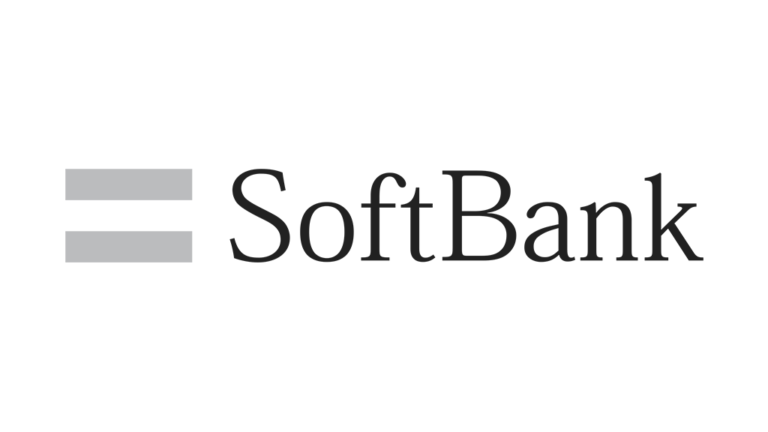
February 9, 2024: In a significant industry development, Cohesity, a data security software company supported by SoftBank, reached an agreement to acquire the data protection business of Veritas Technologies, a prominent player in the field. This strategic move, valued at $7 billion, is poised to create a behemoth in the data security realm.
The acquisition, expected to close by the end of the year, will see Cohesity absorb Veritas’ data protection unit, encompassing a diverse portfolio of data backup, archiving, and recovery solutions. This deal is anticipated to bolster Cohesity’s existing offerings, solidifying its position in the competitive data security landscape.
Several key factors drive this landmark acquisition. Firstly, Cohesity seeks to expand its customer base and market reach by leveraging Veritas’ established footprint and brand recognition. This broadened audience will enhance Cohesity’s revenue potential and market share.
Secondly, the acquisition presents an opportunity for technological synergies. Combining the strengths of both companies’ platforms, Cohesity aims to deliver more comprehensive and innovative data protection solutions to its customers. This enhanced portfolio could attract new clients and foster deeper engagement with existing users.
Thirdly, the merger presents cost-optimization opportunities. By streamlining operations and integrating functionalities, Cohesity may achieve economies of scale, increasing efficiency and profitability.
However, challenges associated with integrating two large organizations must be addressed. Merging cultures, technologies, and personnel requires careful planning and execution to avoid operational disruptions and employee anxieties. Additionally, regulatory hurdles associated with such a significant merger must be navigated diligently.
Despite these potential challenges, the Cohesity-Veritas deal holds immense promise for the data security industry. The combined entity’s financial strength, technical capabilities, and market reach position it to play a leading role in securing data for organizations of all sizes. The coming months will reveal how effectively Cohesity integrates Veritas and capitalizes on this strategic acquisition to shape the future of data protection.
Also Read, Uber Achieves Maiden Annual Profits as Valuation Nears $150B
Uber Achieves Maiden Annual Profits as Valuation Nears $150B

February 8, 2024: In a significant milestone, ride-hailing giant Uber reported its first annual profit, marking a pivotal turning point for the company. This achievement comes after years of significant financial losses, prompting questions about its long-term viability.
For the full fiscal year 2023, Uber reported an operating profit of $1.1 billion, starkly contrasting the $1.8 billion loss incurred in 2022. This positive shift was driven by several key factors, including:
- Increased ridership: Despite economic headwinds, Uber witnessed a surge in demand, with a record 150 million monthly active users. This robust consumer base provided a solid foundation for revenue growth.
- Strategic cost-cutting measures: The company implemented various initiatives to streamline operations and optimize resource allocation, improving efficiency and reducing overhead costs.
- Diversification into new markets: Uber expanded its offerings beyond ride-hailing, venturing into food delivery and other mobility services. This diversification contributed to broader revenue streams and reduced reliance on a single market segment.
The positive financial performance was lauded by investors, leading to a 10% spike in Uber’s stock price on the news. Consequently, the company’s market capitalization soared to nearly $150 billion, solidifying its position as a major player in the transportation technology industry.
This turnaround, however, should be viewed in context. Uber’s profitability remains relatively modest compared to other tech giants, and ongoing regulatory challenges and competition still pose risks. Nevertheless, this milestone achievement signifies a crucial step towards financial sustainability and paves the way for continued growth and innovation within the company.
Palantir Poised for 80% Surge as Undiscovered Gem in AI Boom, Says Wedbush.

February 7, 2024: Investment firm Wedbush has issued a bullish forecast for Palantir Technologies, predicting a staggering 80% surge in its stock price over the next 12 months. This optimistic outlook positions Palantir as an “undiscovered gem” within the burgeoning artificial intelligence (AI) sector, poised for significant growth and market recognition.
The prediction stems from Wedbush analyst Dan Ives, who raised his target price for Palantir shares to $30 following the company’s strong earnings report for the fourth quarter of 2023. This revised target signifies a potential upside of nearly 80% from Palantir’s closing price of $16.72 on February 5, 2024.
Ives attributes his optimism to several key factors:
- Surpassing Expectations: Palantir’s Q4 2023 earnings significantly exceeded Wall Street expectations, showcasing robust revenue growth and continued commercial adoption of its AI-powered data analytics platforms.
- Government Contracts: The company’s core business centers around lucrative government contracts, providing its platforms to intelligence agencies and defense departments. This segment exhibits consistent growth and stability, mitigating broader economic uncertainties.
- AI Expansion: Palantir is expanding its capabilities in the rapidly growing commercial AI market, targeting industries like healthcare, finance, and energy. This diversification holds immense potential for future revenue streams.
While acknowledging potential challenges, such as competition from established tech giants and the volatile nature of the stock market, Ives remains confident in Palantir’s long-term trajectory. He emphasizes the company’s transformation from “off-Broadway play to primetime Broadway theater, ” signifying its transition from a niche player to a prominent force in the AI landscape.
This bullish prediction has generated mixed reactions within the investment community. Some analysts share Ives’s enthusiasm, citing Palantir’s strong fundamentals and market positioning. Others express reservations, highlighting the company’s historical volatility and the competitive landscape within the AI domain.
Ultimately, the validity of Wedbush’s forecast hinges on Palantir’s ability to capitalize on its growth opportunities, sustain financial momentum, and effectively navigate the ever-evolving AI market. Investors are advised to carefully consider these factors and conduct their due diligence before making investment decisions.
Also Read, Alterra Mountain to Acquire Colorado’s Arapahoe Basin Ski Area
Alterra Mountain to Acquire Colorado’s Arapahoe Basin Ski Area

February 6, 2024: In a move signifying consolidation within the North American ski industry, Alterra Mountain Company, the owner of the Ikon Pass, has agreed to acquire the Arapahoe Basin Ski Area in Colorado. This strategic acquisition, announced on February 5th, 2024, expands Alterra’s portfolio of winter destinations and strengthens its presence in the Rocky Mountains.
Arapahoe Basin, affectionately known as “A-Basin” by avid skiers, is revered for its challenging terrain, extensive backcountry access, and notoriously long season, often extending through July 4th. This acquisition adds 1,462 acres of skiable terrain and 68 lifts to Alterra’s existing offerings, further diversifying its appeal to skiers and snowboarders seeking diverse experiences.
The transaction, subject to regulatory approvals, is anticipated to close in 2024. While the financial details remain undisclosed, the acquisition holds significant implications for both parties. With the addition of A-Basin, Alterra Mountain Company solidifies its position as a major player in the ski industry, offering access to 18 year-round destinations across North America. The Ikon Pass, already boasting limited access to Arapahoe Basin, will now offer unrestricted skiing and riding at the iconic resort.
For Arapahoe Basin, the acquisition provides access to Alterra’s vast resources and expertise, enabling infrastructure improvements, technological advancements, and enhanced marketing initiatives. However, concerns have been raised regarding the potential impact on A-Basin’s unique character and dedicated skier community. Alterra Mountain Company has assured stakeholders that A-Basin will retain its distinct identity and operating philosophy.
While the long-term ramifications of this acquisition remain, it undoubtedly marks a significant shift in the North American ski industry landscape. As Alterra Mountain Company integrates Arapahoe Basin into its portfolio, the industry will closely observe how this strategic move impacts both parties and the broader skiing experience.
Fideum’s Web3 Finance Partnership with Mastercard Unveiled

February 5, 2024: In a landmark move shaping the future of the financial landscape, Fideum, a pioneering fintech company, and Mastercard, a global payments giant, have forged a strategic partnership. This alliance aims to bridge the gap between traditional and decentralized finance (Web3), unlocking innovative opportunities for established institutions and emerging blockchain technologies.
Fideum, renowned for its expertise in Web3 integration, aims to revolutionize financial accessibility and efficiency through blockchain technology. This partnership leverages Mastercard’s extensive global network and renowned security infrastructure to enhance Fideum’s offerings and propel its vision forward.
The cornerstone of this collaboration lies in the introduction of the Fideum token. This digital asset embodies the essence of innovation in digital finance, facilitating seamless integration between traditional financial instruments and decentralized applications. Moreover, Fideum’s financial aggregation platform gains significant reach and legitimacy through Mastercard’s network, empowering users with an enhanced suite of financial tools and services.
This collaborative endeavor transcends mere tokenization. Both parties envision a future where traditional financial institutions leverage blockchain technology to unlock new avenues for growth and inclusivity. Mastercard gains a unique perspective on the burgeoning Web3 ecosystem, potentially shaping its future offerings and adapting to evolving consumer demands.
However, the road ahead has its challenges. Regulatory uncertainties surrounding Web3 and potential security concerns require careful navigation. Building trust and ensuring transparency will be crucial for the widespread adoption of this innovative approach.
Despite these challenges, the Fideum-Mastercard partnership signifies a groundbreaking leap toward a more inclusive and efficient financial future. By harnessing the strengths of both traditional and decentralized finance, this collaboration has the potential to reshape the financial landscape, offering benefits to users, institutions, and the wider economy.
Also Read, Delta and American Express Increase Credit Card Fees, Enhance Benefits
Delta and American Express Increase Credit Card Fees, Enhance Benefits

February 2, 2024: Delta Air Lines and American Express have jointly announced adjustments to their co-branded credit card portfolio, impacting cardholders with both fee increases and benefit enhancements. This move, effective May 1st, 2024, for existing customers, reflects a strategic shift to bolster the value proposition while aligning pricing with the expanded offerings.
Annual fees will witness upward revisions across the three tiers of cards – Gold, Platinum, and Reserve. The Gold card will see a $51 increase to $150, while the Platinum card’s fee jumps to $350, representing a $100 climb. The most significant increase applies to the Reserve card, rising by $100 to land at $650 annually.
Despite the fee hikes, cardholders are not left empty-handed. Each tier boasts an array of new benefits designed to offset the increased cost and provide greater value, particularly for frequent travelers. The Gold card introduces a $100 annual Delta Stays credit and a $200 Delta flight credit upon reaching specific spending thresholds. The Platinum card ups the ante with a $120 Resy credit, a $120 rideshare credit, and a $150 Delta Stays credit. Finally, the Reserve card offers a combined $560 annual statement credits – $240 Resy, $120 rideshare, and $200 Delta Stays.
Furthermore, the cards continue to offer core benefits such as Delta SkyMiles® earning on purchases, airport lounge access, complimentary companion certificates, and priority boarding. Notably, the Platinum and Reserve cards also boast MQD (Medallion Qualification Dollars) boosts and waiver of foreign transaction fees, catering specifically to frequent flyers seeking elite status within Delta’s loyalty program.
The fee hikes and benefit enhancements have sparked mixed reactions. While some cardholders appreciate the expanded offerings, others express concerns about affordability, particularly for those who may still need to utilize the new benefits fully. The long-term impact on cardholder retention and overall program success remains to be seen.
This development comes amid broader trends within the credit card industry, where issuers are increasingly balancing fee increases with enhanced benefits to cater to diverse customer preferences and maintain profitability. Whether Delta and American Express’s strategy successfully retains and attracts cardholders within the competitive travel rewards landscape will unfold in the coming months.
TikTok CEO Pledges $2B for Child Safety Amid Senate Hearing

February 1, 2024: Faced with intensifying Senate scrutiny surrounding child safety on its platform, TikTok CEO Shou Zi Chew has unveiled a hefty defense – a $2 billion pledge for bolstering child protection measures. Delivered ahead of Chew’s appearance at a critical Senate hearing focused on online safety, this announcement represents a strategic attempt to appease mounting criticism and allay growing anxieties about the popular social media giant.
TikTok, renowned for its short-form, algorithmically curated content and expansive user base, has attracted considerable concern regarding potential risks to younger users. Critics highlight the platform’s potential for exposing children to inappropriate or harmful material due to its content delivery system and raise concerns about data privacy and predatory behavior. These anxieties reached a crescendo in the lead-up to the Senate hearing, placing immense pressure on TikTok to demonstrate its commitment to child safety.
Chew’s $2 billion pledge signifies a multi-pronged shield for child safety on TikTok. The allocated funds will reportedly be channeled towards critical areas, including:
- Enhanced Content Moderation: Bolstering human and technological capabilities to identify and remove harmful content more effectively.
- Empowering User Safety Features: Developing and implementing new features that empower younger users to control their experience and report problematic content.
- Collaborative Partnerships: Collaborating with child safety experts, law enforcement agencies, and industry stakeholders to share best practices and develop comprehensive solutions.
- Increased Transparency: Enhancing transparency around content moderation policies and practices, offering users greater insights into the platform’s operations.
While the $2 billion commitment undoubtedly represents a substantial financial investment, its effectiveness in addressing the complex challenges surrounding child safety on TikTok remains to be seen. Skeptics point to the platform’s past struggles with content moderation and question the transparency around how the funds will be utilized. Additionally, concerns persist about the platform’s algorithm and its potential to expose children to harmful content unintentionally.
The Senate hearing is pivotal for TikTok and its efforts to navigate the increasingly complex landscape of online child safety. While Chew’s $2 billion pledge represents a significant step forward, its impact will hinge on concrete implementation, improved safety measures, and a sustained commitment to safeguarding young users on the platform. As the hearing unfolds and TikTok faces scrutiny from lawmakers, the company’s response will be closely watched, with ramifications extending far beyond its platform and potentially influencing the broader online safety landscape.
Kelleher Financial Advisors Expands Position in Alphabet Inc. (GOOG)
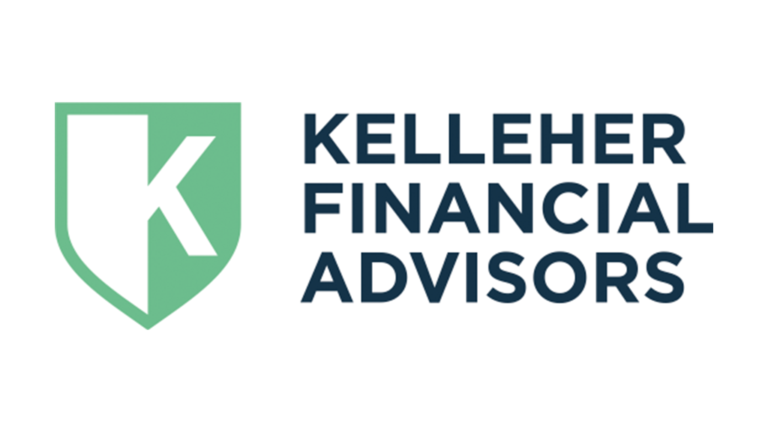
January 31, 2024: Kelleher Financial Advisors, a prominent U.S. investment firm, has significantly increased its holdings in Alphabet Inc. (NASDAQ: GOOG), the parent company of Google and other tech giants, signaling its confidence in the technology behemoth’s prospects. This move, disclosed in the company’s 13F filing with the Securities and Exchange Commission, highlights Alphabet’s enduring appeal among institutional investors in an increasingly volatile market.
According to the filing, Kelleher’s position in Alphabet grew by 21.2% in the third quarter of 2023, translating to an additional 11,430 shares acquired. This substantial increase brings Kelleher’s total Alphabet holdings to 65,354 shares, representing approximately 4.3% of its overall portfolio and solidifying Alphabet’s position as Kelleher’s fifth-largest holding.
Several factors likely contributed to Kelleher’s decision to boost its Alphabet stake. Alphabet’s diversified portfolio, encompassing search, cloud computing, autonomous vehicles, and other ventures, offers investors exposure to multiple high-growth sectors. Additionally, the company’s robust financial performance, characterized by consistent revenue and earnings growth, provides reassurance during periods of market uncertainty.
Furthermore, Alphabet’s recent strategic initiatives, including investments in artificial intelligence and renewable energy, demonstrate the company’s commitment to innovation and long-term growth. These factors, coupled with Alphabet’s strong brand recognition and loyal user base, likely resonated with Kelleher and influenced its decision to deepen its investment.
Kelleher’s move is not an isolated occurrence. Several other institutional investors have also recently increased their holdings in Alphabet, reflecting broader investor confidence in the company’s prospects. However, some analysts caution against undue optimism, citing potential headwinds such as regulatory scrutiny and increased competition within the tech sector.
Despite these potential challenges, Kelleher’s decision to significantly boost its Alphabet stake is a significant vote of confidence in the company’s resilience and long-term growth potential. This move underlines Alphabet’s enduring appeal within the investment landscape and positions the company for continued success in the years to come.
Sunbit Secures $310M Funding from Citi and Ares for BNPL Growth

January 30, 2024: Sunbit, a renowned innovator in the burgeoning Buy Now, Pay Later (BNPL) space, has secured a significant financial injection, poised to propel its ambitious growth trajectory. On January 29, 2024, the company announced the closing of a $310 million debt warehouse facility led by financial heavyweights Citi and Ares Management Credit funds. This strategic investment underscores Sunbit’s leadership within the BNPL sector and its potential to revolutionize consumer financing options further.
The newly acquired funding is a powerful testament to Sunbit’s impressive track record and disruptive approach to BNPL. Since its inception in 2016, the company has carved a distinct niche within the sector, specializing in financing solutions for high-ticket purchases in automotive and dental services. Its innovative offerings, including the revolutionary BNPL service and the no-fee Sunbit Card, have garnered widespread acclaim for their flexibility, transparency, and commitment to consumer inclusivity.
This latest capital injection is strategically earmarked to fuel Sunbit’s ambitious expansion plans. The company intends to leverage the funds to bolster its operational capabilities, scale up its customer base, and penetrate promising new market segments. Sunbit aims to capitalize on its current dominance in the automotive BNPL space and solidify its presence in the rapidly growing dental market.
Furthermore, the participation of renowned financial institutions such as Citi and Ares Management in the debt warehouse facility signifies increasing investor confidence in Sunbit’s long-term prospects. This vote of confidence further validates the company’s robust business model and potential to disrupt the traditional credit landscape.
However, the BNPL sector continues to navigate a dynamic and evolving regulatory environment. Concerns regarding consumer debt accumulation and potential predatory lending practices necessitate responsible growth strategies for BNPL providers. In recognition of these concerns, Sunbit emphasizes its commitment to ethical lending practices and responsible consumer financial education.
Despite these challenges, Sunbit’s strategic partnership with Citi and Ares and its proven track record and innovative approach position the company for continued success within the BNPL landscape. The influx of capital fuels Sunbit’s ambitious expansion plans, potentially shaping the future of consumer financing solutions in high-ticket purchase segments. As the BNPL sector continues to evolve, Sunbit’s commitment to responsible growth and consumer inclusivity will be crucial in determining its long-term trajectory and impact on the financial landscape.
Holcim Targets $30B Valuation with North American Listing
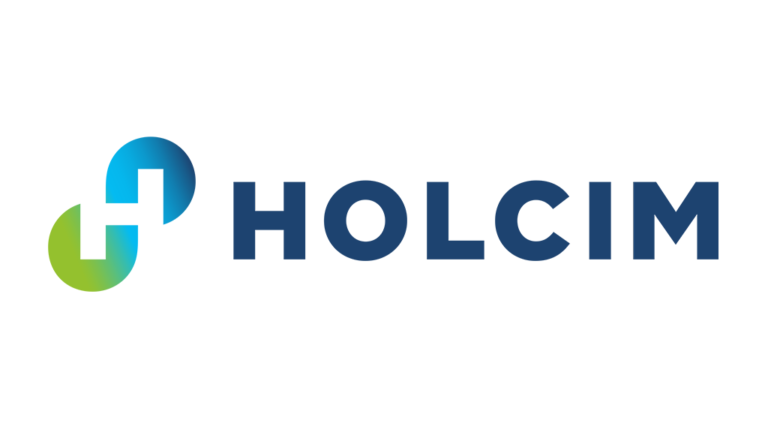
January 29, 2024: Swiss building materials giant Holcim unveiled a transformative strategy on January 29, 2024, announcing plans to spin off its North American operations and list them as separate entities on the New York Stock Exchange. This audacious move, projected to value the new company at approximately $30 billion, positions Holcim for strategic focus and unlocks potential growth opportunities in a dynamic market.
The spin-off, scheduled for completion in the first half of 2025, will completely separate Holcim’s North American business, encompassing all assets, operations, and liabilities. This bold step signifies Holcim’s confidence in the independent potential of its North American arm, poised to capitalize on the region’s robust construction sector and evolving market trends.
Miljan Gutovic, currently head of Holcim’s European operations, will lead the newly formed entity. His extensive experience and leadership are expected to steer the company toward continued success in the competitive North American landscape. Holcim, meanwhile, will retain no ownership stake in the spun-off entity, enabling it to sharpen its focus on core geographic markets and emerging technology advancements within the global building materials sector.
The projected $30 billion valuation underscores the significant value contained within Holcim’s North American operations. This robust valuation stems from the region’s strong construction market fundamentals, driven by urbanization, infrastructure development, and increasing sustainability initiatives. The newly formed company inherits a well-established network of cement plants, aggregates quarries, and distribution channels, providing a solid foundation for future growth.
While the spin-off presents exciting opportunities, Holcim acknowledges potential challenges. Navigating the complexities of separation, ensuring operational continuity, and building an independent brand identity will require meticulous planning and execution. However, Holcim expresses confidence in its ability to overcome these hurdles and create long-term value for the spun-off entity and its remaining operations.
Holcim’s strategic decision to spin off its North American business marks a significant turning point. This bold move unlocks potential growth opportunities within a dynamic market and allows Holcim to streamline its operations and focus on its core areas of expertise. The coming months will be crucial in determining the success of this ambitious endeavor, with the newly formed entity poised to make its mark on the North American construction market.
Meta Constructs $800M AI-Focused Data Center in Indiana

January 26, 2024: The tech landscape of the American Midwest is poised for a significant transformation, as social media giant Meta Platforms Inc. announced plans to invest $800 million in constructing a cutting-edge data center in Jeffersonville, Indiana. This strategic move, unveiled on January 25, 2024, signifies Meta’s commitment to expanding its infrastructure footprint and leveraging the potential of artificial intelligence (AI) for future growth.
The state-of-the-art facility, slated for completion in 2026, will primarily focus on supporting Meta’s burgeoning AI initiatives. This aligns with the company’s ambitious vision for the metaverse, a virtual world driven by advanced AI algorithms and immersive technologies. The Indiana data center will house high-performance computing infrastructure designed to power these future-oriented projects’ complex calculations and data processing requirements.
Beyond AI advancements, the data center is expected to generate significant economic benefits for the region. Meta estimates the project will create approximately 100 operational jobs and support over 1,250 construction workers during peak construction phases. Additionally, the influx of investment is projected to stimulate local businesses and contribute to infrastructure development within the Jeffersonville community.
However, the project also raises concerns regarding potential environmental impacts. Data centers consume large amounts of energy, and their cooling systems can generate significant heat. Meta has addressed these concerns by pledging to employ energy-efficient technologies and implement sustainable cooling solutions to minimize the facility’s environmental footprint.
Furthermore, the increasing concentration of data centers in specific regions raises questions about privacy and security. Meta has assured the public that the Indiana data center will adhere to the highest data security and privacy protection industry standards.
Despite these considerations, Meta’s decision to invest in Indiana underscores the region’s growing appeal for technology companies. Factors such as favorable tax incentives, access to talent, and reliable infrastructure are attracting major players like Meta, potentially paving the way for a tech boom in the American Heartland.
The construction of the $800 million AI-focused data center in Indiana marks a significant milestone for Meta and signals its commitment to advancing AI research and development. This bold move positions the company at the forefront of technological innovation and contributes to the American Midwest’s economic and technological revitalization. As the project progresses, its impact on the region and the broader data center landscape will be closely monitored, offering valuable insights into the future of technology and its relationship with local communities.
Adwanted USA Launches SRDS Academy 2.0

January 25, 2024: Adwanted USA, the driving force behind the renowned media intelligence platform SRDS, has embarked on a bold initiative to empower media professionals and students. The company proudly announces the launch of SRDS Academy 2.0, a significantly enhanced iteration of its educational program dedicated to the ever-evolving media landscape.
SRDS Academy 2.0 represents a comprehensive revamp, offering a curriculum encompassing ten courses for each major media type – from digital and out-of-home to business publications and podcasts. This expansive range caters to diverse learning needs, ensuring every media professional finds relevant and valuable training. The program incorporates a dedicated course encompassing all media types, providing a holistic understanding of the interconnected media ecosystem.
Beyond the sheer breadth of offerings, SRDS Academy 2.0 prioritizes real-world application and practicality. Each course incorporates authentic media planning scenarios, allowing participants to hone their skills through simulated challenges. This experiential approach translates theoretical knowledge into practical expertise, preparing individuals for immediate success in the dynamic media environment.
Furthermore, SRDS Academy 2.0 recognizes the crucial role of educators in fostering effective learning. The program provides professors with seamless integration tools, streamlining lesson planning and enriching delivery. Automated grading, access to supplementary resources, and real-world scenarios empower instructors to create engaging and impactful learning experiences for their students.
SRDS Academy 2.0 grants students and professionals access to a network of industry experts and leaders. The program facilitates interaction with seasoned professionals, fostering knowledge exchange and mentorship opportunities. This immersive environment allows participants to gain invaluable insights, build connections, and confidently navigate the media landscape.
The launch of SRDS Academy 2.0 signifies Adwanted USA’s unwavering commitment to nurturing the next generation of media professionals. This enhanced program not only equips individuals with the necessary skills and knowledge to thrive in the media industry but also fosters collaboration and strengthens the overall media ecosystem.
While challenges remain, such as ensuring continued program evolution and accessibility, SRDS Academy 2.0 is a beacon of innovation and dedication within the media education landscape. Its comprehensive curriculum, practical approach, and emphasis on industry engagement position it to empower individuals and fuel the future of media success.
Also Read, Seabridge Investment Takes $1.13M Position in Johnson & Johnson
Seabridge Investment Takes $1.13M Position in Johnson & Johnson
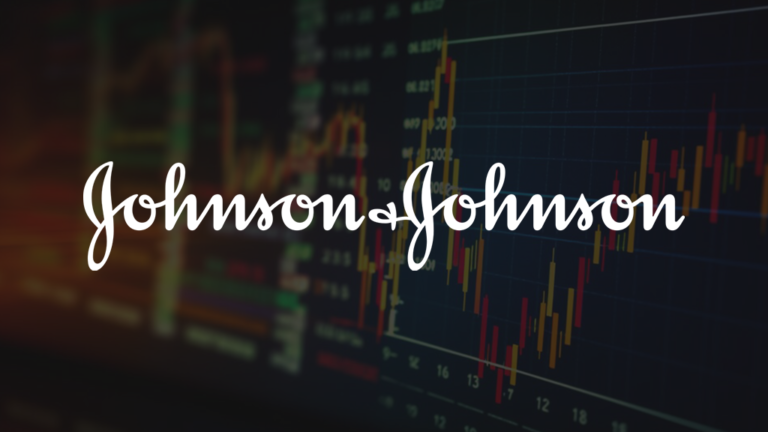
January 24, 2024: SeaBridge Investment Advisors, a savvy investor, made waves in the healthcare sector by snapping up $1.13 million of Johnson & Johnson (JNJ) shares during Q3 2023. This strategic move, revealed in their SEC filing, hints at SeaBridge’s bullish outlook on J&J and potentially reflects broader trends in healthcare investing.
Several factors likely fueled SeaBridge’s J&J dive. First, J&J boasts a diverse empire spanning pharmaceuticals, medical devices, and consumer health products, offering investors a one-stop shop for healthcare exposure. This diversification cushions risk and allows J&J to tap into growth across various segments.
Second, J&J’s pipeline brims with innovative drugs, particularly in oncology and immunology, promising future revenue streams. These cutting-edge treatments address critical needs, attracting significant market interest and suggesting sustained growth trajectories.
Furthermore, J&J’s unwavering commitment to research and development (R&D) cements its position as an innovation leader. The company consistently invests heavily in R&D, ensuring a steady flow of novel products and technologies that push the boundaries of healthcare advancements.
Beyond J&J’s internal strengths, the broader healthcare market shines as a lucrative investment haven. The rising healthcare awareness and disposable incomes of an aging global population fuel the demand for innovative medical solutions. This confluence of factors positions the healthcare sector as a prime target for long-term investments.
However, J&J faces some hurdles. Ongoing legal issues related to talcum powder products cast a shadow of uncertainty, and navigating the ever-changing regulatory landscape remains a constant challenge. Fierce competition within the pharmaceutical and medical device sectors also necessitates continuous innovation and strategic adaptation.
Despite these challenges, SeaBridge’s investment in J&J showcases their confidence in the company’s ability to overcome these obstacles and capitalize on the vast opportunities within the healthcare market. J&J’s diversified portfolio, robust pipeline, and unwavering commitment to R&D position it for continued success in the years to come.
While predicting the outcome of this investment remains premature, SeaBridge’s move towards J&J serves as a potential indicator for trends within the healthcare investment landscape. Other institutional investors may follow suit, seeking exposure to the sector’s promising growth prospects. As J&J continues to execute its strategic initiatives and navigate the market dynamics, SeaBridge’s investment stands as a testament to its enduring appeal in the eyes of discerning investors.
Also Read, Compass Ion Advisors Invests $2.60M in CDW Co. (CDW)
Compass Ion Advisors Invests $2.60M in CDW Co. (CDW)

January 23, 2024: Compass Ion Advisors LLC, a prominent investment management firm, has injected fresh capital into the technology sector by acquiring 100,000 shares of CDW Corporation (NASDAQ: CDW) for approximately $2.60 million. This strategic investment signals Compass Ion’s confidence in CDW’s long-term prospects and highlights the continued attractiveness of the technology stocks amidst market volatility.
CDW is a leading value-added reseller of information technology solutions. It caters to businesses, government agencies, and educational institutions across the United States and Canada. The company boasts a diverse product portfolio encompassing hardware, software, cloud services, and security solutions, positioning it well to capitalize on the increasing demand for technology modernization and digital transformation.
Compass Ion’s decision to invest in CDW likely stems from several key factors. The company’s robust recurring revenue stream, generated through subscription-based services and maintenance contracts, offers stability and predictability in an uncertain market environment. CDW’s focus on high-growth areas like cloud computing and cybersecurity aligns with Compass Ion’s investment thesis, which prioritizes companies positioned to benefit from secular trends shaping the technology landscape.
Furthermore, CDW’s resilient financial performance underpins its attractiveness as an investment. The company boasts a solid record of revenue growth and profitability, even amidst economic fluctuations. This consistent performance offers investors confidence in CDW’s ability to navigate market challenges and deliver shareholder value over the long term.
Beyond immediate portfolio diversification, Compass Ion’s investment in CDW signifies a broader trend within the financial sector. Once viewed as volatile and risky, technology stocks are increasingly embraced by investors seeking long-term growth opportunities. With digital transformation permeating diverse industries, technology companies like CDW stand to benefit from the ongoing digitalization wave, making them appealing investments for forward-thinking firms like Compass Ion.
The impact of Compass Ion’s investment on CDW remains to be seen. However, it serves as a vote of confidence in the company’s prospects and underscores its value proposition to the technology sector. As the digital revolution continues to unfold, CDW’s ability to adapt to evolving customer needs and capitalize on emerging technologies will be crucial in driving its growth and justifying its trust by Compass Ion and other discerning investors.
PowerStack and ISCS Partner in Australian Solar Deal

January 23, 2024: A strategic alliance has been forged in the Australian solar landscape, with innovative solar power pole developer PowerStack joining forces with established security technology provider ISCS. This collaboration promises to reshape off-grid solar infrastructure, bolstering energy independence and security for diverse applications across remote locations.
PowerStack’s pioneering vertical solar pole technology is at the heart of this partnership. These unique structures optimize sunlight capture, generating reliable, off-grid power for applications ranging from security cameras and lighting to IoT sensors and communications. With ISCS’s extensive expertise in security solutions, a comprehensive and self-sufficient infrastructure package emerges, ideal for remote sites lacking traditional power access.
This alliance boasts compelling advantages for both companies. PowerStack gains access to ISCS’s expansive distribution network and established relationships with key industry players, accelerating its market penetration and solidifying its position as a leading off-grid solar solutions provider. For ISCS, the partnership presents an opportunity to diversify its offerings and tap into the burgeoning clean energy market, enhancing its brand image and attracting environmentally conscious customers.
More importantly, the PowerStack-ISCS collaboration transcends individual benefits, offering significant value to end users. The combined solution provides reliable, sustainable power for critical infrastructure in remote areas, such as mining sites, telecommunication towers, and agricultural facilities. This empowers businesses to operate independently, reduces reliance on fossil fuels, and potentially lowers energy costs.
Furthermore, the partnership aligns with Australia’s ambitious renewable energy targets. By promoting off-grid solar solutions, PowerStack and ISCS contribute to the nation’s transition towards a cleaner, more sustainable energy future. This collaboration could pave the way for wider adoption of similar technologies, potentially influencing the country’s renewable energy development and infrastructure strategies.
As this dynamic partnership unfolds, industry observers keenly anticipate its impact. The combined expertise of PowerStack and ISCS holds immense potential to revolutionize remote infrastructure solutions, fostering energy independence, environmental sustainability, and economic growth in Australia’s diverse landscape. As the sun shines on their collaboration, the future of off-grid power appears increasingly bright.
Myomo Raises $6M in Direct Stock Offering

January 22, 2024: Myomo, Inc. (NYSE: MYO), a pioneering developer of wearable medical robots for individuals with neurological disorders and upper-limb paralysis, has secured a strategic $6 million capital injection through a registered direct offering of its common stock. This financial maneuver provides a vital boost to the company’s growth trajectory, enabling it to scale up operations and capitalize on a burgeoning market opportunity.
The offering, which closed on or about January 19, 2024, attracted participation from new and existing institutional investors and certain company insiders. The proceeds and Myomo’s existing cash reserves are expected to fuel the company’s ambitious expansion plans.
By leveraging these additional resources, Myomo intends to:
- Expand its clinical and reimbursement capabilities: This will involve hiring additional personnel to support increased patient enrollment in clinical trials and streamline the insurance reimbursement process for the company’s flagship MyoPro product.
- Ramp up manufacturing capacity: To meet anticipated demand for the MyoPro, Myomo will invest in its manufacturing infrastructure, ensuring efficient production and timely delivery to patients.
- Strengthen its sales and marketing efforts: Focused outreach to healthcare professionals and patients will raise awareness of MyoPro’s transformative potential, solidifying its position in the growing market for neurorehabilitation technologies.
The capital infusion arrives at a crucial juncture for Myomo. The recent establishment of Medicare coverage for MyoPro and the proposed pricing guidelines have opened up a vast new market segment for the company. By effectively scaling its operations, Myomo can capitalize on this favorable regulatory landscape and establish itself as a key player in rehabilitation.
Beyond internal expansion, the additional capital could pave the way for strategic partnerships or acquisitions. This would allow Myomo to broaden its product portfolio or strengthen its existing technology with complementary offerings, propelling its overall growth strategy.
While Myomo’s future remains intertwined with factors like market adoption, reimbursement processes, and potential regulatory headwinds, the successful completion of the direct stock offering underscores the company’s solid financial footing and promising market prospects. By strategically deploying these newly secured funds, Myomo is poised to further its mission of providing life-changing mobility solutions to individuals with upper-limb limitations.
Viridian Therapeutics Initiates Public Stock Offering

January 19, 2024: Viridian Therapeutics, Inc., a burgeoning player in the realm of biotechnology dedicated to pioneering best-in-class medicines for severe and rare diseases, has formally announced the launch of an underwritten public offering of its common stock. This strategic move signifies a pivotal step in propelling Viridian’s ambitious clinical development programs and bolstering its financial resources for future endeavors.
The offering, expected to close on or about January 22, 2024, subject to customary closing conditions, entails selling a yet-to-be-determined number of shares of Viridian’s common stock. The offering price is to be determined through the book-building process, with gross proceeds anticipated to reach approximately $150.0 million. Additionally, Viridian has granted the underwriters a 30-day option to purchase more common shares at the offering price, less underwriting discounts and commissions.
Viridian intends to utilize the proceeds garnered from the offering, combined with its existing cash, cash equivalents, and short-term investments, to fuel the advancement of its robust clinical development portfolio. The company boasts a diversified pipeline of promising drug candidates targeting a spectrum of serious and rare diseases, with a particular focus on central nervous system (CNS) disorders and rare genetic conditions.
Several key clinical milestones lie ahead for Viridian shortly. Phase 3 trials for VRDN-100, a potential first-in-class treatment for Angelman syndrome, are slated to commence in the first half of 2024. Additionally, data from ongoing Phase 2 studies for other lead candidates targeting Parkinson’s disease and Rett syndrome are expected to be reported later this year, potentially shaping the future direction of these development programs.
Furthermore, the influx of capital facilitated by the offering empowers Viridian to explore strategic partnerships and potential acquisitions, enabling it to broaden its therapeutic portfolio and expedite the development of its existing drug candidates.
Viridian’s launch of a public offering reflects the burgeoning confidence in its groundbreaking scientific endeavors and future market potential. With its commitment to tackling unmet medical needs through innovative therapeutics, Viridian is poised to impact the lives of patients grappling with debilitating diseases significantly. As the offering unfolds, stakeholders and industry observers remain keenly focused on its outcome, anticipating its potential to propel Viridian toward its ambitious clinical and commercial goals.
Counterpart Unveils SMB Management Liability Claims Handling

January 18, 2024: In a strategic move solidifying its commitment to the small and medium-sized business (SMB) market, Counterpart, the insurtech leader in management and professional liability, has formally unveiled its newly expanded claims management services. This initiative grants all Counterpart SMB policyholders access to the company’s industry-renowned claims expertise, previously reserved for select clients.
This expansion stems from recognizing a growing need within the SMB landscape. As regulatory complexity and litigation risks escalate, so does the demand for robust and sophisticated claims handling support. Counterpart’s decision to democratize its claims services addresses this need directly, ensuring equal access to top-tier protection for all its SMB clients.
The expanded claims offering leverages Counterpart’s unique combination of seasoned claims professionals and cutting-edge technology. A dedicated team of specialists boasting decades of experience navigating complex claims and legal intricacies stands ready to guide Counterpart’s SMB clients through every phase of the claims process. Simultaneously, the company’s proprietary claims system streamlines procedures, facilitates rapid information exchange, and enables data-driven decision-making, minimizing disruptions and optimizing outcomes for policyholders.
This shift toward inclusive claims management aligns with Counterpart’s core values of customer-centricity and accessibility. By eliminating barriers to its esteemed claims support, Counterpart empowers its SMB clients to focus on their core business operations with renewed confidence, secure in the knowledge that their risk management needs are comprehensively addressed.
Furthermore, the expanded claims offering holds significant implications for Counterpart’s trajectory. By extending its reach within the SMB market, Counterpart strengthens its position as a trusted partner for businesses of all sizes. This comprehensive approach fosters long-term client relationships and opens opportunities for future growth.
“We believe every business, regardless of size, deserves access to exceptional claims management,” stated Lee Elliston, Chief Operating Officer of Global Claims at Counterpart. “This expansion underscores our unwavering commitment to supporting the success and risk resilience of our SMB clients.”
Counterpart’s decision to extend its claims management services to all SMB clients represents a significant milestone in its evolution. This strategic move empowers countless businesses and solidifies Counterpart’s position as a leader in the evolving landscape of risk management and support for the SMB community.
U.S. Supreme Court Rejects Epic Games ‘ Apple Legal Battle

January 17, 2024: In a highly anticipated decision, the U.S. Supreme Court has declined to hear an appeal from Epic Games, the video game developer behind the popular Fortnite, related to its ongoing legal battle with Apple over the App Store. This move leaves intact the lower court ruling that largely favored Apple, though a minor aspect remains open for potential challenge.
Epic Games filed a federal antitrust lawsuit against Apple in 2020, alleging that the company’s App Store rules and payment system violated antitrust laws. Specifically, Epic objected to Apple’s requirement that all apps downloaded through the App Store use its in-app payment system, which charges a 30% commission on all purchases. Epic argued that this system stifled competition and inflated prices for consumers.
A lower court judge largely sided with Apple, rejecting most of Epic’s antitrust claims. However, the judge did find that Apple violated California’s unfair competition law by prohibiting developers from informing users about alternative payment methods within their apps. This ruling could still allow Epic to pursue legal action on this issue.
The Supreme Court’s decision not to hear the case represents a significant setback for Epic in its broader challenge to Apple’s App Store dominance. The Court’s lack of interest suggests that most justices do not believe the current legal environment surrounding app stores warrants their intervention. Nevertheless, the ruling leaves the door open for potential future legal challenges from Epic and other developers aimed at reforming the App Store and other dominant platform ecosystems.
The ramifications of this decision extend beyond the immediate Epic-Apple battle. It sheds light on the broader debate surrounding the power of large tech companies and the regulation of digital marketplaces. While the Supreme Court’s decision suggests a reluctance to overturn existing legal frameworks, it will likely fuel ongoing discussions about antitrust enforcement and potential legislative or regulatory interventions in the tech sector.
In conclusion, the Supreme Court’s decision in the Epic-Apple case leaves the immediate fight largely in Apple’s favor. However, it is unlikely to be the final chapter in this saga. The broader debate surrounding platform power and app store monopolies is far from over, and the implications of this decision will continue to reverberate throughout the tech industry and beyond.
Also Read, Allspring Global Sells 95,711 Shares of Silgan Holdings
TOGC 2024: The Roles Of Pipelines In Energy Transition

January 16, 2024: During TOGC 2024, in frames of the executive opening panel dedicated to the role of pipelines in energy transition, speakers are going to present projects on new markets, discuss sustainability goals, as well as pipelines and alternative fuels. Oil and gas majors, EPCs and pipeline operators gather at Transportation Oil and Gas Congress 2024, which is held in Milan, Italy, on February, 19-20.
The whole world is moving towards a low-carbon future. The pipeline industry is no different. The transition to a low-carbon energy future raises tough questions for the industry about its environmental impacts and measures to mitigate them. LNG, H2, ammonia, and biofuels have been widely discussed for several years as the alternatives for oil and gas, and some companies are discussing either blending, or complete transformation of existing pipeline networks. This is why the executive opening panel of TOGC 2024 welcomes top management of the oil and gas majors, pipeline operators, service providers to share their companies’ policy on reaching sustainability goals with the means of pipelines.
Executive opening panel, dedicated to the role of pipelines in energy transition, is one of the highlights of TOGC 2024. This is a show type session based on discussion between panellists, where speakers go one by one, after that panellists have a discussion on the stage. Speaking about transportation of alternative fuels, even as the energy market is shifting towards decarbonisation to meet global net-zero goals, pipelines will still have a vital role in the industry.
Among the speakers of the panel is George Satlas, Executive Officer at ICGB AD, who is going to talk about the ICGB role in the gas transportation market for Eastern Europe. The company created the gas interconnector Greece – Bulgaria project, which is recognized as a leading project for the CESEC initiative and has excellent synergy with other major projects like TAP and TANAP. The project is a game-changer for the Bulgarian energy market with its ability to increase competition and decrease the prices for consumers while securing diversified gas deliveries.
The roles of pipelines in energy transition and other topics related to the transportation oil and gas industry are going to be discussed at Transportation Oil and Gas Congress 2024 in Italy. Among participants are Bonatti, Sicim, INGL, Eni, ICGB, Exolum, OGE, DESFA, Saipem, TECHINT, Wood, TÜPRAŞ, Moldovagaz.
Find out more: https://sh.bgs.group/15l
Allspring Global Sells 95,711 Shares of Silgan Holdings

January 16, 2024: In a strategic portfolio move, Allspring Global Investments Holdings LLC (NASDAQ: ASPR) reduced its holdings in Silgan Holdings Inc. (NYSE: SLGN) by 4.1% during the third quarter of 2023. The firm sold 95,711 shares of the industrial packaging manufacturer, averaging $41.55 per share, resulting in a total divestment of approximately $415,500. This action signals Allspring’s investment strategy shift toward other opportunities within the industrial sector.
While the specific reasons for Allspring’s partial exit from SLGN remain undisclosed, several potential factors could be at play. The broader market downturn in Q3, which impacted numerous industrial stocks, may have prompted a reassessment of the company’s risk profile. Additionally, Allspring might seek to diversify its industrial sector portfolio, allocating capital to different companies or niche segments with higher anticipated growth potential.
Despite the divestment, Allspring maintains a significant stake in SLGN, remaining its second-largest institutional shareholder with 2,257,126 shares, valued at approximately $97.3 million as of January 16, 2024. This continued ownership suggests continued confidence in SLGN’s long-term prospects, particularly its strong market position in the food and beverage packaging industry and its commitment to innovative, sustainable packaging solutions.
The SLGN stock price remained largely unaffected by the news of Allspring’s partial divestment, closing slightly up at $42.83 on Monday, January 16, 2024. This muted reaction indicates that the market does not perceive Allspring’s move as indicative of any fundamental concerns about SLGN’s business or future outlook.
Overall, Allspring’s decision to sell a portion of its SLGN shares highlights the dynamic nature of portfolio management and the constant reevaluation of investment strategies amidst evolving market conditions. While the immediate impact on SLGN’s stock price has been minimal, the long-term implications of this shift in ownership on the company’s valuation and investor sentiment remain to be seen.
South Korean Shipper Boosts Global Oil Tanker Rates

January 12, 2024: A flurry of tanker bookings by Sinokor Merchant Marine, a South Korean shipping giant, has triggered a significant surge in global oil tanker rates, injecting volatility into the maritime transportation sector. This strategic move by Sinokor, encompassing long-haul voyages from the US Gulf to China, tightened vessel availability and sparked a market frenzy.
The impact of Sinokor’s chartering spree was immediate and substantial. Rates for very large crude carriers (VLCCs), capable of hauling 2 million barrels, skyrocketed by over $1 million per day on key routes like the US Gulf to Asia. This marks the largest daily gain for VLCC rates since November 2022, highlighting the significant influence Sinokor’s actions have exerted on the market.
While some vessels were booked for cargo transport, others were chartered seemingly without underlying cargo commitments. This has fueled speculation about Sinokor’s motives, with some analysts viewing it as a potential play on future oil price fluctuations or even an attempt to corner the tanker market. Regardless of the rationale, the uncertainty of Sinokor’s strategy has further amplified market volatility.
Beyond Sinokor’s activities, other factors contribute to the recent rate upswing. Geopolitical tensions in the Red Sea, leading to Houthi attacks on shipping vessels, have disrupted maritime routes and increased risk premiums for tanker operators. Additionally, surging oil demand from China and the US and ongoing supply chain bottlenecks have tightened overall oil transportation capacity, further adding upward pressure on rates.
The long-term implications of this market surge remain unclear. While the immediate beneficiaries are tanker operators, who stand to gain substantial profits from these elevated rates, potential downstream effects could emerge. Higher transportation costs could ultimately be passed on to consumers, potentially raising fuel prices and impacting global economic activity.
Furthermore, the uncertainty surrounding Sinokor’s strategy and its potential impact on market stability raises concerns for industry stakeholders. Close monitoring of the situation and regulatory vigilance will be crucial in mitigating potential risks and ensuring the smooth functioning of the global oil tanker market.
Bitcoin Bullish Statement, Dogecoin Whale Shifts Millions, ETH Predicted Breakout

January 12, 2024: A confluence of bullish pronouncements, whale movements, and technical analysis has injected excitement into today’s cryptocurrency market. Bitcoin (BTC) soared in response to a series of optimistic outlooks, while a sizeable Dogecoin (DOGE) transaction and a technical prediction for Ethereum (ETH) added further fuel to the rally.
Samson Mow, CSO of Blockstream, led the charge and boldly predicted that Bitcoin could reach $1 million by 2025. Citing factors such as increasing institutional adoption and robust network security, Mow’s statement resonated with investors, contributing to a 7.17% weekly gain for BTC, currently at $46,313.
Adding to the positive sentiment was a significant movement within the Dogecoin ecosystem. A large DOGE holder transferred a staggering 332.9 million tokens, roughly $33 million, to the prominent exchange Binance. While the motive behind this transaction remains unclear, it sparked speculation about potential market moves or whale activity, further bolstering the overall bullish mood.
Technical analysis also played a role in today’s positive developments. Crypto analyst Michaël van de Poppe identified technical indicators suggesting a potential breakout for ETH, with a price target of $3,000 within the coming weeks. This prediction resonated with traders, propelling ETH to a weekly increase of 16.29% and a current price of $2,606.
Of course, acknowledging the cryptocurrency market’s inherent volatility is crucial. Despite the current enthusiasm, future price fluctuations are inevitable, and investors should exercise caution and conduct thorough research before entering the market.
However, bullish sentiment, significant whale movements, and technical predictions suggest renewed optimism within the cryptocurrency space. Increased institutional involvement and a more favorable regulatory environment could pave the way for further growth and mainstream adoption of digital assets in the months and years to come.
Inland Rail Welcomes New CEO

January 10, 2024: Australia’s ambitious Inland Rail project, tasked with reshaping freight transport across the continent, has officially ushered in a new era with the appointment of Nick Miller as its Chief Executive Officer. The announcement on Wednesday signifies a decisive move towards revitalizing the project following internal scrutiny and adjustments.
Mr. Miller, a seasoned leader in the construction and infrastructure sectors, brings over 20 years of experience. His tenure at Adbri, a prominent building materials manufacturer, cemented his reputation for strategic vision and operational excellence. This expertise is crucial for Inland Rail, a project facing challenges amidst ambitious goals and complex logistical intricacies.
In his previous role at Fulton Hogan, Mr. Miller successfully spearheaded the company’s expansion into new markets and navigated complex infrastructure projects. This proven track record in navigating intricate logistical challenges instills confidence in his ability to steer Inland Rail through its development phases.
The appointment comes after a comprehensive selection process conducted by the Australian Rail Track Corporation (ARTC). ARTC Chair Robert Rust, who served as interim CEO during the search, emphasizes Mr. Miller’s leadership qualities and industry knowledge as instrumental in his selection. He further stresses the importance of Mr. Miller’s ability to foster collaboration and engagement with stakeholders, a crucial aspect for a project spanning multiple states and diverse communities.
Mr. Miller’s arrival coincides with a renewed focus on transparency and accountability within the Inland Rail project. Recent reviews have emphasized the need for improved communication and community engagement, areas where Mr. Miller’s proven track record in stakeholder management is expected to yield significant improvements.
With a new captain at the helm and a renewed emphasis on communication and collaboration, Inland Rail appears poised to navigate the challenges ahead. Mr. Miller’s proven expertise and leadership offer hope for the project’s successful completion, paving the way for a transformative impact on Australia’s freight landscape.
Investor Alert: Class Actions for GM, EGRX, MRCY, and ON

January 10, 2024: Shareholders in General Motors (GM), EOG Resources (EGRX), MercadoLibre (MRCY), and Otonomy, Inc. (ON) are facing imminent deadlines to join ongoing class action lawsuits alleging financial misconduct. The Law Offices of Frank R. Cruz issued a timely reminder urging investors to consider their legal options before these crucial dates arrive.
Scrutiny Surrounds GM: Until February 6, 2024, GM shareholders can file a lead plaintiff motion alleging the company misled them about airbag safety and cruise control technology. The lawsuit claims concerns about defective airbags were downplayed by GM, while the capabilities of its Cruise autonomous vehicles were overstated, leading to an artificial inflation of its stock price.
EGRX Accounting Practices Questioned: A lawsuit has been filed accusing EOG Resources of manipulating its accounting practices to inflate earnings. EGRX investors have until January 22, 2024, to join the suit, which centers on the treatment of certain drilling costs and potentially distorting the company’s financial health.
MercadoLibre Acquisition Contested: Shareholders in the Latin American e-commerce giant have until February 9, 2024, to join a legal action contesting a proposed fintech acquisition. The lawsuit argues that the transaction is not in MercadoLibre’s best interests and that investors deserve adequate information about it.
Otonomy Data Under Fire: For Otonomy, Inc. investors, the deadline to join a class action alleging misrepresentations regarding its clinical trial data is January 6, 2024. The lawsuit claims Otonomy withheld negative information about the efficacy of its lead drug candidate, misleading investors and causing financial losses.
Collective Action for Potential Recovery: Participation in a class action lawsuit can offer individual investors a pathway to recoup potential losses without incurring the significant costs of individual litigation. By joining forces through these class actions, shareholders can amplify their voices and seek collective redress for alleged corporate wrongdoing.
Swift Action Crucial: Investors are urged to act quickly to meet the deadlines mentioned above. Failure to do so could bar them from participating in the lawsuits and recovering potential damages. Consulting with experienced legal counsel familiar with securities litigation is highly recommended to assess individual circumstances and determine the best course of action.
Developments Monitored: As legal proceedings regarding these companies unfold, investors are advised to carefully monitor developments and stay informed of potential updates and outcomes. The outcome of these class actions could have significant implications for affected shareholders and potentially impact broader market confidence in the respective companies.
Also Read, Novartis Eyes Cytokinetics Acquisition in Advanced Talks
Novartis Eyes Cytokinetics Acquisition in Advanced Talks

January 9, 2024: In a potentially transformative move for the cardiovascular pharmaceutical landscape, Swiss healthcare giant Novartis is reportedly in advanced talks to acquire US biotech firm Cytokinetics. This potential deal, fueled by Cytokinetics’ promising experimental treatment for a rare heart condition, could reshape the treatment landscape and boost Novartis’ pipeline.
Cytokinetics has garnered significant attention for aficamten, its investigational drug for hypertrophic cardiomyopathy (HCM), a condition causing thickening of the heart muscle and potentially leading to sudden cardiac death. With encouraging late-stage clinical trial results, Aficamten’s potential to address this unmet medical need has made it a coveted asset.
For Novartis, acquiring Cytokinetics would complement its cardiovascular portfolio and offer a potential blockbuster drug in Alicante. This aligns with Novartis’ focus on expanding its presence in high-growth therapeutic areas. Additionally, Cytokinetics’ expertise in cardiac muscle biology could synergistically enhance Novartis’ research and development capabilities.
While the potential benefits are significant, some analysts raise concerns regarding the deal’s valuation. Cytokinetics’ market capitalization has soared amidst Aficamten’s success, potentially leading to a high acquisition price. Additionally, regulatory hurdles for aficamten approval remain, adding a layer of uncertainty to the transaction.
Despite these concerns, the potential implications of this potential deal are vast. A successful acquisition could benefit Novartis and Cytokinetics and offer hope to patients battling HCM, a previously underserved patient population. Additionally, the transaction could fuel investment in innovative cardiovascular research, leading to future treatment advancements.
The coming weeks will be crucial in determining the fate of this potential acquisition. While negotiations continue, the pharmaceutical industry and patients anticipate seeing if Novartis will secure aficamten and reshape the future of treating HCM.
Naira Crisis Sparks Job Cut Threats in Nigeria

January 8, 2024: The relentless depreciation of the Nigerian Naira, which has plummeted by a staggering 39% against the US dollar since October 2023, is now casting a dark cloud over the manufacturing sector, raising concerns about potential job losses. Several manufacturers are contemplating workforce reductions as the currency crisis squeezes their operations and threatens their bottom line.
The Naira’s freefall significantly increases the cost of importing raw materials and machinery, which is crucial for Nigerian manufacturers. With their domestic sales revenue denominated in Naira, the rising import costs lead to a profit squeeze, forcing companies to explore cost-cutting measures.
One of the most immediate measures under consideration is workforce reduction. As manufacturers grapple with the financial strain, layoffs, furloughs, and hiring freezes are all potential options. This scenario could exacerbate Nigeria’s already challenging unemployment situation, potentially impacting thousands of workers and their families.
Beyond job losses, the Naira’s devaluation also threatens to stifle manufacturing growth. Reduced profitability and limited access to foreign exchange could hamper investment in new production lines and technology, hindering the sector’s potential to contribute to economic diversification and job creation.
Several factors are contributing to the Naira’s woes. Foreign exchange reserves are dwindling, partly due to lower oil revenues, the country’s primary export earner. Additionally, concerns about rising inflation and insecurity deter foreign investments, further straining the currency’s supply.
The Central Bank of Nigeria has implemented various measures to curb the Naira’s slide, including raising interest rates and restricting access to foreign exchange for certain imports. However, the effectiveness of these measures remains to be seen, and their immediate impact on manufacturers and workers is still being determined.
The Naira’s depreciation underscores the complex challenges facing the Nigerian economy. Balancing currency stability with economic growth and job creation necessitates comprehensive economic reforms and addressing underlying issues like low productivity and dependence on oil exports.
The coming months will be crucial for Nigeria’s manufacturing sector. The government’s ability to stabilize the Naira and foster an environment conducive to business growth will determine the fate of thousands of workers and the sector’s potential to contribute to national economic recovery.
Also Read, Eurostoxx Futures Down 0.6% in Early European Trade
Eurostoxx Futures Down 0.6% in Early European Trade

January 8, 2024: The Eurostoxx 50 index, a bellwether for European equities, slipped 0.6% in early trading on Monday, mirroring a cautious sentiment across global markets. This modest decline reflects many factors, including ongoing concerns about geopolitical tensions, potential interest rate hikes, and slowing economic growth.
The negative opening follows a mixed performance for global markets on Friday. Wall Street closed mostly flat, while Asian markets saw a more pronounced downtrend. This uneven landscape underscores the heightened anxieties gripping investors, who are hesitant to commit amidst an uncertain economic outlook.
While the current decline in the Eurostoxx 50 may seem modest, it represents a continuation of a broader downward trajectory. The index has lost nearly 5% since the beginning of the year, highlighting the mounting anxieties weighing European equities.
Several specific concerns are contributing to the current market uneasiness. The ongoing war in Ukraine continues to cast a shadow over global stability, raising fears of potential energy disruptions and broader economic repercussions. Additionally, central banks across the globe, including the European Central Bank, are increasingly signaling potential interest rate hikes aimed at curbing inflation and posing a risk to economic growth.
Furthermore, economic indicators point towards a potential slowdown in the eurozone, further dampening investor optimism. Recent data releases suggest weakening factory activity and consumer confidence, adding to concerns about the region’s economic resilience in the face of global headwinds.
Despite the current downturn, analysts express cautious optimism about the long-term prospects of European equities. Some argue that the current anxieties offer buying opportunities for undervalued stocks, while others highlight the inherent resilience of the European economy.
However, the trajectory of the Eurostoxx 50 in the coming weeks will depend heavily on the evolution of key factors driving investor sentiment. Geopolitical developments, central bank policy decisions, and economic data releases will all be closely watched for any indication of potential shifts in the market landscape.
Also Read, Peloton Pedals onto TikTok: Fitness Fusion Forges New Content Frontier
Peloton Pedals onto TikTok: Fitness Fusion Forges New Content Frontier

January 5, 2024: In a strategic move to engage a wider audience and revitalize its brand, Peloton, the renowned connected fitness company, has entered into an exclusive partnership with TikTok, the short-form video platform. This innovative collaboration promises to bring Peloton’s world-class workout content to the vibrant and engaged TikTok community, creating a dynamic new hub for fitness inspiration and motivation.
A Match Made in Movement
This partnership leverages the strengths of both platforms. With its established library of high-quality fitness classes and renowned instructors, Peloton will provide the content. TikTok, known for its virality and trendsetting capabilities, will offer a dynamic and engaging platform to reach a new generation of fitness enthusiasts.
The ” #TikTokFitness Powered by Peloton” hub will curate diverse content, catering to various fitness levels and preferences. Users can expect to find:
- Short-form workout clips: Bite-sized bursts of exercise routines, perfect for fitting fitness into busy schedules.
- Live Peloton classes: Real-time interaction with renowned instructors, streamed directly on TikTok.
- Celebrity collaborations: Inspiring workout sessions featuring popular TikTok creators and fitness influencers.
- Original content: Creative and engaging fitness challenges and trends from the unique blend of Peloton expertise and TikTok’s trendsetting spirit.
Mutual Benefits, Boundless Possibilities
This partnership offers significant advantages for both parties. Peloton gains access to a vast and engaged Gen Z and millennial audience on TikTok, potentially revitalizing its brand image and attracting new subscribers. TikTok, in turn, strengthens its platform’s appeal by diversifying its content offerings and catering to the growing interest in health and wellness among its user base.
Beyond immediate benefits, this collaboration holds the potential to redefine the fitness landscape itself. The fusion of Peloton’s structured approach to exercise with TikTok’s creativity and accessibility could pave the way for a more inclusive and engaging fitness experience for a wider audience.
Challenges and Uncertainties
While the potential of this partnership is undeniable, challenges remain. Integrating traditional fitness content into TikTok’s fast-paced, trend-driven world may require innovative storytelling and content creation strategies. Additionally, concerns about monetization and maintaining the quality of Peloton’s brand amidst the informal and often meme-driven nature of TikTok content need to be addressed.
Pedaling Towards the Future
The Peloton-TikTok partnership marks a bold step towards reimagining fitness content and engagement. The success of this collaboration hinges on their ability to navigate the challenges, leverage their strengths, and create a truly unique and valuable experience for the ever-evolving fitness community. As more details emerge about the content formats and engagement strategies, it will be fascinating to see how this unlikely partnership unfolds, potentially shaping the future of fitness content creation and consumption.
U.S. Factories Inch Upward, Eyes on Recession Risk

January 4, 2024: The beleaguered U.S. manufacturing sector offered a mixed bag of signals in December, exhibiting a slower pace of contraction but remaining mired in negative territory. The Institute for Supply Management’s (ISM) manufacturing index edged up slightly to 47.4 from 46.7 in November, marking the fifth consecutive month of decelerating decline and sparking cautious optimism for a potential turnaround.
This modest improvement was primarily driven by a stabilization in new orders, a key indicator of future activity. The new orders index held steady at 46.2, signaling a potential halt in the downward trend witnessed in recent months. However, continued supply chain disruptions and rising input costs continued to hinder new export orders, which remained flat at 50.0.
Despite the headline improvement, a closer look reveals a diverse picture within the manufacturing landscape. While industries like transportation equipment and food, beverage, and tobacco products registered modest growth, others like apparel and leather products, and furniture and related products, continued to decline at a significant rate. This uneven performance underscores the sector’s vulnerability to specific economic headwinds and the potential for a prolonged period of sluggish recovery.
Nevertheless, several factors offer reasons for cautious optimism. Firstly, the recent moderation in inflationary pressures could alleviate the squeeze on manufacturers’ input costs, providing some much-needed breathing room. Secondly, the anticipated decline in interest rates might stimulate business investment and consumer spending, potentially boosting demand for manufactured goods.
“The U.S. manufacturing sector continued to contract, albeit at a slightly slower rate in December,” noted Timothy Fiore, chair of the ISM Manufacturing Business Activity Survey Committee. “This suggests that the downward trajectory of the sector may be starting to moderate, but a significant improvement is not expected in the near term.”
While the recent data offers a welcome reprieve from the sharp contractions earlier in the year, challenges remain. Continued geopolitical tensions, the potential for a recession in the broader economy, and ongoing labor market tightness could hinder a robust recovery. Nonetheless, the December reading provides a modest signal that the worst may be over for the U.S. manufacturing sector, paving the way for a potential gradual rebound in the months ahead, if economic conditions become more favorable.
Also read, Bitcoin ETF hope fuels $1 trillion crypto trading boom
Bitcoin ETF hope fuels $1 trillion crypto trading boom

January 4, 2024: In a significant development for the crypto market, monthly trading volumes on centralized exchanges surpassed the $1 trillion mark for the first time since September 2022. This surge, coinciding with mounting anticipation surrounding the potential approval of spot Bitcoin exchange-traded funds (ETFs), signals renewed investor confidence and a potential resurgence of the bull market.
The December 2023 data, compiled by research firm The Block, revealed a total trading volume of $1.1 trillion, a notable increase from the last recorded high of $1.35 trillion in May 2022. Binance, the dominant exchange, led the charge, which facilitated a staggering $432.7 billion in transactions, representing 39.3% of the total volume.
Analysts attribute this upsurge to several factors, with the primary catalyst being optimism surrounding the impending approval of a spot Bitcoin ETF. The Securities and Exchange Commission (SEC) has consistently rejected proposals for such ETFs, citing concerns about market manipulation and investor protection. However, recent indications suggest a potential shift in the SEC’s stance, fueled by increased regulatory clarity and growing institutional interest in Bitcoin.
The prospect of a spot Bitcoin ETF, which would track the price of Bitcoin directly, is seen as a significant step towards legitimizing the cryptocurrency and attracting new investors. Such an instrument would offer more accessible access to Bitcoin than the current cumbersome processes, potentially leading to increased demand and a corresponding rise in value.
Beyond the ETF buzz, other contributing factors to the increased trading volume include:
- A gradual easing of bearish sentiment.
- The launch of innovative decentralized finance (DeFi) products.
- Renewed interest in non-fungible tokens (NFTs).
Additionally, the holiday season traditionally witnesses increased trading activity in financial markets, potentially further bolstering the cryptocurrency market.
However, a note of caution should be sounded. The anticipated approval of a spot Bitcoin ETF is still being determined, and the SEC’s decision could significantly impact the market’s trajectory. Additionally, the inherent volatility of cryptocurrencies exposes them to potential price swings, posing risks for investors.
Despite these caveats, the surge in trading volume on crypto exchanges offers a promising glimpse into the industry’s future. The renewed enthusiasm surrounding Bitcoin, coupled with advancements in infrastructure and regulatory progress, paves the way for further growth and mainstream adoption. Whether this marks the beginning of a sustained bull market remains to be seen, but one thing is clear: the cryptocurrency industry is far from finished.
Spain Ditches Gas as Renewables Surge

January 3, 2024: Spain’s reliance on natural gas continues to diminish, marking a significant milestone in the country’s transition towards a more sustainable energy future. Following a 3.7% decline in 2022, natural gas consumption plummeted 10.7% in 2023, representing a cumulative reduction of nearly 14% over two years. This remarkable accomplishment is primarily attributed to a concerted shift towards renewable energy sources, particularly wind and solar, for electricity generation.
Several factors have contributed to this impressive feat:
- Renewable Power Surge: Spain witnessed a meteoric rise in renewable energy production in 2023, with renewables surpassing 50% of the country’s electricity generation for the first time. This surge, driven by significant wind and solar infrastructure investments, supplanted the need for gas-fired power plants.
- Warm Autumn Delay: A milder-than-usual autumn season delayed the onset of the heating season, further reducing demand for gas used in residential and commercial settings.
- Governmental Commitment: The Spanish government has implemented ambitious policies to accelerate the transition from fossil fuels to renewables. These initiatives, including carbon pricing mechanisms and renewable energy subsidies, have provided crucial incentives for the shift.
However, while the decrease is noteworthy, challenges remain:
- Storage Limitations: Integrating variable renewable energy sources into the grid remains challenging due to battery storage technology limitations. Large-scale investments in storage solutions are vital to ensure grid stability and maximize the utilization of renewable power.
- Intermittency: The inherent intermittency of wind and solar power necessitates continued reliance on natural gas or other flexible power sources as backup during low solar and wind generation periods.
- Industrial Reliance: Despite the overall decline, specific industries, such as manufacturing and chemicals, which are heavily dependent on natural gas, require alternative solutions or efficient technologies to curtail their gas consumption further.
Despite these challenges, Spain’s success in decoupling its energy demands from natural gas serves as a beacon for other nations striving for a cleaner and more sustainable energy future. By prioritizing renewable energy investments, implementing supportive policies, and addressing storage and intermittency issues, Spain demonstrates the viability of transitioning away from fossil fuel dependence while ensuring reliable and affordable energy supplies.
Global smart ports market Charts $7.82 Bn by 2029, fueled by tech surge

January 3, 2024: The global smart ports market is poised for a remarkable trajectory, surging towards an estimated value of US $7.82 billion by 2029. This represents a compounded annual growth rate (CAGR) of 23.9% over the forecast period, testifying to the transformative potential of automation and advanced technologies within the maritime industry.
Several key factors are propelling this impressive growth:
- Rising Trade Volumes: Global trade activity is projected to continue its upward trend, necessitating efficient and streamlined port operations to accommodate the increasing flow of goods. Smart port technologies, such as automation systems and real-time data analytics, are crucial in optimizing cargo handling and reducing turnaround times.
- Technological Advancements: The rapid evolution of technologies like the Internet of Things (IoT), artificial intelligence (AI), and blockchain is revolutionizing port operations. IoT sensors capture real-time data on cargo movement, while AI algorithms optimize workflows and predict bottlenecks, streamlining processes and boosting operational efficiency.
- Environmental Concerns: Increasing environmental consciousness drives demand for sustainable practices within the maritime industry. Smart ports offer solutions like electric cargo handling equipment and data-driven optimization to minimize energy consumption and reduce harmful emissions.
- Government Initiatives: Recognizing smart ports’ economic and environmental benefits, governments worldwide are implementing supportive policies and investing in infrastructure upgrades. This creates a conducive environment for private sector investment and accelerates the adoption of smart port technologies.
However, despite the promising outlook, challenges remain:
- High Initial Investment Costs: Implementing smart port technologies often requires significant upfront investments, deterring some port operators, particularly in developing countries.
- Cybersecurity Threats: The reliance on interconnected systems and data networks exposes smart ports to cybersecurity vulnerabilities, necessitating robust security measures to protect critical infrastructure.
- Skilled Workforce Gap: Integrating these advanced technologies seamlessly necessitates a skilled workforce capable of operating and maintaining them. Bridging the gap between existing skills and technology requirements is crucial for effective implementation.
Despite these challenges, the burgeoning smart ports market holds immense potential to revolutionize the maritime industry. By leveraging automation, optimizing processes, and promoting environmental sustainability, smart ports can enhance efficiency, competitiveness, and resilience within the global trade landscape.
Freddie Mac forecasts a 2.5% expansion in United States multifamily rental rates in the coming year

January 2, 2024: In a discerning projection, Freddie Mac anticipates a 2.5% augmentation in multifamily rental rates across the United States for the upcoming year.
This predictive analysis underscores Freddie Mac’s diligent assessment of market variables, encapsulating economic indicators, demand-supply dynamics, and broader real estate trends.
The envisaged growth in multifamily rents alludes to an intricate interplay of factors, encompassing macroeconomic stability, regional housing demands, and the evolving preferences of the American populace.
Freddie Mac’s forward-looking prognosis posits this anticipated escalation as a reflection of prevailing market forces and an influential determinant in the ongoing discourse surrounding residential real estate.
As the United States navigates the complex terrain of housing economics, this foresighted prediction from Freddie Mac serves as a navigational beacon, illuminating the trajectory of multifamily rental rates in the forthcoming fiscal year.
The diminution of US tax credits extends to additional electric vehicles, encompassing Tesla, Nissan, and GM Models

January 2, 2024: In a notable development within the electric vehicle (EV) landscape, an expanded cohort, including Tesla, Nissan, and General Motors (GM) models, witnessed the erosion of United States tax credits.
This event signals a reduction in fiscal incentives for prospective purchasers of these EV above models, delineating a tangible impact on the economic landscape of the electric mobility sector.
The withdrawal of tax credits for these prominent automakers reverberates as a critical juncture in the government’s ongoing evaluation of EV subsidies. This evolution concurrently prompts an examination of the broader policy frameworks delineating the fiscal support extended to electric vehicles in the United States.
The implications are substantial, touching upon consumer choices, market dynamics, and the financial calculus underpinning the electric vehicle industry. As these tax credits recede, the competitive milieu for EV manufacturers undergoes recalibration, with repercussions extending to established players and the burgeoning entrants in the electric automotive domain.
The confluence of economic considerations, governmental policy shifts, and the evolving trajectory of the electric vehicle sector encapsulates a moment of nuanced transformation within the broader spectrum of automotive finance and policy discourse in the United States.
Nio Gets a $2.2 Billion Boost from Abu Dhabi: Tesla Rival Revs Up for Growth.

December 19, 2023: Chinese electric vehicle (EV) maker Nio has received a significant shot in the arm with a $2.2 billion investment from Mubadala Investment Company, a sovereign wealth fund based in Abu Dhabi. This strategic partnership strengthens Nio’s position as a critical player in the global EV race, sending ripples through the industry.
The deal, announced earlier today, marks a significant vote of confidence in Nio’s future. The funds will fuel the company’s ambitious expansion plans, including ramping up production, developing new EV models, and expanding its global reach.
Here’s what this means for Nio:
Faster growth: The cash injection will allow Nio to accelerate its production capacity, potentially doubling its output to 500,000 vehicles by 2024. This puts them on par with established automakers like Volkswagen and General Motors in the EV space.
Global ambitions: Nio has its sights set on international markets, and this investment paves the way for entry into the Middle East and beyond. With Abu Dhabi’s backing, Nio could leverage the region’s growing demand for EVs and its strategic location for exports.
Tech Edge: Nio is known for its focus on innovation and cutting-edge technology. The partnership with Mubadala, a tech-savvy investor, could open doors for collaboration on next-generation battery technology, autonomous driving, and other vital areas.
This move also sends a clear message to Tesla and other EV players:
Competition is heating up: Nio’s rapid growth and increasing financial muscle demonstrate that Tesla is not the only game in town. The Chinese automaker is quickly becoming a serious contender in the global EV market.
Innovation matters: Nio’s focus on technology and user experience resonates with consumers, and this investment signals that investors recognize the importance of these factors in the EV landscape.
China’s EV dominance: China is already the world’s largest EV market, and Nio’s success further solidifies the country’s position as a global leader in the sector.
While the future remains uncertain, one thing is clear: Nio’s $2.2 billion boost from Abu Dhabi has injected a jolt of energy into the EV race. The company’s next steps will be closely watched as it navigates this exciting new chapter of growth and global competition.
Stay tuned for further updates on Nio’s journey and the ever-evolving EV landscape!
In addition to the information above, here are some other noteworthy points:
- This is the second significant investment Nio has received this year, following a $1 billion deal with Primavera Capital Group in July.
- The partnership with Mubadala also includes collaboration on sustainability initiatives, aligning with Nio’s commitment to green technology.
- Nio’s stock price surged on the investment news, reflecting investor confidence in the company’s future.
Wall Street Whirlwind: Rate Cut Hopes, Tesla Tumble, Green Deal Done, and More!

December 14, 2023: Buckle up, folks, because Wall Street’s on a rollercoaster ride today! From potential rate cuts to Tesla’s massive recall, here’s the lowdown on the day’s hottest headlines:
1. Fed Hints at Rate Cuts, Stocks Soar:
The Federal Reserve kept rates unchanged, but its dovish tone sent Wall Street soaring. Hints of potential rate cuts in 2024 sparked investor glee, with tech stocks leading the charge. Dow Jones dances near record highs, Nasdaq hits fresh peaks, and everyone’s feeling like it’s Happy Hour on Wall Street!
2. Tesla Tumbles After Safety Recall:
Tesla’s Autopilot is in the hot seat! Over 2 million vehicles in the US face recall due to safety concerns. This includes popular models like the Model 3 and Y. The stock, naturally, isn’t having a good day, plummeting on the news. Buckle up, Tesla drivers; it’s a bumpy ride ahead!
3. Green Deal Sealed: US and EU Join Forces:
In a significant win for the planet, the US and EU have finally inked the Green Deal! This landmark agreement aims to slash greenhouse gas emissions and accelerate the transition to clean energy. Think wind turbines, solar panels, and flying electric cars in the future!
4. Project CODE: Cracking the Climate Code:
Scientists are aiming for climate change with Project CODE! This ambitious initiative aims to develop a groundbreaking climate model, predicting future weather patterns with unprecedented accuracy. Think of it as a superpowered weather forecast for the entire planet!
5. And More!
From the latest AI advancements to the hottest holiday shopping deals, there’s more to Wall Street than just stocks. Stay tuned for updates on all the exciting news shaping our world!
Remember, this is a snapshot of today’s financial and tech frenzy. Keep your eyes peeled for more developments, and remember to buckle up!
Ethereum Staking Landscape Shifts After Shanghai Upgrade.

December 08, 2023: The recent Shanghai upgrade on the Ethereum network has triggered changes in the staking ecosystem, increasing validator exits and capital movement. This trend reflects the dynamic nature of the cryptocurrency market and investors’ evolving strategies.
Following the upgrade, average daily exits from Ethereum staking pools have escalated. This suggests that some investors are withdrawing their staked ETH, potentially driven by regulatory concerns, alternative investment opportunities, or a desire to access their capital.
Multiple Factors at Play:
Several factors could be contributing to the validator exodus:
Regulatory uncertainty: The unclear regulatory landscape surrounding cryptocurrency staking in various jurisdictions may be causing some investors to take a more cautious approach.
Emerging investment options: The growing availability of alternative investment opportunities within the DeFi space could attract capital away from Ethereum staking.
Desire for capital access: The Shanghai upgrade allows for the withdrawal of staked ETH, which might incentivize some investors to unlock their capital for other purposes.
Market Dynamics Drive Capital Shifts:
Despite the validator exits, the total amount of staked ETH remains relatively stable, indicating that capital moves within the ecosystem rather than entirely flowing out. This suggests that investors will likely redistribute their assets across different staking pools or explore alternative platforms offering competitive yields.
Looking Ahead:
The long-term impact of the Shanghai upgrade on Ethereum staking remains to be seen. While the recent increase in validator exits is noteworthy, monitoring how the situation evolves is crucial. The Ethereum network continues to undergo significant development, and future upgrades could further refine the staking experience, attracting new participants and stabilizing the validator landscape.
Key Takeaways:
- Ethereum staking exits have increased post-Shanghai upgrade.
- Regulation, alternative investments, and capital access may contribute to the trend.
- Total staked ETH remains stable, suggesting capital movement within the ecosystem.
- The long-term impact of the upgrade and future developments will shape the staking landscape.
Kinder Morgan Bets Big on Energy Growth with $2.3 Billion Investment

December 07, 2023: Kinder Morgan, a major North American energy infrastructure company, is forecasting significant growth and has committed $2.3 billion to new projects. This bold move reflects their confidence in the future of the energy sector.
The Investment will be allocated to two key areas:
High-return infrastructure projects: This includes pipelines, storage facilities, and terminals, totaling $1.4 billion.
Market-sensitive cash flow projects: These projects are expected to generate predictable and stable returns, amounting to $900 million.
This Investment is expected to fuel growth across multiple areas, including:
Natural gas: Kinder Morgan sees strong demand for natural gas, fueled by the transition from coal and the increasing popularity of liquefied natural gas (LNG).
Renewables: The company also invests in renewable energy projects like solar and wind farms.
Carbon capture and storage (CCS): Kinder Morgan believes CCS is a critical technology for addressing climate change and is investing in several CCS projects.
The company’s optimism is backed by strong financial performance. Kinder Morgan anticipates a 5% increase in adjusted EBITDA and distributable cash flow (DCF) in 2024, reaching $8 billion and $5 billion, respectively.
This significant investment underscores Kinder Morgan’s commitment to long-term growth and its belief in the future of the energy sector. With a focus on critical areas like natural gas, renewables, and CCS, the company is well-positioned to benefit from the evolving energy landscape.
Additionally, Kinder Morgan is finalizing the acquisition of STX Midstream from NextEra Energy Partners for $1.8 billion, further strengthening its position in the energy market. This acquisition will add valuable assets and expertise to Kinder Morgan’s portfolio.
Overall, Kinder Morgan’s $2.3 billion Investment is a bold move demonstrating its confidence in the future of the energy sector. The company is well-positioned to capitalize on growth opportunities and create shareholder value.
This news has generated mixed reactions from analysts and investors. Some believe that Kinder Morgan’s Investment is a smart move to position the company for long-term success. Others are concerned about the risks associated with the company’s aggressive expansion plans.
Only time will tell whether Kinder Morgan’s gamble will pay off. However, one thing is sure: the company is making a significant bet on the future of the energy sector, and its success will significantly impact the industry.
Shaping the Future of Smart Industry at AUTOMA 2023

December 06, 2023: Latest technologies and new digital tools were discussed at the Oil and Gas Automation and Digitalisation Congress 2023, which was held on 27-28 November in Vösendorf, Austria. The Congress was co-hosted by OMV Downstream, which together with the representatives from the whole value chain of the oil and gas sector shared innovative ways of industry transformation through smart technologies.
This year, AUTOMA 2023 was supported by Bonatti, Tecnimont, MOL Group, KMG Rompetrol, and DESFA S.A as the Regional Partners of the Congress. Within two days, AUTOMA 2023 invited key players of the oil and gas market to emphasise the role of the latest automation and digital trends of upstream, midstream and downstream segments. Among the delegates of the Congress were representatives of Repsol, Wood, BP, Seadrill, McDermott, Snam, Archer, AVEVA, PKN ORLEN, TUPRAS, TotalEnergies, Schneider Electric, and others.
Within the first day, the Congress which gathered C-level management of the leading industry companies at the opening (CDO) panel, where Daria Anthony, Project Director of AUTOMA 2023, gave the welcoming speech:
“Today, AUTOMA greets 380 oil and gas leaders who gathered to exchange the latest innovations and discuss the current challenges of digital transformation. We believe it is crucial for companies to unite in order to explore the opportunities for digitalisation in the oil and gas industry, as well as the state of the industry’s digital strategy more generally. This is why we meet there with the aim to develop the industry together.”
Then speakers from OMV Downstream, TWTG R&D B.V., BOTAS Petroleum Pipeline Corporation, and Essar Oil UK discussed the route to decarbonisation and smart solutions for energy efficient operations.
The two-days business programme of AUTOMA 2023 comprised different formats of the sessions including leaders talks, roundtables, panel discussions. Delegates shared their thoughts and insights on the up-to-date topics such as digital twin implementation, smart refinery, digital oilfield, digital pipeline, hydrogen production by technology, and cleantech innovations and solutions.
One of the highlights of the second day was the leaders talk, a show type session dedicated to the role of collaboration in the digital transformation progress. The format of the leaders talk implies speakers’ presentations go one by one, at the end of the session the discussion goes between panellists on the stage. Speakers raised the questions about integrated digital ecosystem, collaboration for a lower carbon energy future, partnerships to develop and enhance digital capabilities. Barbara Schatzker, Program Manager Refining Digitalization at OMV Downstream GmbH, presented topic about collaboration from the strategy to delivery. The speech covered such questions as implementation of a digitalisation processes, learnings and challenges, and applications and data integration.
The next edition of the Oil and Gas Automation and Digitalisation Congress 2024 is going to take place on 21-22 October, in Germany. The registration of the companies is already open.
Visit the official website of AUTOMA 2024: https://sh.bgs.group/13i
Document Management Systems Industry Poised for Explosive Growth.

December 06, 2023: The document management systems (DMS) industry is projected to experience explosive growth in the coming years, driven by several key factors. A recent report by market research firm MarkNtel forecasts that the global DMS market will reach a staggering $94.63 billion by 2030, up from $33.57 billion in 2023, representing a compound annual growth rate (CAGR) of 14.1%.
Several factors are fueling this growth, including:
Rising Demand for Paperless Offices: Businesses are increasingly adopting paperless initiatives to improve efficiency, reduce costs, and become more environmentally friendly. DMS solutions play a critical role in this shift by providing secure, centralized storage and retrieval of documents.
Cloud Adoption: The growing adoption of cloud-based DMS solutions removes the need for expensive on-premises infrastructure, making DMS technology more accessible and affordable for businesses of all sizes.
Compliance Requirements: Stringent data security and compliance regulations drive businesses to invest in robust DMS solutions for managing confidential information and meeting legal requirements.
Integration with other technologies: Modern DMS solutions integrate seamlessly with other enterprise applications such as CRM, ERP, and business intelligence platforms, further enhancing their value proposition.
Advanced Features: DMS solutions constantly evolve, incorporating AI-powered features such as automatic document classification, indexing, and search, making document management more efficient and streamlined.
This growth is further fueled by the increasing demand for DMS solutions across various industries, including:
Healthcare: DMS solutions facilitate secure and efficient management of patient records, improving patient care and compliance with HIPAA regulations.
Financial Services: DMS solutions help financial institutions securely manage customer documents, loan applications, and other sensitive information.
Government: DMS solutions enable government agencies to streamline document-intensive processes and improve citizen services.
Manufacturing: DMS solutions help manufacturers efficiently manage technical manuals, product specifications, and quality control documents.
The global DMS landscape is expected to remain competitive, with established players like Microsoft, IBM, and OpenText battling it out with emerging startups offering innovative solutions. The focus is shifting towards cloud-based solutions, mobile accessibility, and integration with AI and other emerging technologies.
With its diverse applications and robust growth potential, the document management systems industry is poised to play a pivotal role in shaping the future of document management across industries.
MicroStrategy zooms 7.8% premarket: Bitcoin’s buddy is back with a vengeance.

December 04, 2023: Hold onto your laser eyes, MicroStrategy fans! The stock blasted 7.8% higher in premarket trading, signaling a potential epic comeback. Buckle up because here’s why:
Bitcoin’s on fire: The crypto king is surging, and MicroStrategy’s heavily invested. This rally could be MicroStrategy’s rocket fuel to break free from its recent slump.
Short squeeze whispers: Whispers of a short squeeze are swirling, where investors who bet against MicroStrategy might be scrambling to cover their losses. This could fuel a buying frenzy, sending the stock even higher.
Tech turnaround hopes: The battered tech sector is showing signs of life, and MicroStrategy, a tech darling, might be riding the wave. Investors could be piling back in, betting on a broader tech rebound.
But remember, this is a high-risk, high-reward play. MicroStrategy’s fortunes are tightly tied to Bitcoin, and the crypto market is notoriously volatile. So, if you’re feeling adventurous, hop on board. But if you prefer a smoother ride, stick to the bumper cars.
One thing’s for sure: MicroStrategy’s back in the spotlight, and it’s a show you won’t want to miss. Will it reach escape velocity or crash and burn? Only time will tell.
Sun Pharma Stock: A Minor Dip Today, But Weekly Gains Shine.

December 04, 2023: Sun Pharma investors, take a breath! Today’s 0.1% dip is a mere blip on the radar. Look closer, and you’ll see a 2.83% weekly climb, painting a brighter picture.
So, what’s behind the seesaw? Whispers on the street point to profit-booking after recent gains. But wait to hit the panic button. Sun Pharma’s long-term story stays strong, with:
Growing demand for generics: Emerging markets are gulping down affordable drugs, and Sun Pharma’s got the recipe to keep them supplied.
Specialty drugs on the rise: Sun Pharma’s not just about generics anymore. Their specialty drugs, like psoriasis treatment Ilumra, are raking in the cash.
Eye on the future: With investments in biosimilars and R&D, Sun Pharma is setting its sights on the next big thing in healthcare.
Sure, today’s dip might sting a little. But remember, markets are like roller coasters. The key is to keep your eyes on the long track, and Sun Pharma has the potential to take you on a wild, upward ride.
Autonomous Vehicles: Despite Advancements, Still Not Ready for Prime Time

November 28, 2023: The advent of autonomous vehicles has captured the public’s imagination, promising a future where cars drive themselves, freeing humans from the burden of driving. However, despite significant technological advancements, autonomous vehicles must still be ready for prime time.
Regulatory Hurdles
Despite the technological prowess of autonomous vehicles, regulatory hurdles remain a significant barrier to widespread adoption. Governments worldwide are still grappling with the complex legal and safety issues surrounding autonomous cars, leading to a slow and cautious approach to deployment.
Liability Concerns
One of the primary concerns is determining who is liable in the event of an accident involving an autonomous vehicle. Is it the manufacturer, the software developer, or the car’s owner? With clear legal guidelines, many potential users and investors are eager to embrace autonomous vehicles.
Testing and Refinement
While autonomous vehicles have demonstrated impressive capabilities in controlled environments, they still need to gain the necessary experience and adaptability to navigate the unpredictable complexities of real-world roads. Extensive testing and refinement are required before these vehicles can safely operate in the public domain.
Sensor and Data Limitations
Autonomous vehicles rely heavily on sensors, including cameras, radar, and lidar, to perceive their surroundings. However, adverse weather conditions, road debris, or even a simple piece of paper can easily fool these sensors. Moreover, autonomous vehicles struggle to interpret and respond to non-standard traffic situations, such as pedestrians jaywalking or cyclists running red lights.
Public Perception and Acceptance
Despite the technological advancements, public perception and acceptance of autonomous vehicles still need to be improved. Concerns about safety, job displacement, and losing control over the driving experience have led to resistance from some segments of society.
A Path to Maturity
While autonomous vehicles may not be ready for widespread adoption today, the potential benefits for safety, efficiency, and environmental sustainability are immense. Continued investment in research, development, and testing is essential to achieve this vision. Regulatory frameworks must be established to address liability concerns and ensure public safety.
Conclusion
Autonomous vehicles promise to revolutionize transportation, but they have yet to be ready to take over the roads. Overcoming regulatory hurdles, addressing liability concerns, and enhancing sensor and decision-making capabilities will be crucial steps toward a future where autonomous vehicles can safely and seamlessly integrate into our transportation network.
SHL Telemedicine Revolutionizes Cardiac Care with SmartHeart Membership Launch

November 28, 2023: SHL Telemedicine has unveiled its SmartHeart membership program in the United States, marking a significant step forward in accessible and personalized cardiac care. This innovative membership offers patients with post-myocardial infarction (MI) a comprehensive solution for managing their heart health from the comfort of their homes.
At the heart of the SmartHeart program lies the SmartHeart device, a portable electrocardiogram (ECG) monitor that empowers patients to take control of their cardiac wellness. With a simple touch, patients can perform ECG readings and transmit the results directly to their healthcare providers via Bluetooth.
The SmartHeart membership goes beyond device connectivity, providing patients with a holistic approach to cardiac care. Members gain access to:
Dedicated cardiac care specialists: Ongoing support from experienced cardiologists who review ECG readings, provide personalized recommendations, and promptly address concerns.
Educational resources: Comprehensive information and guidance on managing post-MI conditions, including lifestyle modifications, medication adherence, and stress management strategies.
24/7 support: Round-the-clock access to medical professionals for urgent questions or concerns, ensuring peace of mind for patients and their families.
With its focus on personalized care, remote monitoring, and patient education, the SmartHeart membership program has the potential to revolutionize cardiac care for post-MI patients. By empowering individuals to take an active role in their health, SHL Telemedicine is paving the way for improved patient outcomes and reduced healthcare costs.
Tech Tools Prove Vital as Consumers Tackle Inflation

November 27, 2023: Price comparison platforms, budgeting apps, and discount sites are emerging as crucial tools for consumers grappling with rising costs.
A recent survey reveals that 62% of consumers consider apps and digital services critical for managing finances during the ongoing cost-of-living crisis. This trend is particularly pronounced among younger generations, with the ‘App Generation’ (under 35) leveraging an average of 41 apps and digital services monthly.
Leading the Charge: Price Comparison Platforms
42% of respondents turn to price comparison websites for the best deals on essential goods and services. These platforms empower users to compare prices across various providers, enabling informed purchasing decisions and maximizing savings.
Budgeting Apps Offer Precision Control
42% of consumers rely on budgeting apps to track their spending and stay financially conscious. These apps provide a comprehensive picture of income and expenses, enabling users to allocate funds effectively and avoid overspending.
Discount Sites Unlock Savings Opportunities
40% of respondents utilize voucher and discount sites to access exclusive deals and promotional offers. This tactic allows budget-conscious individuals to leverage significant discounts on purchases, maximizing their spending power.
Shifting Consumer Behavior toward Quality Apps
The study reveals a growing demand for high-quality apps, with 64% desiring only the best app options and 66% voicing heightened expectations for digital service quality compared to two years ago. This trend suggests a greater emphasis on user experience and app performance as consumers seek efficient and reliable tools for navigating a tight budget.
Limiting App Overload
Despite the clear benefits of digital tools for managing finances, 67% of respondents aim to limit the number of apps they use. This highlights a growing awareness of app fatigue and a preference for consolidating tools for streamlined and efficient management.
Digital Solutions Offer a Lifeline
As inflation continues to impact daily life, price comparison platforms, budgeting apps, and discount sites are vital in empowering consumers to manage their finances and cope with rising costs. These readily available resources provide accessible and efficient pathways to navigate a challenging economic landscape.
Current Sensor Market Poised to Reach USD 5.74 Billion by 2030

November 27, 2023: The global sensor market is projected to reach a valuation of USD 5.74 billion by 2030, exhibiting a remarkable CAGR of 10.1% from 2022 to 2030. This robust growth is attributed to the surging demand for current sensors across diverse industries, including automotive, industrial automation, and renewable energy.
Driving Forces Behind Market Expansion
Several vital factors fuel the expansion of the current sensor market:
Widespread Adoption of Electronics: The increasing integration of electronics in various applications, from consumer goods to industrial machinery, propels the demand for current sensors. These sensors play a crucial role in monitoring and controlling electrical currents, ensuring electronic devices’ safe and efficient operation.
Advancement of Automation: The rise of industrial automation drives the need for precise current measurement and control. Current sensors are
- essential components in automated systems,
- providing real-time feedback on current levels,
- enabling efficient energy management and preventing equipment malfunctions.
Growth of Renewable Energy: The transition towards renewable energy sources, such as solar and wind power, is creating a surge in demand for current sensors. These sensors are employed in power conversion systems to monitor and regulate current flow, ensuring the stability and reliability of renewable energy installations.
Market Segmentation and Key Trends
The sensor market is segmented based on type, technology, end-user industry, and region. Open-loop current sensors are expected to hold the largest market share due to their simplicity and cost-effectiveness. Hall Effect technology is anticipated to dominate the market due to its high accuracy and non-contact operation.
Asia Pacific is projected to be the fastest-growing region in the current sensor market, driven by rapid industrialization and increasing adoption of electronics. North America and Europe are also expected to grow significantly due to established industrial infrastructure and a focus on energy efficiency.
Key Players Driving Market Growth
Prominent players in the global current sensor market include Honeywell International Inc., Infineon Technologies AG, Allegro Microsystems LLC, LEM International SA, and Texas Instruments Incorporated. These companies are continuously innovating and developing advanced current sensor solutions to meet the evolving demands of various industries.
Future Outlook
The future of the current sensor market is bright, with solid growth prospects driven by the increasing adoption of electronics, the advancement of automation, and the growth of renewable energy. Current sensors are poised to play an increasingly critical role in ensuring electronic devices and systems’ efficiency, safety, and reliability across various industries.
Changpeng ‘CZ’ Zhao’s Vision Propels Binance to Crypto Supremacy

November 22, 2023: In the dynamic world of cryptocurrency, Changpeng Zhao, fondly known as CZ, has emerged as a visionary leader, steering Binance to the pinnacle of cryptocurrency exchanges. From humble beginnings, Binance has transformed into the world’s largest cryptocurrency exchange by trading volume, a testament to CZ’s entrepreneurial acumen and strategic foresight.
CZ’s Journey to Crypto Eminence:
CZ’s journey into the cryptocurrency realm began in 2013, recognizing the transformative potential of blockchain technology. His expertise in high-frequency trading systems and finance proved invaluable as he delved deeper into the complexities of cryptocurrencies.
Binance: A Beacon in the Crypto Landscape:
In 2017, CZ’s vision was Binance, a cryptocurrency exchange designed for novice and experienced traders. Its user-friendly interface, low trading fees, and wide range of supported cryptocurrencies quickly propelled Binance to the forefront of the crypto exchange landscape.
CZ’s Leadership: A Driving Force:
CZ’s leadership has been instrumental in Binance’s meteoric rise. His ability to adapt to the ever-evolving cryptocurrency market and his commitment to innovation have solidified Binance’s position as a global leader.
Binance’s Impact on the Crypto Ecosystem:
Binance’s influence extends beyond trading, fostering the growth of the entire crypto ecosystem. The exchange has launched various initiatives, including Binance Launchpad, a platform for token sales, and Binance Smart Chain, a blockchain network that enables smart contract functionality.
CZ’s Legacy: A Pioneer in the Digital Age:
CZ’s contributions to the cryptocurrency industry have been nothing short of revolutionary. His visionary leadership has transformed Binance into a global powerhouse, shaping the future of finance and paving the way for a more decentralized and inclusive financial system.
US Justice Department Cracks Down on Crypto Scammers, Seizing $9 Million in Tether.

November 22, 2023: In a significant blow to cryptocurrency scammers, the U.S. Department of Justice has seized nearly $9 million worth of Tether (USDT), a stablecoin pegged to the U.S. dollar. The confiscated funds were allegedly linked to a criminal organization that targeted victims through an elaborate “pig butchering” scam.
Unmasking the Pig Butchering Scam:
The “pig butchering” scam, also known as a “romance scam,” involves fraudsters building fake online relationships with victims over time, gaining their trust, and eventually convincing them to invest in fraudulent cryptocurrency schemes. The scammers created fake investment websites and convinced victims to transfer their Tether holdings to these platforms.
Justice Department’s Intervention:
The Justice Department’s seizure of the $9 million in Tether marks a significant step in combating cryptocurrency-related scams. The investigation, led by the National Cryptocurrency Enforcement Team, tracked victim deposits that were laundered through various cryptocurrencies, a technique known as “chain hopping.”
Tether’s Cooperation:
Tether, the issuer of the USDT stablecoin, cooperated with the Justice Department’s investigation, freezing the $9 million in funds upon request. This cooperation highlights the growing collaboration between law enforcement agencies and cryptocurrency companies to combat cybercrimes.
Impact on Cryptocurrency Scams:
The Justice Department’s actions serve as a stark warning to cryptocurrency scammers, demonstrating that law enforcement is actively pursuing and dismantling these illicit operations. The seizure of the $9 million in Tether is a significant step towards protecting investors and safeguarding the integrity of the cryptocurrency ecosystem.
3D Printing: A Revolutionary Technology Transforming Industries

November 21, 2023: 3D printing, also known as additive manufacturing, is a transformative technology rapidly revolutionizing various industries, including manufacturing, healthcare, aerospace, and construction. This innovative process involves creating three-dimensional objects by layering materials, such as plastics, metals, or ceramics, one layer at a time. Unlike traditional subtractive manufacturing methods that involve removing material from a solid block, 3D printing builds objects from the ground up, offering greater design freedom and reduced material waste.
Impact on Manufacturing
In manufacturing, 3D printing enables the production of complex and customized products with shorter lead times and reduced costs. This technology is particularly beneficial for prototyping, allowing designers to quickly create physical models for testing and iteration before committing to mass production. Additionally, 3D printing facilitates the production of lightweight, high-strength components for various applications, such as aerospace and automotive parts.
Advancements in Healthcare
In healthcare, 3D printing is revolutionizing medical device development and patient care. Personalized implants, such as hip and knee replacements, can be precisely tailored to individual patient anatomy, improving surgical outcomes and reducing recovery time. Additionally, 3D printing creates patient-specific anatomical models for surgical planning and education.
Aerospace Applications
In the aerospace industry, 3D printing produces lightweight and durable components for aircraft and spacecraft. This technology allows for the creating of complex geometries and internal structures that are difficult or impossible to manufacture using traditional methods. As a result, 3D printing contributes to developing more fuel-efficient and lightweight aircraft.
Transforming Construction
The construction industry is also embracing the potential of 3D printing. This technology creates building components, such as walls, furniture, and architectural elements. 3D-printed construction offers several advantages, including increased design flexibility, reduced construction time, and improved sustainability.
Future Outlook
As 3D printing technology continues to evolve, its impact across various industries is expected to grow exponentially. Advancements in materials, printing speed, and automation will further expand the range of applications and drive the adoption of this transformative technology.
Key Takeaways
- 3D printing is a revolutionary technology rapidly transforming various industries, including manufacturing, healthcare, aerospace, and construction.
- 3D printing offers advantages like greater design freedom, reduced material waste, and shorter lead times.
- Advancements in 3D printing technology will further expand the range of applications and drive its adoption across various industries.
- 3D printing is poised to play a significant role in shaping the future, enabling the development of innovative products, improving healthcare outcomes, and revolutionizing manufacturing processes.
Microsoft Finalizes Private Exchange Offers and Consent Solicitations

November 21, 2023: Microsoft Corporation (MSFT) has concluded its private exchange offers and consent solicitations, successfully exchanging outstanding notes for new notes with lower interest rates. The exchange offers’ final settlement is expected to occur on or about November 16, 2023.
The exchange offers were made to holders of specific outstanding notes issued by Microsoft. The holders of the old notes could exchange them for new notes with lower interest rates. The exchange offers aim to reduce Microsoft’s interest expense and improve its financial flexibility.
The exchange offers were successful, with most holders of the old notes electing to exchange their notes for the new ones. Microsoft expects to realize annual interest savings of approximately $250 million due to the exchange offers.
“We are pleased with the strong participation in our exchange offers,” said Chris Lewandowski, Microsoft’s Chief Financial Officer. “The success of these offers demonstrates investors’ confidence in Microsoft’s financial strength and creditworthiness.”
The exchange offers are the latest in a series of actions Microsoft has taken to manage its debt and improve its financial position. In recent years, Microsoft has also repurchased billions of dollars of its stock and increased its dividend.
Microsoft’s strong financial position is a crucial advantage for the company. It allows Microsoft to invest in new growth opportunities and return capital to shareholders.
Here are some of the key takeaways from the news:**
- Microsoft has successfully concluded its private exchange offers and consent solicitations.
- The exchange offers will result in annual interest savings of approximately $250 million for Microsoft.
- The exchange’s success demonstrates investors’ confidence in Microsoft’s financial strength and creditworthiness.
Microsoft Poaches Former OpenAI CEO Sam Altman to Lead New AI Research Team

November 20, 2023: In a surprising turn of events, Microsoft has hired former OpenAI CEO Sam Altman to lead a newly created advanced AI research team. Altman’s appointment comes just days after he was ousted from OpenAI in a controversial board decision that shocked the AI community.
Altman’s departure from OpenAI was attributed to differing visions for the company’s future. Altman reportedly advocated for a more open and collaborative approach to AI development, while the board favored a more cautious and controlled approach.
Despite the abrupt end to his tenure at OpenAI, Altman remains a highly respected figure in the AI world. He is known for his expertise in machine learning and his visionary approach to the potential of AI to transform society.
Microsoft’s decision to hire Altman signals the company’s continued commitment to AI research and innovation. Altman’s leadership will undoubtedly bring fresh perspectives and a renewed sense of urgency to Microsoft’s AI efforts.
Altman’s appointment is also seen as a coup for Microsoft, as several other tech giants highly sought after him following his departure from OpenAI. Microsoft’s ability to attract such a prominent figure is a testament to its reputation as a leader in AI research.
With Altman at the helm of its new AI research team, Microsoft is poised to significantly advance the field. Altman’s expertise and experience will be invaluable as Microsoft strives to develop AI solutions that benefit society and revolutionize industries.
Smarter Pipelines: Latest Solutions Within TOGC 2024

November 20, 2023: Decision makers from oil and gas companies, leading pipeline operators, EPCs, storage operators gather to discuss the latest pipeline industry trends and solutions at Transportation Oil & Gas Congress (TOGC 2024). The Congress is held in Milan, Italy, on February, I9-20.
Smart solutions and technologies for digital transformation are among the topics of TOGC 2024, as oil and gas companies see more opportunities for the application of a wide range of rapidly maturing equipment and tools. As the industry is moving towards the world of digitalisation, speakers are going to present the strategies on digital transformation, and share their thoughts on robotics usage, AI and ML implementation, and AR and VR utilisation.
“The most important thing is the artificial intelligence-based analyses because day by day the machines and the performance of the oil and the pipelines can be changed. So, the system should analyse it and create solutions for yourself because it is the future of the business society” – said Gökhan Dönmez, Sales Manager of Sulzer.
Decision-makers of the companies also discover new solutions for the pipeline integrity maintenance within the Congress: in-line inspection tools and cases, corrosion protection, remote monitoring tools, drones and UAVs. For example, remote monitoring tools like satellites allow companies to monitor pipelines in no-fly zones for aircrafts and drones, as well as to provide a view of the Earth’s atmosphere, oceans, and land surfaces to track possible geohazards. The benefits of satellite remote monitoring are going to be discussed in frames of the Congress by Daniel Seidel, Co-Founder & Co-CEO at LiveEO. He is going to talk about complementing pipeline integrity management with satellite analytics to detect geohazards and third-party activity at scale.
Remote monitoring tools and other topics related to trends of the oil and gas industry are going to be discussed at TOGC 2024, which brings together C-level audiences and leading technical specialists. Delegates from Bonatti, Sicim, INGL, Eni, ICGB, Exolum, OGE, DESFA, Saipem, Techint Engineering & Construction, Wood, TÜPRAŞ, Moldovagaz are already registered for participation.
Find out more about TOGC 2024: https://sh.bgs.group/112
Oil And Gas Automation And Digital Trends To Be Covered At AUTOMA 2023

November 20, 2023: Digital tools for asset integrity management, projects of pipeline management means, innovative solutions for cost-efficiency for upstream, midstream and downstream are going to be discussed at the Oil and Gas Automation and Digitalisation Congress (AUTOMA 2023). The Congress gathers the leaders of the industry to share recent case studies and insights on November 27-28, 2023 in Austria.
Representatives from oil and gas majors, EPCs, drilling contractors, pipeline operators, refineries, service providers, and equipment manufacturers are going to discuss how to unlock the full potential of digital technologies for the whole oil and gas value chain at AUTOMA 2023. The Congress provides its participants with different formats of the sessions including leaders talks, roundtables, panel discussions.
The business program of the Congress highlights the following topics:
- energy efficiency and the route to decarbonisation;
- digital pipeline for midstream industry;
- upstream digital tools for asset integrity management;
- downstream industry digitalisation for operational efficiency;
- collaboration to accelerate digital transformation;
- digital turnaround management;
- start-up projects: challenges and perspectives.
Among speakers and delegates are MOL Group, Tecnimont, NIS, Repsol, MoldovaGaz, SOCAR Midstream Operations Ltd., Seadrill, Worley, Kinetics Technology, Milazzo Refinery.
The Congress has a closed-door format, which means that only the decision-makers and key technical specialists are registered for participation, and the number of participants is always limited. AUTOMA 2023 provides an opportunity to network with key players of the industry for further mutually beneficial cooperation.
Learn more about the AUTOMA 2023: https://sh.bgs.group/111
Arizona State Retirement System Invests in Microsoft Amidst Market Volatility

November 20, 2023: In a strategic move, the Arizona State Retirement System (ASRS) has increased its stake in Microsoft Corporation (MSFT) by purchasing 87,770 shares of the software giant’s stock. Despite current market volatility, this significant investment reflects the ASRS’s confidence in Microsoft’s long-term growth prospects.
The ASRS’s decision to invest in Microsoft stems from its solid fundamentals and ability to navigate challenging economic environments. Microsoft’s diversified business model, encompassing cloud computing, productivity software, and gaming, provides a hedge against market fluctuations.
Moreover, Microsoft’s commitment to innovation and consistent track record of delivering value to shareholders makes it an attractive investment for the ASRS. The company’s investment in cutting-edge technologies, such as artificial intelligence and cloud computing, positions it well for future growth.
The ASRS’s move aligns with the growing trend of institutional investors seeking refuge in tech stocks during periods of market uncertainty. Tech companies with strong cash flows and solid balance sheets are often viewed as safer havens during economic downturns.
While the overall market outlook remains uncertain, the ASRS’s investment in Microsoft signals its belief in the company’s resilience and ability to weather the storm. Microsoft’s strong fundamentals, innovative spirit, and commitment to shareholder value make it a compelling investment opportunity for the ASRS and other institutional investors.
Lupin Launches Rocuronium Bromide Injection in US, Expanding Anesthesia Portfolio

November 17, 2023: Global pharmaceutical company Lupin Limited (Lupin) announced the launch of Rocuronium Bromide Injection, 50 mg/5 mL (10 mg/mL) and 100 mg/10 mL (10 mg/mL) Multiple-Dose Vials, in the United States. This launch marks a significant expansion of Lupin’s anesthesia portfolio and strengthens its presence in the US market.
Rocuronium Bromide Injection is a generic version of Zemuron® Injection, a neuromuscular blocker used to facilitate rapid sequence and routine tracheal intubation and to provide skeletal muscle relaxation during surgery or mechanical ventilation. It is indicated for both inpatients and outpatients.
The launch of Rocuronium Bromide Injection results from an Abbreviated New Drug Application (ANDA) approval from the United States Food and Drug Administration (US FDA). Lupin’s alliance partner, Caplin Steriles Limited (Caplin), received the ANDA approval for the product.
Rocuronium Bromide Injection is expected to generate significant revenue for Lupin, as the branded product, Zemuron®, had estimated annual sales of USD 54 million in the US, according to IQVIA MAT August 2023.
“The launch of Rocuronium Bromide Injection is a major milestone for Lupin and demonstrates our commitment to providing high-quality, affordable generic medications to patients in the US,” said Lupin’s CEO. “We are confident that this product will be well-received by healthcare professionals and patients alike.”
The launch of Rocuronium Bromide Injection is part of Lupin’s ongoing strategy to expand its presence in the US market. The company has a strong pipeline of products in development, including several other generic injectables.
Lupin is a leading global pharmaceutical company committed to providing high-quality, affordable medications to patients worldwide. The company has a strong presence in the US, India, and other emerging markets. Lupin is committed to innovation, research, and development and has a strong pipeline of products in development.
ARK Invest Buyout: $9.5 Million HOOD Shares Acquired Following Robinhood’s European Expansion

November 17, 2023: Cathie Wood’s ARK Invest continues to display its confidence in Robinhood Markets, Inc. (HOOD) by acquiring a substantial stake in the company’s shares. The investment firm purchased a combined 1,141,046 shares worth approximately $9.54 million, based on Wednesday’s closing price of $8.36.
This significant purchase comes just one day after Robinhood announced plans to expand its brokerage operations into the United Kingdom. The company’s expansion into Europe is seen as a significant growth opportunity, and ARK Invest’s investment signals its belief in Robinhood’s ability to succeed in this new market.
The purchase was made across three of ARK Invest’s innovation exchange-traded funds (ETFs): ARK Innovation ETF (ARKK), ARK Next Generation Internet ETF (ARKW), and ARK Fintech Innovation ETF (ARKF). ARKK allocated the largest share of the purchase, acquiring 888,500 Robinhood shares, while ARKW and ARKF purchased 152,849 shares and 99,697 shares, respectively.
ARK Invest’s investment in Robinhood clearly indicates the firm’s bullish outlook on the company’s future. Robinhood’s commitment to innovation and its focus on providing a user-friendly trading platform has made it a popular choice among retail investors, and ARK Invest believes these factors will continue to drive the company’s growth.
With this latest purchase, ARK Invest has further solidified its position as a significant shareholder in Robinhood. The firm now holds approximately 1.5% of its outstanding shares, making it one of Robinhood’s top institutional investors.
ARK Invest’s continued support of Robinhood is a testament to the company’s potential to revolutionize the financial services industry. As Robinhood expands its global reach and introduces new products and services, ARK Invest will likely remain a key investor in its success.
Citigroup Begins Layoffs as Part of CEO Jane Fraser’s Corporate Overhaul

November 16, 2023: Citigroup Inc. (NYSE: C), one of the world’s largest banks, has begun layoffs as part of CEO Jane Fraser’s corporate overhaul. The layoffs are expected to affect thousands of employees across the company’s global operations.
Fraser announced the layoffs in September 2023 as part of a plan to streamline operations and reduce costs. The CEO said the layoffs were necessary to make Citigroup “more competitive and agile” in a changing financial landscape.
The layoffs are expected to be most heavily felt in Citigroup’s investment banking and trading businesses. These areas have been hit hard by the recent downturn in the financial markets.
Citigroup has not yet released a specific number of job cuts. However, analysts estimate that the layoffs could affect as many as 20,000 employees.
The layoffs come when Citigroup faces increasing competition from other large banks, such as JPMorgan Chase & Co. (NYSE: JPM) and Bank of America Corp. (NYSE: BAC). These banks have successfully adapted to the changing financial landscape and have not had to resort to large-scale layoffs.
The layoffs are a significant setback for Fraser, who took over as CEO in February 2023. Fraser had promised to revitalize Citigroup and make it a more competitive force in the financial markets. However, the layoffs have raised concerns about her ability to execute her strategy.
The layoffs are also a blow to the morale of Citigroup’s employees. Many employees worry about their job security and wonder if they will be laid off next.
The layoffs are a reminder of Citigroup’s challenges as it tries to adapt to the changing financial landscape. The company must find ways to reduce costs and improve its efficiency to remain competitive in the long term.
Vodafone: Investment Landscape Remains Unsettled Amidst Strategic Shifts and Operational Adjustments
Vodafone: Investment Landscape Remains Unsettled Amidst Strategic Shifts and Operational Adjustments

November 16, 2023: Vodafone Group PLC (LSE: VOD), a global telecommunications giant, finds itself navigating a complex landscape of strategic growth initiatives and operational adjustments, presenting a mixed picture for investors. Recent analysis from Barclays Capital delves into the company’s financial health and prospects, offering valuable insights for those considering investing in Vodafone.
At the heart of Vodafone’s strategy lies an ambitious plan to revive growth, aiming to boost service revenues and EBITDA (earnings before interest, taxes, depreciation, and amortization) by the financial year 2025 (FY25e). This ambitious goal hinges on broad-based operational improvements across the company’s diverse portfolio of businesses.
While Vodafone has demonstrated improvement, with service revenue growth aided by price hikes across European markets and steady growth in South Africa, specific key markets remain a cause for concern. Free cash flow (FCF) and EBITDA in Italy, the UK, and Spain have fallen short of expectations, raising questions about the company’s ability to execute its strategic plan effectively.
Despite these challenges, Vodafone’s management has maintained its FY24 guidance, predicting adjusted EBITDA (lease payments adjusted) to remain “broadly flat” at around €13.3 billion and adjusted FCF to be “around” €3.3 billion. This guidance provides stability, but investors remain wary of the potential for further setbacks.
The overall picture of Vodafone’s investment prospects remains mixed. The company’s ambitious growth strategy and operational adjustments suggest the potential for significant upside, but the execution risks and challenges in key markets must be addressed. Investors should consider Vodafone’s long-term prospects and risk tolerance before making investment decisions.
MFA Financial Inc. Stock Soars Amid Broad Market Rally

November 15, 2023: Shares of MFA Financial Inc. (MFA) surged 5.36% to $10.22 on Tuesday, outperforming the broader market as significant indices closed higher. The Dow Jones Industrial Average rose 1.43% to 34,827.70, while the NASDAQ Composite Index gained 2.37% to 14,094.38.
MFA’s strong performance comes amid positive sentiment in the financial sector, with several significant banks reporting better-than-expected earnings in recent weeks. Investors are also optimistic about the potential for further economic growth in the coming months.
Analysts attribute MFA’s outperformance to several factors, including:
Strong financial performance: The company has consistently reported strong earnings and revenue growth in recent quarters.
Positive analyst recommendations: Several analysts have recently upgraded their ratings on MFA stock, citing the company’s strong fundamentals and positive outlook.
Favorable industry conditions: The financial sector benefits from rising interest rates, which are expected to boost bank profits.
Despite its recent gains, MFA stock remains relatively undervalued compared to its peers. This could present an opportunity for investors seeking exposure to the financial sector.
Investors should carefully consider their investment goals and risk tolerance before making decisions. MFA stock is a cyclical stock, meaning its price is likely to be affected by economic conditions. Investors should be prepared for potential volatility.
Edgecoin (EDGT) Rebounds Slightly, but Bearish Outlook Persists

November 15, 2023: Edgecoin (EDGT), a cryptocurrency struggling in recent months, experienced a minor uptick on Thursday, rising by 0.02%. Despite this slight gain, EDGT remains firmly in the bearish territory as of Wednesday, November 15, 2023, 17:48 IST.
InvestorsObserver, a cryptocurrency analysis platform, maintains a bearish rating for EDGT, citing the token’s prolonged downtrend and lack of clear upside momentum. While the recent 0.02% increase may provide temporary relief, it is unlikely to signal a fundamental shift in EDGT’s price trajectory.
Several factors contribute to EDGT’s bearish outlook, including:
Overall Market Sentiment: The broader cryptocurrency market has been experiencing a period of consolidation and uncertainty, which has weighed on the performance of many altcoins, including EDGT.
Limited Adoption and Use Cases: EDGT has yet to gain widespread adoption or establish itself as a prominent player in the DeFi or NFT space. This lack of traction has limited demand for the token and contributed to its price decline.
Technical Indicators: EDGT’s technical indicators, such as its moving averages and relative strength index (RSI), point to a bearish trend. These indicators suggest that the token’s price will likely continue declining soon.
Despite the current bearish outlook, there are a few potential catalysts that could help EDGT reverse its course:
Positive News and Developments: Any news related to EDGT, such as new partnerships or integrations, could boost investor sentiment and drive the token’s price.
Market Recovery: A broader recovery in the cryptocurrency market could lift EDGT along with other altcoins.
Increased Adoption and Use Cases: If EDGT can gain wider adoption and establish itself in the DeFi or NFT space, it could generate increased demand and lead to a price increase.
Investors considering investing in EDGT should carefully consider the token’s bearish outlook and the potential risks. While the token’s recent uptick may offer hope, it is crucial to conduct thorough research and exercise caution before making investment decisions.
Southwestern Energy Sector Navigates a Complex Landscape of Opportunities and Risks
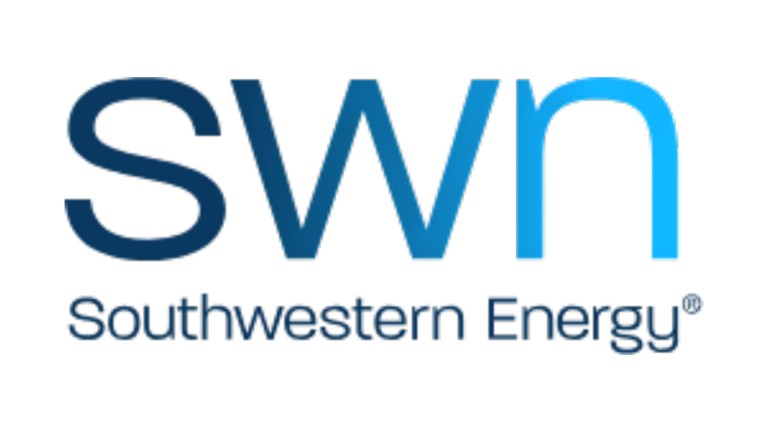
November 14, 2023: The energy sector in the southwestern United States is facing a period of significant transformation, driven by factors such as rising energy demand, technological advancements, and environmental considerations. This complex landscape presents opportunities and risks for investors, requiring careful assessment and strategic decision-making.
Opportunities for Growth
The southwestern region is home to vast reserves of natural gas and oil, making it a key player in the global energy market. Recent technological breakthroughs in fracking and horizontal drilling have unlocked these resources, leading to a surge in production and attracting substantial investments.
Additionally, the region’s abundant renewable energy potential, particularly in solar and wind power, is attracting growing attention. Investors are recognizing the long-term growth prospects of renewable energy, particularly in light of global decarbonization initiatives.
Emerging Challenges
Despite the promising opportunities, the southwestern energy sector faces several challenges that investors must consider. Environmental concerns surrounding fracking and its potential impact on water resources and air quality are gaining momentum. Regulatory scrutiny and possible restrictions on fracking could impact production and profitability.
Moreover, the transition to a low-carbon economy is creating pressure on fossil fuel companies to adapt and diversify their operations. Investors must assess companies’ ability to navigate this shift and capitalize on emerging clean energy opportunities.
Navigating the Evolving Landscape
Investors in the southwestern energy sector must carefully evaluate the interplay between opportunities and risks. They should consider factors such as:
- Regulatory Environment and Potential Changes in Fracking Practices
- Companies’ commitment to sustainability and their ability to adapt to the low-carbon economy
- Technological advancements and their impact on production costs and efficiency
- Long-term demand trends for fossil fuels and renewable energy
By carefully assessing these factors, investors can make informed decisions that align with their risk tolerance and investment objectives. The southwestern energy sector remains a dynamic and potentially rewarding investment domain, but it requires a nuanced understanding of the evolving landscape and the ability to navigate its complexities.
Verve Therapeutics Stock Soars 24% on Expanded Eli Lilly Partnership

November 02, 2023: Verve Therapeutics’ (NASDAQ: VRV) stock price jumped 24% on Tuesday after the company announced an expanded partnership with Eli Lilly (NYSE: LLY). Under the new agreement, Lilly will share 33% of global development costs and jointly commercialize Verve’s PCSK9 and ANGPTL3 gene-editing programs in the U.S. Verve will retain all product rights outside the U.S. and oversee the development and commercialization of all collaboration products.
The expanded partnership is a significant validation of Verve’s gene-editing platform and its potential to revolutionize the treatment of cardiovascular disease. PCSK9 and ANGPTL3 are both proteins that play a role in cholesterol metabolism. By editing these genes, Verve aims to develop one-time treatments that significantly lower cholesterol levels and reduce the risk of heart attack and stroke.
The expanded partnership with Eli Lilly also gives Verve access to Lilly’s deep expertise in cardiovascular drug development and commercialization. This will be invaluable as Verve’s gene-editing therapies progress through clinical trials and into the market.
Significance of the Expanded Partnership
The expanded partnership between Verve Therapeutics and Eli Lilly is significant for several reasons:
- It is a significant validation of Verve’s gene-editing platform and its potential to revolutionize the treatment of cardiovascular disease.
- The partnership gives Verve access to Lilly’s expertise in cardiovascular drug development and commercialization.
- The partnership could lead to the development and commercialization of one-time treatments for high cholesterol and other cardiovascular diseases.
Impact on Verve’s Stock Price
The announcement of the expanded partnership with Eli Lilly had a significant impact on Verve’s stock price, sending it up 24% on Tuesday. This is a sign that investors are excited about the potential of Verve’s gene-editing therapies and the collaboration with Lilly.
Conclusion
The expanded partnership between Verve Therapeutics and Eli Lilly is a significant milestone for both companies and the field of gene editing. The partnership could lead to the development and commercialization of one-time treatments for high cholesterol and other cardiovascular diseases. This would be a breakthrough for patients and the healthcare industry.
President Biden Approves Largest Offshore Wind Project in U.S. History

November 02, 2023: President Joe Biden on Tuesday approved the construction of the largest offshore wind farm in the United States, the Coastal Virginia Offshore Wind (CVOW) project. Located 23.5 nautical miles off Virginia Beach, the CVOW project will generate 2.6 gigawatts of clean energy, enough to power over 900,000 homes.
The approval of the CVOW project is a significant step forward for the Biden administration’s goal of deploying 30 gigawatts of offshore wind energy capacity by 2030. Offshore wind is a critical component of the administration’s clean energy plan, which aims to reduce greenhouse gas emissions and create jobs.
The CVOW project is expected to create over 900 jobs during the construction phase and 1,100 jobs during the operations phase. The project will also generate significant economic benefits for the Virginia coastal region.
“The approval of the Coastal Virginia Offshore Wind project is a major victory for the climate, the economy, and the people of Virginia,” President Biden said in a statement. “This project will create jobs, generate clean energy, and help us reach our goal of a net-zero emissions economy by 2050.”
The CVOW project is expected to begin construction in 2024 and be completed in 2026.
Significance of the CVOW Project
The CVOW project is significant for several reasons:
- It is the largest offshore wind project in the United States to date.
- It is the first offshore wind project to be approved under the Biden administration.
- The project is expected to generate significant economic benefits for the Virginia coastal region.
The CVOW project is also significant because it shows the growing momentum of the offshore wind industry in the United States. The Biden administration has set ambitious goals for offshore wind development, and the CVOW project is a significant step towards achieving those goals.
Conclusion
The approval of the Coastal Virginia Offshore Wind project is a significant victory for the Biden administration’s clean energy plan. The project will create jobs, generate clean energy, and help the United States reach its goal of a net-zero emissions economy by 2050.
General Electric Earnings Beat Estimates, Revenue Tops Forecasts

October 27, 2023: General Electric (GE) reported better-than-expected earnings and revenue for the third quarter of 2023 as its industrial and healthcare businesses performed well.
GE earned $0.82 per share in the third quarter, beating analyst estimates by $0.26. Revenue for the quarter came in at $17.3 billion, topping estimates by $1.6 billion.
GE’s industrial business, which makes jet engines, power turbines, and other industrial equipment, reported revenue of $10.3 billion in the third quarter, up 14% from last year. GE’s healthcare business, which makes medical devices and imaging machines, reported revenue of $4.6 billion in the third quarter, up 19% from last year.
GE CEO Larry Culp said the company is “pleased” with its third-quarter results. He also noted that GE is “well-positioned” for continued growth in the future.
“We are making good progress on our transformation plan,” Culp said. “We are seeing strong momentum in our industrial and healthcare businesses. We are also progressing in reducing costs and simplifying our operations.”
GE raised its full-year earnings guidance for 2023. The company now expects to earn $2.55 to $2.65 per share in 2023, from its previous guidance of $2.10 to $2.30 per share.
Here are some additional details about GE’s third-quarter results:
- GE’s organic revenue, which excludes the impact of acquisitions and divestitures, grew 10% in the third quarter.
- GE’s free cash flow was $1.8 billion in the third quarter.
- GE’s backlog of orders was $22.4 billion at the end of the third quarter.
Could 1987-Style Crash Be Coming?

October 27, 2023: The stock market has been on a downward spiral in recent months, and some experts are warning that a 1987-style crash could be on the horizon.
In 1987, the Dow Jones Industrial Average fell 22.6% in a single day, the most significant one-day percentage decline in its history. Several factors, including rising interest rates, inflation, and the Iran-Contra affair, caused the crash.
Today, several similar factors could lead to a stock market crash. Interest rates are rising, inflation is at a 40-year high, and the war in Ukraine is causing uncertainty in the global economy.
In addition, the stock market is overvalued, according to some analysts. The Shiller price-to-earnings ratio, a measure of stock market valuation, is currently at 30. This is above the historical average of 16.
If interest rates continue to rise, it could lead to a decline in corporate profits. This would not be good for stocks, as investors would be less likely to invest in companies that are not making money.
Inflation is also a concern for investors. Inflation erodes the value of money over time, so investors need to ensure that their investments can keep up with inflation. If inflation continues to rise, it could lead to a decline in stock prices.
The war in Ukraine is also causing uncertainty in the global economy. The war has led to higher energy prices and supply chain disruptions. This uncertainty could lead to a decline in investor confidence, which could lead to a stock market crash.
While it is impossible to predict the future, it is important to know the risks that could lead to a stock market crash. Investors should carefully consider their risk tolerance and investment goals before making investment decisions.
Here are some additional details about the potential for a 1987-style crash:
- The Federal Reserve is aggressively raising interest rates to combat inflation.
- Inflation is at a 40-year high, and some economists believe it could increase.
- The war in Ukraine is causing uncertainty in the global economy and disrupting supply chains.
- The stock market is overvalued, according to some analysts.
- Investors should carefully consider these risks before making any investment decisions.
US Bond Yields Continue to Rise on Interest Rate Concerns

October 23, 2023: US bond yields continued to rise on October 23, 2023, as investors prepared for the Federal Reserve to raise interest rates next week. The yield on the 10-year Treasury note rose to 4.0%, its highest level since 2008.
Bond yields are increasing in anticipation that the Fed will raise interest rates by 0.75 percentage points at its meeting next week. This would be the third consecutive 0.75 percentage point hike, bringing the Fed’s benchmark interest rate from 3.75% to 4.0%.
The Fed is raising interest rates to combat high inflation. Inflation in the US is currently at a 40-year high, and the Fed is concerned that it could remain elevated for longer.
Higher interest rates typically lead to lower bond prices. This is because investors can buy new bonds with higher yields, which makes older bonds with lower yields less attractive.
The rise in bond yields is bad news for homeowners and businesses looking to borrow money. Higher interest rates will make it more expensive to borrow money, which could slow economic growth.
Analysis:
The rise in bond yields is a sign that investors are becoming more concerned about the outlook for the US economy. Investors are worried that the Fed’s aggressive interest rate hikes could push the economy into a recession.
The Fed is facing a tricky balancing act. It is trying to raise interest rates high enough to combat inflation but also trying to avoid causing a recession. It remains to be seen whether the Fed will be able to achieve a soft landing.
Elon Musk Questions Wikimedia Foundation’s Fundraising Practices

October 23, 2023: Elon Musk tweeted a question to the Wikimedia Foundation, asking why the organization needs so much money. The Wikimedia Foundation is a non-profit organization that operates Wikipedia and other free knowledge projects.
The Wikimedia Foundation relies on donations from individuals and organizations to fund its operations. In 2022, the foundation received over $150 million in donations.
The foundation uses this money to pay for a variety of expenses, including:
- Server costs
- Staff salaries
- Research and development
- Legal fees
- Marketing and outreach
The Wikimedia Foundation has said that it needs to raise more money to keep Wikipedia and its other projects free and accessible to everyone. The foundation also wants to invest in new technologies and initiatives to improve the user experience and expand Wikipedia’s reach.
Analysis:
Elon Musk’s question about the Wikimedia Foundation’s fundraising practices has sparked a debate about the future of Wikipedia. Some people believe that the foundation needs to be more focused on raising money and that this is leading to a decline in the quality of Wikipedia’s content. Others believe that the foundation is doing a good job of balancing its fundraising needs with its commitment to providing free knowledge to everyone.
It is important to note that the Wikimedia Foundation is a non-profit organization. This means that it is not trying to make a profit. The foundation’s only goal is to keep Wikipedia and its other projects free and accessible.
The Wikimedia Foundation has a long history of being transparent about its finances. The foundation publishes an annual financial report that details its income and expenses. The foundation also has an independent auditor that reviews its financial statements.
Overall, the Wikimedia Foundation is a well-run organization committed to providing everyone with free knowledge. The foundation’s fundraising practices are transparent and accountable.
Thales Brings Passwordless Fingerprint Authentication to the Enterprise

October 20, 2023: Thales, a leading global technology and security provider, has announced the launch of the SafeNet IDPrime FIDO Bio Smart Card, a security key that enables passwordless fingerprint authentication for the enterprise.
The SafeNet IDPrime FIDO Bio Smart Card allows users to quickly and securely access enterprise devices, applications, and cloud services using a fingerprint instead of a password. This provides several benefits, including:
Improved security: Passwordless authentication is more secure than passwords, as hacking or stealing a fingerprint is more complicated.
Reduced user friction: Passwordless authentication is easier than passwords, as users do not have to remember or type passwords.
Increased compliance: Passwordless authentication can help organizations to comply with data security regulations such as GDPR.
The SafeNet IDPrime FIDO Bio Smart Card is easy to use and deploy. Users must tap the card on a compatible device to authenticate themselves. The card is also compatible with various enterprise applications and cloud services.
Thales’ launch of the SafeNet IDPrime FIDO Bio Smart Card is a significant step forward for passwordless authentication in the enterprise. The card provides a secure, convenient, and compliant way for organizations to enable passwordless user authentication.
The SafeNet IDPrime FIDO Bio Smart Card is easy to use and deploy and is compatible with a wide range of enterprise applications and cloud services.
CVS Removes Ineffective Decongestants from Shelves

October 20, 2023: CVS Health has announced removing certain decongestant products from its shelves and discontinuing sales. The decision follows a recommendation from an advisory panel to the US Food and Drug Administration (FDA) that the decongestant ingredient phenylephrine is ineffective when taken orally.
Phenylephrine is a common ingredient in many over-the-counter decongestant products. It works by narrowing blood vessels in the nose, which can help reduce inflammation and swelling. However, the FDA advisory panel found insufficient evidence to support the claim that phenylephrine is effective when taken orally.
CVS Health is taking the precautionary step of removing all oral decongestant products that contain phenylephrine from its shelves. The company also recommends that consumers talk to their doctor about other options for relieving nasal congestion.
The FDA has yet to decide on the status of phenylephrine in over-the-counter decongestants. However, the agency is reviewing the evidence and may take action.
Patriot Hydrogen Advancing New South Wales Waste-to-Energy Project

October 17, 2023: Patriot Hydrogen, a climate-tech waste-to-energy project developer, is moving forward with its biomass clean energy project in New South Wales, Australia. The project is expected to be commissioned in 2024 and will be the first in the country.
The project will convert wood waste from an operating timber sawmill into renewable electricity and biochar through a state-of-the-art pyrolysis system. The pyrolysis system breaks down organic material without oxygen, producing a combustible gas, biochar, and water vapor. The combustible gas can generate electricity, while the biochar is a carbon-rich solid that can be used as a soil amendment or fertilizer.
The project is expected to generate 20 megawatts of renewable electricity to power 15,000 homes. It will also produce 10,000 tonnes of biochar per year.
Patriot Hydrogen has signed a power purchase agreement with the timber mill to buy the renewable electricity generated by the project. The mill will also provide the land for the project and has agreed to a long-term contract to supply wood waste.
The project is expected to create 50 jobs during construction and 20 permanent jobs during operation. It will also significantly boost the local economy by reducing the amount of wood waste that needs to be landfilled or incinerated.
Analysis
Patriot Hydrogen’s waste-to-energy project is a positive development for New South Wales and Australia. The project will generate renewable electricity, reduce waste, and create jobs.
The project is also a sign of the growing interest in waste-to-energy technology. Waste-to-energy technology can help to reduce greenhouse gas emissions and divert waste from landfills.
Conclusion
Patriot Hydrogen’s waste-to-energy project is a significant step toward developing clean energy in New South Wales. The project will generate renewable electricity, reduce waste, and create jobs. It is also a sign of the growing interest in waste-to-energy technology, which has the potential to play a significant role in reducing greenhouse gas emissions and diverting waste from landfills.
Rolls-Royce Cuts 2,500 Jobs to Streamline Operations

October 17, 2023: Rolls-Royce, the British aerospace and defense company, announced today that it will cut 2,500 jobs as part of a cost-cutting drive. The cuts will affect employees across the company’s global operations, but most are expected to be in the UK.
The job cuts are the latest step in a turnaround plan by Rolls-Royce CEO Tufan Erginbilgic, who took over in January 2023. Erginbilgic has said that the company needs to become more efficient and streamline its operations to remain competitive.
Rolls-Royce has been struggling in recent years due to several factors, including the COVID-19 pandemic, the war in Ukraine, and rising costs. The company has also been hit by problems with its Trent 1000 engine, which is used on Boeing 787 Dreamliner aircraft.
The job cuts are a difficult but necessary step for Rolls-Royce as it seeks to secure its long-term future. The company has said that it will support affected employees and is committed to creating new jobs in the future.
Analysis
Rolls-Royce’s decision to cut 2,500 jobs shows the aerospace industry’s challenges. The industry has been hit hard by the COVID-19 pandemic, and the war in Ukraine has also had a negative impact.
Rolls-Royce is one of many aerospace companies that are cutting jobs. In recent months, Airbus and Boeing have also announced job cuts. The job cuts reflect that the aerospace industry is oversupplied with aircraft.
The job cuts at Rolls-Royce are also a sign of the company’s financial difficulties. Rolls-Royce has been struggling in recent years due to several factors, including the COVID-19 pandemic, the war in Ukraine, and rising costs.
Conclusion
The job cuts at Rolls-Royce are a difficult but necessary step for the company as it seeks to secure its long-term future. The company has said that it will support affected employees and is committed to creating new jobs in the future.
Joe Biden Aims to Position US as Leader in Hydrogen Economy

October 16, 2023: President Joe Biden announced today that the US government will invest $7 billion in seven new hydrogen hubs nationwide. The hubs will produce clean hydrogen fuel from renewable energy sources and support the development of a hydrogen economy in the United States.
President Biden announced in Philadelphia, Pennsylvania, a critical swing state in the upcoming 2024 presidential election. The investment in hydrogen hubs is part of the Biden administration’s plan to create jobs and boost the economy in clean energy sectors.
What Are Hydrogen Hubs?
Hydrogen hubs are clusters of businesses and organizations that produce, store, and distribute clean hydrogen fuel. The hubs will use renewable energy sources to produce hydrogen, including solar, wind, and hydropower.
The hydrogen produced at the hubs will be used to power various applications, including transportation, manufacturing, and electricity generation. Hydrogen is also a promising fuel for long-term energy storage.
Benefits of Hydrogen Hubs
Hydrogen hubs offer several benefits, including:
Job creation: Hydrogen hubs are expected to create thousands of jobs in the construction, operation, and maintenance phases.
Economic growth: Hydrogen hubs will attract new investment to communities and support the clean energy sector’s growth.
Energy security: Hydrogen hubs will help to reduce the US reliance on foreign oil and other fossil fuels.
Environmental benefits: Hydrogen is a clean-burning fuel that produces no greenhouse gas emissions.
What to Watch For
- The development of the seven new hydrogen hubs
- The impact of the hydrogen hubs on the US economy and energy security
- The progress of the Biden administration’s plan to create a hydrogen economy
US FDA Blocks Some Flavors of British American Tobacco’s Key Vape Brand Vuse

October 16, 2023: The US Food and Drug Administration (FDA) announced today that it has blocked the sale of six flavors of British American Tobacco’s essential vape brand Vuse. The flavors include menthol, mint, mango, cucumber, glazed donuts, and vanilla.
The FDA cited health concerns for youth as the reason for the ban. The agency said that menthol-flavored vapes are top-rated among young people and may make it more likely for teens to start smoking cigarettes.
British American Tobacco said that it will challenge the FDA’s decision. The company said that it believes that its Vuse products are safe for adults and help smokers switch away from cigarettes.
What to Watch For
- The outcome of British American Tobacco’s challenge to the FDA’s decision
- The impact of the ban on Vuse sales
- The FDA’s next steps on vaping regulation
Wholesale Inflation in the US Hit 2.2% in September.

October 12, 2023:
- US wholesale inflation rose to 2.2% in September, the highest level since April.
- The increase was driven by a rise in the price of goods, including food and energy.
- Wholesale inflation is a measure of the prices businesses pay for goods and services and is a leading indicator of consumer inflation.
What does this mean for consumers?
Wholesale inflation is a leading indicator of consumer inflation, so the rise in wholesale inflation in September suggests that consumer inflation is likely to remain high in the coming months.
This means that consumers can expect to pay more for goods and services. It is important to note that the Federal Reserve is raising interest rates to combat inflation, but these rate hikes may take some time to impact significantly.
What can consumers do to prepare?
There are several things that consumers can do to prepare for higher inflation:
- Create a budget and track your spending. This will help you to identify areas where you can cut back.
- Shop around for the best deals. Compare prices online and in stores to find the best deals on the goods and services you need.
- Consider buying in bulk. This can save you money on items that you use regularly.
- Pay off debt. The less debt you have, the less money you will spend on interest payments.
- Invest in yourself. Consider taking courses or workshops to improve your skills and make yourself more marketable. This could lead to a higher salary or new job opportunities.
The rise in wholesale inflation in September indicates that inflationary pressures remain in the US economy. Consumers can expect to pay more for goods and services in the coming months. Consumers can do several things to prepare for higher inflation, such as creating a budget, shopping around for the best deals, and paying off debt.
Sysco to Acquire Edward Don & Company

October 12, 2023: Sysco Corporation, the world’s largest food service distributor, has announced plans to acquire Edward Don & Company, a leading food service equipment, supplies, and disposables distributor.
The deal is expected to close in early 2024 and will give Sysco a stronger foothold in the equipment and supplies market.
Edward Don & Company generates approximately $1.3 billion in annual revenue and has a network of over 20 distribution centers across the United States.
Sysco CEO Kevin Hourican said the acquisition will “drive accretive value to Sysco’s business and enable Sysco better to serve our customers with a more complete product assortment.”
What does this mean for customers?
Customers of Sysco and Edward Don & Company can expect to benefit from the acquisition in several ways. Sysco will be able to offer its customers a wider range of products and services, and it will be able to do so at more competitive prices.
Sysco also has a strong reputation for customer service, so Edward Don & Company customers can expect to receive the same high level of service after the acquisition.
What does this mean for employees?
Sysco plans to retain Edward Don & Company’s employees after the acquisition. This is good news for employees, as it means they will not have to worry about losing their jobs.
Sysco is also a good company to work for, with a strong track record of employee satisfaction. Edward Don & Company employees can expect to benefit from Sysco’s employee benefits package, which includes health insurance, retirement savings plans, and paid time off.
Conclusion
The acquisition of Edward Don & Company by Sysco is a positive development for both customers and employees. Customers can expect to benefit from a wider range of products and services, and employees can expect the same high service and benefits.
Risk Live North America 2023

October 11, 2023: Risk Live North America takes place in NYC on October 19, 2023 and unites senior risk management and risk transfer professionals, providing a convenient platform for the exchange of ideas, access to cutting-edge insights, benchmarking, and relationship building. Whether you are interested in risk management, operational risk, investment risk, climate risk, or ALM, join us to future-proof your business.
This event provides the unique opportunity to connect with your peers and create meaningful business relationships, as well as gain insights from over 100 industry leading speakers on the latest developments in the industry. Get exclusive access to cutting-edge discussions that will keep you ahead of the curve and discover the array of innovative solutions available to address current market issues.
Risk Live offers content-focused stages to attend, including Risk Management, OpRisk, Investment Risk, ALM and Climate Risk. Each caters to the specific interests of attendees and are led by world-renowned speakers and industry experts. Breaks will be included to allow for networking and visiting our sponsors. We look forward to seeing you there.
Contact us at:
Antony Chambers, Publishing
[email protected]
Dan Aldrige, Head of Marketing
[email protected]
Patrick Asdurian, Head of Events
[email protected]
Cybercriminals have found a way to take control of Citrix NetScaler login pages.

October 10, 2023: Hackers exploit a critical vulnerability in Citrix NetScaler devices to hijack login pages and steal credentials. The vulnerability, CVE-2023-3519, is a remote code execution flaw that allows attackers to inject malicious code into NetScaler devices.
Once the code is injected, the attackers can redirect users to fake login pages designed to steal their credentials. The attackers can then access users’ accounts and systems using the stolen credentials.
Citrix has released a patch for the vulnerability, but many organizations still need to apply it. This is making them vulnerable to attack.
Implications of the Citrix NetScaler Login Page Hijacking
The Citrix NetScaler login page hijacking has several implications for businesses, consumers, and investors.
The Citrix NetScaler login page hijacking is a serious security threat. Businesses and consumers should take steps to protect themselves from attack.
Additional Information
Citrix NetScaler is a popular load-balancing and application delivery controller. NetScaler devices are used by businesses and organizations of all sizes to manage their networks and applications.
The CVE-2023-3519 vulnerability is critical for attackers to execute arbitrary code on NetScaler devices. This means that attackers can use the vulnerability to take control of NetScaler devices and install malware, steal data, or launch attacks against other systems.
Citrix has released a patch for the vulnerability, but many organizations still need to apply it. This is making them vulnerable to attack.
Businesses and consumers should take the following steps to protect themselves from attack:
- Patch Citrix NetScaler devices as soon as possible.
- Implement strong password policies and require users to change their passwords regularly.
- Enable multi-factor authentication for all accounts.
- Monitor networks and systems for suspicious activity.
- Investors should carefully consider all the information available before making any investment decisions.
PepsiCo has reported earnings of $23.45 billion, surpassing analysts’ estimates.

October 10, 2023: PepsiCo beat earnings estimates on Tuesday, reporting third-quarter earnings of $2.25 per share on revenue of $23.45 billion. Analysts expected $2.15 per share on revenue of $23.39 billion.
The company’s results were boosted by strong demand for snacks and beverages, particularly in North America. PepsiCo also raised its full-year earnings guidance, saying it now expects to earn $6.65 to $6.70 per share, up from its previous guidance of $6.60 to $6.65 per share.
Implications of PepsiCo’s Earnings Beat
PepsiCo’s earnings beat has several implications for businesses, consumers, and investors.
Businesses that operate in the food and beverage industry could benefit from PepsiCo’s earnings beat. For example, businesses that supply goods and services to PepsiCo could see increased demand.
Consumers are unlikely to be directly affected by PepsiCo’s earnings beat. However, the beat could lead to lower prices for PepsiCo products if the company passes on its cost savings to consumers.
Investors in PepsiCo stock could benefit from the company’s earnings beat. The beat could lead to higher stock prices for PepsiCo.
PepsiCo’s earnings beat is a positive development for the company and its stakeholders. The beat suggests that the company’s snacks and beverage businesses are strong and that the company is well-positioned to weather the current economic challenges.
Additional Information
PepsiCo is one of the largest food and beverage companies in the world. The company produces various products, including snacks, beverages, and food service products. PepsiCo’s brands include Pepsi-Cola, Frito-Lay, Mountain Dew, Gatorade, and Tropicana.
The company’s earnings beat comes when the food and beverage industry faces several challenges, including rising inflation and supply chain disruptions. PepsiCo’s results suggest that the company is well-positioned to navigate these challenges.
Investors and other stakeholders should carefully consider all the information available before making any investment decisions.
Investors Sell Bonds in Droves as Interest Rates Rise

October 09, 2023: Investors are selling bonds in droves as interest rates rise. The bond market is experiencing its worst sell-off in decades, with bond prices plummeting and yields soaring.
There are several reasons why investors are selling bonds. First, the Federal Reserve is raising interest rates aggressively to combat inflation. Higher interest rates make existing bonds less attractive, as investors can buy new bonds with higher yields.
Second, investors are worried about a potential recession. A recession would likely lead to a decline in economic growth and corporate profits, hurting bond prices.
Finally, investors rotate out of bonds and into other asset classes, such as stocks and commodities. This is because stocks and commodities are seen as riskier investments, but they also have the potential to generate higher returns.
The bond sell-off has several implications for businesses, consumers, and investors.
Businesses sensitive to interest rates, such as consumer discretionary companies and technology companies, could be particularly vulnerable to the bond sell-off.
Consumers could see higher interest rates on mortgages, auto loans, and other types of loans. Consumers could also see lower returns on their bond investments.
Bond investors should be aware of the risks of investing in the bond market in the current environment. Investors should carefully consider their risk tolerance and investment objectives before making investment decisions.
The bond sell-off is a sign of the rising interest rates and the growing concerns about the economy. Investors should carefully consider the risks of investing in the bond market and have a well-diversified investment portfolio.
Additional Information
The bond sell-off is also having a ripple effect on other financial markets. For example, the stock market has been volatile in recent weeks as investors worry about the impact of higher interest rates on corporate profits.
The bond sell-off is a reminder that the financial markets can be volatile and unpredictable. Investors should carefully consider their risk tolerance and investment objectives before making investment decisions.
Paccar (PCAR): A Strong Growth Stock

October 09, 2023: Paccar (PCAR) is a leading manufacturer of medium- and heavy-duty trucks under the premium brands Kenworth and Peterbilt. The company also provides financial services and leasing through Paccar Financial Services.
Paccar is a strong growth stock for several reasons. First, the company is dominant in the North American truck market. Paccar commands approximately 28% of North America’s Class 8 market share.
Second, Paccar is well-positioned to benefit from the growth of e-commerce. E-commerce drives demand for trucks as businesses must transport more goods to consumers.
Third, Paccar invests heavily in new technologies, such as electric trucks and autonomous driving. This investment should help Paccar to maintain its competitive advantage in the long term.
In addition to its strong fundamentals, Paccar has several other factors that make it a good growth stock. The company has a strong track record of profitability and dividend growth. Paccar also has a healthy balance sheet and a low debt-to-equity ratio.
Paccar’s strong growth has several implications for businesses, consumers, and investors.
Businesses that operate in the transportation and logistics industries could benefit from Paccar’s strong growth. For example, businesses that supply goods and services to Paccar or its customers could see increased demand.
Consumers are unlikely to be directly affected by Paccar’s strong growth. However, the development could lead to lower prices for goods and services as businesses become more efficient.
Investors in Paccar stock could benefit from the company’s strong growth. Paccar has a long track record of outperforming the broader stock market.
Paccar is a strong growth stock with several factors that make it a good investment. The company has a dominant position in the North American truck market, is well-positioned to benefit from the growth of e-commerce, and is investing heavily in new technologies. Investors should consider Paccar for their investment portfolios.
Additional Information
Paccar is a cyclical stock, meaning its performance is tied to the economy. Paccar’s sales and profits tend to increase when the economy is strong. Paccar’s sales and profits tend to decline when the economy is weak.
Despite its cyclical nature, Paccar has a long track record of success. The company has been profitable for over 80 consecutive years. Paccar has also paid a dividend to shareholders for over 50 straight years.
Overall, Paccar is a strong growth stock with several factors that make it a good investment. Investors should consider Paccar for their investment portfolios.
U.S. Treasury Details EV Tax Credit Rebate Rules

October 06, 2023: The U.S. Treasury Department has released new rules for the electric vehicle (EV) tax credit rebate program, which is scheduled to launch in January 2024.
Under the new rules, consumers will receive the tax credit rebate at the point of sale when they purchase a new EV. The rebate will be applied to the purchase price of the vehicle, reducing the amount of money the consumer must pay upfront.
The amount of the rebate will vary depending on the battery capacity of the EV. Vehicles with a battery capacity of at least 7 kilowatt hours will be eligible for a refund of up to $7,500. Vehicles with a battery capacity of less than 7 kilowatt hours will be eligible for a rebate of up to $3,750.
To qualify for the rebate, the EV must be assembled in North America and meet specific other requirements, such as a maximum retail price of $80,000 for sedans and $100,000 for vans, SUVs, and pickup trucks.
Implications of the New Rules
The new rules for the EV tax credit rebate program have several implications for businesses, consumers, and investors.
Businesses that sell EVs may benefit from the new rules, as they could lead to increased sales of EVs.
Consumers considering purchasing an EV will benefit from the new rules, as they will receive the tax credit rebate at the point of sale. This will make EVs more affordable for consumers.
Investors in companies that manufacture or sell EVs may benefit from the new rules, as they could increase demand for EVs.
The new rules for the EV tax credit rebate program are a positive development for the EV industry. The rules are expected to make EVs more affordable for consumers and could lead to increased sales of EVs.
Additional Information
The EV tax credit rebate program is part of the Biden administration’s efforts to promote the adoption of EVs. The administration has set a goal of having half of all new vehicles sold in the United States be electric by 2030.
The new rules for the EV tax credit rebate program are expected to help the Biden administration achieve its goal of promoting the adoption of EVs. The rules will make EVs more affordable for consumers and could lead to increased sales of EVs.
Overall, the new rules for the EV tax credit rebate program are a positive development for the EV industry and the Biden administration’s efforts to promote the adoption of EVs.
Biden Waves Off $9 Billion in Student Loan Debt with a Catch

October 05, 2023: President Joe Biden announced Wednesday, October 5, 2023, that he is waiving $9 billion in student loan debt for 125,000 borrowers. The relief results from the Biden administration’s fixes to several programs, including income-driven repayment plans and Public Service Loan Forgiveness.
However, there is a catch. The relief is not automatic. Borrowers must apply for it. The application process is expected to open in the coming weeks.
The Biden administration estimates the relief will erase all student loan debt for about 22,000 borrowers. It will also provide a partial replacement to the remaining 103,000 borrowers.
Student loan debt relief is a significant development for borrowers and the economy. Businesses, consumers, and investors should be aware of the potential impact of the relief.
Additional Information
The student loan debt relief is the latest in a series of steps that the Biden administration has taken to address the burden of student loan debt. The administration has also extended the pause on student loan payments through December 31, 2022.
Advocates have praised the student loan debt relief for borrowers and students. However, it has also been criticized by some Republicans and conservative groups.
Overall, student loan debt relief is a positive development for borrowers and the economy. The relief is expected to provide relief to millions of borrowers and help to boost consumer spending.
Student Loan Debt Forgiveness Arrives for Some Borrowers.

October 05, 2023: Some borrowers have begun receiving student loan debt forgiveness under the Biden administration’s plan, while others are resuming payments after a months-long pause.
The Biden administration announced in August 2022 that it would forgive up to $10,000 in student loan debt for borrowers who earn less than $125,000 per year or up to $20,000 for Pell Grant recipients. The administration also extended the pause on student loan payments through December 31, 2022.
On September 29, 2023, the Biden administration began processing student loan debt forgiveness applications. The administration said borrowers could expect relief within four to six weeks of submitting their applications.
However, not all borrowers are eligible for student loan debt forgiveness. Borrowers with private student loans or federal student loans that private banks guarantee are not eligible for relief.
In addition, some borrowers are still waiting to see if they will be eligible for student loan debt forgiveness. The Biden administration is reviewing a lawsuit that challenges the legality of its forgiveness plan.
Implications of the Student Loan Debt Forgiveness
The student loan debt forgiveness program has several implications for businesses, consumers, and investors.
The student loan debt forgiveness program is a significant development for borrowers and the economy. Businesses, consumers, and investors should be aware of the program’s potential impact.
Additional Information
The student loan debt forgiveness program is the largest one-time student loan debt relief program in U.S. history. The program is expected to benefit over 40 million borrowers.
Advocates have praised the program for borrowers and students. However, it has also been criticized by some Republicans and conservative groups.
Overall, the student loan debt forgiveness program is a positive development for borrowers and the economy. The program is expected to relieve millions of borrowers and help boost consumer spending.
N.Y. Fed Announces Small Value Reverse Repo Exercise

October 04, 2023: The New York Fed announced on Wednesday, October 4, 2023, that it will conduct a small value reverse repurchase agreement (RRP) exercise on Thursday, October 5, 2023. The exercise tests the Fed’s operational readiness to implement existing and potential policy directives from the Federal Open Market Committee (FOMC).
The RRP exercise will be open to Primary Dealers and Reverse Repo Counterparties. Eligible counterparties can submit bids to sell U.S. Treasury securities to the Fed overnight. The Fed will accept bids up to a maximum of $1 million per counterparty.
The RRP exercise is expected to settle on Thursday, October 5, 2023, and mature on Friday, October 6, 2023.
The RRP exercise may affect businesses that operate in the financial sector. For example, businesses that provide liquidity to the financial system may need to adjust their operations in response to the exercise.
Consumers are unlikely to be directly affected by the RRP exercise. However, the exercise could indirectly impact consumers if it leads to changes in interest rates or other financial market conditions.
Investors should be aware of the potential impact of the RRP exercise on financial markets. The exercise could lead to increased volatility in financial markets.
The NY Fed’s RRP exercise is a routine operation that is designed to test the Fed’s operational readiness. Businesses, consumers, and investors should be aware of the potential impact of the exercise, but they should be fine with it.
The NY Fed conducts RRP exercises regularly. The exercises are typically small and have no significant impact on financial markets. However, businesses, consumers, and investors need to be aware of the potential impact of these exercises.
The N.Y. Fed’s RRP exercise is a positive sign for the financial system. It suggests that the Fed is prepared to implement its policy directives and that the Fed is committed to maintaining a stable financial system.
Bob Swan, the ex-CEO of Intel, has recently purchased shares in Nike.

October 04, 2023: Former Intel CEO Bob Swan bought $1.3 million of Nike stock on Monday, October 3, 2023. Since joining Nike’s board in September 2022, this is his first stock purchase.
Swan bought 13,072 shares of Nike stock at an average price of $96.13 per share. The purchase brings his total ownership of Nike stock to 18,005 shares, plus another 1,580 shares through a family trust.
Swan’s purchase of Nike stock shows confidence in the company’s long-term prospects. Nike is a leading athletic apparel and footwear company with a strong brand and a loyal customer base. The company is also well-positioned to benefit from the growing health and fitness trend.
Implications of Swan’s Stock Purchase
Swan’s purchase of Nike stock has several implications for investors.
Investors should see Swan’s purchase of Nike stock as a positive sign. Swan is a successful businessman who profoundly understands the technology and consumer sectors. His purchase of Nike stock suggests that he believes the company is undervalued and has the potential to outperform the market in the coming years.
Swan’s purchase of Nike stock is a vote of confidence in the company’s long-term prospects. Investors should take note of his purchase and consider investing in Nike stock themselves.
Swan’s purchase of Nike stock is also notable because the stock market is experiencing much volatility. Swan’s purchase suggests that he is confident in the overall health of the economy and that he believes Nike stock is a good investment, even in a volatile market.
Swan’s purchase of Nike stock is a positive sign for investors. It suggests that he believes the company is undervalued and has the potential to outperform the market in the coming years.
Abercrombie & Fitch is currently investigating allegations of sexual misconduct made against their former CEO.

October 03, 2023: Abercrombie & Fitch has investigated sexual misconduct claims against its former CEO, Mike Jeffries. The investigation was launched after a BBC documentary aired allegations that Jeffries exploited men for sex at events he hosted worldwide.
The BBC documentary interviewed 12 men who alleged they were recruited or coerced into attending sex parties hosted by Jeffries and his partner, Matthew Smith. The men also alleged that they were abused and exploited at the parties.
Jeffries has denied all of the allegations.
Abercrombie & Fitch has said it is “appalled and disgusted” by the allegations against Jeffries. The company has also said it is committed to creating a safe and inclusive environment for all its employees and customers.
The investigation into Jeffries has several implications for businesses, consumers, and investors.
The investigation is a reminder that businesses need to take sexual misconduct allegations seriously. Businesses should have policies in place to prevent and respond to sexual misconduct. Businesses should also create a culture where employees feel comfortable reporting sexual misconduct.
Consumers should be aware of the allegations against Jeffries and other executives at major corporations. Consumers can use their purchasing power to support businesses committed to creating a safe and inclusive environment for all.
Investors should know the risks of investing in companies accused of sexual misconduct. Investors should also consider investing in companies with strong policies to prevent and respond to sexual misconduct.
The investigation into Jeffries is a positive step towards addressing sexual misconduct in the workplace. Businesses, consumers, and investors all have a role in creating a more just and equitable society.
Additional Tips
Sexual misconduct is a serious problem that can have devastating consequences for victims. It is essential to be aware of the signs of sexual misconduct and to know how to report it.
If you experience or witness sexual misconduct, please reach out to a trusted friend or family member for support. You can also report sexual misconduct to your employer, the police, or a confidential hotline.
Together, we can create a world where everyone is safe from sexual misconduct.
New air quality sensors have been installed in Escambia County.

October 03, 2023: Escambia County in Florida has installed 12 new air quality sensors. The sensors are designed to monitor levels of particulate matter, ozone, and other pollutants in the air.
The new sensors are part of the county’s efforts to improve air quality and protect public health. The data collected by the sensors will be used to identify areas with poor air quality and develop plans to enhance the air quality in those areas.
The new sensors are located throughout the county, including near schools, hospitals, and residential areas. The data collected by the sensors is available to the public in real-time on the county’s website.
Implications of the New Air Quality Sensors
The new air quality sensors have several implications for businesses, consumers, and investors.
Businesses that operate in Escambia County can use the data from the new air quality sensors to improve their operations and reduce their environmental impact. For example, businesses can use the data to identify ways to reduce their emissions of pollutants.
Consumers in Escambia County can use the data from the new air quality sensors to make informed decisions about their health and well-being. For example, consumers can use the data to avoid areas with poor air quality and protect themselves from pollution exposure.
Investors can use the data from the new air quality sensors to assess the environmental risks associated with investing in businesses that operate in Escambia County. Investors can also use the data to identify investment opportunities in businesses developing new technologies to improve air quality.
The new air quality sensors in Escambia County are a valuable tool for businesses, consumers, and investors. The data collected by the sensors can be used to improve air quality, protect public health, and make informed investment decisions.
Additional Tips
Air quality is a complex issue affected by various factors, including vehicle emissions, industry, and power plants. The new air quality sensors in Escambia County are a valuable tool, but there are other solutions to the problem of air pollution.
Businesses, consumers, and investors all have a role to play in improving air quality. Businesses can reduce their emissions, consumers can take steps to protect themselves from exposure to pollutants, and investors can support businesses developing new technologies to improve air quality.
The United States trade deficit will decrease in September.

October 02, 2023: According to economists surveyed by Reuters, the U.S. trade deficit is expected to have narrowed in September. The median forecast for the trade deficit is $65 billion, down from $68.3 billion in August.
The trade deficit is the difference between the value of goods and services that the United States exports and the value of goods and services it imports. A narrower trade deficit is seen as a positive sign for the U.S. economy, as it means that the country is exporting more than it is importing.
Several factors could contribute to a narrower trade deficit in September. First, the dollar has weakened in recent months. A weaker dollar makes U.S. exports more affordable to foreign buyers.
Second, the U.S. economy is expected to have grown steadily in the third quarter of 2023. This economic growth is likely to have boosted demand for U.S. exports.
Finally, the global economy is showing signs of improvement. This more robust global economy will also likely boost demand for U.S. exports.
A narrower trade deficit has several implications for businesses, consumers, and investors.
Businesses will benefit from a narrower trade deficit, which means more demand for their products and services overseas. Businesses can expect to see increased sales and profits as a result.
Consumers will also benefit from a narrower trade deficit as prices for imported goods and services will likely fall. Consumers can expect to have more money to spend on other goods and services.
Investors will benefit from a narrower trade deficit as the U.S. economy grows and more demand for U.S. exports increases. Investors can expect to see higher returns on their investments as a result.
A narrower trade deficit is a positive sign for the U.S. economy. Businesses, consumers, and investors should all benefit from a narrower trade deficit.
Businesses can take advantage of a narrower trade deficit by expanding their exports. Businesses can do this by developing new export markets and investing in their operations.
What Consumers Can Do
Consumers can exploit a narrow trade deficit by buying more American-made products. Consumers can also do their part to support the U.S. economy by spending money on local businesses.
What Investors Can Do
Investors can exploit a narrow trade deficit by investing in U.S. companies that export goods and services. Investors can also invest in funds that track the performance of the U.S. stock market.
Additional Tips
A narrower trade deficit is a good thing for the U.S. economy. However, it is essential to note that the trade deficit is just one indicator of the economy’s health. Investors should consider a variety of factors before making investment decisions.
Consumers should also be aware that the economy is cyclical and that there will be economic growth and recession periods. Consumers should always have a financial plan to prepare for unexpected events.
Next on the agenda: US GDP and Initial Jobless Claims.

October 02, 2023: According to economists surveyed by Bloomberg, the US economy is expected to have grown at a modest pace in the third quarter of 2023. The median forecast for real GDP growth is 2.2%, down from 2.6% in the second quarter.
The GDP report, released by the Bureau of Economic Analysis on Friday, October 6th, at 8:30 AM ET, will provide insights into the strength of the US economy as it faces rising interest rates, inflation, and the ongoing war in Ukraine.
Economists will also closely watch the initial jobless claims report, released by the Department of Labor on Thursday, October 6th, at 8:30 AM ET. The initial jobless claims report measures the number of new unemployment claims filed each week. A low number of initial jobless claims indicates a strong labor market.
Implications of the Economic Data
The GDP and initial jobless claims reports have several implications for businesses, consumers, and investors.
Businesses will watch the GDP and initial jobless claims reports to gauge the economy’s strength and the labor market. Businesses will use this information to make hiring, investing, and pricing decisions.
Consumers will watch the GDP and initial jobless claims reports to assess their financial situation and the job market. Consumers will use this information to make decisions about spending and saving.
Investors will watch the GDP and initial jobless claims reports to assess the economy’s health and the potential for future economic growth. Investors will use this information to decide where to allocate their investment dollars.
The GDP and initial jobless claims reports are two of the month’s most important economic data releases. Businesses, consumers, and investors should all pay attention to these reports to gauge the economy’s strength and the labor market.
Businesses can use the GDP, and initial jobless claims reports to make informed decisions about hiring, investing, and pricing. For example, if the GDP report shows that the economy is growing steadily, businesses may be more likely to hire new employees and invest in new equipment.
Consumers can use the GDP and initial jobless claims report to assess their financial situation and the job market. For example, if the GDP report shows that the economy is growing slowly, consumers may be more likely to save money and delay major purchases.
Investors can use the GDP and initial jobless claims reports to assess the economy’s health and the potential for future economic growth. For example, if the GDP report shows that the economy is growing steadily, investors may be more likely to invest in stocks and other riskier assets.
Additional Tips
The GDP and initial jobless claims reports are complex economic data releases that can be difficult to interpret. Investors should consult a financial advisor for personalized advice on using this data to make investment decisions.
Consumers should also know that the economy can be volatile and that economic conditions can change quickly. Consumers should always have a financial plan to prepare for unexpected events.
Tecala ramps up intelligent automation with rapidMation buy

September 29, 2023: Tecala, a leading provider of managed IT services and solutions, has acquired rapidMation, an intelligent automation consulting firm, for $10 million. The acquisition is part of Tecala’s strategy to expand its intellectual automation capabilities and help its customers accelerate digital transformation.
RapidMation specializes in helping organizations automate their business processes using various technologies, including artificial intelligence, machine learning, and robotic process automation (RPA). The company has a proven track record of success in helping organizations improve efficiency, reduce costs, and enhance customer service.
Tecala’s acquisition of rapidMation will give the company a significant boost in its intelligent automation capabilities. Tecala will be able to offer its customers a more comprehensive range of competent automation services and solutions, and it will be able to help its customers implement intelligent automation more quickly and effectively.
The acquisition is also a positive development for rapidMation’s customers. RapidMation’s customers will now have access to Tecala’s global reach and resources, and they will benefit from Tecala’s deep expertise in managed IT services and solutions.
Businesses
Businesses can expect to benefit from the acquisition in terms of improved access to intelligent automation services and solutions. Businesses can also expect to benefit from the combined expertise of Tecala and rapidMation.
Consumers can expect to benefit from the acquisition of improved customer service from businesses that are using intelligent automation to improve their operations.
Investors can expect to benefit from the acquisition in terms of increased revenue and profitability for Tecala. Tecala’s intelligent automation business is expected to snowball in the coming years.
Conclusion
The acquisition of rapidMation by Tecala is a significant development in the intelligent automation market. The acquisition will give Tecala a considerable boost in its intelligent automation capabilities and help Tecala better serve its customers.
What Businesses Can Do
Businesses can take advantage of the acquisition by:
- Evaluating Tecala’s intelligent automation services and solutions
- Working with Tecala to implement intelligent automation in their organizations
- Using intelligent automation to improve their efficiency, reduce costs, and enhance customer service
Intelligent automation is a rapidly growing market, and it is expected to impact businesses and consumers in the coming years significantly. Businesses still need to start using intelligent automation and should consider doing so to stay ahead of the competition.
Consumers should support businesses using intelligent automation, as these businesses will likely provide better customer service.
Investors should consider investing in well-positioned companies to benefit from the growth of the intelligent automation market.
Cramer Says Amazon and Google Stocks Are Still Buys

September 29, 2023: Jim Cramer, CNBC’s “Mad Money” host, said that Amazon and Google stocks are still buys, despite antitrust lawsuits from the US government.
“I think both Amazon and Google are still buys,” Cramer said. “I think both of these companies are doing a great job, and I think both of these companies have a bright future.”
Cramer acknowledged that the antitrust lawsuits could pose a risk to both companies, but he said he believes both companies will ultimately prevail.
“I think both companies have extreme cases,” Cramer said. “I think both companies are going to win these lawsuits.”
Cramer’s comments come as both Amazon and Google face antitrust lawsuits from the US government. The Justice Department is suing Google for allegedly abusing its dominance in the online search market, while the Federal Trade Commission is suing Amazon for allegedly using its power in the e-commerce market.
The lawsuits are a significant challenge for both companies, but they are not the only challenges they face. Amazon and Google also face increasing competition from other tech giants, such as Microsoft and Alibaba.
Despite the challenges, Cramer said that he is bullish on both companies. He said he believes both companies have solid businesses well-positioned for future growth.
Investors
Investors considering buying Amazon or Google stock should consider the risks associated with the antitrust lawsuits. The lawsuits could significantly impact both companies, both financially and operationally.
Investors should also consider the other challenges Amazon and Google face, such as increasing competition and regulatory scrutiny.
Conclusion
Cramer’s comments are a reminder that both Amazon and Google are facing significant challenges. However, he also believes that both companies are well-positioned for future growth.
Investors considering buying Amazon or Google stock should consider the risks and rewards before making an investment decision.
Additional Tips
Investors should research before investing in any stock, including Amazon and Google. Investors should also consult with a financial advisor to get personalized advice.
Investors should also be aware that the stock market is volatile and that stock prices can go down and up. Investors should only invest money that they can afford to lose.
Cisco to Acquire Splunk, to Help Make Organizations More Secure and Resilient in an AI-Powered World
Cisco to Acquire Splunk, to Help Make Organizations More Secure and Resilient in an AI-Powered World

September 26, 2023: Cisco is acquiring Splunk, the leading observability and security software provider, for $28 billion in cash. The deal is expected to close in the first half of 2024.
The acquisition is a significant coup for Cisco, as it will give the company a strong foothold in the growing observability and security markets. Splunk’s software is used by over 19,000 customers, including 90% of the Fortune 500.
Cisco CEO Chuck Robbins said that the acquisition will help Cisco to make organizations more secure and resilient in an AI-powered world.
“Splunk is a pioneer in observability and security, and we are excited to bring their team and technology into Cisco,” Robbins said. “Together, we will help our customers accelerate their digital transformation and protect their businesses from the most advanced threats.”
Splunk CEO Gary Steele said the acquisition is an excellent opportunity for Splunk customers and employees.
“We are excited to join Cisco and help them to deliver the most comprehensive security and observability platform in the world,” Steele said in a statement. “Our customers will benefit from Cisco’s global scale and resources, while our employees will have the opportunity to work on some of the industry’s most challenging and important problems.”
Implications of the Acquisition
The acquisition has several implications for businesses, consumers, and investors.
Businesses
Businesses can expect to benefit from Cisco’s investment in Splunk’s technology. Cisco will likely invest heavily in Splunk’s research and development, which could lead to new and innovative security and observability solutions. Businesses can also expect closer integration between Cisco and Splunk’s products and services.
Consumers
Consumers can expect to benefit from the acquisition in terms of improved security and performance of online services. Splunk’s technology is used by many of the world’s leading online service providers, so the acquisition could help to make these services more secure and reliable.
Investors
Investors can expect benefits from the acquisition in terms of increased revenue and profitability for Cisco. Splunk is a profitable company with a growing customer base so that the acquisition could boost Cisco’s financial performance.
Conclusion
Cisco’s acquisition of Splunk is a significant development in the security and observability markets. The acquisition is likely to benefit businesses, consumers, and investors alike.
What Businesses Can Do
Businesses can prepare for the acquisition by:
- Reviewing their security and observability needs
- Evaluating Cisco and Splunk’s products and services
- Planning to migrate to Cisco and Splunk’s platform in the future
What Consumers Can Do
Consumers can prepare for the acquisition by:
- Choosing online service providers that use Splunk’s technology
- Enabling security and privacy features on their devices and online accounts
- Being aware of the latest security threats and scams
What Investors Can Do
Investors can prepare for the acquisition by:
- Researching Cisco and Splunk’s financial performance
- Assessing the risks and rewards of investing in Cisco
- Consulting with a financial advisor to develop an investment plan
Shutdown Fears Grow, Interest Rate Decisions, Insurance Premiums Rise, More
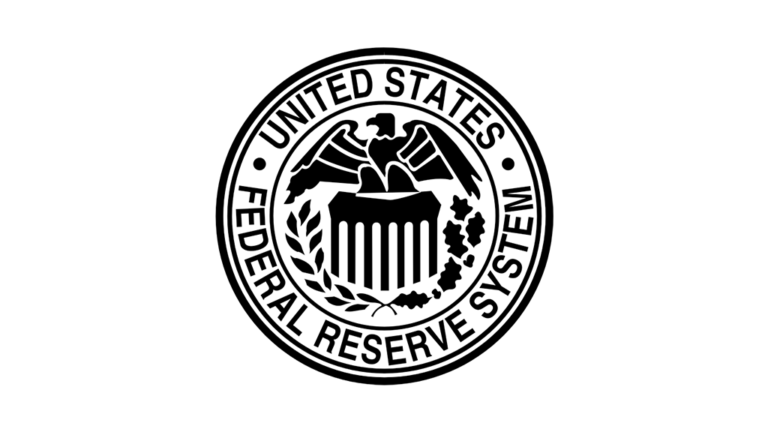
September 25, 2023: Shutdown Fears Grow
Fears of a government shutdown are growing after another day of infighting between House Republicans. The House is scheduled to vote on a spending bill on Thursday, but it is still being determined if there will be enough votes to pass it. If the bill fails, the government will shut down on October 1, 2023.
Interest Rate Decision
The Federal Reserve is expected to announce another interest rate hike on Wednesday. The Fed has been raising interest rates to combat inflation at a 40-year high. Higher interest rates make it more expensive to borrow money, which can slow economic growth.
Insurance Premiums Rise
Insurance premiums are rising for many Americans due to several factors, including inflation and supply chain disruptions. The rising cost of healthcare is also contributing to higher insurance premiums.
Other News
President Joe Biden is meeting with Israeli Prime Minister Yair Lapid in Jerusalem on Thursday. The two leaders are expected to discuss various issues, including Iran’s nuclear program and the Palestinian-Israeli conflict.
At least 32 people have been killed in a military operation led by Azerbaijan in an Armenian-controlled region. The international community has called for a ceasefire and urged the two sides to resolve their differences through diplomacy.
According to a new study by the Insurance Information Institute, climate change could push up your insurance premiums. The study found that climate change increases the frequency and severity of extreme weather events, such as hurricanes and floods. This is leading to higher insurance claims, which is driving up premiums.
Implications of the News
The news above has several implications for businesses, consumers, and investors.
Businesses
Businesses need to be prepared for the possibility of a government shutdown. A government shutdown could lead to disruptions to government services and supply chains. Businesses should also be prepared for the impact of higher interest rates and insurance premiums.
Consumers
Consumers must be prepared for the impact of higher interest rates and insurance premiums. Consumers may also need to adjust their spending habits if the government shuts down.
Investors
Investors need to be prepared for the possibility of a government shutdown and the impact of higher interest rates. Investors should also consider the risks associated with climate change.
Conclusion
The news above has several implications for businesses, consumers, and investors. It is essential to stay informed about the latest developments and to make plans to mitigate the risks.
What Businesses Can Do
Businesses can take several steps to mitigate the risks associated with a government shutdown, higher interest rates, and climate change.
Government shutdown: Businesses should develop a contingency plan in case of a government shutdown. This plan should identify essential services and employees and outline steps to minimize disruptions to operations.
Higher interest rates: Businesses should consider how higher interest rates will impact their borrowing costs and their bottom line. Businesses may need to adjust their financial plans or raise prices to offset the impact of higher interest rates.
Insurance premiums: Businesses should review their coverage and ensure they are adequately protected. Businesses may also need to consider ways to reduce their risk of losses, such as implementing safety measures or reducing their reliance on certain suppliers.
Climate change: Businesses should develop a plan to adapt to the impacts of climate change. This plan should identify the risks that climate change poses to the business and outline steps to mitigate those risks.
What Consumers Can Do
Consumers can take several steps to mitigate the risks associated with higher interest rates and insurance premiums.
Higher interest rates: Consumers should consider how higher interest rates will impact their debt payments and ability to borrow money. Consumers may need to make a budget and prioritize their spending. They may also need to consider consolidating debt or refinancing their mortgage to reduce their monthly payments.
Insurance premiums: Consumers should review their coverage and ensure they are adequately protected. Consumers may also need to consider ways to reduce their risk of losses, such as installing a home security system or driving more safely.
What Investors Can Do
Investors can take several steps to mitigate government shutdown risks, higher interest rates, and climate change.
Government shutdown: Investors should consider the impact of a government shutdown on the companies they invest in. Investors may want to avoid investing in companies heavily reliant on government contracts or vulnerable to disruptions to government services.
Higher interest rates: Investors should consider the impact of higher interest rates on the companies they invest in. Companies with high levels of debt may be more vulnerable to
Murdoch’s ‘Angertainment Ecosystem’ Gave U.S. President Trump: Ex-Aussie PM

September 22, 2023: Former Australian Prime Minister Malcolm Turnbull said on Wednesday that Rupert Murdoch’s “angertainment ecosystem” gave former U.S. President Donald Trump the power to divide the country.
Turnbull spoke at a forum in Sydney about the dangers of disinformation and the role that social media and media companies play in spreading it.
“Murdoch’s ‘angertainment ecosystem’ is a media system designed to enrage and divide people,” Turnbull said. “It is a system that is based on lies, distortions, and fear-mongering.”
Turnbull said that Murdoch’s media empire, which includes Fox News, Sky News, and The Sun, played a major role in Trump’s election in 2016.
“Murdoch’s media empire gave Trump a platform to spread his lies and disinformation,” Turnbull said. “It gave him a platform to divide the country and to attack his opponents.”
Turnbull said that Murdoch’s media empire also threatens democracy in Australia.
“Murdoch’s media empire is a threat to democracy in Australia because it is a threat to truth,” Turnbull said. “It is a threat to democracy because it is a threat to informed consent.”
Turnbull’s comments come at a time when there is growing concern about the role that social media and media companies play in spreading disinformation.
In recent years, there have been a number of high-profile cases of social media and media companies spreading disinformation about a variety of topics, including the COVID-19 pandemic, elections, and climate change.
The spread of disinformation has had a number of negative consequences, including the erosion of trust in institutions, the spread of hatred and violence, and the undermining of democracy.
Implications of Turnbull’s Remarks
Turnbull’s remarks about Murdoch’s “angertainment ecosystem” and the spread of disinformation have a number of implications for social media companies, media companies, and governments.
Social Media Companies
Social media companies need to do more to stop the spread of disinformation on their platforms. This could include developing new algorithms to identify and remove disinformation, fact-checking content, and promoting credible sources of information.
Media Companies
Media companies need to be more careful about the information that they publish. This could include fact-checking all content before it is published, and being transparent about the sources of information.
Governments
Governments need to take steps to address the problem of disinformation. This could include regulating social media companies and media companies and funding research into the spread of disinformation.
Conclusion
Turnbull’s remarks about Murdoch’s “angertainment ecosystem” and the spread of disinformation are a timely reminder of the importance of truth and informed consent in democracy.
Social media companies, media companies, and governments all need to do more to stop the spread of disinformation. By addressing the problem of disinformation, we can protect our democracies and ensure that everyone has access to accurate information.
What Individuals Can Do to Stop the Spread of Disinformation
Individuals can play a role in stopping the spread of disinformation by:
Being critical of the information that they see online and in the media
Fact-checking information before sharing it
Only sharing information from credible sources
Reporting disinformation to social media platforms and media companies
Supporting organizations that are working to combat disinformation
Individuals can help create a more informed and engaged citizenry by taking these steps.
Kroger and Advantage Solutions Team Up for the Kroger Wellness Festival in Cincinnati

September 22, 2023: The Kroger Wellness Festival, a free two-day event focused on health and wellness, will return to The Banks in Cincinnati on September 23-24, 2023. The festival is presented by Kroger and Advantage Solutions, a leading provider of customer relationship management (CRM) and loyalty solutions.
The Kroger Wellness Festival will feature a variety of activities and exhibitors, including:
- Fitness classes and demonstrations led by local and celebrity trainers
- Nutritional counseling and healthy cooking demonstrations
- Health screenings and information from healthcare providers
- Exhibits from local businesses and organizations that promote health and wellness
- The festival will also feature a variety of entertainment, including live music, dance performances, and children’s activities.
Kroger and Advantage Solutions are committed to helping people live healthier and happier lives. The Kroger Wellness Festival is a way for companies to give back to the community and to help people learn more about health and wellness.
Implications of the Kroger Wellness Festival
The Kroger Wellness Festival is a positive event for the Cincinnati community and the health and wellness industry. The festival allows people to learn about health and wellness, try new fitness classes and healthy recipes, and connect with healthcare providers and other resources.
The festival is also a good opportunity for businesses and organizations that promote health and wellness to reach a large audience. Businesses and organizations can exhibit at the festival, hand out educational materials, and offer free samples and services.
Conclusion
The Kroger Wellness Festival is a free two-day event focused on health and wellness. The festival will feature various activities, exhibitors, and entertainment for all ages. Kroger and Advantage Solutions present the festival, and it is a way for the companies to give back to the community and help people learn more about health and wellness.
What People Can Do to Support the Kroger Wellness Festival
People can support the Kroger Wellness Festival in several ways.
- Attend the festival. The festival is free and open to the public. People can attend the festival to learn about health and wellness, try new fitness classes and healthy recipes, and connect with healthcare providers and other resources.
- Spread the word. People can inform their friends and family about the festival and encourage them to attend. People can also share information about the festival on social media.
- Volunteer. People can volunteer at the festival to help with setup, cleanup, and other tasks. Volunteering is a great way to give back to the community and to support the Kroger Wellness Festival.
- People can also support the festival by donating to a local health and wellness organization. These organizations provide essential services to the community and help people live healthier and happier lives.
GM Layoffs in Kansas Due to ‘Ripple Effect’ of Missouri Strike
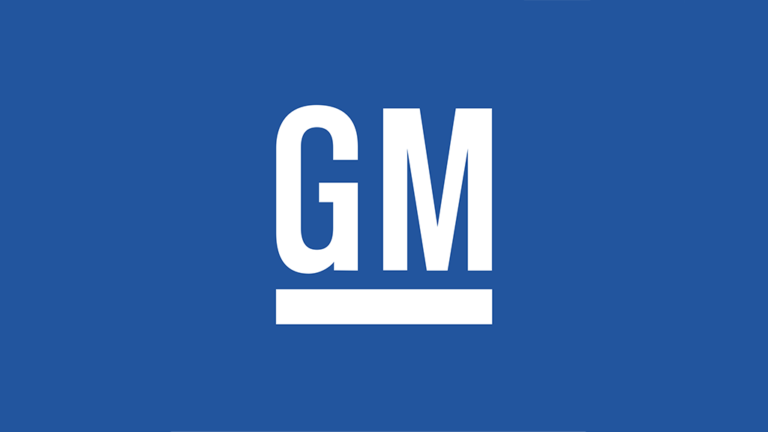
September 21, 2023: General Motors (GM) has laid off 2,000 workers at its Fairfax Assembly plant in Kansas due to the ongoing strike at its Wentzville Assembly plant in Missouri. The Wentzville plant produces midsize pickups and cargo vans, and it also does stamping work for the Fairfax plant, which produces the Cadillac XT4 SUV and the Chevrolet Malibu sedan.
GM has said that the layoffs result from the “ripple effect” of the strike at the Wentzville plant. The strike has disrupted the supply of parts to the Fairfax plant, making it impossible to operate at total capacity.
The layoffs are a significant blow to the Kansas City economy. GM is one of the largest employers in the region, and the releases will significantly impact workers and their families.
Implications of the Layoffs
The layoffs at the Fairfax plant have several implications for workers, the Kansas City economy, and GM.
Workers
The layoffs will significantly impact the workers who have been laid off. They will lose their jobs and their incomes, and they will have to find new jobs. The layoffs will also have a ripple effect on the workers’ families and the communities in which they live.
Kansas City Economy
The layoffs at the Fairfax plant will also significantly impact the Kansas City economy. GM is one of the largest employers in the region, and the layoffs will reduce the amount of money that GM spends in the Kansas City area. The layoffs will also ripple effect on other businesses in the region that rely on GM for business.
GM
The layoffs at the Fairfax plant will also have an impact on GM. The layoffs will reduce GM’s production capacity and could lead to lost sales. The layoffs could also damage GM’s reputation and make it more difficult for the company to attract and retain workers in the future.
Conclusion
The layoffs at the Fairfax plant are a significant blow to the Kansas City economy and GM. The layoffs will significantly impact workers, the Kansas City economy, and GM.
What Can Be Done to Help Workers Affected by the Layoffs?
A number of things can be done to help workers who have been laid off from the Fairfax plant.
Government
The government can provide financial assistance to workers who have been laid off. The government can also provide training and job placement assistance to help workers find new jobs.
Nonprofit Organizations
Nonprofit organizations can provide food, shelter, and other assistance to workers who have been laid off. Nonprofit organizations can also offer job training and placement assistance to help workers find new jobs.
Individuals
Individuals can help workers who have been laid off by donating to nonprofit organizations that are assisting laid-off workers. Individuals can also help laid-off workers by networking with them and helping them to find new jobs.
By working together, we can help workers who have been laid off to get through this challenging time and find new jobs.
Cisco Acquires Splunk to Accelerate AI-Powered Security and Observability

September 21, 2023: Today, Cisco announced that it has acquired Splunk, a leading security and observability software provider. The acquisition is valued at $28 billion, making it one of the most significant tech acquisitions ever.
The acquisition is a significant coup for Cisco, giving the company a strong presence in the fast-growing security and observability market. Splunk’s software is used by organizations of all sizes to monitor and analyze their data and to detect and respond to security threats.
Cisco plans to integrate Splunk’s software with its security and networking products to create a comprehensive security solution for its customers. The company also plans to leverage Splunk’s observability capabilities to help its customers improve the performance and reliability of their networks and applications.
The Acquisition in the Context of the AI-Powered World
The acquisition of Splunk by Cisco is a significant development in the AI-powered world. Both companies are leaders in their respective fields, and their combination will create a powerful force in the security and observability market.
AI is playing an increasingly important role in security and observability. Security teams use AI to detect and respond to threats more quickly and effectively. Observability teams use AI to monitor and analyze data more efficiently and identify potential problems before they cause outages or disruptions.
The acquisition of Splunk by Cisco will accelerate the adoption of AI in security and observability. Cisco has a deep understanding of networking and security, while Splunk deeply understands data and analytics. Together, the two companies can develop AI-powered solutions that help organizations secure and manage their IT infrastructure.
Implications of the Acquisition
The acquisition of Splunk by Cisco has several implications for the security and observability market.
First, the acquisition is likely to lead to consolidation in the market. Cisco is a major player in the security and networking market, and the acquisition of Splunk gives the company a strong presence in the observability market. This could make it more difficult for smaller players to compete.
Second, the acquisition is likely to accelerate the adoption of AI in security and observability. Cisco has a deep understanding of networking and security, while Splunk deeply understands data and analytics. Together, the two companies can develop AI-powered solutions that help organizations secure and manage their IT infrastructure.
Third, the acquisition is likely to benefit customers of both companies. Cisco and Splunk have complementary products and services, and integrating the two companies’ technologies will create a more comprehensive and integrated solution for customers.
Conclusion
The acquisition of Splunk by Cisco is a significant development in the security and observability market. The acquisition is likely to lead to consolidation in the market, accelerate the adoption of AI in security and observability, and benefit customers of both companies.
How to Prepare for the AI-Powered World
Organizations of all sizes need to prepare for the AI-powered world. Here are a few tips:
- Invest in AI-powered security and observability solutions. AI-powered security and observability solutions can help organizations to detect and respond to threats more quickly and effectively and to monitor and analyze data more efficiently.
- Train your staff on AI. Your team needs to understand how AI works and how to use AI-powered solutions effectively.
- Develop an AI strategy. Your AI strategy should outline how you will use AI to improve your security and observability posture.
- By taking these steps, you can help ensure your organization is prepared for the AI-powered world.
Watershed Launches Expanded Ecosystem to Drive Exponential Corporate Climate Action

September 20, 2023: Watershed, the enterprise climate platform, today announced the launch of its expanded ecosystem, a network of partners and advisors that will help companies accelerate climate action at scale.
The Watershed Ecosystem includes a variety of partners, including:
Consulting firms: Watershed has partnered with leading consulting firms, such as McKinsey & Company and Deloitte, to help companies develop and implement climate strategies.
Technology providers: Watershed has partnered with technology providers, such as Salesforce and Google Cloud, to provide companies with the tools and resources to reduce emissions and achieve climate goals.
Offset providers: Watershed has partnered with offset providers, such as Gold Standard and Verified Carbon Standard, to help companies offset their unavoidable emissions.
Investment firms: Watershed has partnered with investment firms, such as Capricorn Investment Group and TPG Capital, to help companies finance their climate initiatives.
In addition to its partners, the Watershed Ecosystem also includes a group of advisors who are experts in climate science, business, and policy. These advisors will provide guidance and support to Watershed and its customers.
The launch of the Watershed Ecosystem is a significant step forward for the company. By partnering with leading organizations in the climate space, Watershed is making it easier for companies of all sizes to take action on climate change.
Benefits of the Watershed Ecosystem
The Watershed Ecosystem provides several benefits to companies, including:
Access to expertise: The Watershed Ecosystem gives companies access to a wide range of climate science, business, and policy expertise. This expertise can help companies develop and implement effective climate strategies.
Access to resources: The Watershed Ecosystem provides companies the tools and resources to reduce emissions and achieve climate goals.
Access to capital: The Watershed Ecosystem provides companies with access to capital to finance their climate initiatives.
Peer support: The Watershed Ecosystem allows companies to learn from and collaborate with other companies that are taking action on climate change.
How to Join the Watershed Ecosystem
Companies can join the Watershed Ecosystem by visiting the Watershed website and signing up for a free account. Once they have signed up, companies can access the Watershed platform and connect with partners and advisors.
Conclusion
Launching the Watershed Ecosystem is a positive development for the fight against climate change. By making it easier for companies to take action on climate change, Watershed is helping to accelerate the transition to a net-zero economy.
Additional Benefits of the Watershed Ecosystem
In addition to the benefits listed above, the Watershed Ecosystem also provides several other benefits to companies, including:
Reduced risk: Climate change poses a significant risk to businesses. The Watershed Ecosystem can help companies reduce their climate risk by allowing them to develop and implement climate strategies.
Increased profitability: Climate action can lead to increased profitability for businesses. The Watershed Ecosystem can help companies identify and implement climate-smart business practices.
Improved reputation: Consumers and investors are increasingly looking to support businesses taking action on climate change. The Watershed Ecosystem can help companies improve their reputation as climate leaders.
If you are a company that is interested in taking action on climate change, I encourage you to learn more about the Watershed Ecosystem. The Watershed Ecosystem can help you to develop and implement a climate strategy that is right for your business.
Washington County Celebrates Constitution Day with First-Ever Countywide Reading

September 20, 2023: Washington County, Utah, celebrated Constitution Day on September 17, 2023, with a first-ever countywide reading of the Constitution. The event, held at the Washington County Administrative Building, drew hundreds of people from all walks of life.
The reading was led by various community leaders, including elected officials, judges, law enforcement officers, and veterans. Each reader read a portion of the Constitution, and the audience joined in on the Preamble.
The Washington County Commission and the Washington County Bar Association organized the event. The event’s goal was to celebrate the Constitution and educate the public about its importance.
Why is the Constitution Important?
The Constitution is the supreme law of the United States. It outlines the structure of the government and the rights of the people. The Constitution is important because it protects our liberties and ensures the government is held accountable.
Why Did Washington County Hold a Countywide Reading of the Constitution?
Washington County held a countywide reading of the Constitution for several reasons. First, the county wanted to celebrate Constitution Day, a federal holiday commemorating the signing of the Constitution on September 17, 1787.
Second, the county wanted to educate the public about the Constitution and its importance. The Constitution is complex, and many people need help understanding its contents. The county hoped that the reading would help people better understand the Constitution and its role in our society.
Third, the county wanted to promote unity and patriotism. The Constitution symbolizes American democracy, and the county hoped the reading would unite people and remind them of our shared values.
Conclusion
The countywide reading of the Constitution was a successful event. It was a great way to celebrate Constitution Day, educate the public about the Constitution, and promote unity and patriotism.
Additional Benefits of Countywide Reading
In addition to the reasons listed above, there are several other benefits to holding a countywide reading of the Constitution. For example, a countywide reading can:
- Help to build civic engagement and participation
- Promote understanding of the Constitution and its role in our society
- Foster a sense of community and patriotism
- Inspire people to learn more about the Constitution and our history
- Serve as a reminder of our shared values and ideals
If you are interested in organizing a countywide reading of the Constitution in your community, here are a few tips:
- Partner with local organizations like the government, schools, and libraries.
- Promote the event through social media, word-of-mouth, and the local media.
- Recruit various readers to participate, including elected officials, judges, law enforcement officers, veterans, and community leaders.
- Ensure the event is accessible to everyone, regardless of age, ability, or income.
A countywide reading of the Constitution is a great way to celebrate Constitution Day and to educate the public about the importance of this vital document.
Arm Announces Pricing of Initial Public Offering

September 15, 2023: Arm, the British chip designer, has priced its initial public offering (IPO) at $9.60 per share. The company is expected to raise about $6.6 billion from the offering, making it one of the largest IPOs of the year.
The IPO is being conducted by Morgan Stanley, Goldman Sachs, and JP Morgan. The shares will start trading on the Nasdaq Stock Exchange on September 16 under the “ARM.”
Arm is a leading provider of chip designs for smartphones, servers, and other devices. Many customers, including Apple, Samsung, and Qualcomm, use the company’s chips.
Arm was acquired by SoftBank in 2016 for $32 billion. SoftBank is selling its stake in Arm as part of a broader plan to raise money.
The IPO is a significant milestone for Arm. The company has been privately held for over 40 years. The IPO is expected to give Arm access to a broader pool of capital and help the company grow its business.
Here are some critical details about the IPO:
- The offering consists of 675 million shares.
- The shares are priced at $9.60 per share, at the top of the expected range.
- The IPO is expected to raise about $6.6 billion.
- The shares will start trading on the Nasdaq Stock Exchange on September 16 under the “ARM.”
The IPO is a positive development for Arm. The company is well-positioned to benefit from the growing demand for chips in various devices. The IPO is also a sign of confidence in the chip industry.
The IPO is also a significant event for the UK. Arm is a British company whose IPO significantly boosts the UK tech sector. The IPO is also expected to create jobs and investment in the UK.
The IPO is expected to be closely watched by investors. Arm is a leading player in the chip industry, and its IPO is a significant event. The IPO is also expected to test investor sentiment towards the chip industry.
The outcome of the IPO is uncertain. The chip industry faces several challenges, such as rising costs and chip shortages. However, Arm is a well-positioned company, and the IPO is expected to be successful.
UAW Prepares to Strike at Detroit Three Automakers, Rejects New Offers
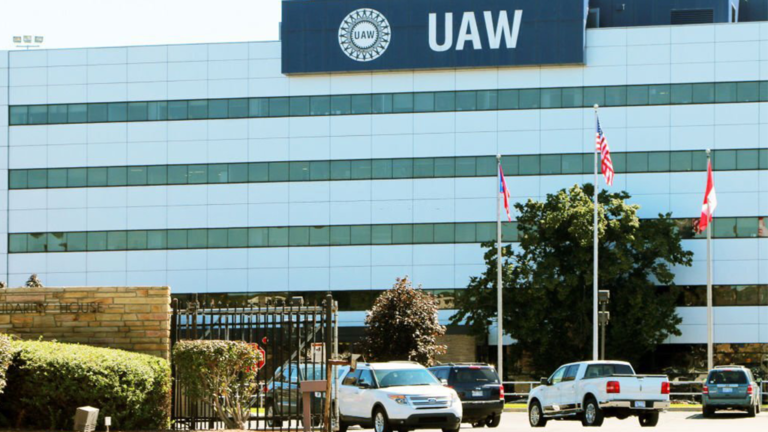
September 15, 2023: After rejecting their latest contract offers, the United Auto Workers (UAW) is preparing to strike at the Detroit Three automakers, General Motors, Ford, and Stellantis. The union is seeking higher wages, better benefits, and job security for its members.
The UAW has been in negotiations with the Detroit Three since July. The union seeks a 4% wage increase and improved health care benefits. The union is also seeking to protect jobs from automation and outsourcing.
The Detroit Three have offered a 3% wage increase and said they will make some concessions on health care benefits. However, the union has said that the offers need to be better.
The UAW’s strike deadline is September 14. If the union does not reach a deal with the Detroit Three by then, it will begin a strike that could idle millions of vehicles.
Here are some details about the UAW’s strike preparations:
- The union has begun sending strike pay cards to its members.
- The union has also begun training its members on how to picket.
- The union has said that it is confident that its members will be prepared to strike if necessary.
- The Detroit Three have also been preparing for a strike. The companies have said they have enough parts and materials to keep their factories running for several weeks during a strike.
The strike would significantly disrupt the auto industry—the Detroit Three account for about 40% of the vehicles made in the United States. A strike would also have a ripple effect on other industries, such as parts suppliers and transportation.
The strike shows the growing economic challenges facing the auto industry. The industry faces increasing competition from foreign automakers and electric vehicle makers. The industry is also facing rising costs, such as materials and labor.
The strike is also a test of the strength of the UAW. The union has been losing members in recent years and faces increasing competition from other unions. A successful strike would help the UAW to show its members that it is still a powerful force.
The outcome of the strike is uncertain. The UAW and the Detroit Three may reach a deal before the strike deadline. However, it is also possible that the strike will happen, which would significantly impact the auto industry and the US economy.
Young Hackers Target Las Vegas Casinos

September 14, 2023: Young hackers have been targeting Las Vegas casinos, demanding hefty ransoms in exchange for not releasing stolen data. The hackers believed to be in their early 20s, have used ransomware to encrypt casino files, making them inaccessible to the casinos until the ransom is paid.
The hackers have already targeted two major casinos in Las Vegas, MGM Resorts International and Caesars Entertainment. The casinos paid the ransom in both cases to avoid releasing their data.
The FBI is investigating the attacks but has not yet identified the hackers. Cybersecurity experts believe the hackers are likely located overseas, making them difficult to track down.
The attacks are a reminder of the growing threat of ransomware attacks. Ransomware is malware that encrypts files, making them inaccessible to the victim until a ransom is paid. Ransomware attacks have become increasingly common in recent years, targeting various organizations, including businesses, governments, and hospitals.
Here are some tips for businesses to protect themselves from ransomware attacks:
- Back up data regularly. This will give you a copy of your data in case it is encrypted by ransomware.
- Educate employees about ransomware. Make sure your employees know what ransomware is and how to avoid it.
- Keep software up to date. Software updates often include security patches that can help protect your systems from ransomware attacks.
- Use strong passwords and multi-factor authentication. This will make it more difficult for hackers to access your systems.
Ransomware attacks can be devastating for businesses, but there are steps that businesses can take to protect themselves. By following the tips above, businesses can reduce their risk of ransomware attacks.
US Small Business Sentiment Falls for First Time in 4 Months

September 13, 2023: Small business sentiment in the United States fell for the first time in four months in August, according to a survey by the National Federation of Independent Business (NFIB). The NFIB’s Small Business Optimism Index fell to 92.8 in August from 93.1 in July.
Several factors, including rising inflation, supply chain disruptions, and labor shortages, drove the sentiment decline. The NFIB survey found that 46% of small businesses reported that inflation negatively impacted their business, up from 39% in July. The survey also found that 36% of small businesses reported difficulty finding qualified workers, up from 29% in July.
Despite the decline in sentiment, the NFIB survey also found that small businesses are still optimistic about the future. The survey found that 61% of small businesses believe business conditions will improve in the next six months, up from 58% in July.
Here are some actional and practical takeaways from the article:
- Small business sentiment fell for the first time in four months.
- Rising inflation, supply chain disruptions, and labor shortages drove the decline.
- Despite the decline, small businesses are still optimistic about the future.
Here are some additional details about the NFIB survey:
- The NFIB survey is a monthly survey of small businesses.
- The survey covers 75,000 small businesses across the country.
- The survey is a good indicator of how small businesses are feeling.
US Economy Grew Modestly in Recent Weeks, Fed Survey Shows

September 13, 2023: The US economy grew modestly in recent weeks, according to a survey of businesses by the Federal Reserve. The survey, known as the Beige Book, found that growth was “modest to moderate” in most districts.
The survey found that businesses were hiring at a “slight to moderate” pace, and prices were rising at a “modest” pace. However, businesses faced some headwinds, such as increasing costs and supply chain disruptions.
The Beige Book is not a comprehensive measure of the economy but a good indicator of how businesses feel. The survey’s findings suggest that the US economy is still growing slower than in recent months.
Here are some actional and practical takeaways from the article:
- The US economy grew modestly in recent weeks.
- Businesses were hiring at a slight to moderate pace.
- Prices were rising at a modest pace.
- Businesses faced some headwinds, such as increasing costs and supply chain disruptions.
Here are some additional details about the Beige Book:
- The Beige Book is a monthly survey of businesses by the Federal Reserve.
- The survey covers 12 districts across the country.
- The survey is a good indicator of how companies are feeling.
How to interpret the Beige Book:
- The Beige Book is not a comprehensive measure of the economy.
- The survey’s findings should be interpreted with caution.
- The survey’s results can be used to track the economy’s performance over time.
Instacart Slashes IPO Valuation to $9.3 Billion.

September 11, 2023: Instacart, the grocery delivery service, has slashed its IPO valuation to $9.3 billion, down from the $39 billion valuation it sought just a few months ago. The company is now expected to price its shares between $16 and $18 per share, down from the $22 to $24 per share range it had initially targeted.
The steep decline in Instacart’s valuation indicates the challenging market conditions for tech IPOs. Investors are increasingly wary of investing in high-growth companies that are yet to be profitable. Instacart is still losing money and is still being determined when it will become profitable.
The ongoing labor dispute with its shoppers overshadows the company’s IPO. Instacart shoppers are demanding higher pay and better working conditions. The dispute has led to protests and walkouts, and how it will be resolved is unclear.
Here are some actional and practical takeaways from the article:
- The market for tech IPOs is tough right now.
- Investors are wary of investing in high-growth companies that are yet to be profitable.
- Instacart is still losing money, and it is unclear when it will become profitable.
- Instacart is facing a labor dispute with its shoppers.
Here are some additional details about Instacart’s IPO:
- The company is expected to price its IPO on June 28, 2023.
- Instacart is offering 35 million shares of its common stock.
- Goldman Sachs and Morgan Stanley are leading the company’s IPO.
How to invest in Instacart’s IPO:
- You can invest in Instacart’s IPO by opening an account with a brokerage firm participating in the offering.
- You must deposit money into your account and place a buy order for Instacart shares.
- The shares are expected to start trading on the Nasdaq stock exchange under the “ICART.”
W3LL Phishing Kit Hijacks Thousands of Microsoft 365 Accounts, Bypasses MFA

September 11, 2023: A new phishing kit targets Microsoft 365 users and has successfully hijacked thousands of accounts, even those with multi-factor authentication (MFA) enabled. The kit, called W3LL, is being sold on the dark web and is designed to bypass MFA by using various techniques, such as spoofing the sender’s email address and using a legitimate-looking login page.
Once users click on a malicious link in a W3LL phishing email, they are taken to a fake login page that looks like the actual Microsoft 365 login page. If the user enters their credentials on the fake page, the attacker can steal them and use them to access their account.
Even if the user has MFA enabled, the W3LL phishing kit can still be successful. This is because MFA can be bypassed if the attacker can obtain the user’s phone number or security code. The W3LL phishing kit can also trick the user into disabling MFA.
Here are some actional and practical takeaways from the article:
- Be wary of any emails that appear to be from Microsoft 365, even if they come from a contact you know.
- Please do not click on links in emails unless you are sure they are legitimate.
- Always check the URL of a page before entering your login credentials.
- Keep your Microsoft 365 software up to date with the latest security patches.
- Use a strong password for your Microsoft 365 account; do not share it with anyone.
- Enable MFA for your Microsoft 365 account and keep your phone number and security code safe.
Here are some additional details about the W3LL phishing kit:
- The kit is designed to target Microsoft 365 users, but it could be used to target users of other cloud-based services.
- The kit is sold on the dark web for a few hundred dollars.
- The kit is relatively easy to use, making it a popular choice for cybercriminals.
- The kit has successfully hijacked thousands of accounts, even those with MFA enabled.
How to protect yourself from W3LL phishing kit:
- Be aware of the risks of phishing attacks.
- Please do not click on links in emails unless you are sure they are legitimate.
- Always check the URL of a page before entering your login credentials.
- Keep your software up to date with the latest security patches.
- Use a strong password for your accounts; do not share it with anyone.
- Enable MFA for your accounts and keep your phone number and security code safe.
First Responder Deaths from 9/11-Related Illnesses Nearly Equal Number of Firefighters Who Died That Day

September 11, 2023: The number of first responders who have died from illnesses related to their work at the World Trade Center site has nearly reached the number of firefighters who died on 9/11.
According to the World Trade Center Health Registry, 2,977 first responders have died from 9/11-related illnesses as of March 8, 2023. This is just 23 shy of the 3,000 firefighters who died on 9/11.
The most common 9/11-related illnesses are respiratory diseases like cancer and asthma. These illnesses are caused by exposure to the dust and fumes released when the Twin Towers collapsed.
The 9/11 Health Registry is a program that tracks the health of first responders and survivors of the attacks. The registry has found that first responders are more likely to develop 9/11-related illnesses than survivors.
The number of first responder deaths from 9/11-related illnesses will continue to rise in the coming years. This is because the latency period for some 9/11-related illnesses can be decades.
Here are some actional and practical takeaways from the article:
- The number of first responder deaths from 9/11-related illnesses is nearly equal to the number of firefighters who died on 9/11.
- The most common 9/11-related illnesses are respiratory diseases like cancer and asthma.
- First responders are more likely to develop 9/11-related illnesses than survivors.
- The number of first responder deaths from 9/11-related illnesses is expected to continue to rise in the coming years.
Here are some ways to help:
- Donate to organizations that support first responders and survivors of 9/11.
- Volunteer your time to help first responders and survivors.
- Spread awareness about the dangers of 9/11-related illnesses.
We must never forget the sacrifices made by the first responders who risked their lives to save others on 9/11. We must also do everything we can to support them and their families as they battle these attacks’ health effects.
U.S. Drivers Warned of Potential $1 Per Gallon Gasoline Spike

September 08, 2023: GasBuddy, a leading provider of fuel price information, has warned that U.S. gasoline prices could spike by $1 per gallon in the coming months. The warning comes as crude oil prices continue to rise, driven by concerns about global supply shortages.
“We’re seeing a perfect storm of factors driving gasoline prices higher,” said Patrick DeHaan, head of petroleum analysis at GasBuddy. “These factors include:
- The ongoing war in Ukraine has disrupted global oil supplies.
- Sanctions in Russia have further limited the supply of oil.
- Increased demand for gasoline as the economy recovers from the COVID-19 pandemic.
- Refinery outages have reduced the amount of gasoline that is available.
- DeHaan said that the $1 per gallon spike could happen as soon as August. “If oil prices continue to rise, we could see $5 per gallon gasoline by the end of the year,” he said.
The potential gasoline price spike is a significant concern for U.S. drivers. The average price of gasoline in the United States is currently $4.59 per gallon, according to AAA. A $1 per gallon spike means drivers pay an average of $5.59 per gallon for gasoline.
Drivers can do a few things to prepare for the potential gasoline price spike. These include:
Shop around for the best price: There can be a significant difference in price between gas stations, so it’s essential to shop around.
Consider driving less: Try walking, biking, or taking public transportation instead of driving.
Carpool: If you need to drive, carpooling with friends or family can help you save money on gas.
Drive efficiently: You can do a few things to drive more efficiently, such as avoiding sudden acceleration, braking, and keeping your tires properly inflated.
The potential gasoline price spike is a reminder of the importance of energy independence. The United States needs to reduce its reliance on foreign oil and develop more domestic energy sources. This will help protect consumers from volatile oil prices and ensure that the country has a secure energy supply.
Bill Gates Foundation Invests Nearly $100 Million in Bud Light’s Parent Company.

September 07, 2023: The Bill and Melinda Gates Foundation Trust, the charitable organization founded by Microsoft co-founder Bill Gates, has invested nearly $100 million in Anheuser-Busch InBev, the parent company of Bud Light.
According to a regulatory filing, the investment was made in the second quarter of 2023. It is the first time the Gates Foundation has invested in a significant alcohol company.
The investment is a sign of Gates’ confidence in Anheuser-Busch InBev’s ability to weather the beer industry’s current challenges. The company has been struggling recently due to declining sales in the United States and China. However, the company has recently made some progress in turning things around, and Gates believes it is well-positioned for long-term growth.
The investment is also a way for Gates to diversify the foundation’s portfolio. The foundation’s assets are currently concentrated in stocks and bonds, and Gates believes that adding a stake in Anheuser-Busch InBev will help to reduce the foundation’s risk.
Here are some key takeaways from the article:
- The Bill and Melinda Gates Foundation Trust has invested nearly $100 million in Anheuser-Busch InBev.
- The investment is a sign of Gates’ confidence in the company’s ability to weather the beer industry’s current challenges.
- The investment is also a way for Gates to diversify the foundation’s portfolio.
Here are some actional and practical takeaways from the article:
- If you are an investor, consider adding Anheuser-Busch InBev to your portfolio.
- If you are a beer drinker, you should support Anheuser-Busch InBev by buying its products.
- If you are interested in the beer industry, watch Anheuser-Busch InBev’s progress.
Alaska Unions Urge Biden Administration to Block Albertsons-Kroger Merger

September 07, 2023: Labor unions in Alaska have urged the Biden administration to block the proposed merger between Albertsons and Kroger, two of the largest supermarket chains in the United States. The unions argue that the merger would lead to higher prices, fewer jobs, and less competition for Alaskans.
The merger would create a grocery giant with over 2,200 stores in 34 states. The unions say that this would give the combined company too much power and that it would be able to raise prices and reduce wages without fear of competition. They also argue that the merger would lead to the closure of some stores and that it would result in job losses.
The unions have urged the Biden administration to block the merger under the Hart-Scott-Rodino Antitrust Improvements Act. This law allows the federal government to review and block mergers likely to harm competition.
The Biden administration has yet to say whether it will block the merger. However, the unions’ concerns will likely be taken seriously, as the administration has committed to promoting economic competition.
Here are some key takeaways from the article:
- Alaska unions are urging the Biden administration to block the proposed merger between Albertsons and Kroger.
- The unions argue that the merger would lead to higher prices, fewer jobs, and less competition for Alaskans.
- The merger would create a grocery giant with over 2,200 stores in 34 states.
- The Biden administration has yet to say whether it will block the merger.
Here are some actional and practical takeaways from the article:
- You can contact your elected officials and urge them to block the merger if you are an Alaskan resident.
- You can also contact the Federal Trade Commission and express your concerns about the merger.
- You can stay up-to-date on the merger by following the news and reading articles about it.
Smurfit Kappa in Talks to Merge with US Peer WestRock in $20 Billion Deal.

September 07, 2023: Smurfit Kappa, the Irish packaging giant, is in talks to merge with US peer WestRock to create a cardboard box-making giant with a nearly $20 billion market value. The merger would also see Smurfit Kappa exit the Dublin stock exchange.
The talks are still ongoing, but if they are successful, the merger would create a new company with operations in more than 30 countries and a workforce of over 80,000 people. The combined company would be one of the world’s largest packaging companies, with a strong presence in the Americas and Europe.
The increasing consolidation in the packaging industry is driving the merger. In recent years, there have been several large mergers and acquisitions in the sector as companies seek to scale up and gain a competitive advantage. The Smurfit Kappa-WestRock merger would be the latest in this trend.
For Smurfit Kappa, the merger would offer several benefits. It would allow the company to expand its geographic reach and product portfolio. It would also create a more efficient and streamlined business.
However, the merger would also have some challenges. It would require the integration of two very different cultures and businesses. There would also be regulatory hurdles to overcome.
Overall, the Smurfit Kappa-WestRock merger is a significant development in the packaging industry. It remains to be seen whether the deal will be successful, but if it is, it will create a new global powerhouse in the sector.
Here are some takeaways from the article:
- Smurfit Kappa and WestRock are in talks to merge in a deal worth $20 billion.
- The merger would create a new cardboard box-making giant with a nearly $20 billion market value.
- The merger would also see Smurfit Kappa exit the Dublin stock exchange.
- The increasing consolidation in the packaging industry is driving the merger.
- The merger would offer several benefits for Smurfit Kappa but also have some challenges.
Here are some actional and practical takeaways from the article:
- If you are an investor in Smurfit Kappa, you should watch the merger talks.
- If you are a customer of Smurfit Kappa, you should be aware of the merger’s potential impact.
- If you are interested in the packaging industry, you should follow the development of the merger.
PayPal Stock Lost 18% in August: Here’s Why

September 06, 2023: PayPal Holdings Inc. (NASDAQ: PYPL) stock lost 18% in August, underperforming the S&P 500 index, which declined 4.5%. A few factors contributed to the decline in PayPal’s stock price.
Rising competition: PayPal faces increasing competition from rivals such as Block Inc. (formerly Square) and Affirm Holdings Inc. These companies are offering similar services, and they are also expanding into new markets.
Slowing user growth: PayPal’s user growth has slowed in recent quarters. In the second quarter of 2023, the company added 7.4 million net new active accounts, down from 11.4 million in the first quarter.
Weaker guidance: PayPal lowered its guidance for the third quarter of 2023, citing the impact of rising inflation and supply chain disruptions. The company now expects revenue of $6.85 billion to $6.95 billion, down from its previous guidance of $7.35 billion to $7.45 billion.
Despite the recent decline in its stock price, PayPal remains a well-positioned company. The company has a strong track record of growth and is still the leading online payment platform. However, investors are concerned about the company’s ability to maintain its growth in the face of increasing competition and slowing user growth.
Actionable Takeaways:
- Investors who are considering investing in PayPal should be aware of the challenges that the company faces.
- Investors should also be prepared for the stock price to be volatile soon.
Practical Takeaways for Businesses:
- Businesses that use PayPal should monitor the company’s performance closely and be prepared to switch to a different payment platform if necessary.
- Businesses should also be aware of the competitive landscape and be prepared to offer competitive pricing and services.
The decline in PayPal’s stock price is a reminder that even the best companies can face challenges. Investors should carefully evaluate the risks and rewards of investing in any company before deciding.
U.S. Moves to Force Recall of 52 Million AirBag Inflator

September 06, 2023: The U.S. government is moving to force a recall of 52 million Takata airbag inflators that can explode and hurl shrapnel into drivers and passengers. The inflators are the subject of U.S. history’s largest automotive safety recall.
On Tuesday, the National Highway Traffic Safety Administration (NHTSA) said it would issue a final rule requiring Takata to recall the inflators. The inflators are made with ammonium nitrate, which can degrade over time and explode with too much force.
The recall would affect 42 million vehicles in the United States, including 24 million passenger cars and 18 million trucks and SUVs. The recall would also affect 2 million vehicles in Canada and 410,000 in Mexico.
NHTSA said that the recall would be phased in over several years. The first phase would begin in September and would affect 12 million inflators. The second phase would start in 2023 and affect 40 million inflators.
NHTSA said that the recall would cost Takata an estimated $1.2 billion. The company has already paid billions of dollars in fines and settlements related to the recall.
The recall is a significant victory for NHTSA, which has been pressured to take action on the Takata inflators. The agency has been criticized for handling the recall, which has been slow and incomplete.
The recall is also a significant blow to Takata, which is on the verge of bankruptcy. The company has been unable to meet the demand for replacement inflators and has been forced to file for bankruptcy protection.
The Takata inflator recall is a reminder of the importance of automotive safety. Drivers and passengers should ensure that their vehicles have been recalled and the necessary repairs have been made.
Actionable Takeaways:
- Drivers should check their vehicle’s recall status by VIN on the NHTSA website.
- Drivers should have the recalled inflators replaced as soon as possible.
Practical Takeaways for Businesses:
- Businesses owning vehicles should ensure they know about the Takata inflator recall and that the necessary repairs have been made.
- Businesses should also be prepared to comply with the NHTSA’s recall order.
The Takata inflator recall is a significant safety issue that needs to be addressed. Drivers and businesses should take steps to make sure that they are safe.
Workers on EnQuest’s Kittiwake Platform Balloted for Strike Action

September 05, 2023: Workers on EnQuest’s Kittiwake platform have voted to strike in a dispute over pay and conditions. The ballot, held by the Unite union, saw 94% of eligible workers vote favor industrial action.
The workers are seeking a 10% pay rise and a guarantee of no compulsory redundancies. They are also concerned about the platform’s safety, which has been the subject of several safety incidents in recent years.
EnQuest has said that it is disappointed with the result of the ballot and committed to resolving the dispute through negotiations. However, the union has said it is prepared to take strike action if necessary.
The strike is expected to begin on September 20 and could last for up to 24 hours. It could significantly impact oil production from the Kittiwake platform, one of the largest oil and gas platforms in the North Sea.
Actionable Takeaways:
- Businesses operating in the oil and gas industry should be aware of the potential for strike action and its impact on their operations.
- Businesses should also be prepared to mitigate the risks associated with strike action, such as stockpiling supplies or contingency planning.
Practical Takeaways for Businesses:
- Businesses should engage with unions early in the negotiation process to resolve disputes before escalating to strike action.
- Businesses should also have a contingency plan in place in case of strike action, such as stockpiling supplies or reassigning staff.
The strike action is a serious matter and could significantly impact EnQuest and the oil and gas industry. Both parties need to work together to find a resolution to the dispute.
SoftBank’s Reduced Arm Price Tag Is Still Too High

September 05, 2023: SoftBank Group is seeking a valuation of between $47 and $51 per share in Arm s initial public offering (IPO), according to a regulatory filing on September 5. This is down from the $60 per share valuation that SoftBank had initially sought.
However, analysts say that the reduced price tag is still too high. Bernstein analyst Stacy Rasgon said the $47 to $51 per share range “still looks rich” given Arm’s current financial performance.
Arm is a British chip designer used by many of the world’s leading technology companies. However, the company has been struggling recently due to the global chip shortage and the ongoing trade war between the United States and China.
In addition, Arm is facing increasing competition from rivals such as Nvidia and Qualcomm.
As a result, analysts believe that SoftBank will need to lower the price tag even further if it wants to successfully IPO Arm.
Actionable Takeaways:
- Investors considering Arm should know the company’s financial challenges and the competitive landscape.
- Investors should also be prepared for the possibility that the IPO price could be lowered further.
Practical Takeaways for Businesses:
- Businesses that use Arm’s products and services should monitor the IPO closely and be prepared to adjust their plans if the price is lowered.
- Businesses considering Arm’s products and services should carefully weigh the risks and benefits.
The reduced price tag is a positive sign for SoftBank, but it is still too early to say whether the IPO will be successful. Investors and businesses should continue to monitor the situation closely.
Why Do So Many Americans Say the Economy Is Terrible, Even Though It’s Doing Well?

September 05, 2023: The US economy is doing well by many measures. The unemployment rate is low, the stock market is high, and the GDP is growing. But despite these positive signs, many Americans say the economy is terrible.
There are a few reasons for this disconnect. First, the economy could be doing better for everyone. The unemployment rate is low, but wages are not rising as fast as expected. This means that many people are struggling to make ends meet.
Second, the cost of living is rising, especially housing. This is putting a strain on many families’ budgets.
Third, many people are worried about the future of the economy. They are concerned about the rising national debt and the impact of automation on jobs.
These factors all contribute to the perception that the economy is terrible, even though it is doing well by some measures.
Here are some possible explanations for the disconnect between the economic data and the public’s perception of the economy:
- The economic data often needs to catch up to the real economy. This means that it can take some time for the positive effects of economic growth to trickle down to everyone.
- The media often focuses on negative economic news, such as job losses and rising prices. This can create a perception that the economy is worse than it is.
- People’s personal experiences can also affect their perception of the economy. If someone struggles to make ends meet, they are more likely to say that the economy is terrible, even if it is doing well.
What can address the disconnect between the economic data and the public’s perception of the economy?
- The government can communicate more effectively about the state of the economy. This could include providing more information about the positive aspects of the economy, as well as the challenges that still need to be addressed.
- The media can be more balanced in its economic coverage. This could include reporting on both the positive and negative aspects of the economy and avoiding sensationalizing negative stories.
- Individuals can be more aware of their own biases regarding the economy. This could involve stepping back and evaluating their experiences and beliefs about the economy.
It is important to remember that the economy is a complex system, and it can be challenging to measure. The disconnect between the economic data and the public’s perception of the economy is a reminder of this complexity. However, some steps can be taken to address this disconnect and improve understanding of the economy.
OpenAI Accused of Data Protection Breaches in GDPR Complaint

August 31, 2023: OpenAI, the company that created the large language model ChatGPT, has been accused of data protection breaches in a complaint filed with the Polish Data Protection Authority (UODO) by privacy researcher Lukasz Olejnik.
The complaint alleges that OpenAI violated the General Data Protection Regulation (GDPR) by collecting and storing personal data without users’ consent, failing to provide adequate information about how their data was being used, and not allowing users to access or delete it.
Olejnik also alleges that OpenAI created a “systemic risk” to users’ privacy by allowing third-party developers to access and use their data without their knowledge or consent.
OpenAI has denied the allegations, saying it complies with all applicable data protection laws. The company has said that it will cooperate with the UODO’s investigation.
Actionable Takeaways:
- Users of OpenAI’s products and services should be aware of the allegations of data protection breaches and take steps to protect their privacy.
- Users should review OpenAI’s privacy policy and understand how their data is collected and used.
- Users should also be careful about what information they share with OpenAI’s products and services.
Practical Takeaways for Businesses:
- Businesses that use OpenAI’s products and services should review their data protection practices to ensure they comply with the GDPR.
- Businesses should also be aware of the risks associated with using AI and other emerging technologies and take steps to mitigate those risks.
- The allegations against OpenAI are a reminder of the importance of data protection. Businesses that collect and use personal data should take steps to comply with the GDPR and other applicable laws.
Shopify Stock Gets IBD Stock Rating Upgrade

August 31, 2023: Shopify Inc. (SHOP) stock received an upgrade to “Buy” from “Hold” by Investor’s Business Daily (IBD) on Wednesday. The move comes as the e-commerce platform’s shares have been on a recent tear, rising more than 60% in the past six months.
IBD cited Shopify’s strong financial performance and continued growth potential as reasons for the upgrade. The company reported $1.28 per share on revenue of $1.2 billion in its most recent quarter, both of which beat analyst expectations. Shopify also raised its guidance for the entire year.
IBD also noted that Shopify is trading above its 50-day and 200-day moving averages, two technical indicators that can signal a bullish trend.
Actionable Takeaways:
- Investors interested in Shopify stock should consider buying shares now, as it is trading near its all-time high.
- Investors should also monitor the company’s earnings and revenue growth, as these factors could continue to drive the stock higher.
Practical Takeaways for Businesses:
- Businesses that sell products or services online should consider using Shopify as their e-commerce platform. Shopify offers a variety of features that can help companies to sell more products and grow their businesses.
- Businesses should also consider using Shopify’s marketing tools to reach more customers and drive sales.
- The upgrade of Shopify stock by IBD is a positive sign for the company. Investors should continue to monitor the stock’s performance and consider buying shares if the company continues to meet or beat analyst expectations.
Mandatory Evacuation Order Issued for Taylor County

August 29, 2023: Before Hurricane Idalia’s arrival, a mandatory evacuation order has been issued for Taylor County, Florida. The order covers all coastal areas, mobile homes, travel trailers, and substandard housing.
The Taylor County Sheriff’s Office issued the order, which went into effect at 10:00 AM on Tuesday, August 29. Residents who are affected by the order are required to evacuate immediately and find safe shelter elsewhere.
The evacuation order was issued due to the threat of life-threatening conditions posed by Hurricane Idalia. The storm is expected to land in Florida on Wednesday morning as a Category 1 hurricane with maximum sustained winds of 75 mph.
The National Hurricane Center is warning of dangerous storm surges, flooding, and wind damage in parts of Florida.
Residents who are affected by the evacuation order should:
- Follow the instructions of local officials.
- Evacuate to a safe location outside of the evacuation zone.
- Bring essential items like food, water, medicine, and clothing.
- Stay informed about the latest weather conditions and updates on the evacuation order.
- The mandatory evacuation order is a serious matter and should be taken seriously. Residents who do not comply with the order could face fines or other penalties.
Here are some practical takeaways for businesses:
- Businesses in the evacuation zone should close their businesses and evacuate their employees.
- Businesses outside the evacuation zone should be prepared to accommodate customers and employees who are evacuating.
- Businesses should have a plan to communicate with customers and employees during the evacuation.
- The mandatory evacuation order is a significant disruption for Taylor County, but it is necessary to protect the safety of residents. Businesses should be prepared to adjust their operations accordingly.
Airlines Cancel Hundreds of Flights as Hurricane Idalia Heads for Florida

August 29, 2023: Airlines are canceling hundreds of flights as Hurricane Idalia heads for Florida.
As of Tuesday morning, more than 300 flights had been canceled, according to flight tracking website FlightAware. The cancellations include flights to and from Florida, as well as flights that were scheduled to pass through the state.
Idalia is a Category 1 hurricane with maximum sustained winds of 75 mph. The storm is expected to make landfall in Florida on Wednesday morning.
The National Hurricane Center is warning of dangerous storm surges, flooding, and wind damage in parts of Florida.
Airlines urge passengers to check their flight status before heading to the airport. Passengers who fly to or from Florida should also consider rescheduling their flights.
Here are some actionable takeaways:
- Passengers should check their flight status before heading to the airport.
- Passengers who fly to or from Florida should also consider rescheduling their flights.
- Passengers should ensure they have a plan if their flight is canceled or delayed.
Here are some practical takeaways for businesses:
- Businesses that rely on air travel should be prepared for disruptions.
- Companies should have a plan to communicate with customers if flights are canceled or delayed.
- Businesses should also be prepared to provide customers with refunds or alternative travel arrangements.
- Hurricane Idalia is a significant storm expected to cause widespread damage in Florida. Businesses and passengers should be prepared for disruptions and ensure they have a plan.
Leggett & Platt, Incorporated (NYSE: LEG) Trading at a 27% Discount?

August 28, 2023: Leggett & Platt, Incorporated (NYSE: LEG) is a diversified engineered component manufacturer. The company’s products are used in various industries, including furniture, bedding, automotive, and construction.
LEG’s stock price has been on a downward trend in recent months. The stock trades at $47.50, a 27% discount to its 52-week high of $66.85.
There are a few reasons why LEG’s stock price may be trading at a discount. First, the company faces headwinds from rising inflation and supply chain disruptions. Second, the overall market is volatile, and investors may rotate out of cyclical stocks like LEG.
However, there are also some reasons to be bullish on LEG. The company is a leading player in its industry and has a strong track record of profitability. LEG also has a good balance sheet and a healthy dividend yield.
Overall, LEG’s stock is undervalued. The company is an excellent long-term investment, and I recommend buying the store at the current price.
Here are some actionable takeaways:
- If you are considering investing in LEG, research whether the stock is correct.
- It would help if you also consider your investment goals and risk tolerance.
- LEG is a good investment if you are investing for the long term. The company has a strong track record of profitability and a healthy dividend yield.
Here are some practical takeaways for businesses:
- If you are a supplier to LEG, you should be aware of the company’s challenges and opportunities. It would help if you also were prepared to work with the company to navigate the current market conditions.
- If you are a competitor to LEG, you should know the company’s strengths and weaknesses. It would help if you also were prepared to compete for market share.
Consumers Continue to Cut Back on Spending

August 28, 2023: According to a new survey by the Conference Board, consumers are continuing to cut back on spending. The survey found that consumer confidence fell to 98.7 in July, down from 103.2 in June. This is the lowest level of consumer confidence since February 2020.
Several factors, including rising inflation, concerns about the economy, and the war in Ukraine, drive the decline in consumer confidence. Inflation is at a 40-year high, and consumers are worried about how it will affect their ability to afford necessities. They are also concerned about the possibility of a recession, and the war in Ukraine adds to their uncertainty.
The decline in consumer confidence is likely to hurt the economy. When consumers are less confident, they are less likely to spend money. This can lead to slower economic growth and job losses.
Here are some actionable takeaways:
Businesses should be prepared for a slowdown in consumer spending.
They should focus on providing value and quality to their customers.
They should also be flexible and adaptable so they can quickly respond to changes in the market.
Here are some practical tips for consumers:
- Create a budget and stick to it.
- Make a list of your needs before you go shopping.
- Compare prices before you make a purchase.
- Look for discounts and coupons.
- Consider buying used items.
The decline in consumer confidence is a worrying sign for the economy. However, there are things that consumers and businesses can do to mitigate the impact. By being prepared and taking action, they can help to keep the economy afloat.
Hurricane Preparedness Tax Holiday in Florida Continues as Tropical Storm Idalia Looms

August 28, 2023: Florida residents can still take advantage of the state’s hurricane preparedness tax holiday, which began on Saturday, August 26, and runs through Sunday, September 8.
During the holiday, residents can purchase certain hurricane preparedness items exempt from sales tax. These items include:
- Batteries
- Generators
- Flashlights
- First-aid kits
- Ladders
- Non-electric food coolers
- Tarpaulins
- Weather radios
The tax holiday is designed to help residents prepare for the upcoming hurricane season, which officially begins on June 1. Florida is particularly vulnerable to hurricanes, located in the Atlantic hurricane belt.
Tropical Storm Idalia is currently in the Atlantic Ocean and is forecast to land in Florida on Wednesday, August 30. The storm is expected to bring heavy rain and strong winds to the state.
Residents are urged to prepare for the storm, including stocking up on food, water, and other essential supplies. They should also make sure to have a plan for evacuating if necessary.
The hurricane preparedness tax holiday is an excellent opportunity for residents to purchase the items they need to stay safe during a hurricane. Residents can save money and be better prepared for the upcoming hurricane season by taking advantage of the holiday.
Here are some actionable takeaways:
- Residents should take advantage of the hurricane preparedness tax holiday to purchase the items they need to stay safe during a hurricane.
- Residents should also have a plan for evacuating if necessary.
- Residents should monitor the forecast for Tropical Storm Idalia and follow the instructions of local officials.
Northstate Braces for Annual East Winds, Potential Increase in Fire Risks Loom

August 25, 2023: The Northstate is bracing for the annual East winds, which are expected to start blowing in the coming weeks. The winds, which can gust up to 100 miles per hour, can create dangerous fire conditions, and officials urge residents to be prepared.
Air pressure differences between the Pacific Ocean and the Great Basin cause the East winds. The winds blow from the east, picking up moisture from the ocean and carrying it over the mountains. When the winds reach the North, they can dry out vegetation and create ideal conditions for fires to start.
Wildfires have particularly hard hit the Northstate in recent years. In 2020, the Carr Fire destroyed over 1,000 homes and killed eight people. The Dixie Fire, the largest wildfire in California history, also started in the North.
To prepare for the East winds, officials are urging residents to:
- Clear brush and debris around their homes and businesses.
- Have a plan for evacuating if necessary.
- Stay informed about the latest fire conditions.
- The East winds are a natural weather phenomenon, but they can be deadly. Residents can help reduce the risk of wildfires by taking steps to prepare.
Here are some additional actionable takeaways:
- If you see a fire, call 911 immediately.
- Do not drive through smoke or fire.
- Stay away from downed power lines.
- Be aware of the fire danger and take precautions to protect yourself and your property.
Jackson Hole Economic Policy Symposium to Focus on Structural Shifts

August 25, 2023: The Federal Reserve Bank of Kansas City’s annual Economic Policy Symposium will be held in Jackson Hole, Wyoming, from August 24-26, 2023. This year’s symposium theme is “Structural Shifts in the Global Economy.”
The symposium will bring together economists, policymakers, and academics worldwide to discuss the long-term implications of the pandemic, the war in Ukraine, and other recent economic developments. Topics to be explored include:
- The impact of the pandemic on global supply chains
- The rise of China as a significant economic power
- The changing nature of work
- The increasing importance of climate change
- The role of technology in the global economy
- The symposium is expected to provide valuable insights into the future of the global economy and the challenges that policymakers will face in the years to come.
Here are some actionable takeaways:
- Businesses and investors need to be aware of the structural shifts that are taking place in the global economy.
- They must adapt their strategies to these changes to remain competitive.
- Governments must also be aware of these changes and adjust their policies accordingly.
The Jackson Hole Economic Policy Symposium is a significant event in the global economic calendar. It provides a forum for policymakers and academics to discuss the most pressing economic issues of the day. The insights gained from the symposium can help businesses and investors make informed decisions about the future.
GOP Debate: Chris Christie Asked About UFOs

August 24, 2023: Former New Jersey Governor Chris Christie was asked about unidentified flying objects UFOs at the first Republican presidential primary debate on Wednesday night.
Moderator Martha MacCallum asked Christie if he would “level with the American people” about what the government knows about encounters with extraterrestrials. The question took aback Christie, but he said he would be honest with the public.
“I think the job of the president of the United States is to level with the American people about everything,” Christie said. “The job of the president of the United States is to stand for truth.”
Christie’s answer was met with laughter from the audience, but he defended his stance, saying that it is essential for the government to be transparent with the public.
“I don’t think it’s funny,” Christie said. “I think it’s a serious question.”
The question about UFOs comes when there is renewed interest in the topic. In June, the US government released a report acknowledging several unexplained aerial phenomena that military pilots have observed. The report did not conclude that the sensations are extraterrestrial but did not rule it out either.
Whether Christie’s answer to the UFO question will resonate with voters remains to be seen. However, his willingness to discuss the topic openly indicates that he is unafraid to tackle challenging issues.
Actionable Takeaways:
- Chris Christie was asked about UFOs at the first Republican presidential primary debate.
- He said he would be honest with the public about what the government knows about encounters with extraterrestrials.
- His answer was met with laughter from the audience, but he defended his stance, saying that it is essential for the government to be transparent with the public.
- The question about UFOs comes when there is renewed interest in the topic.
- Whether Christie’s answer to the UFO question will resonate with voters remains to be seen.
Major Flooding at Detroit Metro Airport, McNamara Terminal Inaccessible.

August 24, 2023: Heavy rain overnight caused significant flooding at Detroit Metro Airport, leaving the McNamara Terminal inaccessible and stranding travelers.
A combination of heavy rain and storm runoff caused the flooding. According to the National Weather Service, three inches of rain fell on the airport over about five hours.
The flooding caused water to back up in the Dingell Drive tunnels, which provide access to the McNamara Terminal. The tunnels were closed to traffic, and the McNamara Terminal was evacuated.
Travelers scheduled to depart from the McNamara Terminal were diverted to the North Terminal. The North Terminal was not affected by the flooding.
The airport said it is working to clear the flooding and reopen the McNamara Terminal. However, it needs to be made clear when the terminal will reopen.
In the meantime, travelers scheduled to depart from the McNamara Terminal are advised to check the airport’s website for the latest updates.
Actionable Takeaways:
- If you are traveling to Detroit Metro Airport, check the airport’s website for the latest updates on the flooding.
- If your flight is scheduled to depart from the McNamara Terminal, you may be diverted to the North Terminal.
- If you are stranded at the airport, contact your airline for assistance.
Here are some tips for staying safe during a flood:
- Stay informed about the latest weather conditions.
- If you live in a flood-prone area, have a plan in place.
- If you are caught in a flood, move to higher ground.
- Do not drive through flooded areas.
- If you must walk through flooded areas, wear boots and avoid contact with the water.
- Flooding can be dangerous, but by taking precautions, you can stay safe.
AMC reverse stock split and APE conversion have eliminated the “overhang” concern.

August 24, 2023: AMC Entertainment Holdings Inc (NYSE: AMC) completed a 1-for-10 reverse stock split on Thursday, reducing its everyday share count to 52 million. The company also converted its 995 million APE shares into roughly 100 million AMC shares.
AMC shareholders approved the reverse stock split and APE conversion in June. The company said the moves would remove an “overhang” on its stock price and make it more attractive to institutional investors.
Analyst Alicia Reese of Wedbush Securities upgraded AMC to “neutral” from “underperform” after completing the reverse stock split and APE conversion. She said the moves “remove a significant overhang” and expects AMC shares to settle around her new $19 price target post-conversion and post-reverse-stock-split.
Reese said she is still concerned about AMC’s liquidity challenges, but she believes the company is well-positioned against an improving industry backdrop. She expects the North American box office to end up 20% higher than 2022.
Actionable Takeaways
- AMC completed a 1-for-10 reverse stock split on Thursday, reducing its everyday share count to 52 million.
- The company also converted its 995 million APE shares into roughly 100 million AMC shares.
- The moves were approved by AMC shareholders in June and are expected to make the company’s stock more attractive to institutional investors.
- Analyst Alicia Reese of Wedbush Securities upgraded AMC to “neutral” from “underperform” after completing the reverse stock split and APE conversion.
- She said that she expects AMC shares to settle around her new $19 price target post-conversion and post-reverse-stock-split.
- As an AMC shareholder, you should know the impact of the reverse stock split and APE conversion on your shares. Your shares will be worth ten times less after the reverse stock split, but you will have ten times more. The APE conversion will not affect the value of your shares.
If you are considering investing in AMC, consider the risks involved. The company is still facing liquidity challenges and volatile stock prices. You should consult with a financial advisor before making any investment decisions.
Foot Locker Shares Plunge 30% After Slashing Guidance

August 23, 2023: Foot Locker (NYSE: FL) shares plunged 30% on Wednesday after the athletic footwear retailer slashed its guidance for the fiscal year 2023, citing “consumer softness.”
The company now expects earnings per share to be in the range of $2.03 to $2.13, down from its previous guidance of $2.35 to $2.45. Revenue is also expected to fall below expectations, at $8.1 billion to $8.2 billion, down from the previous range of $8.3 billion to $8.5 billion.
Foot Locker said that the decline in guidance was due to several factors, including “continued consumer softness” and “elevated promotional activity.” The company also said it saw “some softness” in its international business.
The news sent Foot Locker shares tumbling to their lowest level in over a year. The stock is now down more than 50% from its 52-week high.
Takeaways:
- Foot Locker’s earnings guidance cut indicates that the athletic footwear industry faces some headwinds.
- The company cites “consumer softness” and “elevated promotional activity” as the main reasons for the decline in guidance.
- Foot Locker’s international business is also seeing some softness.
- The stock is down more than 50% from its 52-week high.
Actionable and practical takeaways:
- Investors should be cautious about investing in the athletic footwear industry now.
- Companies in the industry should focus on controlling costs and improving margins.
- Consumers should know the potential for discounts and promotions in the athletic footwear market.
Skipping the debate, Trump avoids potential legal implications.
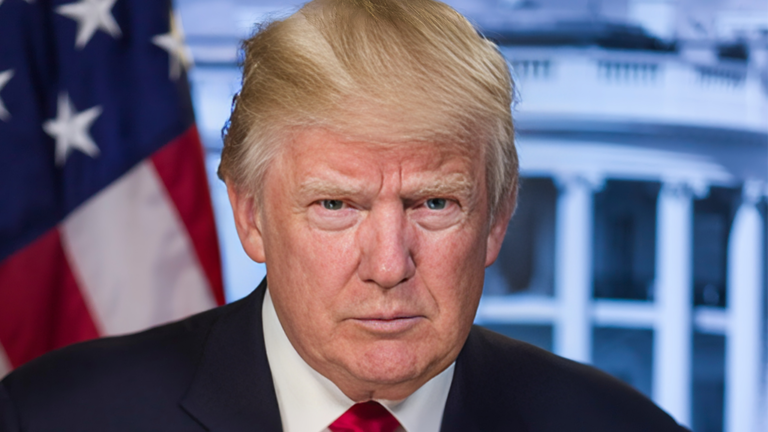
August 23, 2023: Former President Donald Trump’s decision to skip the Republican primary debate on Wednesday shields him from legal exposure, legal experts say.
Trump faces several legal challenges, including a criminal investigation by the New York Attorney General’s Office into his business practices. The debate in Milwaukee, Wisconsin, would have been a high-profile event where Trump could have been questioned about these investigations.
By skipping the debate, Trump avoids the risk of saying something that could be used against him in court. He also avoids the risk of being seen as trying to evade scrutiny.
“Trump’s decision is a calculated one,” said David Weinstein, a former federal prosecutor in Miami. “He knows that anything he says in the debate could be used against him in court. By skipping the debate, he’s protecting himself from legal exposure.”
Trump’s decision is also likely to be seen as a sign of weakness by his political opponents. They will argue that he is afraid to face tough questions and that he is hiding something.
“Trump’s decision to skip the debate is a sign that he’s afraid of facing scrutiny,” said Democratic strategist David Axelrod. “It’s a sign that he’s not confident in his ability to defend himself against the legal challenges he’s facing.”
Whether or not Trump’s decision to skip the debate will ultimately help or hurt him politically remains to be seen. However, the decision is motivated by a desire to protect himself from legal exposure.
Here are some of the key takeaways from this article:
- Trump’s decision to skip the debate is a calculated one.
- He is doing so to avoid the risk of saying something that could be used against him in court.
- His decision is also likely to be seen as a sign of weakness by his political opponents.
- Whether or not Trump’s decision will ultimately help or hurt him politically remains to be seen.
Actionable and practical takeaways:
- If you face legal challenges, you must be careful about what you say publicly.
- It would help if you also avoid situations where you could be questioned about the allegations against you.
- Considering skipping a high-profile event, you should carefully weigh the risks and benefits.
VMware’s future under Broadcom: Navigating multi-cloud complexity and generative AI

August 22, 2023: VMware, a leading virtualization and cloud computing solutions provider, is now owned by Broadcom, a global technology company. The acquisition has raised questions about VMware’s future, particularly its ability to navigate the challenges of the multi-cloud era and generative AI.
Multi-cloud complexity
One of the biggest challenges facing VMware is the complexity of the multi-cloud environment. Businesses are increasingly moving their workloads to multiple clouds, making managing and securing them difficult. VMware’s solutions can help companies to manage and secure their multi-cloud environments, but it is still being determined how the company will compete with other vendors also focused on multi-cloud.
Generative AI
Another challenge facing VMware is the rise of generative AI. Generative AI is artificial intelligence that can create new data, such as images, text, and code. This technology has the potential to revolutionize how businesses operate, but it also threatens VMware’s traditional business of providing virtualization and cloud computing solutions.
Broadcom’s vision for VMware
Broadcom has said it plans to invest in VMware and help the company grow its business. The company has also said it is committed to VMware’s multi-cloud strategy. However, it is still being determined how Broadcom will help VMware address the challenges of the multi-cloud era and generative AI.
Actionable and practical takeaways
- Businesses using VMware’s solutions should continue monitoring the company’s progress under Broadcom.
- Businesses considering moving to a multi-cloud environment should carefully evaluate VMware’s solutions.
- Businesses interested in generative AI should also assess how VMware’s solutions can help them use this technology.
Overall, the future of VMware under Broadcom is uncertain. The company faces several challenges, but it also has several opportunities. It will be interesting to see how VMware navigates these challenges and opportunities in the years to come.
Tropical wave in the Gulf of Mexico brings hope of rain to drought-stricken Houston.

August 22, 2023: A tropical wave in the Gulf of Mexico brings some hope to drought-stricken Houston. The tide will bring scattered showers and thunderstorms to the area starting Tuesday.
The National Hurricane Center has given the wave a 70% chance of developing into a tropical depression or storm over the next five days. However, even if it does not develop into a named storm, it is still expected to bring much-needed rain to the area.
Houston is currently in an extreme drought, and the water levels in Lake Houston are at their lowest level in decades. The tropical wave’s rain could help improve the drought conditions and replenish the lake levels.
Here are some key takeaways from the news:
- A tropical wave is bringing rain to drought-stricken Houston.
- The rain is expected to start on Tuesday and continue through the week.
- The rain could improve the drought conditions and replenish the lake levels.
- Residents are advised to stay safe and avoid driving through flooded areas.
Here are some actional and practical takeaways from the news:
- If you live in Houston, be prepared for rain. Keep an eye on the weather forecast and ensure you have a plan in case of flooding.
- If you have to drive, be careful. Avoid driving through flooded areas.
- If you see a flooded road, turn around and find another way.
- Do not walk or swim in floodwaters.
The rain from the tropical wave is a welcome relief for Houston, but it is essential to stay safe. Follow the advice of local officials and take precautions to protect yourself and your property.
Johnson & Johnson’s stock holdings have been decreased by BDO Wealth Advisors LLC.

August 21, 2023: According to a recent SEC filing, BDO Wealth Advisors LLC, a wealth management firm, decreased its holdings in Johnson & Johnson (NYSE: JNJ) by 8.5% in the first quarter of 2023.
The firm owned 16,422 shares of Johnson & Johnson at the end of the quarter, down from 18,267 shares at the end of the previous quarter. The firm’s stake in Johnson & Johnson is worth about $2.5 million.
The decrease in BDO Wealth Advisors LLC’s holdings in Johnson & Johnson could be due to several factors, including the recent recalls of baby powder and other products. The company has also been facing increased scrutiny over its marketing practices.
Here are some actional and practical takeaways for investors:
- Investors should know the risks associated with investing in Johnson & Johnson.
- Investors should consider the company’s recent recalls and other controversies before investing.
- Investors should also do their research before investing in any company.
- Overall, the news that BDO Wealth Advisors LLC has decreased its holdings in Johnson & Johnson is not a positive sign for the company. Investors should carefully consider the risks before investing in Johnson & Johnson.
Here are some additional thoughts on the news:
- The decrease in BDO Wealth Advisors LLC’s holdings could indicate that other investors are also losing confidence in Johnson & Johnson.
- The news could also put pressure on the company’s stock price.
- Investors should monitor the situation closely and decide whether to invest in Johnson & Johnson.
A 5.1 magnitude earthquake shook parts of California.

August 21, 2023: A magnitude 5.1 earthquake shook parts of California on Sunday, August 20, 2023, as the region was drenched by its first tropical storm in decades.
The earthquake was centered in Ventura County, about 80 miles northwest of Los Angeles. It was felt in Ventura, Oxnard, Thousand Oaks, Simi Valley, Santa Barbara, and other locations. There were no immediate reports of injuries or damage.
The earthquake occurred as Tropical Storm Hilary was making landfall in Southern California. The storm brought heavy rain and strong winds, causing flooding and power outages in some areas.
Residents are advised to stay safe and follow the instructions of local officials.
Here are some actional and practical takeaways for residents:
- Check for damage to your home or property.
- Stay away from damaged buildings or structures.
- Be aware of potential hazards, such as downed power lines or flooding.
- Follow the instructions of local officials.
- The earthquake is a reminder of the everyday seismic activity in California. Residents should be prepared for earthquakes by having an emergency plan and knowing what to do in an earthquake.
Here are some tips for earthquake preparedness:
- Have an emergency plan in place. This plan should include a meeting place for your family and a way to communicate with each other in case of an emergency.
- Know what to do in the event of an earthquake. This includes staying calm, taking cover under a sturdy table or desk, and avoiding running outside during the shaking.
- Have an emergency kit that includes food, water, first-aid supplies, and other essentials.
- Secure your home by anchoring furniture and installing earthquake-resistant devices.
By taking these steps, residents can help to stay safe in the event of an earthquake.
Blue Shield of California Drops CVS Pharmacy Services, Shares Plunge

August 17, 2023: Non-profit health insurer Blue Shield of California has dropped CVS Health as its pharmacy benefit manager (PBM), a company that negotiates drug prices for health plans. Blue Shield said it would instead partner with Amazon Pharmacy and Mark Cuban’s Cost Plus Drugs Company to save on drug costs for its nearly 5 million members.
The move sent shares of CVS Health plunging 9% in after-hours trading. CVS is the largest pharmacy chain in the United States, and its PBM is one of the largest in the country. Insurers and consumers have pressured the company to lower drug prices.
The decision by Blue Shield is a significant blow to CVS Health. The insurer is one of CVS’s largest customers, and its business loss could lead to further declines in the company’s stock price.
The move by Blue Shield is also a sign of the growing trend of insurers bypassing traditional PBMs to lower drug costs. In recent years, several insurers have partnered with Amazon Pharmacy or other non-traditional PBMs.
Here are some actionable takeaways from this news:
- If you are a Blue Shield of California customer, you can save money on your prescription drugs by using Amazon Pharmacy or Cost Plus Drugs Company.
- Other insurers may follow Blue Shield’s lead and drop traditional PBMs in favor of non-traditional options.
- This could lead to further declines in the stock price of traditional PBMs, such as CVS Health.
Here are some practical considerations:
- If you are considering switching to a new PBM, you should compare the prices of drugs offered by different PBMs.
- Consider the convenience of using the PBM’s pharmacy network.
- You should contact your insurer to learn more about their PBM options.
Occidental Petroleum Buys Carbon Engineering to Accelerate Carbon Removal
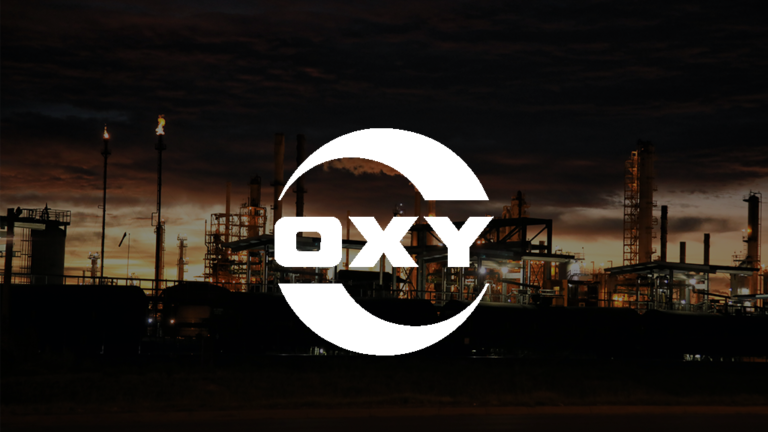
August 17, 2023: To address climate change, Occidental Petroleum (OXY) has agreed to acquire Carbon Engineering Ltd., a Canadian company that develops direct air capture (DAC) technology. The deal, valued at $1.1 billion, is expected to close in the first half of 2024.
DAC technology removes carbon dioxide (CO2) from the atmosphere. This is a critical step in addressing climate change, as CO2 is the primary greenhouse gas responsible for trapping atmospheric heat.
Carbon Engineering’s DAC technology is one of the most efficient and scalable on the market. The company has already built a pilot plant in British Columbia that can remove 1 million tons of CO2 annually. Occidental plans to use Carbon Engineering’s technology to build a network of DAC plants that can remove up to 100 million tons of CO2 annually.
The acquisition of Carbon Engineering is a significant step forward for Occidental in reducing its emissions. The company has set a goal of achieving net-zero emissions by 2050. DAC technology is a vital part of this strategy, as it will allow Occidental to remove CO2 from the atmosphere and offset its emissions from its oil and gas operations.
The acquisition of Carbon Engineering also shows the growing interest in DAC technology. There is an increasing recognition that DAC is essential to addressing climate change, and companies are increasingly investing in this technology.
The following are some actionable takeaways from this news:
- DAC technology is a promising way to remove CO2 from the atmosphere and mitigate climate change.
- Occidental’s acquisition of Carbon Engineering is a significant step forward in developing and deploying DAC technology.
- More companies are likely to invest in DAC technology as the threat of climate change becomes more urgent.
Target’s Stock Jumps 5% After Beating Profit Estimates, Despite Revenue Miss and Lowered Guidance

August 16, 2023: Target Corporation’s stock price jumped 5% in premarket trading on Wednesday after the retailer reported earnings for the second quarter that beat analysts’ expectations. However, the company also missed revenue estimates and lowered its guidance for the full year.
Target’s profit for the quarter was $1.80 per share, up from 39 cents per share in the year-ago period. Revenue was $24.773 billion, down from $26.037 billion in the year-ago period.
Analysts expected Target to report $1.43 per share on revenue of $25.178 billion.
Target’s CEO, Brian Cornell, said that the company’s profit beat was due to several factors, including strong food and beverage sales, household essentials, and beauty products. However, he also said that the company’s revenue miss was due to a decline in sales of discretionary items, such as electronics and home goods.
Cornell also said that Target is lowering its guidance for the full year due to concerns about inflation and the ongoing supply chain disruptions. The company now expects to earn $6.00 to $6.20 per share on revenue of $99.0 billion to $101.0 billion.
Despite the revenue miss and lowered guidance, Target’s stock price jumped in premarket trading. This is likely because the company’s profit beat was much larger than expected.
Actionable Takeaways:
- Target’s profit beat is a positive sign for the company, but the revenue miss and lowered guidance are a concern.
- Target is facing several challenges, including inflation, supply chain disruptions, and a slowdown in discretionary spending.
- Target is lowering its guidance for the full year, but the company still expects to earn a healthy profit.
- Investors should closely monitor Target’s performance in the coming quarters to see how it manages its challenges.
PayPal Appoints Alex Chriss as CEO, Succeeding Schulman

August 15, 2023: In a significant leadership transition, PayPal Holdings Inc. has announced the appointment of Alex Chriss as its new Chief Executive Officer. This move aims to guide the company towards growth under the leadership of a fintech expert with a strong focus on small businesses. Let’s dive into the details to grasp the implications of this change.
The Transition and Vision: Alex Chriss Takes the Helm
Imagine a relay race: Alex Chriss, a seasoned fintech executive, is taking the baton from Dan Schulman to lead PayPal. Chriss, renowned for his role at Intuit Inc.’s QuickBooks business, is set to assume his position on September 27, 2023, officially. Schulman, the outgoing CEO, will remain as a director.
Expertise in Small Business Empowerment: The New Leader’s Background
Chriss comes with a track record of fostering small business growth. His leadership at Intuit’s Small Business and Self-Employed Group, responsible for products like QuickBooks and Mailchimp, exemplifies his commitment to empowering entrepreneurs. He spearheaded initiatives that yielded substantial customer and revenue growth.
A Successful Handover: Schulman’s Impact and Legacy
Picture a relay runner handing over the baton: Dan Schulman, the current CEO, has made remarkable contributions during his tenure. Under his leadership, PayPal’s revenues surged from $9.2 billion in 2015 to an impressive $27.5 billion in 2022. The company’s active accounts more than doubled, exceeding 430 million across 200 markets. Despite challenges, Schulman laid a strong foundation for future success.
Investors’ Confidence and Forward Momentum
Investors are responding positively to the news, with PayPal’s stock seeing a nearly 2% increase. This reflects their confidence in Chriss’s ability to steer the company amid ongoing restructuring efforts.
Navigating Challenges and Growth: Chriss’s Role Ahead
Chriss takes the reins of PayPal during a time of restructuring. The company’s recent announcement of layoffs and its strategic focus on innovative projects signal a concerted effort to adapt to evolving market dynamics. As the new CEO, Chriss will play a pivotal role in harnessing technology, driving growth, and fortifying PayPal’s position in the financial landscape.
Key Takeaways for Investors: The Road Ahead
As investors, it’s crucial to monitor the transition closely. Chriss’s background in technology and small business empowerment suggests a strategic shift towards innovation and customer-centric approaches. Observing how PayPal adapts to changing market demands and positions itself for sustainable growth will provide valuable insights.
In Conclusion: A New Chapter for PayPal
The appointment of Alex Chriss as CEO marks a significant milestone in PayPal’s journey. His leadership, honed through years of experience in fintech and small business empowerment, offers a promising path forward. As PayPal navigates industry shifts and invests in technology, the company’s direction under Chriss’s guidance will shape its trajectory in the dynamic world of finance.
Avivatech Revolutionizes Cash Management with XpressControlTM Software

August 15, 2023: In a game-changing move, Avivatech LLC, an innovative software company specializing in cash and check automation solutions, has unveiled its latest creation: XpressControl software. This software acts like a powerful control center, transforming how retailers and cannabis businesses handle their cash. Let’s break down the significance of this announcement.
The Power of XpressControl
Imagine having a centralized hub that simplifies and streamlines your cash management processes. That’s precisely what XpressControl software aims to be. Avivatech has taken its expertise in cash automation and channeled it into a cloud-based, hosted solution. This means retailers and cannabis businesses can access advanced cash automation software without the burden of hefty upfront investments. It’s like having a remote assistant who handles the complicated stuff, allowing you to focus on your core business.
The Transformational Offering
With XpressControl, cash automation becomes accessible and flexible. Think of it as a subscription-based service that gives you the tools to manage your cash more efficiently. Avivatech handles the implementation and maintenance, ensuring a hassle-free experience. This move is set to boost efficiency for both businesses and accounting teams, ensuring tasks are done accurately and on time. It’s like having a personal efficiency enhancer for your operations.
A Shift in Approach
Traditionally, adopting cash automation solutions required significant upfront investments of time and money. XpressControl is changing that narrative. The subscription model means you can dive into cash automation without a massive financial commitment. It’s like shifting from a long-term contract to a pay-as-you-go model, allowing you to manage your finances more effectively.
Empowering Businesses
XpressControl isn’t just about convenience; it’s about empowering businesses with insights. Imagine having a dashboard that gives you real-time data on cash usage, transaction volumes, and device performance. This dashboard provides retail management actionable insights, enabling them to make informed decisions. It’s like having a crystal ball that helps you predict and shape your cash operations.
Simplicity in Action
The benefits are clear: reduced cash handling costs, optimized change orders, and process compliance. XpressControl also monitors the performance of cash-handling devices and alerts users to any issues that require attention. It’s like having a watchful eye that ensures everything runs smoothly.
Conclusion: A New Era in Cash Management
In the world of retail and cannabis, cash is king. Avivatech’s XpressControl software is the crown that ensures the kingdom runs smoothly. With its cloud-based, hosted solution and subscription model, businesses can now harness the power of automation without breaking the bank. It’s like taking the complexity out of cash management and replacing it with efficiency, insights, and convenience.
Michael Burry, the “Big Short” Prodigy, Places $1.6 Billion Bet Against US Markets

August 15, 2023: Imagine a mastermind who once predicted a massive housing market crash and then made a fortune out of it. That’s Michael Burry – the financial wizard famous for his incredible foresight. Well, he’s at it again, and this time he’s placing a jaw-dropping $1.6 billion bet against the US markets.
The Key Move
Michael Burry’s latest move is like a chess grandmaster making a strategic move on the board. He’s placing bets against two significant players in the market – the S&P 500 and Nasdaq 100. It’s like he predicts these giants will stumble and fall.
How’s He Doing It?
Imagine he’s using a unique tool called a “put option.” It’s like he’s buying the right to sell something at a specific price in the future. For the S&P 500, he’s holding $866 million in put options, and for Nasdaq 100, he’s got $739 million. It’s like he’s saying, “Hey, I think these guys are going down, and I want to make a profit out of it!”
All In on the Bet
Burry’s confidence in this prediction is sky-high. He’s going all out – more than 90% of his investment portfolio is riding on this bet. It’s like he’s pushing all his chips to the center of the table, confident that he’s got a winning hand.
The Twist and Turns
Now, here’s the exciting part. Imagine Burry’s been back and forth with his predictions this year. At one point, he said “sell,” then he changed his mind and said he was “wrong to say sell.” It’s like he’s been watching the game closely and adjusting his strategy as he goes along.
The Challenge and the Reward
While Burry’s making this bold move, the S&P 500 and Nasdaq 100 have been doing well this year. It’s like they’re scoring big points and making investors happy. But Burry’s fearless of a challenge. He’s like a skilled poker player who’s confident he’s got the winning hand, even if the cards on the table don’t seem to agree.
The History
Remember the financial crisis in 2008? Burry was one of the few who saw it coming and made a fortune out of it. It’s like he has a superpower to predict market crashes. His story became a book and a movie called “The Big Short.” Now, it looks like he’s ready to play that game again.
Practical Takeaways
- According to Burry, keep an eye on the S&P 500 and Nasdaq 100 – they might be in for a rough ride.
- Burry’s confidence is remarkable, but even the best predictions can sometimes miss the mark.
- Just like in chess, the financial markets can be unpredictable. Stay informed and adapt your strategy as needed.
Imagine Burry as a strategist playing a high-stakes game of predicting market moves. It’s like he’s reading the future of the markets and placing his bets accordingly, hoping to come out on top once again.
Indiana Medicaid Data Breach: What You Need to Know

August 14, 2023: Over 744,000 Medicaid members in Indiana were impacted in a recent data security incident, raising concerns about personal information exposure. Here’s a breakdown of what happened, why it matters, and steps you can take to protect yourself.
What Happened?
A breach occurred when Maximus Health Services, a contractor working with Medicaid, used a software called MOVEit. This breach exposed sensitive details like names, addresses, case numbers, Medicaid numbers, and even the Social Security numbers of four individuals. The incident came to light in May.
Why It Matters?
Your personal information is valuable, and its exposure can lead to identity theft or fraud. Imagine someone using your identity to commit financial crimes. This breach could lead to such issues for those affected.
Steps to Protect Yourself
Enroll in Credit Monitoring: Maximus offers complimentary credit monitoring and other services from Experian for 24 months. This can help you monitor your credit and detect any unusual activities.
Review Your Credit Report: Federal law allows you to get a free credit report from major credit reporting companies every year. Check your report for any suspicious accounts or inquiries.
Stay Vigilant: Even if you don’t spot any immediate red flags, periodically check your credit reports. It’s an extra layer of security against potential threats.
Act on Suspicious Activity: If you find any unauthorized activity, contact local law enforcement and file a police report. This can help you clear your name from any fraudulent debts.
Use New Medicare Card: If your Medicare Beneficiary Identifier (MBI) was affected, you’ll get a new card with a unique number. Use the instructions provided to update your information.
Key Takeaways:
- Over 744,000 Indiana Medicaid members were affected by a data breach.
- Maximus Health Services’ contractor software, MOVEit, was compromised.
- Personal information, including Social Security numbers, was exposed.
- Protect yourself by enrolling in credit monitoring and reviewing your credit reports.
- Be cautious, act promptly if you notice suspicious activities, and follow instructions for your new Medicare card.
Remember, your personal information’s security matters. Stay informed and take the necessary steps to safeguard your identity.
Illinois Supreme Court Upholds State’s Assault Weapons Ban

August 11, 2023: In a significant legal decision, the Illinois Supreme Court has confirmed the constitutionality of the state’s ban on assault weapons. This means that the prohibition of certain firearms will remain in place across the entire state.
The court ruling, issued by a majority of 4-3, overturned a previous judgment from a lower court that had challenged the ban. The justices stated that the ban aligns with the constitution and does not discriminate against any group nor represent special-interest legislation.
Illinois Governor J.B. Pritzker expressed satisfaction with the verdict, hailing it as a victory for advocates, survivors, and families. Pritzker emphasized that the ban is designed to ensure the safety of communities and prevent the presence of high-powered firearms in public places.
The ban, officially known as the Protect Illinois Communities Act, prohibits the sale of specific assault weapons and accessories, including rifles like the AR-15 and .50-caliber guns. A tragic mass shooting prompted this move during a Fourth of July parade that claimed seven lives. The law, signed by Pritzker in January, has faced opposition from gun owners and Republican lawmakers, but the court’s decision validates its legality.
The legal challenge was led by state Representative Dan Caulkins, who argued that the ban infringes upon the right to equal protection and the Second Amendment. However, the court maintained that the law treats all affected parties equally and that the plaintiffs did not raise a Second Amendment claim in their complaint.
Despite this ruling, the ban still faces additional legal battles in federal court. The court’s decision highlights the ongoing debate surrounding gun control and the balance between individual rights and public safety.
The verdict underscores the state’s commitment to curbing gun violence as the legal landscape continues to evolve. Advocates for the ban believe stricter firearm regulations are essential for ensuring the safety and well-being of citizens. However, critics argue that such bans infringe upon the rights of law-abiding gun owners. The debate will likely persist, echoing the broader national conversation on gun control and individual liberties.
LEGO Takes Flight with Exciting New Concorde Set

August 10, 2023: Ladies and gentlemen, start your imagination engines because LEGO has just unveiled an exciting new addition to their lineup set to soar high in the hearts of fans everywhere. Brace yourselves for the LEGO Concorde 2023 developed – an iconic creation generating a buzz of anticipation.
Mark your calendars, as this masterpiece will hit store shelves on September 4, 2023. A sneak peek into this marvel reveals that it’s expected to carry the set number 10318 and will comprise an astonishing 2083 pieces. While it won’t feature mini-figures, it makes up for it with a meticulously crafted interior boasting intricately designed seats.
Let’s talk numbers. To add this beauty to your collection, you’ll be looking at a price tag of $199.99. Fear not, for it will be available not only on lego.com but also at renowned retailers nationwide. So, prepare your creativity and be ready to embark on an exciting building journey!
As you anticipate its arrival, envision a grand display piece with the Concorde Plane set 2023. While precise dimensions remain under wraps, expect a visually striking creation that demands a special place within your collection.
The LEGO Concorde 2023 set, potentially taking the form of set number 10318, is poised to hit stores on September 4. Imagine the thrill of revealing this meticulously designed aircraft, resembling the NASA Space Shuttle Discovery 10283 set.
Now, let’s get technical. This remarkable set boasts functional landing gear with intricate mechanical elements. Picture it on a wooden-look display stand, creating a stunning presentation that’ll leave you in awe.
Building this masterpiece is no child’s play. Tailored for LEGO enthusiasts aged 18 and above, it promises an enjoyable yet challenging experience bound to reward you with a stunning display of creativity.
The Concorde is more than just an aircraft; it’s a tribute to aviation history. Known for its opulent design and extraordinary capabilities, it graced the skies with its supersonic speeds and unique features. LEGO pays homage to this iconic aircraft with the LEGO Concorde 2023 set, capturing the essence of a bygone era.
As you eagerly await the arrival of this remarkable creation, remember that with every piece you put together, you’re celebrating the legacy of aviation and the passion of LEGO enthusiasts who make dreams take flight.
So, are you ready to embark on this exhilarating building journey? The LEGO Concorde 2023 set promises a construction project and an adventure that’ll remind you why LEGO has been capturing hearts for generations. Let your creativity soar as you bring this aviation marvel to life!
Stay tuned for September 4, 2023, when the skies welcome the LEGO Concorde 2023 set, a testament to the power of imagination and innovation. Let your inner aviator take flight!
Wheels Up Faces Challenges, Shares Drop

August 10, 2023: Wheels Up Experience is facing a challenging situation in the world of aviation. The company, which arranges plane charters, needs clarification about its ability to keep going smoothly. This concern has led to a significant drop in its stock value – a staggering 42%.
A combination of factors has hit Wheels Up. First, soaring due to demand from wealthy travelers during the pandemic, private jet travel has taken a hit as regular commercial travel is picking up again. This shift has caused a decline in North American business flights, down 3.6% compared to the previous year.
Delta Air Lines, a major player in the airline industry, stepped in to provide short-term funding to Wheels Up. This funding is a secured promissory note, helping Wheels Up keep things afloat. While the exact amount of funding wasn’t disclosed, this move shows an effort to stabilize the situation.
However, the challenges Wheels Up is facing have led to more than just financial impact. The company has taken steps to restructure itself, including making job cuts and changes in management. Additionally, Wheels Up had to cancel its scheduled earnings call, indicating the gravity of the situation.
To navigate these challenging times, Wheels Up is looking for strategic partnerships to find a way forward. One such collaboration involves Airshare, a private jet operator, which has shown interest in acquiring Wheels Up’s non-core aircraft management business. This potential acquisition could lead to a broader network of aircraft management services across the United States.
While the road ahead might be challenging, Wheels Up actively explores options to ensure survival. The company’s focus on partnerships and adapting to changing trends in the aviation industry will likely play a crucial role in determining its fate.
In summary, Wheels Up is grappling with uncertainties about its future, causing a significant drop in its stock value. Factors like the rebound of commercial travel and the company’s restructuring efforts have contributed to these challenges. Delta Air Lines has provided temporary financial support, and Wheels Up is seeking strategic partnerships to navigate this turbulent period. The aviation industry’s changing landscape will test Wheels Up’s resilience and adaptability in the coming months.
Inflation’s Surprising Impact on Stock Types: Value vs. Growth

August 09, 2023: The intricate world of finance often holds surprises, and one such twist lies in the connection between inflation and different types of stocks. While traditional thinking might suggest a clear relationship, the reality is more nuanced. Today, we’ll delve into the fascinating interplay between inflation and the stock market’s two major players: value stocks and growth stocks.
Understanding the Unlikely Dance
Inflation is when prices for goods and services gradually rise over time. This can lead to less purchasing power for your money, affecting your everyday choices. But how does this phenomenon interact with the stock market’s ebb and flow?
Value Stocks: The Unconventional Winner
Traditionally, inflation hits all stocks equally. However, the story could be more straightforward. Inflation can impact value stocks and growth stocks in different ways. Let’s take a closer look at value stocks.
1. Value Stocks and Their Resilience
Value stocks, known for their strong cash flows and lower valuations, show an interesting resilience in the face of inflation. Central banks may raise interest rates to control the situation when inflation rates soar. This, in turn, causes bond yields to rise. This can be a hurdle for growth stocks that depend on future earnings. Their projected earnings, discounted to their present value using bond yields, take a hit. This decrease in future value affects their stock prices.
2. The Value Stocks Advantage
Value stocks, on the other hand, have cash flows that remain steady, even amid inflation. Their intrinsic value might not be greatly affected, making them a more attractive option during inflationary periods. History also shows that value stocks tend to shine when inflation is on the rise.
Growth Stocks: The Intriguing Story
Growth stocks, representing fast-growing companies, can face a bumpier ride when inflation looms. The increase in bond yields, prompted by central bank actions to counter inflation, impacts these stocks. The discount rate, tied to bond yields, rises, leading to a decline in the net present value of future cash flows. As a result, growth stocks often see their multiples decrease during inflationary periods.
The Bigger Picture: Strategy Matters
The complex relationship between inflation and stocks is not one-size-fits-all. Value stocks have historically outperformed during periods of inflation, while growth stocks have seen challenges. Investors note that understanding these dynamics can help shape your investment strategies and make the most of market fluctuations.
Practical Takeaways:
Value Stocks: Value stocks perform better during inflation due to their steady cash flows and relative stability.
Growth Stocks: Inflation can negatively impact growth stocks as their future earnings become discounted, affecting their stock prices.
Investment Strategy: Investors should consider the unique dynamics of value and growth stocks during inflationary periods, adjusting their portfolios accordingly.
In the intricate dance of finance, it’s clear that inflation brings its rhythm to the value and growth stocks equation. Understanding this rhythm can be a valuable tool in navigating the ever-changing landscape of the stock market.
Disney’s ESPN Faces Uncertainty Amid Changing Landscape

August 09, 2023: As the media landscape evolves, the future of Disney-owned ESPN is becoming less certain. ESPN, known for its sports coverage, has been a key source of revenue for Disney for nearly three decades. However, recent challenges in the media industry have led to a decline in profits and raised questions about the network’s trajectory.
Shift in Media Dynamics
ESPN has historically been a financial powerhouse for Disney, bolstering the company’s finances during economic downturns and industry shifts. Its revenue model, which relied on fees from cable subscribers and advertising, generated substantial income for both ESPN and Disney.
New Challenges
The rise of streaming platforms and the decline of traditional cable TV have posed challenges for ESPN. The network’s cable subscriber base has shrunk, with more viewers cutting the cord and opting for streaming services. This has decreased revenue from affiliate fees paid by cable providers for carrying ESPN channels.
Exploring New Avenues
To address these challenges, Disney is contemplating a strategic shift for ESPN. While Disney CEO Bob Iger has expressed the intention to retain a stake in ESPN, he’s also exploring partnerships to help the network adapt to the changing media landscape. These partnerships involve expertise in content creation, distribution, or technology.
Transition to Streaming
In response to the changing media landscape, ESPN is considering transforming into a digital streaming company. This move would align with the trend of viewers migrating to online platforms for entertainment. However, this transition’s specific timeline and details are yet to be fully clarified.
Complex Decisions Ahead
The decision-making process for ESPN’s future is multifaceted. Disney’s executives, including former top-ranking members such as Tom Staggs and Kevin Mayer, are working on devising strategies to navigate these challenges. The involvement of experienced individuals underscores the significance of the decisions being made.
Strategic Partnerships
The potential stake sale in ESPN represents a departure from the network’s longstanding role as Disney’s financial pillar. By seeking strategic partners, Disney aims to leverage external expertise and resources to ensure ESPN’s relevance in the ever-evolving media landscape.
Takeaways for the Industry
ESPN’s journey reflects broader trends in the media industry. The decline of traditional cable TV and the rise of streaming platforms reshaped how content is consumed. For other media companies, especially those reliant on conventional revenue models, the lessons from ESPN’s experience highlight the importance of adaptability and exploring new avenues for growth.
Navigating Uncertainty
As Disney grapples with ESPN’s future, the decisions made could set a precedent for the industry’s response to changing viewer habits and technological advancements. Adapting to the digital era while maintaining profitability is a challenge that media companies must address to remain relevant and competitive.
Conclusion
ESPN’s role as Disney’s financial powerhouse is facing challenges due to shifts in media consumption. The network’s exploration of strategic partnerships and potential transition to a digital streaming model reflects the broader changes in the media landscape. Disney’s decisions regarding ESPN will likely have far-reaching implications for the media industry’s future.
Forint Gains Despite Lower Inflation, Zloty Declines: CEE Markets Update

August 08, 2023: The Hungarian Forint has seen its value rise for the third consecutive day, even as July’s inflation figures ease. Simultaneously, the Polish zloty is experiencing a decline. This situation might seem puzzling initially, but let’s break it down step by step.
1. Forint’s Surprising Rise:
The Hungarian forint, Hungary’s national currency, has strengthened in value over three days. This is notable because inflation rates for July have shown a decrease. Inflation refers to the general increase in prices of goods and services over time. When inflation goes down, it usually suggests that the overall cost of living has become less expensive. Despite this decrease in inflation, the forint has shown resilience and gained value.
2. Zloty’s Downward Movement:
On the other hand, the Polish zloty, Poland’s official currency, is heading in the opposite direction. It’s experiencing a decline in its value. This might be due to factors affecting the Polish economy, including market sentiment, international trade dynamics, and internal economic conditions.
3. Readability Score:
Like how these currency movements seem complex, so can the concept of readability when applied to writing. Readability is about making content easy to understand for readers. It’s like using simple words and clear sentences in an article, just as these currency movements are being broken down into simpler terms here. Think of it as presenting information in a way that anyone, even without specialized knowledge, can comprehend.
4. Key Takeaways:
If you’re wondering what all this means for you, here are a couple of practical takeaways:
Forint’s Strength: The Forint’s rise despite lower inflation might indicate confidence in Hungary’s economic stability. This could be a positive sign for investors looking at the Hungarian market.
Zloty’s Weakness: Zloty’s decline could reflect ongoing challenges in Poland’s economic landscape. If you’re involved in international trade or investments related to Poland, it’s worth staying updated on the economic factors influencing the zloty’s performance.
Readability Matters: Just as understanding currency trends can impact your financial decisions, focusing on readability in communication is essential. Whether you’re writing emails, reports, or articles, using clear language and organized content can help ensure your message gets across effectively.
In summary, the Hungarian forint’s rise and the Polish zloty’s decline present a nuanced economic picture. These movements are a reminder that the world of finance can be complex, just as the concept of readability can be in communication. By breaking down these concepts, we aim to make them more accessible and understandable.
US Small Business Confidence Reaches 8-Month High in July.

August 08, 2023: Small businesses in the US are feeling more optimistic as their confidence hits an 8-month peak in July. This positive sentiment comes from the National Federation of Independent Business (NFIB) Small Business Optimism Index, which measures how small business owners feel about the economic landscape. The index rose by 0.9 points to 91.9 in July, marking the 19th consecutive month below the long-term average.
Despite this uptick in optimism, there are still challenges. Around 21% of business owners highlighted inflation as their primary concern, a drop of three points from June. However, overall, the rising optimism suggests that small business owners manage to navigate the economic environment, even though future sales growth and business conditions are viewed cautiously.
Key highlights from the report include:
- The outlook for better business conditions over the next six months has improved by 10 points from June, although it remains negative.
- A significant 42% of business owners reported that job openings were challenging to fill, which remains consistently high.
- The percentage of owners increasing average selling prices has slightly decreased, although it remains at a level that reflects inflationary pressures.
- The percentage of owners expecting sales to be higher has improved by two points, although the perspective remains pessimistic.
- This report emphasizes the intricate balance small business owners are navigating. While optimism is rising, challenges like hiring difficulties and inflationary pressures persist. It’s a complex landscape where small business owners strive to maintain operations, adapt to changing economic conditions, and plan for the future.
Practically, this rise in confidence might lead to increased investments in labor and capital, which could fuel growth and contribute positively to the overall economy. However, it’s essential to monitor how these trends evolve over time and whether the challenges highlighted in the report persist or ease.
In conclusion, the rise in small business confidence is a positive sign, indicating that businesses adapt to the changing economic landscape. While challenges remain, the fact that owners are more optimistic could contribute to positive economic developments in the coming months.
Sage Therapeutics’ Stock Plummets 49% Following FDA Decision

August 07, 2023: Sage Therapeutics Inc. faced a significant setback as its stock price plummeted by 49% after the U.S. Food and Drug Administration (FDA) approved quinolone treatment for postpartum depression but rejected its use for major depressive disorder (MDD), a more common condition. This decline in stock value represents the second-largest drop since the company went public in July 2014.
The FDA’s decision dealt a blow to Sage’s hopes of expanding the use of zuranolone to treat MDD, which would have presented a far more excellent market opportunity. The FDA issued a complete response letter (CRL) for the new drug application for MDD, stating that the evidence provided did not support zuranolone’s approval for MDD treatment and that additional studies would be required.
As a result of the disappointing news, several financial firms took action. Oppenheimer and Wedbush downgraded Sage’s stock, and Truist put its rating and stock price target under review. Trust expressed caution over another Sage drug, SAGE-718, which is being evaluated for cognitive decline related to Huntington’s, Parkinson’s, and Alzheimer’s diseases.
Sage Therapeutics’ CEO, Barry Greene, responded that the company is reviewing the FDA’s feedback and evaluating its next steps. He emphasized the importance of resource allocation, pipeline prioritization, and workforce reorganization to extend their cash runway. The company plans to provide further details and next steps before the end of the third quarter.
The FDA’s decision impacts Sage Therapeutics’ financial standing and raises questions about the company’s overall valuation. Analysts from Oppenheimer and Truist highlighted that zuranolone’s lack of efficacy for MDD was unexpected and has significant implications for the company’s future.
Practical Takeaways:
- Investors should closely monitor Sage Therapeutics’ actions in response to the FDA’s decision and strategic plans.
- The rejection of zuranolone for MDD treatment may impact the company’s valuation and future investment decisions.
- Sage’s focus on developing other drugs, like SAGE-718, will be critical for its future growth and success in the pharmaceutical market.
In conclusion, Sage Therapeutics faces a challenging period following the FDA’s decision, with its stock value taking a significant hit. The rejection of zuranolone for MDD has prompted the company to reassess its plans and resources to navigate the road ahead successfully. Investors and stakeholders will closely watch Sage’s actions and strategic decisions in the coming months.
Tyson Foods Struggles Amid Slowing Demand, Announces Closure of Four US Chicken Plants

August 07, 2023: Tyson Foods, a major US meat company, faced challenges in the third quarter as demand for chicken and pork declined, leading to lower revenue and profits. The company missed Wall Street expectations, reporting a 3% drop in net quarterly sales, which amounted to $13.14 billion, falling short of analysts’ expectations of $13.59 billion. As a result, Tyson Foods’ shares tumbled about 8%.
Factors Impacting Tyson Foods:
Slowing Demand: Tyson Foods experienced reduced demand for its beef, chicken, and pork products, which posed macro and market challenges in the protein segments.
Inflation and Higher Costs: To offset increasing feed and labor costs, Tyson raised prices last year. However, in 2023, lower prices in core protein segments negatively impacted the company’s profitability.
Unpredictable Demand: The company’s executives struggled to predict consumer demand accurately, making it challenging to pass on higher costs to consumers effectively.
Profit Margin Pressure: The declining US cattle herd reduced profit margins in the beef business, further impacting the company’s financial performance.
Actionable Takeaways:
For Tyson Foods and the industry:
- Evaluate and adapt to changing consumer preferences and market dynamics to ensure continued growth and profitability.
- Invest in accurate demand forecasting tools and strategies to optimize production and pricing decisions.
- Seek innovative cost-saving measures while maintaining product quality to improve overall operational efficiency.
For consumers and investors:
- Be mindful of potential fluctuations in food prices due to market challenges and inflationary conditions.
- Consider exploring alternative protein sources in response to changing market dynamics.
- Monitor Tyson Foods’ strategic initiatives and performance updates to make informed investment decisions.
Tyson Foods’ challenges reflect broader shifts in consumer preferences and market conditions. By reassessing its operations and closing four US chicken plants, the company aims to reduce costs and streamline its business. In the future, a proactive approach to addressing market challenges will be crucial for Tyson Foods and the food industry.
Amazon s Remarkable Performance and Apple’s Disappointing Results

August 07, 2023: In the second quarter of 2023, Amazon (AMZN) delivered an outstanding performance, surpassing Wall Street’s expectations with impressive growth and profitability. On the other hand, Apple (AAPL) reported lower-than-anticipated results, leading to investor disappointment.
Amazon’s Success:
Amazon’s revenue for the second quarter grew by 11% to reach an impressive $134.4 billion, outperforming analysts’ estimates of $131.5 billion. The key driver behind this success was Amazon Web Services (AWS), its cloud-computing division, which saw sales increase by 12% to $22.1 billion. The demand for AWS surged as businesses embraced cloud technology anew, contributing to the company’s overall success.
Additionally, Amazon’s Prime Day discount event held in July proved to be a significant boost, with the company reporting its “biggest ever” sales day. The event resulted in accelerated revenue growth, prompting Amazon to forecast a strong third quarter, with sales expected to be between $138 billion and $143 billion, representing growth of 9% to 13%.
Furthermore, CEO Andy Jassy’s cost-cutting initiatives have begun to yield positive results, reflected in the company’s remarkable profitability. Amazon reported a quarterly profit of $6.7 billion, nearly double the analysts’ expectations.
Apple’s Disappointment:
In contrast, Apple’s second-quarter results did not meet market expectations. Although the company slightly exceeded Wall Street’s revenue estimates, concerns arose over its flat revenue growth and declining iPhone sales.
Apple’s quarterly revenue fell 1.4% to $81.8 billion, with iPhone sales down by 2% compared to the previous year. The company faces challenges in a mature smartphone market, making it critical to find new sources of growth beyond the iPhone.
Investors are particularly concerned about Apple’s valuation problem. The company’s stock has experienced a significant surge, leading to an overvalued position. Despite the optimistic outlook earlier this year, recent data suggest a potential pullback in the near term as earnings decline and valuation concerns arise.
Key Takeaways:
- Amazon’s impressive performance was fueled by its cloud-computing division, AWS, and its successful Prime Day event.
- CEO Andy Jassy’s cost-cutting efforts contributed to Amazon’s significant profitability.
- Apple’s revenue growth stagnated due to declining iPhone sales and challenges in the smartphone market.
- Concerns over Apple’s valuation have led to uncertainty among investors.
Actionable Advice:
If you’re an investor considering Amazon stock:
- Monitor AWS performance and its impact on Amazon’s overall revenue growth.
- Stay informed about the company’s initiatives to drive future growth, including Prime Day events and expansion into new markets.
- Please keep track of cost-cutting efforts and their influence on Amazon’s profitability.
If you’re an investor considering Apple stock:
- Pay attention to the company’s efforts to diversify revenue streams beyond the iPhone.
- Assess valuation metrics and potential risks related to the stock’s overvaluation.
- Monitor upcoming product launches and innovations to gauge future growth prospects.
Carl Icahn Company Stock Plummets 30% After Slashing Dividend

August 04, 2023: Shares of Carl Icahn s conglomerate, Icahn Enterprises, experienced a significant decline of 30% in its stock price after the company announced a drastic measure of cutting its quarterly dividend in half. The decision to reduce the dividend came amid notable criticism from short-seller Hindenburg Research. This development profoundly impacted the company’s stock value and attracted significant attention from investors.
Before the dividend cut, Icahn Enterprises faced a challenging period following Hindenburg Research’s public short position in May. The short seller alleged that the company’s asset valuations were inflated and raised concerns about its financial practices. As a result, the stock had already tumbled nearly 44% in the second quarter and was down by 54% for the year.
Hindenburg Research particularly criticized the company’s high dividend yield, which it believed was unsustainable given its cash flow and investment performance. In response to the criticism, the 87-year-old investor Carl Icahn stated that the future distributions would be determined quarterly based on various factors, regardless of Hindenburg’s report.
Following the dividend cut announcement, Icahn Enterprises reported a net loss of $269 million for the second quarter. In part, Carl Icahn attributed this loss to the impact of short selling on companies he controlled or invested in. He further blamed the size of the hedge book relative to their activist strategy.
Carl Icahn is well known for his history of corporate activism and has been involved in high-profile corporate battles. However, recently, his company has been grappling with challenges, particularly since the Hindenburg report became public.
The sharp drop in Icahn Enterprises’ stock price has also significantly affected Carl Icahn’s net worth, leading to a decline of approximately $2 billion. This development highlights the sensitivity of investor sentiment to company-specific events and external criticisms.
Investors should remember that various factors, including market sentiment, company performance, and external reports or allegations, can influence stock prices. When investing in the stock market, it is essential to conduct thorough research, stay informed about the company’s fundamentals, and consider potential risks associated with investing in any particular stock.
As this situation unfolds, investors and analysts will closely monitor Icahn Enterprises’ performance, corporate actions, and responses to the short seller’s allegations. It remains crucial for investors to approach such scenarios with caution and make well-informed decisions based on a balanced assessment of available information.
Nikola Faces Stock Decline Amid Multiple Challenges
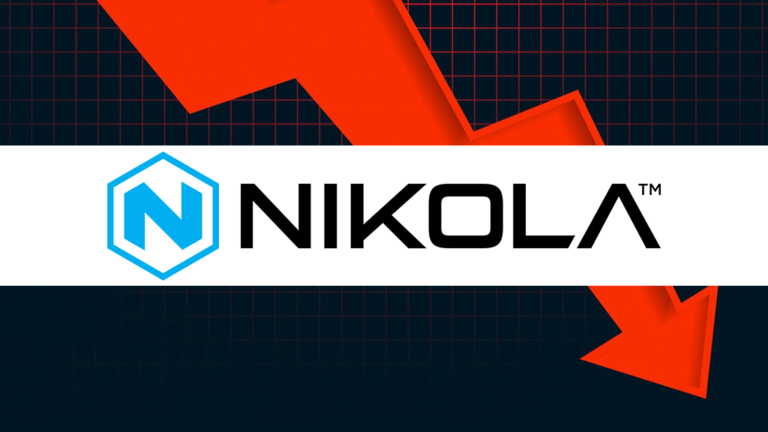
August 04, 2023: Nikola, an electric vehicle company, is experiencing a significant decline in its stock value. Shares of Nikola dropped approximately 21% during Thursday’s trading, and the stock price now sits down more than 99% from its peak in June 2020.
The current plummet in stock value is a result of multiple factors. Firstly, Nikola issued a message revealing that it is at risk of being delisted from the Nasdaq stock exchange. The company’s share price has been consistently below the required $1 minimum level to trade on Nasdaq, and it has 180 days to bring its price above this level to avoid delisting.
To address its financial challenges, Nikola announced a new fundraising move. However, this announcement could have inspired more investor confidence, leading to a further decline in its stock value.
If Nikola is indeed delisted, it could face reduced visibility, making it harder for investors to purchase its shares and being excluded from index-tracking funds. To raise liquidity, the company might consider selling new stock, but this approach could dilute existing shareholders.
A reverse stock split is a potential measure Nikola could take to boost its share price above $1. This action would reorganize the company’s equity structure and potentially elevate its stock value. However, even if Nikola avoids delisting, it will not address the business’s fundamental issues.
The company has grappled with substantial debt, mounting losses, and a challenging market situation. Its net loss in the year’s first quarter amounted to roughly $169.1 million, indicating ongoing financial challenges.
Despite these setbacks, Nikola is urging shareholders to vote in favor of a proposal that would allow it to increase its outstanding share count, thereby raising additional funds.
In conclusion, Nikola’s stock decline reflects the company’s precarious financial position and the need to address fundamental challenges in its business operations. The company must carefully navigate its financial situation, engage in strategic decision-making, and find sustainable solutions to regain investor confidence and move towards a path of recovery. As the company continues to evolve, investors should closely monitor its actions and performance in the coming months.
Lionsgate Acquires eOne From Hasbro for $500 Million: Actional Takeaways.
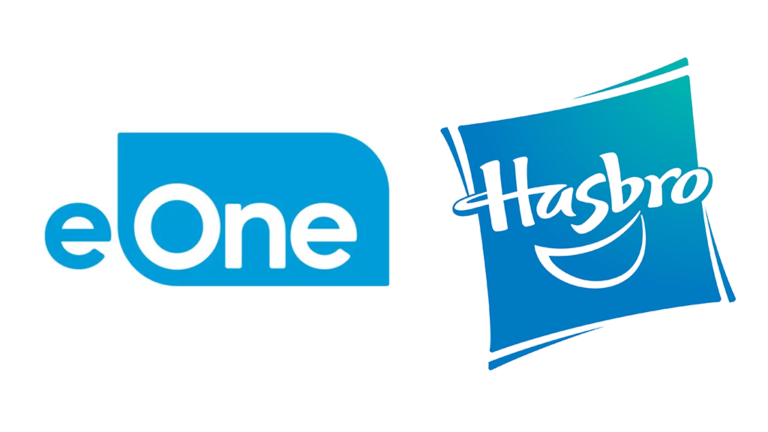
August 03, 2023: Lionsgate Entertainment acquired Hasbro’s eOne film and TV studio for approximately $500 million in a significant deal. The transaction involves $375 million in cash, subject to adjustments and the assumption of production financing loans. The acquisition includes a content library of nearly 6,500 titles, as well as active productions for non-Hasbro-owned intellectual properties such as “The Rookie,” “Yellowjackets,” and “Naked and Afraid” franchises. Additionally, it covers the eOne unscripted business, including rights to certain Hasbro-based shows like “Play-Doh Squished.”
Actional Takeaways:
- The acquisition of eOne strengthens Lionsgate’s scripted and unscripted television business while expanding its presence in Canada and the U.K.
- With thousands of properties, the acquisition adds a world-class library to Lionsgate’s portfolio of assets.
- The deal aligns with Hasbro’s strategic objective of focusing on more profitable brands.
- Lionsgate CEO Jon Feltheimer expects the acquisition to be immediately accretive and enhance its position as one of the world’s leading independent content platforms.
- Hasbro will utilize the proceeds from the sale to retire at least $400 million of floating-rate debt by the end of the year, which could lead to a stronger financial position.
- Hasbro will continue prioritizing entertainment, developing and producing content based on its rich vault of owned brands, ensuring a continued focus on innovation and creative development.
- The deal represents a significant milestone for Hasbro’s commitment to executing its Blueprint 2.0 strategy, emphasizing increased investment in priority brands and building a sustainable business model.
- The acquisition offers an opportunity for Lionsgate to explore various entertainment possibilities, including the potential for a movie adaptation of the iconic board game “Monopoly.”
The acquisition of eOne by Lionsgate is expected to create new opportunities in the entertainment industry, fostering creativity and expanding content production capabilities. Both companies can play to their core strengths while enhancing their global reach and content offerings. Additionally, the deal positions Hasbro to focus on a more streamlined and profitable brand portfolio, opening doors to new partnerships and growth opportunities in the future.
FDA Warns of Reduced Effectiveness in Recalled Batches of Tydemy Birth Control Pills

August 03, 2023: The U.S. Food and Drug Administration (FDA) has issued a warning regarding sure lots of Tydemy birth control pills, which may have reduced effectiveness due to decreased levels of a critical ingredient in the product. The manufacturer, Lupin Pharmaceuticals, voluntarily recalled two batches of the oral contraceptive after one lot tested low for ascorbic acid and high for a known impurity. Inadequate ascorbic acid could potentially impact the effectiveness of birth control, leading to unexpected pregnancies.
Despite no reported adverse effects related to the recalled lots of Tydemy to date, it is essential for individuals using this birth control to check their stock and contact their healthcare provider if needed. The recalled Tydemy lots were distributed across the U.S. between June 2022 and May 2023, and their lot codes can identify them: L200183 and L201560, with expiration dates of January 2024 and September 2024, respectively.
Lupin Pharmaceuticals advises patients to continue taking their medication but to consult their healthcare provider immediately for advice on alternative contraceptive methods if the recall impacted their birth control or if they experience any problems taking the product.
The company also notifies wholesalers, distributors, pharmacies, and retailers, arranging to return all impacted products. Contact information can be found on the recall notice for those seeking reimbursement.
Key Actional Takeaways:
- If you use Tydemy birth control pills, check your stock to see if it falls under the recalled batches (lot codes L200183 and L201560).
- If the recall impacted your birth control, contact your healthcare provider immediately for advice on alternative contraceptive methods.
- Lupin Pharmaceuticals is arranging for the return of the recalled products, and reimbursement information can be found on the recall notice.
It’s essential for individuals using Tydemy birth control pills to take appropriate action and consult with healthcare providers to ensure effective contraceptive measures are in place. As Lupin Pharmaceuticals addresses the recall and the FDA closely monitors the situation, the safety and well-being of consumers remain a top priority.
US Jobs Report Preview: NFP Data to Impact Gold, U.S. Dollar, and S&P 500

August 03, 2023: US Jobs Report Preview: The U.S. Bureau of Labor Statistics will unveil the July Nonfarm Payrolls (NFP) report, expected to show a gain of 200,000 jobs following June’s increase of 209,000 jobs. The outcome of this report will significantly influence the outlook for gold, the U.S. dollar, and the S&P 500.
The report’s strength relative to market expectations will hold the key to the future trajectory of these markets. Traders should closely monitor the economic calendar in the coming days to adapt their strategies and make informed investment decisions.
Fed Interest Rate Expectations:
The Federal Reserve’s stance on data-dependent decision-making means economic conditions could prompt a reassessment of their ongoing tightening cycle. If job and earnings growth surpass expectations, interest rate expectations may shift more hawkishly, potentially impacting the U.S. dollar positively but putting pressure on gold and the S&P 500. An NFP figure above 300,000 could increase the likelihood of this scenario.
On the other hand, weak employment gains, like figures below 150,000, could lead to the opposite scenario. A soft NFP report might raise concerns about the economy’s state, prompting a dovish repricing of the Fed’s tightening campaign. Consequently, the U.S. dollar may retreat, while the S&P 500 and gold prices could see solid gains.
Actionable Takeaways:
Keep a close eye on the upcoming US Jobs Report, as it will shape the outlook for gold, the U.S. dollar, and the S&P 500.
Monitor Fed interest rate expectations, as any shift in policy could have significant implications for financial markets.
Stay informed about key economic indicators and data releases that may impact market sentiment and trading decisions.
With the NFP report on the horizon, investors should stay vigilant and adjust their strategies based on the latest data to navigate potential market movements effectively.
Ex-US Attorney: Trump’s Defense Unlikely to Work Without Testifying

August 02, 2023: Former President Donald Trump’s defense strategy in his classified documents lawsuit faces challenges, according to a former US Attorney. The case involves allegations of Trump unlawfully retaining classified materials and obstructing the government’s investigation after leaving the White House. The upcoming hearing will focus on how classified information will be shared between the parties and its impact on the trial.
The case’s complexity lies in the Classified Information Procedures Act (CIPA), a national security law that protects classified information while ensuring the defendant’s due process rights. CIPA will determine what evidence will be shared with Trump and his co-defendant’s attorneys and what will be admissible at trial. The former president’s defense argues that the records in question were not classified, which may complicate the proceedings.
Trump’s legal team must be cautious about “graymail,” where the defendant threatens to expose secrets during the trial to coerce the government into dropping the case. Additionally, CIPA aims to establish a pretrial process to determine the relevance and admissibility of classified information.
The outcome of this hearing is essential, as it will shape the trial and impact Trump’s defense strategy. Trump may need to consider testifying to strengthen his defense, as relying solely on legal arguments may not be sufficient. In any case, handling classified information and how it aligns with national security interests will be at the heart of the proceedings.
HCM Experiencing Rapid Growth at a CAGR of 73.0%

August 02, 2023: The Human Capital Management (HCM) Suite Application market is witnessing significant expansion with a Compound Annual Growth Rate (CAGR) of 73.0%. HCM is a comprehensive set of practices and tools for recruiting, managing, and developing employees. It goes beyond traditional HR functions to include strategic disciplines like talent management and employee engagement.
Why Human Capital Management Matters:
Investing in human capital is vital for businesses as it can enhance employee creativity, productivity, and profitability. Please prioritize HCM to avoid missed opportunities, lost revenue, and higher labor costs. Staying ahead of major workforce trends, such as changing demographics, the gig economy, complex legislation, and HR data management, is crucial for organizations to thrive in a dynamic market.
The Core Functions of HCM Software:
HCM software encompasses various categories designed to streamline HR processes:
- Core HR: This includes payroll, benefits administration, onboarding, compliance management, and employee data maintenance.
- Talent Management: This involves recruiting, developing, and retaining employees through modules like performance management, compensation management, learning, and succession planning.
- Workforce Management: It focuses on deploying employees with the necessary skills to specific regions, departments, or projects and includes time and attendance management, workforce planning, labor scheduling, and budgeting.
- Service Delivery: It comprises HR help desks, intranet portals, employee self-service, and manager self-service functions.
The Role of HCM Technology:
HCM technology is critical in making HR more strategic and financially successful. It leverages analytics, social media, collaboration, and mobility to optimize workforce management. Predictive analytics and forecasting enable data-driven decision-making, while cloud-based solutions offer scalability and cost-effectiveness. Automated workflows reduce administrative burdens and boost productivity.
Choosing the Right HCM System:
Organizations can opt for either best-of-breed or unified HCM solutions. The best-of-breed approach allows purchasing specific applications from different vendors for greater functionality, while suitable solutions provide a more straightforward and integrated experience with less robust features.
Conclusion:
As the Human Capital Management Suite Application market multiplies, organizations must embrace HCM strategies and technologies to attract, engage, and retain talent effectively. By adopting data-driven decision-making and optimizing talent strategies, businesses can thrive in the evolving workforce landscape and ensure long-term success.
How to Ensure Safety from XR Technology

August 02, 2023: How to Ensure Safety from XR Technology Natural or human-caused disasters can devastate life and property. Proper preparedness and disaster management are crucial for minimizing the impact of such events. Technology plays a significant role in disaster management, and one area that has shown promise is the use of Augmented Reality (AR), Virtual Reality (VR), and Artificial Intelligence (AI). These technologies, collectively known as Extended Reality (XR), offer unique opportunities in information communication, rapid damage assessment, reliable Building Information Modeling (BIM), and more.
Understanding AR, VR, and MR:
AR, VR, and MR are computer graphics application areas allowing users to interact with computer-generated imagery in natural and virtual environments. VR creates an entirely virtual environment, while AR overlays virtual elements onto the natural environment. MR combines virtual and authentic ingredients to provide a seamless user experience. These technologies have proven valuable tools for Disaster Management Applications, allowing cost-effective rapid prototyping and human-in-the-loop design.
Benefits and Applications:
Various governmental agencies and academic institutions utilize XR technology in training activities, including emergency management and public health preparedness. These tools offer realistic simulations and immersive experiences that enhance training effectiveness and preparedness. Additionally, XR can recreate disaster scenarios for researchers, government authorities, and rescue teams, providing valuable insights into disaster responses without risking real-life hazards.
Challenges and Solutions:
Despite the advantages of XR in disaster management, there are some barriers to overcome. Efficient processing in low-cost XR, smart rendering, and minimizing motion sickness are among the challenges. Disaster simulation designers must balance ecological validity and the psychological impact of scenarios. Addressing these issues requires ongoing research and development to optimize XR technologies for disaster management applications.
Future Directions:
Systematic reviews of XR usage in disaster management are needed to identify trends, preferences, and common research areas. Understanding why XR is preferred and its boundaries will contribute to its effective integration into disaster management strategies. Addressing the gaps and challenges in the literature will pave the way for future improvements and innovations in XR technologies for disaster preparedness and response.
Practical Takeaways:
Embrace XR Technology: Government agencies, academic institutions, and disaster management organizations should explore applying XR technology in training and preparedness activities.
Foster Research and Collaboration: Encouraging research and collaboration among experts in XR, disaster management, and technology will drive advancements and address challenges effectively.
Invest in Safety Measures: When implementing XR in disaster simulations, prioritize safety measures to minimize the risk of motion sickness and ensure a positive user experience.
Evaluate and Improve: Continuously assess the effectiveness of XR applications in disaster management and seek opportunities for improvement based on user feedback and research outcomes.
In conclusion, AR, VR, and AI technologies hold immense potential to revolutionize disaster management. By harnessing these tools effectively, disaster response teams can enhance preparedness, improve training, and save lives in the face of emergencies. Addressing challenges and fostering further research and collaboration will propel the application of XR technology toward a safer and more resilient future.
US Manufacturing Sector Shows Signs of Stabilization in July

August 01, 2023: The US manufacturing sector exhibited signs of stabilization in July, with the final S&P Global Manufacturing Purchasing Managers’ Index (PMI) at 49.0, the same as the preliminary reading.
Understanding the PMI:
The PMI is a crucial economic indicator that provides insights into the manufacturing sector’s health. It is calculated by analyzing data from a panel of around 800 manufacturers who respond to questionnaires. The index is a weighted average of five components: New Orders, Output, Employment, Suppliers’ Delivery Times, and Stocks of Purchases. A reading above 50 indicates expansion, while below 50 suggests contraction.
July’s Manufacturing PMI Highlights:
- The S&P Global US Manufacturing PMI remained at 49.0 in July, indicating the sector’s operating conditions stabilized after a downturn in the previous months.
- New orders declined as both domestic and external demand conditions remained subdued.
- Companies scaled back their input buying, leading to a significant depletion of inventory holdings.
- Despite lower backlogs of work, firms increased employment faster, showing increased confidence in future output.
- Raw material costs saw a renewed rise, although only marginally.
- Selling prices remained broadly stable for the second month as manufacturers sought to remain competitive and boost sales.
Actionable Takeaways:
Manufacturers should closely monitor domestic and international demand conditions to adapt their production and inventory management strategies accordingly.
They are maintaining competitive pricing strategies while controlling costs is vital to sustaining sales and profitability in a challenging sales environment.
Firms must focus on streamlining supply chains to mitigate the impact of input cost fluctuations and maintain inventory levels in line with demand.
Confidence in the outlook for output may warrant further investment in hiring and upskilling employees to enhance workforce productivity.
Looking Ahead:
Despite the softening in July, the manufacturing sector is expected to stabilize further in the coming months, as forecasts project the PMI to be 48.80 points by the end of the current quarter.
Long-term projections foresee the US Manufacturing PMI trending around 53.00 points in 2024 and 52.00 points in 2025, indicating a gradual recovery.
Minnesota Cannabis Businesses Hope to Cultivate Home Growing

August 01, 2023: Minnesota’s cannabis industry is looking to allow home cultivation as a significant step toward marijuana legalization. Here’s a breakdown of what it means for the state:
1. The Comprehensive Plan:
Minnesota’s legislature is examining a 243-page bill to legalize marijuana for adults aged 21 and older. The proposal combines two significant aspects: decriminalizing marijuana possession and usage and expunging records of individuals previously charged with minor marijuana offenses.
2. Home Cultivation and Availability:
If the bill becomes law, individuals can grow marijuana at home for personal use. The legislation permits up to eight plants per residence, with only four allowed to be mature, flowering plants at a time. To ensure safety, the cultivation must occur in a locked space inaccessible to anyone under 21. However, selling marijuana from home cultivation is not allowed without proper licensing.
The availability of legal marijuana might take some time to be fully established. Growing marijuana from seed to sale can take around nine months or longer. Additionally, retailers must clear licensing hurdles before making the product widely accessible. As a result, legal sales might not begin until sometime in 2025.
3. Limitations on Usage:
The bill outlines specific limitations to ensure responsible consumption:
Marijuana will be allowed on private property, private residences, or licensed venues for permitted events, but not in moving vehicles.
It will be forbidden on school grounds, buses, correctional facilities, and while operating heavy machinery.
Local governments cannot prohibit the use or sale of cannabis products. Still, they can regulate the time, place, and manner of consumption, including keeping marijuana-based businesses far from specific locations such as schools and churches.
4. Safeguards for Minors:
To discourage marijuana use among minors, the bill imposes several safeguards:
Cannabis and hemp-derived products must not resemble lollipops, ice cream, or child-oriented products.
Packaging cannot bear the likeness or characteristics of fictional characters, animals, or fruits.
Advertising targeting audiences under 21 is prohibited.
No one under 21 can work in a cannabis business, and strict age verification processes will be required for purchases.
5. Taxation and Regulation:
If the bill becomes law, legal marijuana sales would be subject to an 8% point-of-purchase gross receipts tax on top of the standard sales tax. The revenue generated from this tax is intended to cover the regulatory costs and support substance abuse prevention and treatment programs.
Actionable Takeaways:
Stay Informed: Keep an eye on the progress of the marijuana legalization bill in Minnesota to understand its potential impact on home cultivation and the cannabis market.
Exercise Caution and Patience: If the bill passes, individuals interested in home cultivation should follow all regulations and guidelines to ensure compliance with the law.
Explore Business Opportunities: As the cannabis industry grows, consider exploring ancillary business opportunities in the cannabis market, such as insurance services, consulting, legal support, and other professional services.
New Relic to Go Private in $6.5 Billion Acquisition Deal by Francisco Partners & TPG

July 31, 2023: New Relic, a leading software company specializing in application performance monitoring, is set to become a private company in a significant acquisition deal by global investment firms Francisco Partners and TPG. Here’s a breakdown of the critical details:
Acquisition Deal: Francisco Partners and TPG have entered into a definitive agreement to acquire New Relic for $87.00 per share in cash, valuing the company at approximately $6.5 billion. This all-cash transaction offers shareholders a premium of roughly 26% to the 30-day volume-weighted average closing price and around 30% to the last-twelve-months volume-weighted average closing price.
New Relic’s Strengths: New Relic’s cloud-based software enables websites and mobile apps to monitor servers, databases, and user interactions, enhancing efficiency for businesses seeking to optimize resources.
Competitive Landscape: The move comes amid stiff competition from rival software companies like Datadog and Dynatrace in the application performance monitoring space. While New Relic reported a robust annual revenue growth of about 18%, Dynatrace’s growth stood at 25%, and Datadog’s sales surged by 63% in 2022.
Market Response: Following the acquisition announcement, New Relic’s shares experienced a positive uptick of approximately 13%, reaching $83.85.
Growth Opportunities: The acquisition aims to provide New Relic with enhanced flexibility to continue investing in its leading observability platform and cater to its customers’ data and efficiency needs. Francisco Partners and TPG expressed confidence in New Relic’s unique position in the evolving technology industry.
New Relic’s Perspective: The company’s management expressed enthusiasm for the partnership, emphasizing the resources and opportunities to accelerate its business strategies and deliver standardized data-driven practices to customers.
Investor Support: The acquisition deal received support from New Relic’s board and shareholders, who believe it appropriately reflects the company’s innovative business and maximizes shareholder value.
Practical Takeaways for Investors:
- Monitor Acquisition Progress: Stay informed about the acquisition process and its potential impact on New Relic’s business strategies and product offerings.
- Assess Market Competitiveness: Evaluate New Relic’s market position in the application performance monitoring industry and how it compares to competitors like Datadog and Dynatrace.
- Analyze Growth Potential: Consider the growth opportunities and potential of New Relic’s observability platform under the ownership of Francisco Partners and TPG.
- Keep an Eye on Shareholder Value: Keep track of how the acquisition aligns with the interests of shareholders and how the company’s profitability evolves in the private setting.
New Relic’s agreement to go private in the $6.5 billion acquisition deal represents a significant milestone for the company and offers opportunities for growth and innovation in the dynamic technology landscape.
The Impact of Artificial Intelligence on Search Engines

July 31, 2023: Artificial Intelligence (AI) is set to revolutionize search engines in 2023, promising many positive changes. While the future is unpredictable, some potential ways AI could impact search engines have emerged:
Better Natural Language Processing (NLP): With AI advancements in NLP, search engines will better understand the meaning behind search queries and website content. This could lead to more relevant search results and improved user experiences.
Personalized Search Results: AI will enable search engines to personalize results based on individual user preferences, search history, and behavior. This personalization will enhance the relevance of search results for each user.
Voice Search Optimization: As voice search usage grows, AI-powered virtual assistants like Siri and Alexa will become more common. SEO strategies must adapt to optimize for longer, more conversational voice search queries.
Enhanced User Experience: AI will help optimize web pages for a better user experience. AI can suggest improvements that increase website engagement and rankings by analyzing user behavior and identifying pain points.
Automated Content Creation: AI can automate content creation, generating high-quality articles, videos, and images. While this can streamline content production, concerns about content quality and originality may arise.
Despite AI’s transformative potential, SEO professionals should embrace these changes and adapt their strategies to stay ahead of the competition. To navigate the evolving landscape, consider these practical takeaways:
Actionable Takeaways:
Stay Updated on AI Technologies: Keep abreast of AI advancements in search engines to understand how they might impact SEO strategies.
Optimize for User Experience: Focus on enhancing user experience on your website to improve engagement and search engine rankings.
Embrace Voice Search: Prepare for the rise of voice search by optimizing content for conversational queries.
Create High-Quality Content: Produce valuable and factual content that resonates with users and enhances your site’s credibility.
Build Trust with Audiences: Offer authentic experiences and diverse perspectives on natural sites to build trust with users and retain their preference for human-created content.
Remember, the future is ever-changing, and AI’s potential impact on search engines will continue to evolve. Staying informed and agile will be the key to success for SEO professionals in the AI-driven era.
Ford to Recall 870,000 F-150 Trucks Due to Parking Brake Issues

July 28, 2023: Ford Motor has announced a recall of approximately 870,000 F-150 pickup trucks due to a potential problem with the parking brake. The issue involves a faulty parking brake that could activate on its own while the vehicle is in motion, potentially leading to loss of control for the driver. The affected models are from the years 2021 to 2023.
The National Highway Traffic Safety Administration (NHTSA) brought attention to damages in the wiring of some F-150s, which can trigger the parking brake unexpectedly while driving, resulting in potential crashes and accidents. Drivers might notice a warning light on the vehicle’s panel indicating the brake issue.
To address the problem, Ford plans to implement a solution that involves installing a protective tie strap and tape wrap on the brake wiring. If necessary, the rear axle wiring harness will also be replaced. The repairs will be conducted at Ford and Lincoln dealerships free of charge for the affected vehicle owners. Those who have already paid for fixing the problem can seek reimbursement from Ford by submitting the necessary paperwork before September 11, 2024.
Ford has indicated that there have been no reported crashes or injuries related to this issue. The company initiated an investigation into the parking brake problem in February and found that chafing of the rear axle wiring harness assembly over time could lead to exposure of copper wiring, potentially grounding circuits on the rear axle housing.
For F-150 owners concerned about the recall, Ford can be reached at (866) 436-7332, using reference number 23S35. Alternatively, the NHTSA can be contacted at (888) 327-4236.
This recall emphasizes the importance of prompt action to address potential safety concerns. Vehicle owners should stay informed about recalls and promptly follow manufacturers’ instructions for necessary repairs. Taking swift action can prevent possible a
Elon Musk’s SpaceX to Launch World’s Largest Satellite

July 27, 2023: SpaceX, the space exploration company founded by billionaire Elon Musk, is set to launch the world’s largest commercial communications satellite tomorrow. The powerful Falcon Heavy rocket will facilitate this significant event and is known for its capacity to carry heavy payloads into space. The satellite, Jupiter-3, is developed by Maxar Technologies and is their largest-ever satellite with an impressive weight of 9.2 metric tons.
The launch of Jupiter-3 was initially scheduled for July 26, but a minor issue prompted SpaceX to postpone it to July 27. The launch will occur at Launch Complex 39A at the Kennedy Space Center in Florida. The designated launch window opens at 11:04 PM Eastern Time (ET), providing a 99-minute opportunity for liftoff. Weather conditions are favorable, with an 85% chance of a successful launch.
The Falcon Heavy rocket, known for its exceptional payload capacity, will carry Jupiter-3 into space. After eight minutes from launch, the rocket’s side boosters will return to Earth, landing on Landing Zones 1 and 2. This impressive feat showcases SpaceX’s commitment to reusability and cost-effectiveness in space missions.
Jupiter-3 is a groundbreaking satellite that aims to revolutionize communication capabilities across the Americas. It is equipped to provide various services, including in-flight WiFi, maritime communications, and community WiFi solutions. The launch of Jupiter-3 is a remarkable milestone in advancing satellite technology and its applications in communications.
For those eager to witness this historic moment, SpaceX offers launch viewing packages, allowing enthusiasts to get as close as possible to the launch pad at the Banana Creek Launch Viewing Area. Additionally, the package includes exclusive access to the Apollo/Saturn V Center exhibits and attractions during the launch window.
As we eagerly await this remarkable event, it is a testament to the continuous progress and innovation within the space industry, spearheaded by companies like SpaceX. The successful launch of Jupiter-3 will mark another achievement in space exploration and communication technology.
World’s Largest Private Satellite “Jupiter-3” to Launch

July 27, 2023: SpaceX, the private space company led by Elon Musk, is gearing up to launch the world’s largest secret communications satellite, “Jupiter-3.” The satellite is designed to provide internet services to customers in North and South America. Let’s break down the essential details you need to know about this exciting launch:
Satellite Details: Jupiter-3 is a high-density satellite built by Maxar Technologies for Hughes Network Systems. Once fully deployed, its size will be comparable to the wingspan of a commercial airliner.
Launch Date and Time: The much-anticipated launch is scheduled for Thursday, July 27, at 8:34 AM IST. SpaceX’s powerful Falcon Heavy rocket launch vehicle will carry Jupiter-3 from Launch Complex-39A at NASA’s Kennedy Space Center in Florida.
Enhanced Connectivity: Jupiter-3 aims to revolutionize connectivity, offering gigabytes of data to customers across North and South America. The satellite will double the capacity of Hughes’ existing Jupiter satellite fleet, enabling services such as in-flight Wi-Fi, maritime connections, enterprise networks, and satellite internet connectivity.
Technological Advancements: The satellite incorporates cutting-edge technologies, including miniaturized electronics, solid-state amplifiers, and efficient antenna designs. These advancements enhance the satellite’s performance and enable faster data transmission.
Solar Power: Jupiter-3 has 14 high-powered solar panels to harness solar energy to power the satellite throughout its estimated 15-year lifetime. Each array measures an impressive 127 feet end to end, making it more significant than the majestic blue whale, the largest animal on Earth.
Launch Process: SpaceX’s Falcon Heavy rocket, boasting 27 Merlin rocket engines, will generate over 5 million pounds of thrust at liftoff. After launch, the two side boosters will perform boost-back burns to return to landing zones in Cape Canaveral, while the core booster will place Jupiter-3 into its proper orbit.
Impactful Connectivity: The satellite’s increased capacity will significantly improve internet connectivity in its regions, benefiting individuals, businesses, and various sectors reliant on reliable and fast communication.
KEY TAKEAWAY:
Stay Tuned for Launch: Keep an eye on SpaceX’s official announcements for any updates regarding the launch of Jupiter-3. It promises to be a remarkable event in space exploration.
Improved Internet Access: Jupiter-3’s enhanced connectivity capabilities may open up new opportunities for businesses and individuals in North and South America. Stay informed about how it could positively impact your area.
Advancements in Space Technology: The development of Jupiter-3 showcases the continuous progress in satellite technology. Explore how space innovations can lead to tangible benefits in various industries.
As the world anticipates the launch of Jupiter-3, it marks another milestone in the ongoing efforts to expand global communication capabilities and push the boundaries of space exploration.
Climate Change Turns Oceans Green: A Reflection of Alarming Shifts

July 27, 2023: A new study by MIT, the National Oceanography Center, and NASA reveals that the color of over half of the world’s oceans has significantly changed over the past two decades. Human-induced climate change is the likely culprit behind this transformation. The ocean regions near the equator, in particular, have been steadily turning greener over time, and this shift in color indicates changes in the ecosystems within the ocean’s surface.
Key Findings:
Ocean Color Indicates Ecosystem Changes: The color of the ocean serves as a visual reflection of the organisms and materials present in its waters. In this case, the greening of ocean waters suggests changes in the phytoplankton community, which are plant-like microbes abundant in the upper ocean.
Vast Impact: The changes in ocean color have been detected in a staggering 56% of the world’s oceans, an area even more significant than the Earth’s total landmass.
A New Perspective: The research used a comprehensive analysis of ocean colors, including red and blue hues, to examine changes in plankton populations worldwide. This method provided a clearer picture of the shifts occurring in these vital ecosystems.
Climate Change Connection: These changes cannot be attributed solely to natural variability; human-induced climate change is likely a significant driver. Rising greenhouse gas emissions have been altering the planet’s landscape, leading to various environmental impacts, including shifts in ocean color.
Concern for Ecosystems: The study highlights the importance of understanding these changes’ ecological and biogeochemical implications. Researchers emphasize the need to investigate how climate-driven shifts affect marine life, including plankton populations that form the foundation of many ocean food chains.
Satellite Monitoring: The research relied on data from Nasa’s Modis-Aqua satellite, which has continuously observed ocean color for over two decades. This advanced satellite technology enables scientists to track and analyze changes over time.
Researchers expressed concern about the implications of these color changes, emphasizing that the observed trends are not random variations but consistent with human-induced climate change. As the oceans turn green, it’s a stark reminder of human activities’ significant impact on our planet.
Urgent Climate Action: The study underscores the pressing need for global efforts to address climate change and reduce greenhouse gas emissions. Individual actions and international cooperation are vital in mitigating these environmental shifts.
Monitoring Marine Ecosystems: Continuously monitoring ocean color and phytoplankton populations can provide valuable insights into the health of marine ecosystems. Scientists and policymakers should prioritize such monitoring to make informed decisions for conservation and sustainability.
Investing in Satellite Technology: Advancements in satellite technology, like Nasa’s Modis-Aqua satellite, play a crucial role in understanding environmental changes. Continued investment and development in this field are essential for accurate and real-time data collection.
Gap Finds New CEO in Richard Dickson from Mattel

July 26, 2023: Popular retailer Gap has finally ended its yearlong quest for a new CEO in a big move to secure its future. The company has chosen Richard Dickson, previously Mattel’s Chief Operating Officer and President, to lead them forward. This decision comes as Gap aims to reinvigorate its business strategies and regain its competitive edge in the retail market.
Key Points:
After a long search, Gap has appointed Richard Dickson, formerly associated with Mattel, as its new CEO.
Dickson’s successful efforts in reviving Mattel’s iconic brands like Barbie, Hot Wheels, and Fisher-Price make him a compelling choice to lead Gap.
He has also had significant experience in the fashion industry, having worked at The Jones Group, Bloomingdale’s, and founded an online makeup retailer later acquired by Estée Lauder.
What Richard Dickson Brings:
Dickson’s experience in the toy industry could bring fresh perspectives and innovation to Gap’s retail operations.
His previous stint on Gap’s board in 2022 suggests a familiarity with the company, which might aid in his transition to the CEO role.
Why Gap Chose Dickson:
Gap’s Interim CEO and Board Chairman, Bob Martin, expressed confidence in Dickson’s transformational brand-building abilities and his belief in the power of inclusivity.
The company believes Dickson’s vision and leadership align well with Gap’s mission to redefine its future and maintain its reputation as a fashion brand loved by millions.
Investor and Market Implications:
Gap’s stock experienced a 7% surge on the news of the new CEO appointment, indicating positive investor sentiment towards Dickson’s leadership.
Investors and stakeholders should closely monitor Gap’s performance under Dickson’s guidance for potential investment opportunities and risks.
The Road Ahead for Gap:
Gap’s decision to appoint Dickson represents a step towards reshaping the company and regaining its standing in the retail industry.
Customers can expect potential changes in product offerings and store experiences as Gap aims to evolve for the future.
In Conclusion:
Gap’s search for a CEO has concluded with Richard Dickson from Mattel taking the helm. With his track record of brand revitalization and industry experience, Dickson will likely lead Gap to new heights and position the retailer for long-term success in the evolving retail landscape.
AT&T Posts Strong 2Q Results: Slightly Misses Revenue Estimates

July 26, 2023: AT&T Inc. (NYSE: T) has delivered impressive results for the second quarter, showcasing profitable subscriber growth and notable year-over-year increases in Mobility service and broadband revenues. The company’s consistent strategy has driven these robust results, with revenues reaching $29.9 billion, marking a 0.9% increase compared to the previous year.
Key Takeaways:
Earnings Beat: AT&T exceeded earnings expectations, surpassing estimates by $0.03 per share. Net income attributable to common stock saw an 8% growth, reaching $4.4 billion, or $0.61 per share. The adjusted earnings per share (EPS) stood at $0.63, reflecting the company’s strong performance.
Revenue Slightly Misses: While AT&T achieved solid earnings, its revenue fell slightly short of estimates for the second quarter. Despite this, the company’s overall financial health remains robust, supported by other positive indicators.
Subscriber Growth: The company added 326,000 postpaid phone subscribers, indicating growth in the customer base. This growth was driven by robust Average Revenue Per User (ARPU) and historically low churn levels.
Promising Future: AT&T remains optimistic about the future, with a confident full-year free cash flow expectation of $16 billion or better. The company is also on track to achieve more than 3% growth in full-year Adjusted EBITDA, a critical financial metric.
Focus on 5G and Fiber: AT&T’s investments in 5G and fiber networks are paying off. The company delivered 6.2 million total wireless net additions in the Mobility segment and added 251,000 AT&T Fiber subscribers during the quarter. AT&T’s 5G network expansion continues, reaching more than 175 million people, with plans to cover 200 million by year-end.
Cost Savings and Efficiency: AT&T has achieved its $6 billion-plus run-rate cost savings target, demonstrating its commitment to becoming more efficient and effective. The company has increased its target to $8 billion-plus run-rate cost savings, with further savings expected over the next three years.
AT&T’s focus on sustainable growth strategies and continued investments in 5G and fiber infrastructure has positioned the company for a promising future. Investors should closely monitor AT&T’s progress and financial performance as it aims to maintain its growth trajectory in a competitive market.
Actionable Takeaways:
- When evaluating their investment decisions, investors should consider AT&T’s strong earnings performance and growth potential.
- Keep an eye on the company’s expansion efforts in 5G and fiber networks, as these initiatives could significantly drive future revenue growth.
- Stay updated on AT&T’s cost-saving measures, as increased efficiency may positively impact the company’s bottom line in the long run.
- Monitor how AT&T’s competitive position evolves in the telecommunications industry, as industry dynamics can influence the company’s financial performance.
Deutsche Bank Holds ‘Buy’ Rating for Alphabet C, Sets Price Target at $140.00

July 26, 2023: Deutsche Bank, an investment bank, has maintained its ‘buy’ rating for Alphabet C, a company traded on NASDAQ, and set a price target of $140.00. This means that Deutsche Bank believes Alphabet C’s stock is a good investment and expects its price to reach $140.00.
Before this rating, Alphabet C had received 43 ‘buy’ ratings, 9 ‘hold’ ratings, and 0 ‘sell’ ratings from various analysts. This indicates a positive sentiment towards the company’s prospects.
As of the latest stock market closing, Alphabet C’s stock price is $122.79, over the past month, the stock has seen a 1.41% increase; over the last 12 months, it has grown by 8.09%.
According to Investing Pro, a financial analysis service, the fair value of Alphabet C is estimated to be $139.40, which suggests a potential upside of 13.53%. Investing Pro rates the degree of uncertainty associated with this valuation as low, indicating a relatively confident outlook.
While Deutsche Bank recommends ‘buy,’ it’s essential to consider other analysts’ views and consensus estimates before making investment decisions. It’s always wise to perform thorough research and consult financial advisors before investing in any stock.
Actionable Takeaways:
- Investors interested in Alphabet C should closely monitor the stock’s performance and consider the price target set by Deutsche Bank at $140.00.
- Be aware of the potential risks and uncertainties associated with investing in the stock market, and consider diversifying your investment portfolio to manage risk effectively.
- Stay updated with the latest news and developments related to Alphabet C, as they can significantly impact the company’s stock performance.
Verizon Surprises with Rise in Wireless Subscribers as 5G Pays Off

July 25, 2023: Verizon Communications (VZ.N) has pleasantly surprised investors by adding more wireless subscribers in the second quarter. This unexpected boost comes as users upgrade their mobile phones to access the company’s high-speed 5G network. As a result, Verizon’s shares climbed nearly 3% in premarket trading.
The telecom giant has been aggressively expanding its 5G network across the United States, aiming to gain a competitive edge over rivals like T-Mobile in a fiercely competitive market.
In Q2, Verizon added a net of 8,000 monthly bill-paying wireless phone subscribers, which was much better than analysts’ estimates, predicting a loss of 11,000 subscribers. This growth is crucial for the company, especially as it faces challenges from competitors offering more affordable plans.
Verizon’s strong focus on 5G technology has paid off, attracting customers who want to experience the benefits of super-fast connectivity. The company’s investment in 5G has also positioned it to provide fixed wireless access, driving a substantial increase in broadband additions – the largest in over a decade. Total broadband net additions reached 437,000, including 393,000 fixed wireless net additions and 67,000 Fios Internet net additions.
Moreover, Verizon’s solid performance is reflected in its free cash flow, which exceeded analysts’ expectations at $8 billion. Investors closely monitor free cash flow as it plays a significant role in determining dividend payouts.
While total revenue saw a 3.5% decline to $32.6 billion, Verizon remains optimistic about its future profitability, maintaining its profit forecast of $4.55 to $4.85 per share for 2023. Wireless service revenue is also expected to grow between 2.5% and 4.5% in 2023, showing the company’s confidence in its continued growth.
Overall, Verizon’s strategic focus on expanding its 5G network and providing superior network experiences is paying off, allowing the company to navigate a competitive market successfully.
General Electric (GE) Reports Strong Q2 Earnings
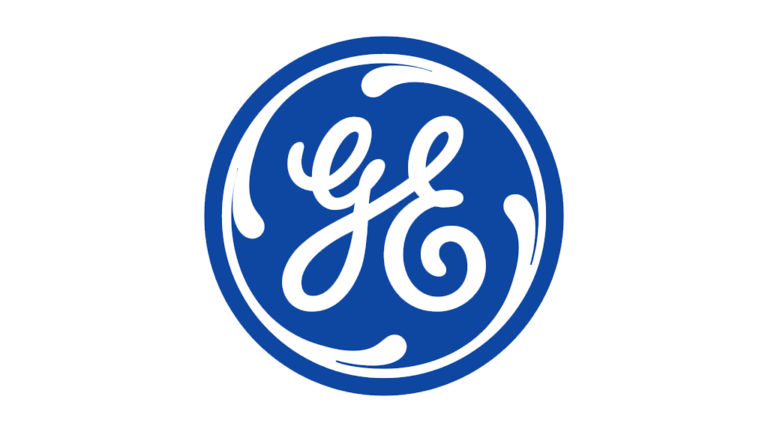
July 25, 2023: General Electric Company (GE) surprised investors in the latest earnings report by beating top and bottom-line estimates. For the second quarter of 2023, the company reported revenue of $16.7 billion, a significant increase compared to $14.1 billion in the same quarter last year. Net income was $35 million, a substantial improvement from a net loss of $882 million in the previous year.
The company’s earnings per share from continuing operations also showed a positive trend. Basic earnings per share from continuing operations were $0.91, compared to a basic loss per share of $1.09 in the same quarter last year. Similarly, diluted earnings per share from continuing operations were $0.91, compared to a diluted loss per share of $1.09 a year ago.
For the six months ending June 30, 2023, GE’s revenue was $31.2 billion, up from $26.8 billion in the same period the previous year. Net income for the six months was $7.5 billion, a significant improvement from a net loss of $2.0 billion in the same period last year.
Aerospace emerged as a standout division for GE, delivering double-digit growth in both top and bottom lines and volume. The company raised its full-year earnings per share guidance to $2.10 and $2.30, reflecting increased confidence in its financial performance.
While GE’s positive financial results are encouraging, investors should remain cautious about its restructuring expenses as it moves towards its planned spinoffs. The energy division, Vernova, is facing challenges and may continue to impact the company’s overall performance.
Overall, GE’s financial performance in Q2 indicates positive momentum, with Aerospace showing promise as a growth spinoff. Investors should monitor the company’s progress as it undergoes significant changes and continues its transformation journey.
Leo Brokerage LLC Invests $291,000 in 3M (NYSE: MMM) Stocks

July 25, 2023: Leo Brokerage LLC recently invested significantly in 3M (NYSE: MMM) during the first quarter. According to the Securities and Exchange Commission, the firm acquired 2,764 shares of the conglomerate’s stock, valued at around $291,000.
Other hedge funds have also made changes to their positions in the company. For instance, Dfpg Investments LLC purchased a new stake in 3M shares during the 4th quarter, valued at approximately $531,000. Similarly, Mirador Capital Partners LP bought a new position in 3M during the 1st quarter, valued at about $304,000. Moreover, Zurcher Kantonalbank Zurich Cantonalbank increased its holdings by 3M during the 4th quarter and now owns approximately 310,297 shares of the conglomerate’s stock, valued at $37,211,000. Additionally, the Louisiana State Employees Retirement System raised its holdings in 3M by 0.3% during the 1st quarter, owning 35,800 shares valued at $3,763,000. Lastly, Kestra Advisory Services LLC also raised its holdings in 3M during the 4th quarter, now owning approximately 82,795 shares worth $9,929,000.
3M’s stock, with a market cap of $57.52 billion, opened at $104.27 on Tuesday. It has a price-to-earnings ratio of 10.81 and a beta of 0.96. The company’s 52-week range is $92.38 to $152.30, with a 50-day moving average of $100.26 and a 200-day moving average of $106.26.
Its revenue for the quarter was $8.03 billion, compared to the consensus estimate of $7.51 billion. While 3M’s revenue was down 9.0% compared to the same quarter last year, it had a net margin of 16.31% and a return on equity of 36.48%.
The company recently declared a quarterly dividend, with investors of record on Friday, May 19th receiving a $1.50 dividend. This represents a $6.00 annualized dividend and a yield of 5.75%.
Regarding analyst ratings, the consensus rating for 3M is “Hold,” with a consensus target price of $114.25.
In summary, Leo Brokerage LLC’s $291,000 investment in 3M reflects investors’ growing interest in the conglomerate’s stock. Despite recent legal battles, 3M remains attractive for some hedge funds. However, market analysts have rated the stock as a “Hold,” indicating cautious optimism about its future performance.
Southwest Airlines Brings Back Fun with “Shark Week” Promotion

July 24, 2023: Southwest Airlines, known for its troubles with labor issues and customer perception, has decided to change the narrative and lighten the mood. The airline recently brought back its annual “Shark Week” promotion in collaboration with Warner Bros., adding some fun to its operations.
The airline faced challenges with its workforce, with pilots and flight attendants negotiating new contracts more contentiously than before. The Southwest Airlines Pilots Association (SWAPA) expressed dissatisfaction with the airline’s leadership, leading to potential strike risks.
To address its problems and restore confidence, Southwest invested $1.3 billion in new technology, personnel, and equipment, showing early signs of improvement during the 4th of July holiday. However, the fallout from the previous holiday season’s meltdown still lingered, and the airline recognized the need to maintain efforts to regain customer trust.
During these challenges, Southwest decided to bring some enjoyment to its passengers. “Shark Week,” a week-long event showcasing special programming about sharks, returned to select airports and onboard flights. Despite its peculiar fit for an airline, the partnership with Warner Bros. Discovery has proven successful over the past decade.
Southwest Airlines passengers were treated to “Shark Week” content on its flights, allowing them to enjoy Discovery Channel’s exclusive programming before its network premiere. The airline’s initiative to engage customers with trivia games and airport giveaways adds excitement.
By embracing the “Shark Week” promotion, Southwest Airlines aims to create positive passenger experiences while navigating labor unrest. The partnership adds a touch of entertainment and excitement during the journey, which could be a strategic move to uplift customer sentiment during challenging times.
Overall, Southwest Airlines’ decision to bring back the “Shark Week” promotion offers a welcome distraction for passengers amidst ongoing labor issues. As the airline works to address its internal challenges, providing enjoyable experiences can be a step towards rebuilding customer loyalty and improving its public perception.
Elon Musk Revamps Twitter, Unveils “X” Logo

July 24, 2023: In a bold and surprising move, Elon Musk, the owner of Twitter, has announced a significant rebranding of the social media giant. The iconic blue bird logo, synonymous with Twitter for over a decade, has been replaced by a striking new “X” logo. This transformation is the latest significant change since Musk took over the platform.
The announcement came early Sunday when Musk shared a short video featuring the flickering “X,” hinting at the impending change. By Monday morning, he confirmed the new identity by tweeting an image of the X logo projected onto Twitter’s headquarters in San Francisco.
The website Twitter.com remained functional with the new branding, while the bird logo disappeared, symbolizing the beginning of a new era for the platform.
Musk explained the reason behind the rebrand and stated that the “X” embodies the imperfections that make each individual unique. He intended to bid farewell to the Twitter brand and gradually eliminate all bird references.
This overhaul could be seen as a “Hail Mary” for Twitter, as Musk had recently warned about the company’s struggling ad revenue, which led to substantial losses. The introduction of rival social media platform Threads, launched by Meta, also added pressure on Twitter.
Under Musk’s leadership, since acquiring Twitter for a staggering $44 billion in October 2022, the company has undergone significant changes, including mass layoffs and contentious policy shifts.
Linda Yaccarino, Twitter’s new CEO, shared her excitement about the rebranding, stating that “X” represents the future of unlimited interactivity, driven by audio, video, messaging, and payments, all powered by AI.
However, challenges lie ahead for Twitter’s transformation. Musk admitted that the platform still faces negative cash flow due to a sharp decline in advertising revenue and high debt. He has advocated for free speech on the platform, but critics worry that it may increase hate speech.
As Twitter evolves into “X,” it will aim to compete with super-apps like WeChat, offering users multiple services in one place. The platform will seek to establish itself as a global marketplace for ideas, goods, services, and opportunities.
The move marks the end of Twitter’s iconic bird logo, which was once the symbol of the social media boom. Now, with the “X” logo representing the future, Twitter, or X Corp, is set on a new course, propelled by Musk’s vision and ambition.
In this rapidly changing landscape, only time will tell if “X” can successfully navigate the challenges, redefine social media, and carve its place as a transformative force in the digital world.
Governor DeSantis Urges Action Against Bud Light’s Parent Company

July 21, 2023: Florida Governor Ron DeSantis is calling on the state’s pension fund manager to take legal action against AB InBev, the parent company of Bud Light. The governor’s call comes in response to conservative criticism of Bud Light’s recent marketing efforts, mainly its association with transgender influencer Dylan Mulvaney. The partnership sparked a backlash among conservatives, leading to a boycott and a decline in Bud Light sales.
In a letter addressed to Lamar Taylor, the interim director of the State Board of Administration, DeSantis suggests that AB InBev may have “breached legal duties owed to its shareholders” by aligning with what he refers to as “radical social ideologies.” As the trustee overseeing Florida’s retirement funds for public workers, DeSantis aims to ensure that the state’s investments prioritize financial returns rather than promoting any ideological agendas.
The governor has not ruled out any potential actions, stating that “all options are on the table.” One possibility he mentioned is the consideration of a “derivative lawsuit” against AB InBev. Such lawsuits, filed by shareholders on behalf of a company, allege a breach of duties by the corporation’s directors or officers.
At the end of March, Florida’s pension fund held over 682,000 shares of AB InBev, valued at nearly $46 million. Since then, the company’s stock price has experienced fluctuations but remains higher than its 52-week low in September 2022.
This is not the first time Governor DeSantis has used Florida’s pension investments to influence political and corporate matters. In the past, he threatened to hold Twitter shareholders accountable and pushed for rules that prevented investors from considering environmental and social aspects when deciding where to invest Florida’s retirement assets.
DeSantis’ latest move against “woke capitalism” follows his high-profile clashes with corporate giants like the Walt Disney Company. The governor is currently involved in lawsuits with Disney over state law on teaching sexual orientation and gender identity in schools.
In response to DeSantis’ call for action against AB InBev, the company still needs to provide an official statement. The governor’s actions highlight the growing tension between corporations and conservative values, with financial decisions used to voice dissent.
As this situation unfolds, it remains to be seen how the state’s pension fund manager will respond and whether any legal actions will be pursued. The outcome could have significant implications for AB InBev and the more considerable debate surrounding corporate responsibility and ideology in the business world.
Tesla Considering Licensing Full Self-Driving Software to Another Automaker

July 20, 2023: Tesla, the leading electric vehicle manufacturer, is discussing licensing its Full Self-Driving (FSD) driver-assist technology to another significant automaker, as stated by Elon Musk during a recent earnings call. The move to license FSD to other companies aligns with Tesla’s vision of promoting collaboration and accessibility in the automotive industry.
An Open Approach:
Elon Musk emphasized that Tesla is not looking to keep its FSD technology exclusive. On the contrary, the company is eager to share it with others, highlighting its commitment to openness and cooperation. Licensing FSD to competitors has been part of Tesla’s long-term plan, showcasing its willingness to contribute to the advancement of autonomous driving technology.
Unique Features of Tesla’s FSD:
Tesla’s Full Self-Driving system stands out from most automakers’ driver-assist systems, which are usually limited to use on highways. In contrast, Tesla allows its customers to engage FSD on local roads with traffic signals, intersections, and pedestrians. The technology enables the vehicle to control acceleration and deceleration and make turns, including challenging maneuvers like unprotected left turns. Additionally, it recognizes traffic signals and road signs. However, drivers must still pay attention to the road and take control of the vehicle when necessary.
Challenges and Scrutiny:
Tesla’s driver-assist technology has pushed the boundaries of what is considered safe for public roads, attracting attention from federal regulators. The National Highway Traffic Safety Administration (NHTSA) is investigating several crashes involving Tesla vehicles using Autopilot, resulting in injuries and one fatality. These incidents have prompted discussions about possible recalls of Autopilot and FSD features. Tesla has addressed safety concerns and improved its systems through over-the-air software updates.
Influence on Competitors:
Despite challenges, Tesla’s aggressive push for driver-assist features has influenced other automakers to develop their autonomous systems. Several companies, including Ford, GM, Mercedes-Benz, and Volvo, are working on Level 3 autonomous systems capable of controlling vehicles under specific conditions without constant driver input.
Tesla’s Generosity in Tech Sharing:
Tesla’s approach extends beyond just FSD. Last year, the company open-sourced its charging system, known as the North American Charging Standard. This move has led to several significant automakers adopting Tesla’s charging connector for their electric vehicles, promoting excellent compatibility and ease of charging for EV owners.
One-Time FSD Transfer Amnesty:
In an exciting development for Tesla customers, Elon Musk announced a “one-time amnesty” in the third quarter of this year. During this period, Tesla owners can transfer their existing Full Self-Driving subscription to a newer Tesla vehicle. This move addresses a popular request from customers who own multiple Tesla vehicles and ensures that FSD can be seamlessly transferred to the latest models.
Conclusion:
Tesla’s potential licensing of its Full Self-Driving technology represents a step toward greater collaboration and innovation in the automotive industry. By sharing its advanced autonomous driving features and open-sourcing its charging system, Tesla is actively contributing to accelerating sustainable mobility solutions. As discussions continue with other automakers, the future of self-driving technology promises exciting advancements and increased accessibility for customers worldwide.
American Airlines Flight Attendants to Vote on Strike Authorization

July 20, 2023: The Association of Professional Flight Attendants (APFA), the union representing American Airlines flight attendants, has approved a strike authorization vote. The upcoming vote comes after several years without a salary increase and prolonged negotiations with the airline.
What’s Happening?
The APFA’s board of directors gave the green light for the strike authorization vote on Monday. The voting period will commence on July 28 and conclude on August 29, with the results scheduled to be announced on the following day.
Flight Attendants Seek Better Treatment:
The American Airlines flight attendants have not received cost-of-living raises or other quality-of-life enhancements since their contract became amendable in 2019. Despite playing a crucial role in keeping the airline operational during and after the pandemic, their contributions have yet to be adequately recognized in their compensation.
A Struggle for Fair Pay:
The primary cause for potential strike action is the demand for substantial pay increases. The union has proposed an immediate 35% wage hike, followed by a 6% annual raise in subsequent years. Additionally, the APFA seeks to increase the guaranteed paid monthly hours for reserve flight attendants from 75 to 82. The union also wants better 401(k) contributions and matches.
Stagnant Negotiations and Discontent:
The APFA’s frustration with American Airlines management is evident, with the airline still waiting to respond to the economic proposal submitted by the union in March. The prolonged negotiations, further exacerbated by the pandemic, have left the flight attendants feeling unappreciated and undervalued.
A Negotiating Tactic:
It’s important to note that a strike authorization vote does not guarantee an immediate strike. Instead, the union’s strategic move is strengthening its bargaining position. The Railway Labor Act mandates steps, including mediation and cooling-off periods, before a strike can occur. Thus, while a strike is authorized, a process must be followed before any work stoppage occurs.
Implications for Travelers:
The prospect of a strike may raise concerns among travelers, but it’s crucial to remember that strikes in the airline industry rarely happen right after a strike authorization vote. The aim is to increase pressure during negotiations rather than immediately disrupt flights. Mediation and further negotiations will continue, and the National Mediation Board will play a role in the resolution process.
Final Thoughts:
As American Airlines flight attendants prepare for the strike authorization vote, both parties will likely intensify their efforts to reach a mutually agreeable contract. Resolving this dispute will significantly impact the morale and compensation of the airline’s essential staff. Travelers should stay informed about potential developments but can rest assured that significant flight disruptions are unlikely in the immediate future.
Blackstone Earnings Expected to Decelerate in Q2

July 20, 2023: Blackstone (NYSE: BX), a prominent private equity firm, is projected to experience a second consecutive slowdown in earnings for the second quarter, according to consensus estimates. The challenging higher interest rate environment makes it difficult for the company to raise funds and finance deals.
On July 20, during the premarket session, Blackstone is scheduled to release its Q2 earnings report. This report will provide insights into various aspects, such as the growth of BX’s dry powder, the performance of its real estate funds, and key metrics like assets under management and fee-related earnings.
David Ksir, the Investing Group Leader of ‘High Yield Landlord,’ warned in mid-June about the “very cyclical” nature of Blackstone’s earnings due to its performance-oriented fee structure. The possibility of higher inflation and prolonged higher interest rates may result in slower growth of assets under management, potentially falling short of forecasts.
Consensus estimates predict that Q2 distributable earnings per share (EPS) will decline to $0.92 from $0.97 in Q1 and $1.49 in the same period last year. If Blackstone falls below the Wall Street consensus, it would be the first earnings miss since June 2020.
In terms of revenue, Blackstone is expected to generate $2.40 billion in Q2, a decrease from $2.49 billion in Q1 and $4.15 billion in Q2 of the previous year. The company’s sales figures have previously surprised to the downside in the last two quarters.
Given the challenging macroeconomic landscape, analysts have revised their EPS and revenue expectations downward over the past three months. There have been 12 downward revisions in EPS estimates (compared to one upward revision) and four in revenue estimates (compared to zero upward revisions).
As of mid-afternoon trading, BX stock has drifted up 1.3%.
Investors and industry analysts will closely watch the upcoming earnings report to gauge Blackstone’s performance amid the ongoing economic challenges. The company’s ability to navigate the headwinds and adapt its strategies will be crucial in shaping its financial outlook. Investors should closely monitor the Q2 results and management’s commentary for insights into Blackstone’s future performance and market prospects.
Biden Chooses Wilmington, Delaware as Re-Election Campaign Headquarters

July 19, 2023: President Joe Biden 2024 re-election campaign headquarters will be situated in his hometown of Wilmington, Delaware. The decision was announced by Biden’s campaign team on Tuesday, stating that Wilmington is the ideal location as it holds significant sentimental value for the President. Biden’s association with the city goes back to his days as a U.S. senator, where he would frequently take the Amtrak train back home to Wilmington for weekends, earning him the nickname “Amtrak Joe.”
The choice of Wilmington as the campaign’s headquarters aligns with Biden’s family values and unwavering belief in the American middle class, which he attributes to his home in Delaware. The city holds a special place in his heart, as it is where his political ideology took shape, and it is also where his two children and first wife are buried.
Wilmington offers a vibrant and dynamic atmosphere, making it an attractive location for the campaign team. The city’s downtown and Riverfront have undergone significant transformation with millions of dollars invested, resulting in a flourishing restaurant scene. Biden himself has been a patron of some of the city’s finest eateries, including Bardea Food & Drink and the new Quoin Hotel & Restaurant.
While Philadelphia played a crucial role in Biden’s 2020 election victory, Wilmington’s emotional significance and its role as his base during the pandemic led to the decision to choose it as the 2024 campaign headquarters. Biden’s 2020 campaign was based in Philadelphia, but with the onset of the COVID-19 outbreak, Wilmington became his informal headquarters, hosting the announcement of Vice President Kamala Harris as his running mate and later, the Democratic National Convention.
Choosing Wilmington as the campaign’s headquarters reinforces Biden’s commitment to serving the families he grew up alongside in the city. While Wilmington may not have the same electoral importance as Philadelphia, it reflects the President’s belief in the significance of public service and his connection to the diverse demographics of the city, which mirror those of the country.
Overall, the decision to base his re-election campaign in Wilmington reflects the deep-rooted connection between Joe Biden and his hometown, making it an essential place for his political work outside of the White House. As the campaign team begins its work in Delaware, it aims to build on Biden’s family values and the belief in the American middle class as they gear up for the 2024 election.
Also Read: Biden Administration Forgives $39 Billion in Student Loan Debt.
Joe Biden announces his 2024 campaign headquarters.

July 19, 2023: President Joe Biden has announced that his 2024 campaign headquarters will be located in his longtime residence of Wilmington, Delaware. In a statement, Biden expressed that his family’s values and unwavering belief in the American middle class stem from Delaware, making it the perfect place for the reelection campaign’s headquarters. This decision deviates from his choice of Philadelphia as the headquarters for his 2020 campaign. However, due to the pandemic, Biden conducted a significant portion of that campaign from Wilmington as well.
Biden has a deep connection to Wilmington, often taking the train from Washington to spend downtime at home during his time as vice president and senator. By selecting Wilmington as the headquarters, Biden aims to emphasize the significance of his hometown in his campaign.
Since its launch, Biden’s campaign has remained relatively small, with a recent addition of three new hires, bringing the total number of staffers to seven. In terms of fundraising, the Biden-Harris campaign, along with the Democratic National Committee and their joint fundraising committees, raised $72 million in the second quarter of the year. In comparison, former President Donald Trump, the leading contender in the GOP race, raised just over $35 million during the same period.
Biden’s decision to establish his campaign headquarters in Wilmington reflects his dedication to mobilizing and energizing voters. The choice also acknowledges the challenges ahead for his campaign to counter any prevailing doubts about his candidacy. By making this announcement relatively early, Biden aims to focus on his duties as president and gradually shift attention to the campaign without being rushed by external pressures.
As Biden officially enters the 2024 race, his campaign will face the task of reaching out to voters, raising substantial funds, and making a compelling case for his reelection. The success of his 2020 campaign, which positioned him as an antidote to Republican extremism, plays a significant role in his strategy for the upcoming election.
The location of the campaign headquarters is an essential element of the campaign’s infrastructure, and while much of the effort will be run from the White House, the campaign manager and top staff will be responsible for fundraising, voter outreach, and promoting Biden’s message. Biden’s team is also considering the selection of non-Washington voices as validators to amplify the campaign’s message and restore faith in the political process.
While Biden faces low approval ratings and questions about his age, he believes that his experience and role as a counter to Trump’s influence within the GOP provide a strong rationale for his reelection. Biden’s decision on when to officially announce his candidacy will be strategic, allowing him to avoid sharing the political spotlight with Trump, who has already announced his campaign for 2024. The timing of the announcement will likely be carefully chosen to maximize impact and set the stage for a successful campaign.
Overall, Biden’s choice of Wilmington, Delaware, as his 2024 campaign headquarters highlights the significance of his hometown and aims to leverage his connection to the state. As the campaign progresses, Biden will strive to overcome challenges, build a robust infrastructure, and make a compelling case to voters as he seeks a second term as President of the United States.
Also Read: Biden Administration Forgives $39 Billion in Student Loan Debt.
Morgan Stanley Outperforms Expectations with Record Revenue

July 18, 2023: Morgan Stanley reported second-quarter earnings and revenue that exceeded analysts’ expectations, thanks to exceptional results from its wealth management division. However, The bank’s profit experienced a 13% decline due to lower trading results than the previous year and the impact of layoffs that resulted in $308 million in severance costs.
Here are the key highlights of Morgan Stanley’s second-quarter performance:
Earnings: The bank reported $1.24 per share, surpassing the Refinitiv estimate of $1.15 per share.
Revenue: Morgan Stanley generated $13.46 billion, outperforming the expected $13.08 billion.
Despite the dip in profit, the reliance on wealth management, under the leadership of CEO James Gorman, has been instrumental in providing steady earnings and boosting the company’s valuation compared to its peers. Gorman, who took the helm in 2010, has announced his plan to step down within a year, initiating a succession race within the organization.
Morgan Stanley’s shares have slightly increased this year, unlike the approximately 20% decline observed in the KBW Bank Index.
On the previous Friday, other major banks, including JPMorgan Chase, Citigroup, and Wells Fargo, also reported earnings that surpassed analyst expectations, supported by higher interest rates. Goldman Sachs, another key player in the financial sector, is scheduled to release its earnings on Wednesday.
James Gorman expressed satisfaction with the firm’s performance, acknowledging the challenging market conditions at the beginning of the quarter. However, by the end of the period, a more positive outlook prevailed. He highlighted the success in attracting client assets, with the Wealth and Investment Management division adding $100 billion in net new assets, bringing the year-to-date total to over $200 billion.
The bank’s Institutional businesses demonstrated resilience in navigating the market uncertainties. Morgan Stanley’s capital position remained robust, and the quarterly common dividend was raised for the second consecutive year.
The company’s second-quarter results showed net revenue of $13.5 billion and net income of $2.2 billion. Wealth Management achieved impressive results, with net new client assets reaching $90 billion and record net revenues of $6.7 billion.
Looking ahead, Morgan Stanley remains confident in its ability to grow in various market environments while maintaining a solid capital position. The positive performance, particularly in wealth management, signifies the bank’s resilience in uncertain market conditions and bodes well for its prospects.
AT&T and Verizon Face Stock Plunge Amid Lead Cables Concerns

July 18, 2023: AT&T and Verizon, two major US telecommunications giants, experienced significant declines in their stock prices due to mounting concerns over toxic lead cables. A Wall Street Journal investigation exposed the existence of abandoned lead-sheathed cables, contaminating soil and water sources across the country. As a result, both companies face potential legal and reputational damages.
The July 9 report triggered a series of downgrades, leading to AT&T’s stock hitting its lowest point in 30 years on July 17. Analysts fear that the consequences of the toxic cables could escalate, impacting both the companies and their shareholders.
Citigroup downgraded AT&T’s stock to neutral, causing a nearly 7% drop, while JPMorgan cut its price target from $22 to $17 due to concerns related to the lead-sheathed cables. The situation added pressure on AT&T, which faced challenges in its wireless and fiber growth businesses.
Senator Edward Markey initiated scrutiny by requesting information from USTelecom regarding the cables’ locations, mileage, and companies’ plans for testing and remediation. In addition, shareholder rights firm Glancy Prongay & Murray launched an investigation into potential violations of federal securities laws by AT&T.
Citi and JPMorgan anticipate that AT&T will be most exposed to the lead cable issue due to its vast local exchange carrier business and extensive long-distance network, reaching approximately 40% of US homes.
Despite the concerns raised by the Wall Street Journal’s investigation, AT&T contested the findings, stating that the testing methodologies used were flawed and compromised by a conflict of interest. The company emphasized that the cables pose no public health risk when appropriate safety measures are in place.
Furthermore, AT&T faces other challenges, including downward revisions for its wireless and fiber growth businesses, a slowdown in subscriber growth for postpaid phone plans, and high-interest rates.
The government faces a difficult decision regarding who should bear the lead remediation costs. If they force Independent Local Exchange Carriers (ILECs) like AT&T to cover the expenses, some companies may face bankruptcy, slowing down the remediation process and infrastructure deployment. Alternatively, if ratepayers or taxpayers shoulder the costs, resources for broadband expansion to underserved markets could be affected.
According to New Street Research, the estimated cost to remediate the 2,000 miles of lead-sheathed copper wires is $60 billion, with AT&T’s share expected to exceed half of this amount.
The telecom industry, including AT&T and Verizon, has taken measures to protect workers from lead poisoning, potentially limiting their legal liabilities. However, the uncertainty surrounding the issue has triggered a fear-driven sell-off, significantly impacting their stock prices.
As the situation unfolds, investors should closely monitor regulatory developments and how telecom companies address the lead cable issue. Despite the challenges and uncertainties, some analysts consider the current low valuation of Verizon’s stock an opportunity for long-term investors, given the company’s potential to provide value for shareholders over time.
Americans Feel Optimistic About Economy, Reaching a Two-Year High

July 14, 2023: Consumer confidence in the US economy has soared to its highest level since September 2021, according to the latest University of Michigan Consumer Sentiment Index. The July reading of 72.6 surpassed economists’ expectations of 65.5, marking a 13% increase from the previous month. This growth rate is the fastest since December 2005, during the recovery from Hurricane Katrina.
The surge in consumer sentiment can be attributed mainly to the continued slowdown in inflation and stability in labor markets, as highlighted by Joanne Hsu, the director of Surveys of Consumers. Favorable economic data, positive reports on second-quarter earnings, and diminishing concerns of a second Federal Reserve interest rate hike in the latter half of the year have also contributed to the optimism among consumers.
The primary drivers behind this positive sentiment were a notable 19% rise in long-term business conditions and a 16% increase in short-run business conditions, as the University of Michigan reported. However, the survey did reveal a slight increase in consumers’ inflation expectations.
Although inflation expectations for the next year have risen to 3.4% from 3.3% in June, they have decreased from the peak of 5.4% recorded in April 2022. Analysts had predicted a decrease to 3.1% in one-year inflation expectations.
Ryan Sweet, the chief US economist at Oxford Economics, suggests that the easing concerns about a recession, which had dominated headlines throughout the year, significantly boosted consumer sentiment and expectations.
This positive news follows a week of encouraging economic data. The Consumer Price Index for June has risen slowly since March 2021, and the Producer Price Index reflected a similar trend. Additionally, the labor market demonstrated resilience, with weekly jobless claims coming in lower than expected.
Although the recent jobs report indicated a cooling labor market, with nonfarm payroll additions falling short of expectations, it still showed the addition of 209,000 jobs, a decrease in unemployment to 3.6%, and a 4.4% growth in average hourly earnings compared to the previous year.
Taken together, this data paints a picture of a tight labor market in which Americans are employed while experiencing decreased prices for goods.
Overall, the increased consumer confidence signals optimism about the economy, driven by positive economic indicators and improving conditions in the job market.
Biden Administration Forgives $39 Billion in Student Loan Debt.

July 14, 2023: In a recent announcement, the Biden administration revealed that it had forgiven a staggering $39 billion in student loan debt for 804,000 borrowers enrolled in income-driven repayment plans. This relief comes as a result of fixes made by the government to these plans, aiming to address historical inaccuracies and ensure accurate tracking of borrowers’ progress toward forgiveness.
Qualifying borrowers will be notified in the coming weeks if their loans will be discharged, offering significant financial relief. The Department of Education has taken steps to rectify the failures of the broken system that failed to account for borrowers’ payments accurately, ultimately preventing them from qualifying for loan forgiveness.
The forgiveness applies to borrowers who have paid for 20 or 25 years, depending on their specific repayment plan. The US government offers various income-driven repayment plans, where borrowers make monthly payments based on their income over 20 or 25 years.
This recent action follows the US Supreme Court’s ruling that struck down President Biden’s broader student loan forgiveness plan. The court found that the administration had exceeded its authority with the proposed plan, which aimed to cancel billions of dollars in student loans for over 40 million Americans. However, the administration remains committed to finding alternative ways to offer student loan forgiveness, as President Biden pledged to explore new paths after the court’s decision.
It is worth noting that President Biden has already taken several steps to provide relief to smaller groups of borrowers through executive actions since taking office. For instance, he canceled student loan debt for 200,000 borrowers who had suffered harm or fraud at the hands of their universities.
Moving forward, the Biden administration continues its efforts to alleviate the burden of student loan debt. While the Supreme Court ruling presented a setback, the recent forgiveness of $39 billion demonstrates the administration’s commitment to finding solutions and providing debt relief for American borrowers.
Borrowers Face Impending Student Loan Repayments Amidst High Inflation.
Student Loan Payments Set to Resume, Causing Concern for Borrowers.
Cryptocurrencies Show Slight Gains Ahead of Inflation Data Release

July 12, 2023: Major cryptocurrencies are trading slightly higher as investors eagerly await the Consumer Price Index (CPI) release on Wednesday. This upcoming release, which marks the first significant inflation data since mid-June, has the potential to determine the future trading pattern.
Bitcoin has had a strong year, with prices surging by 84% year to date. However, a closer look at the month-to-month data reveals that most gains were consolidated during winter. Specifically, January and March had average daily returns of 1.11% and 0.73%, respectively. June also performed well, with an average daily gain of 0.41%, primarily driven by BlackRock’s spot ETF announcement. On the other hand, February and April were relatively stagnant for Bitcoin, and May was the only month with negative returns this year.
The global crypto market capitalization currently stands at $1.19 trillion, showing a 0.19% increase in the last day.
U.S. stocks rebounded on Tuesday after a three-session decline, with the S&P 500 recording a 0.67% increase and the Nasdaq Composite, which focuses on technology stocks, gaining 0.55%.
According to crypto trader Michael Van de Poppe, the current phase for other cryptocurrencies is facing depression, indicating that the best opportunities to accumulate positions lie before the market starts rallying into the bull. More institutional adoption and the introduction of ETFs are expected to play a role in this trend.
Pseudonymous trader Dontells suggests that Ethereum’s current consolidation phase at its current prices could potentially lead to a breakout. Although there have been a few instances of resistance, it has not significantly impacted. Dontells emphasizes that Bitcoin should move soon, or it may face negative consequences. If Ethereum rises above $1,935, it could trigger a rapid rally, potentially reaching a level last seen in May 2022.
As investors await the CPI release, they closely monitor inflation data, which plays a significant role in market trends. Inflation refers to the increase in the prices of goods and services over time. The Federal Reserve evaluates changes in inflation by monitoring various price indexes, such as the price index for personal consumption expenditures (PCE) and consumer price indexes. These indexes provide insights into the overall price level changes of the economy’s goods and services.
In conclusion, cryptocurrencies are showing slight gains ahead of the inflation data release, which is expected to impact their trading patterns. Bitcoin has had a strong year but experienced consolidation during certain months. Ethereum’s current consolidation phase could lead to a breakout, while the resistance it faces may trigger a downward movement. Investors eagerly await the CPI release as inflation data plays a crucial role in market trends.
Farmers Insurance Withdraws Coverage in Florida.

July 12, 2023: Farmers Insurance, a major insurance company, has reduced its coverage in Florida. This move will have consequences for state residents currently holding auto, home, or umbrella insurance policies with the company.
According to Trevor Chapman, a spokesperson for Farmers Insurance, the company has informed the Florida Office of Insurance Regulation (FOIR) that it will no longer offer its Farmers-branded policies in Florida. However, this decision only affects policies issued through the exclusive agency distribution channel, and it will not impact the majority of policies currently in force for customers in the state, such as Bristol West, Foremost SignatureSM, Farmers GroupSelectSM, Foremost Choice, and Foremost-branded policies.
Farmers Insurance will communicate with the affected policyholders to provide information on the timeline for the termination of their coverage. They will also offer guidance on alternative options for obtaining replacement coverage. This decision by Farmers Insurance is considered a necessary step to effectively manage their risk exposure.
To comply with state regulations, insurance providers must provide a minimum 90-day notice to the Florida Office of Insurance Regulation (FOIR) when they discontinue offering certain types of coverage to Floridians. The FOIR is currently reviewing the notification submitted by Farmers Insurance regarding the reduction in coverage.
Approximately 100,000 policies for auto, home, and umbrella insurance that fall under the Farmers Insurance brand will be impacted by this coverage change in Florida. This decision by Farmers Insurance reflects the challenges faced by the insurance market in the state, including the insolvency of some private insurers and the voluntary withdrawal of coverage by other companies due to the difficulties posed by extreme weather conditions.
Florida Chief Financial Officer Jimmy Patronis has expressed concern about this coverage reduction and has called for additional scrutiny on Farmers Insurance. He intends to hold the company accountable for its decision and has directed his team to investigate complaints against the insurer. If the complaints meet a certain threshold, it may trigger a market conduct investigation that could lead to fines against Farmers Insurance. Patronis also expects that any canceled policies should result in a prorated refund to policyholders, and efforts are underway to explore options for a bulk transfer of policies with the Florida Association of Insurance Agents.
Farmers Insurance, founded in 1928, provides individual policies to over 19 million customers nationwide. While this decision will affect thousands of policyholders in Florida, most Farmers Insurance policies in the state will remain available through their subsidiaries, Foremost and Bristol West.
US Inflation Slows to 3% as Interest Rate Rises Make an Impact.

July 12, 2023: The latest data reveals that inflation in the United States has decreased, reaching 3% in June. This figure is lower than expected and highlights the Federal Reserve’s interest rate increases influence on price pressures. The consumer price index showed a 4% annual increase in May, but it has slowed to its lowest level since March 2021.
Monthly, prices rose by 0.2% in June, slightly higher than the previous month’s 0.1% increase but still below economists’ forecasts. The so-called base effects also positively affected the annual inflation rate, as the calculations exclude substantial rises from June 2022.
The “core” consumer price index, which excludes volatile food and energy costs, experienced a more modest decline. It slowed to an annual rate of 4.8% in June from 5.3% in May. Month on month, core prices increased by 0.2% compared to a 0.1% increase in May.
While the headline inflation rate has been moving closer to the Federal Reserve’s target of 2%, core inflation has remained higher, suggesting that further interest rate hikes may be necessary. The Federal Reserve has already raised its benchmark interest rate multiple times, reaching a range of 5-5.25%. Although rates were kept steady in June to assess the impact of previous increases, further rate hikes are expected to occur before the end of the year.
The recent labor market data also indicates that the aggressive rate rises by the Fed are starting to cool the economy, as job growth has slowed. However, inflationary pressures persist, with unemployment remaining at historically low levels and wages growing above the levels consistent with the Fed’s inflation target.
In response to the CPI data, the two-year Treasury yield, which reflects interest rate expectations, fell to its lowest level in two weeks. Futures market traders also slightly reduced their bets on higher interest rates in the second half of the year, although an increase by the Fed is still anticipated in July.
US stock market futures rose, with the S&P 500 expected to open about 0.7% higher.
The decline in inflation is encouraging for consumers, as it eases the strain on their budgets and reduces the impact on essential expenses like gasoline and groceries. However, the Federal Reserve remains cautious and continues to assess the situation to determine whether this cooling trend will persist or if further action is needed.
Small Business Confidence Reaches 7-Month High in June, NFIB Reports.

July 11, 2023: In June, small business confidence in the United States reached its highest level in seven months, according to the National Federation of Independent Business (NFIB). The survey released on Tuesday revealed that optimism among small businesses improved as concerns about the economic outlook diminished and sales expectations increased. However, the tight labor market continued to raise worries about inflation.
The Small Business Optimism Index, compiled by the NFIB, rose by 1.6 points to 91 in June, marking the most significant month-to-month improvement since August 2022. Small businesses demonstrated their least-pessimistic view of near-term economic prospects since February 2022, with NFIB’s general business conditions outlook index climbing 10 points to negative 40. This shift indicates a significant improvement in sentiment compared to previous months.
Sales expectations also showed improvement, with fewer business owners anticipating weaker sales in the next three months compared to May. This positive trend lifted the overall sales outlook to its highest level in four months.
While small business owners remained concerned about inflation, it was on par with finding quality workers as their most important problem. However, the survey noted a decline in concern about price pressures compared to a year ago. In June, 24% of small business owners cited inflation as their biggest headache, down from 25% in May and significantly lower than last July’s peak. This decrease in inflation-related concerns is a positive sign, indicating a slight easing of the inflationary pressures faced by small businesses.
Despite the improved economic outlook, the Small Business Optimism Index has yet to reach the 49-year average of 98, remaining below it for the 18th consecutive month. Small businesses continue to grapple with the challenges posed by the cost and quality of labor in a job market that, although slowing, remains tight.
The survey revealed that 42% of small business owners reported difficulties filling job openings, a slight decrease from the previous month but still at a historically high level. Additionally, 15% of owners planned to create new jobs in the next three months, down 4 points from May. Concerns about inflation were primarily driven by the limited availability of qualified workers.
NFIB Chief Economist Bill Dunkelberg acknowledged that inflation and labor shortages continue to pose significant challenges for small businesses. Many owners are raising prices to cope with higher inventory, labor, and energy costs. However, the overall rate of price increases slowed in June, with 29% of owners raising average prices, the lowest reading since March 2021. Despite the moderation, the rate remains at an inflationary level.
Economists anticipate that the Federal Reserve will resume interest rate hikes in July, considering the persisting concerns related to inflation and the impact of the tight labor market. The NFIB survey provides valuable insights into the sentiment and challenges small businesses face, shedding light on the overall health of the U.S. economy.
Flash Floods Devastate Northeastern States; Swift Boat Rescues Save Lives.

July 11, 2023: Severe flash floods wreaked havoc in Vermont and New York, causing widespread damage and endangering residents. The torrential downpours resulted in road washouts, overwhelmed rivers, and tragically claimed a woman’s life swept away in front of her fiancé.
The National Weather Service issued flood watches and warnings for over 13 million Americans across Eastern New York State, Boston, and Western Maine. The storms began over the weekend, leading to extensive flooding of rivers and streams.
Based on their evaluation method, private forecaster AccuWeather estimates that the damages and economic losses could range from $3 billion to $5 billion.
The heavy rains also disrupted air travel, with over 1,000 flights to and from regional airports, including LaGuardia in New York and Logan in Boston, being delayed or canceled.
The impact on transportation extended to train services as well. Amtrak suspended its passenger train operations between Albany and New York City due to flood damage to the tracks. The Metro-North commuter railroad, which shares the same track, also halted its services.
The states most affected by the floods were New York and Vermont. Vermont officials described the flooding as the worst since Hurricane Irene struck the state as a tropical storm in 2011.
Rescue operations played a crucial role in saving lives. Around 50 isolated individuals were rescued by swift boats in Vermont. The rising floodwaters posed risks to cities like Montpelier, the state capital, and officials urged residents to stay vigilant and seek higher ground promptly.
New York also experienced significant rainfall, with over 8 inches recorded in the town of Stormville, located Northeast of New York City.
Tragically, a woman in Orange County lost her life while attempting to evacuate her home. Governor Kathy Hochul expressed her condolences and emphasized the severity of the situation.
The aftermath of the storms revealed extensive damage, with washed-out roads and houses surrounded by raging floodwaters. The region faced a critical situation, and the response involved multiple rescue teams and helicopters from the Vermont and New Hampshire National Guards.
As the floods continue to pose a threat, it is crucial for residents to closely monitor weather updates, heed evacuation warnings, and prioritize personal safety. The Northeast is expected to experience a temporary respite from heavy rain before another round of significant rainfall is forecasted later in the week.
Key Takeaways:
- Severe flash floods struck Vermont and New York, resulting in widespread devastation.
- Road washouts, overwhelmed rivers, and tragic casualties occurred due to the torrential downpours.
- More than 13 million Americans were under flood watches and warnings in the affected region.
- Air travel and train services experienced disruptions, with numerous flights and train routes being delayed or canceled.
- Swiftboat rescues played a vital role in saving isolated individuals in Vermont.
- The aftermath revealed significant damage and the need for continued vigilance as further rainfall is expected.
New Tool Exploits Microsoft Teams Bug, Posing Malware Delivery Risk.

July 10, 2023: A security vulnerability in Microsoft Teams has been exploited by a recently published tool, posing a threat to users. The tool, TeamsPhisher, takes advantage of an unresolved security issue that allows bypassing restrictions on incoming files from external users.
By leveraging an application-level problem highlighted by security services company Jumpsec, an attacker can circumvent Microsoft Teams’ file-sending limitations and deliver malware from an external account.
The tool achieves this by manipulating the ID in the POST request of a message, tricking the client-side protections of Microsoft Teams into treating an external user as an internal one. TeamsPhisher, a Python-based utility, automates the attack process by incorporating the techniques identified by Jumpsec researchers, along with methods developed by Andrea Santese and authentication functions from Bastian Kanbach’s ‘TeamsEnum’ tool.
TeamsPhisher simplifies the attack procedure by allowing users to provide an attachment, a message, and a list of target Teams users. It proceeds to upload the attachment to the sender’s Sharepoint and systematically iterates through the list of targets. To ensure the attack’s success, TeamsPhisher verifies the target user’s existence and ability to receive external messages. The tool creates a new thread with the target, sending them a message containing a Sharepoint attachment link. This thread appears in the sender’s Teams interface for potential manual interaction.
To utilize TeamsPhisher, users must possess a Microsoft Business account with a valid Teams and Sharepoint license, which is typical for major companies. The tool offers a “preview mode” for verifying target lists and reviewing the appearance of messages from the recipient’s perspective. Additionally, optional arguments and features enhance the attack’s effectiveness, including sending secure file links exclusive to the intended recipient, specifying transmission delays to bypass rate limiting, and generating log files for tracking purposes.
While the issue exploited by TeamsPhisher remains unresolved, Microsoft has indicated that it does not meet the criteria for immediate servicing. Despite the tool’s original purpose for authorized red team operations, threat actors can exploit it to deliver malware to target organizations discreetly. Until Microsoft takes action, organizations are strongly advised to turn off communications with external tenants if unnecessary. Additionally, creating an allow list with trusted domains can mitigate the risk of exploitation.
FDA Investigation into Prime Energy Drink High Caffeine Levels

July 10, 2023: Lawmakers and health experts are urging the Food and Drug Administration (FDA) to investigate the Prime energy drink brand founded by YouTube stars Logan Paul and KSI due to concerns over its potentially harmful caffeine levels. Senator Chuck Schumer, a Democrat from New York, called on the FDA to scrutinize the beverage, which has gained significant popularity among children.
Prime, endorsed by two prominent YouTube influencers, became an instant sensation upon its launch last year. Its neon-colored cans, marketed as zero sugar and vegan, attracted long lines in grocery stores and created a secondary market in schoolyards. However, the drink has raised concerns due to its high caffeine content of 200 milligrams per 12 ounces, equivalent to approximately half a dozen cans of Coke or nearly two Red Bulls.
The high caffeine content led to bans in some schools in the United Kingdom and Australia, where pediatricians warned of potential health issues for young children, including heart problems, anxiety, and digestive disturbances.
The company’s representatives have defended the product, emphasizing that it is clearly labeled as “not recommended for children under 18.” Prime also offers a separate caffeine-free sports drink called Prime Hydration. At this time, there has been no response from Prime representatives regarding the investigation.
Senator Schumer’s letter to the FDA highlighted the striking similarity in online marketing between Prime and Prime Hydration, leading many parents to unknowingly purchase the energy drink for their children, thinking it was a harmless juice. Schumer urged the FDA to investigate the Prime energy drink’s marketing claims, ingredients, and caffeine content.
The request for an FDA investigation comes amid growing concerns about the potential health risks of high caffeine consumption among young individuals. The American Academy of Pediatrics recommends that children under 12 avoid caffeinated products, while adolescents between 12 and 18 should limit their intake to less than 100 milligrams per day.
As the FDA reviews the situation, parents and caregivers should remain cautious about the beverages children consume and take note of the caffeine content and potential health implications.
UPS Teamsters Overwhelmingly Approve Strike Authorization Vote.
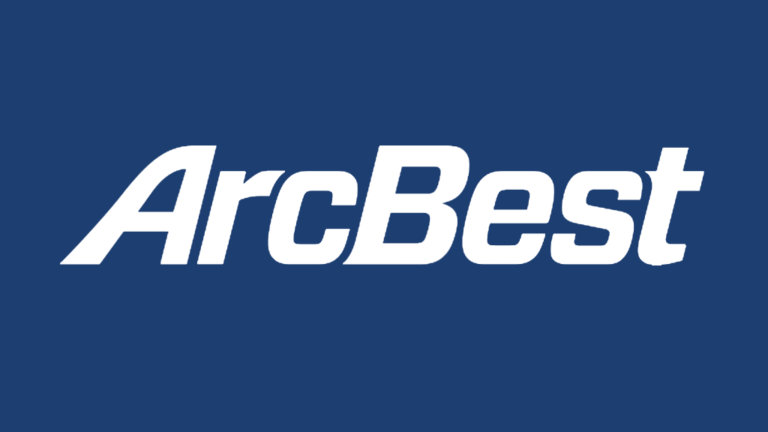
July 07, 2023: In a significant development, the International Brotherhood of Teamsters (IBT) announced that an overwhelming 97% of its members employed by global logistics leader UPS had authorized a strike. This strike authorization vote empowers the union to exert maximum leverage during contract negotiations and achieve favorable outcomes.
Local unions representing UPS Teamsters conducted in-person voting earlier this month, with most members supporting the strike authorization. The contract between UPS and its 340,000 Teamster members expires on July 31.
According to the Teamsters, this vote enables the UPS Teamsters National Negotiating Committee to call for a strike if a strong new contract is not reached by the deadline. The union is focused on securing a new five-year agreement that includes higher wages, ending forced overtime and harassment, more full-time jobs, eliminating a two-tier wage system, and enhanced protection against workplace hazards like heat.
Teamsters General President Sean M. O’Brien emphasized the unity and determination of the union’s members, highlighting their commitment to obtaining the best contract in UPS history. O’Brien stated, “If this multibillion-dollar corporation fails to deliver on the contract our hardworking members deserve, UPS will strike itself. Our members’ strongest leverage is their labor, and they are prepared to withhold it to ensure UPS acts accordingly.”
The UPS Teamsters National Master Agreement represents North America’s largest private-sector contract. With this strike authorization vote, the Teamsters aim to secure a contract that addresses their members’ concerns and safeguards their rights. However, UPS emphasized that the vote does not indicate an imminent strike and does not impact the company’s operations.
UPS stated that authorization votes and approvals are typical steps in labor union negotiations. The company remains committed to progressing on critical issues and is confident in reaching an agreement that benefits employees, the Teamsters, the company itself, and its customers.
While negotiations have progressed, including a recent tentative agreement on heat safety, significant ground remains to cover. Both parties have exchanged proposals on various non-economic items and discussed critical topics such as safety, technology, and operating priorities. Negotiations continue to achieve a mutually beneficial resolution by the contract deadline.
It’s worth noting that this strike authorization vote holds historical significance, as a potential strike at UPS would be the largest single-employer strike in U.S. history. UPS plays a crucial role in the nation’s economy, with its deliveries contributing to approximately 6% of its gross domestic product. The union’s strong mandate underscores the importance of addressing the workers’ concerns and reaching a fair agreement.
As negotiations progress, both parties will continue working toward finding common ground. While the possibility of a strike looms, UPS remains focused on ensuring the uninterrupted flow of its operations. The company acknowledges the Teamsters’ importance and contributions to UPS’s success, emphasizing the mutual benefits that a favorable contract can bring. By working together, UPS and the Teamsters strive for a win-win outcome that supports the well-being of employees, meets customer needs, and strengthens the company’s competitive position in the market.
Also read: UPS Negotiations Collapse After Marathon Sessions
US Job Growth Slows, but Wage Gains Remain Strong

July 07, 2023: US Job Growth Slows, but Wage Gains Remain Strong
The US job market showed moderation as nonfarm payrolls increased by 209,000 jobs in June, falling short of economists’ expectations. However, the unemployment rate decreased to 3.6%, indicating tight labor market conditions. Despite the slight slowdown, wage growth remained robust, with average hourly earnings rising by 0.4% in June and 4.4% year-on-year.
The data suggests that while the labor market is cooling down, it is still strong compared to historical standards. This resilience in job growth challenges the Federal Reserve, as it aims to curb inflation by raising interest rates. The solid wage gains further support the central bank’s plan to proceed with a rate hike later this month.
The report also revealed revisions to job numbers in previous months, indicating that higher borrowing costs are starting to impact businesses’ hiring decisions. Additionally, there was an increase in the number of people working part-time due to reduced hours or slack work conditions. However, the overall pace of job creation remains significant and dispels concerns of an imminent recession.
While the job market shows signs of moderation, it remains uncertain how much further the Federal Reserve will raise interest rates beyond the upcoming rate hike. Investors and market participants are closely watching for signals from the central bank regarding its future monetary policy decisions.
Actionable Takeaways:
- Nonfarm payrolls increased by 209,000 jobs in June, slightly below economists’ expectations.
- The unemployment rate fell to 3.6%, indicating tight labor market conditions.
- Average hourly earnings rose by 0.4% in June and 4.4% year-on-year, reflecting strong wage growth.
- The Federal Reserve is likely to proceed with a rate hike this month, considering the solid wage gains and overall job market resilience.
- While job growth has moderated, it remains strong compared to historical norms and dispels concerns about impending recession.
- Revisions to previous job numbers suggest that higher borrowing costs are starting to impact businesses’ hiring decisions.
- The market closely monitors the Federal Reserve’s future policy decisions beyond the upcoming rate hike.
UPS Negotiations Collapse After Marathon Sessions

July 06, 2023: In the early morning hours, UPS abruptly ended negotiations with the Teamsters union, as the company’s offer failed to meet the needs of its members. The UPS Teamsters National Negotiating Committee unanimously rejected the proposed package.
After lengthy and intensive negotiations, UPS refused to present a final offer to the Teamsters, stating that they had nothing more to offer. This decision was met with disappointment and frustration from the union.
Teamsters General President Sean M. O’Brien expressed his disappointment, highlighting that UPS, as a multibillion-dollar corporation, can meet the needs of American workers but has chosen not to do so. O’Brien emphasized that UPS had made a wrong choice by failing to address the concerns of its employees.
The current contract between UPS and the Teamsters, which covers over 340,000 full- and part-time workers, expires on July 31. No further negotiations have been scheduled at this time.
The Teamsters have consistently clarified that their members will only continue working after the contract’s expiration. In June, 97 percent of rank-and-file UPS Teamsters voted to authorize a strike.
The International Brotherhood of Teamsters, established in 1903, represents 1.2 million hardworking individuals in the United States, Canada, and Puerto Rico.
In summary, the UPS negotiations have come to an impasse as the company’s offer did not meet the needs of the Teamsters union. The union rejected the proposed package, and further negotiations have been halted. The current contract expires, and the Teamsters have clarified that their members will only work up to that date. The decision by UPS to walk away from the bargaining table has disappointed the union and raised concerns about the company’s commitment to its employees.
Proposed Rule on PFAS Chemicals Falls Short Despite Potential $1 Billion Cost to Companies

July 06, 2023: A proposed federal rule addresses the issue of toxic “forever” chemicals known as PFAS by requiring companies to disclose whether their products contain these hazardous substances. PFAS, or perfluoroalkyl and poly-fluoroalkyl substances, are a family of chemicals that do not degrade in nature and have been linked to severe health issues like cancer, birth defects, and hormone irregularities.
The Environmental Protection Agency (EPA) has developed this rule to catalog the extent of PFAS usage across the United States. It mandates manufacturers to report any PFAS used in their products between 2011 and the rule’s effective date, with no exemptions for small businesses or cross-contamination instances. The disclosed information will be made available, excluding trade secrets. The EPA plans to finalize the rule in the coming months and expects companies to report within 12 months of its implementation.
However, the proposed rule has faced criticism from industry and environmental health experts. Chemical and semiconductor industries are concerned about the estimated $1 billion cost of compliance with the rule, arguing that it could burden their operations. On the other hand, environmental health activists believe the rule fails to address the broader issue of PFAS contamination. They argue that the proposed data collection exercise accounts for only a fraction of the more than 12,000 PFAS chemicals currently in use and fails to prevent further contamination or clean up existing pollution.
The EPA’s ability to track PFAS chemicals was granted by Congress in 2016 through the revision of the Toxic Substances Control Act. However, health activists emphasize that comprehensive reform of U.S. chemical laws is necessary to empower agencies like the EPA and effectively address the PFAS threat to human health and the environment.
While the proposed rule represents a step toward understanding the prevalence of PFAS in consumer products, it has limitations. It excludes specific categories such as pesticides, food and food additives, drugs, cosmetics, and medical devices regulated under the Federal Food, Drug, and Cosmetic Act. Additionally, it is a one-time reporting requirement, and companies would not be obligated to provide updates.
The issue of PFAS contamination extends beyond this proposed rule, as individual states have taken their own measures to tackle the problem. Some states have implemented bans on PFAS in various products, such as menstrual products, cleaning ingredients, cookware, and dental floss. However, critics argue that these state-level actions can only fully address the existing contamination with stronger federal laws and regulations.
PFAS chemicals have garnered attention due to their widespread use in various consumer products, making it crucial to gather comprehensive data on their scope and impact. While the EPA’s proposed data collection initiative is a step in the right direction, it is just the beginning. Environmental advocates stress the need for Congress to expand federal environmental statutes to cover PFAS and other harmful chemicals in water, air, food, and consumer products.
It remains to be seen how the proposed rule will be received by consumers and whether it will spur further demand for market change. However, the disclosures resulting from this rule could provide valuable information to scientists, regulators, and legal professionals, leading to potential phaseouts of PFAS and increased awareness among consumers.
In summary, the proposed federal rule on PFAS chemicals must fully address the issue despite potentially costing companies $1 billion in compliance. While it introduces a disclosure requirement for PFAS-containing products, it does not cover the full range of PFAS chemicals nor address contamination prevention or cleanup. Stronger federal regulations and state-level actions are necessary to effectively protect human health and the environment from the harmful effects of PFAS chemicals.
Threads: Meta’s Potential Challenge to Twitter

July 06, 2023: Meta has recently launched Threads, a new app that closely resembles Twitter and aims to attract users away from its struggling competitor. The app offers a user-friendly and intuitive experience, seamlessly integrating with Instagram. To sign up for Threads, users must connect their existing Instagram account. The app’s microblogging experience feels reminiscent of Twitter, with options to like, repost, reply to, or quote a “thread.” Posts on Threads have a character limit of 500, surpassing Twitter’s 280-character limit, and can include links, photos, and videos up to five minutes long.
While Threads shares similarities with Twitter, it also presents some differences. Unlike Twitter, Threads does not appear to use hashtags, and there is no search feature for specific text or phrases. Additionally, users can share up to 10 photos in a single post, similar to Instagram, compared to Twitter’s limit of four images. The feed on Threads is currently populated with accounts that users may not follow or care about, which may improve as more people sign up for the app.
Meta’s decision to develop Threads comes as Twitter’s usability has declined under Elon Musk’s leadership, prompting the search for alternative platforms. Meta acknowledges the opportunity created by the turmoil at Twitter, aiming to offer a smoother and more engaging user experience. Adam Mosseri, Instagram’s head of product, expressed the company’s belief in the need for a new platform, given the recent unpredictability at Twitter. Mosseri emphasized building an open and community-oriented platform for Instagram users.
Although Meta’s approach of imitating competitors’ apps and its unchecked power have raised concerns, Threads provides an enjoyable user experience. The app’s integration with WhatsApp and Instagram and its seamless functionality may attract users looking for an alternative to Twitter. However, it is worth noting that Threads is still far smaller than Twitter, and its impact remains to be seen.
In conclusion, Threads poses a potential challenge to Twitter as Meta seeks to capitalize on Twitter’s recent struggles. The app offers a familiar microblogging experience, improved usability, and integration with popular platforms like Instagram. While it may not be as feature-rich as Twitter, Threads presents a viable alternative that could attract users seeking a fresh social media experience.
Gunman Goes on Shooting Random in Philadelphia, Killing 5 and Injuring 2.

July 04, 2023: In a shocking incident, a heavy gunman wearing a bulletproof vest went on a shooting rampage in Philadelphia. The tragic event unfolded on Monday night in the Kingsessing neighborhood, where the gunman opened fire seemingly at random, claiming the lives of five innocent people and injuring two young boys. The suspect was eventually apprehended after a pursuit by police officers who displayed immense bravery and courage throughout the ordeal.
According to Police Commissioner Danielle Outlaw, the shootings occurred across several city blocks, leaving a trail of devastation in their wake. Responding to distress calls, officers chased the gunman as he unleashed gunfire, eventually arresting him in an alley where he surrendered himself. The swift response and actions of the officers were commended by Outlaw, highlighting their remarkable bravery and self-restraint.
The victims of this senseless act of violence had no apparent connection to the shooter. The 40-year-old suspect, equipped with a bulletproof vest, an “AR-type rifle,” multiple magazines, a handgun, and a police scanner, carried out his rampage without any known motive. The severity of the situation became evident when additional gunshots were heard while attending to the initial victims. Subsequently, a fifth victim was discovered, pursued into their home, and tragically killed. Bullet casings were found outside the residence, adding to the evidence.
During the investigation, a second person who may have engaged in a firefight with the suspect was taken into custody. However, authorities have yet to determine if there is any connection between the two individuals. The crime scene spanned an eight-block area, with dozens of shell casings scattered across it. Law enforcement officers are diligently working to gather as much information as possible, identifying witnesses, locating surveillance cameras, and exhaustively seeking answers to the motive behind this horrifying incident.
The victims of this tragedy were primarily adult males, ranging in age from 20 to 59. Unfortunately, the fourth victim’s identity remains unknown; estimated to be a young male between 16 and 21 years old. Additionally, a 31-year-old male was discovered dead inside his home. The two injured victims, boys aged 2 and 13, are currently in stable condition, receiving medical care.
This devastating shooting follows closely on the heels of another violent incident at a holiday block party in Baltimore, which claimed the lives of two people and left 28 others wounded. The occurrence in Philadelphia marks the 29th mass killing in the United States this year, as documented. Shockingly, the number of people killed in such events in 2023 has reached an all-time high. The database reveals that since 2006, there have been over 550 mass killings, resulting in the tragic deaths of at least 2,900 individuals and leaving over 2,000 others injured.
This heart-wrenching incident is a stark reminder of the urgent need to address the escalating issue of gun violence in our society. As communities mourn the loss of innocent lives, comprehensive efforts must be undertaken to prevent such tragedies and ensure the safety and well-being of all individuals.
USA Independence Day 2023: Celebrating America’s 247th Birthday

July 03, 2023: On the Fourth of July, Americans nationwide are gearing up to celebrate their 247th Independence Day with cherished traditions like family barbeques, parades, and fireworks. But how did this day become so significant in American culture?
The history of Independence Day dates back to 1776 when the Second Continental Congress adopted the Declaration of Independence, officially declaring independence from Britain on July 4. Although the resolution had already been approved by 12 of the 13 American colonies by July 2, it was on July 4 that the document was formally adopted, paving the way for the following celebrations.
Fireworks, a quintessential element of the festivities, were familiar to the colonies. Before 1776, fireworks had been used in various celebrations, but they were less spectacular than the ones we know today. It was in the 18th century that fireworks evolved into the grand displays we see now, becoming an integral part of the Fourth of July celebrations.
Parades are another cherished tradition associated with Independence Day. In a letter written by John Adams, one of the Founding Fathers, he predicted that Independence Day would become a significant annual festival celebrated with pomp, parades, and other festivities. Though he mistakenly believed it would be celebrated on July 2, his vision of the merrymaking to follow proved correct.
Fast forward to 2023, Independence Day celebrations still hold vital significance. Former President Donald J. Trump recently held a rally in Pickens, S.C., where he addressed his supporters with impassioned speeches, rekindling the spirit of patriotism in the hearts of many. Despite the sweltering heat, thousands gathered in the town, showcasing past presidents’ lasting impact and influence.
As we prepare to celebrate America’s 247th Birthday, let’s remember the origins of this particular day, cherish the time-honored traditions, and reflect on the journey that led to the nation’s independence. So, wherever you are on July 4, participate in the parades, enjoy the fireworks, and appreciate this beloved holiday’s freedom and unity. Happy Independence Day!
World’s First Fully Electric Flying Car Approved for Test Flights in the US

World’s First Fully Electric Flying Car Approved for Test Flights in the US
July 03, 2023: A groundbreaking achievement has occurred in transportation as Alef Aeronautics, a California-based company, has received approval from the Federal Aviation Administration (FAA) to conduct test flights for its revolutionary flying electric car. This marks the first time a vehicle of this nature has been granted legal authorization to take to the skies in the United States.
The certification, known as Special Airworthiness Certification, allows Alef Aeronautics to assess the car’s performance on both the road and in the air, as stated in the company’s news release. The vehicle, called “Model A,” is a fully electric car with the option of hydrogen power at an increased cost. It is designed as a low-speed vehicle suitable for public roads, with a remarkable driving range of up to 200 miles. Surprisingly, this innovative car can achieve vertical takeoff, reaching an impressive flying range of 110 miles, demonstrating its versatility and functionality.
One of the notable features of the “Model A” is its unique gimbaled rotating cabin design, which ensures stability for both the driver and passengers during flight. This remarkable engineering allows the car to navigate above obstacles until it reaches its desired destination, providing an unparalleled cinematic 180-plus-degree view for a safe and enjoyable flight experience.
An exceptional advantage of this electric flying car is its ability to avoid traffic congestion, providing a faster and more efficient mode of transportation. With the freedom to fly in any direction, this innovative vehicle offers a practical solution to modern congestion challenges. Moreover, the car’s compact design allows it to fit conveniently in regular garages, making it accessible and convenient for everyday use.
Excitingly, potential customers can now place preorders for the “Model A” flying car, which can accommodate up to two individuals. The estimated cost for this groundbreaking vehicle is around $300,000, and deliveries are expected to commence in early 2025. Alef Aeronautics has already received a significant number of preorders from both individuals and businesses, demonstrating a high level of interest and enthusiasm for this revolutionary transportation solution.
The FAA’s recognition of the “Model A” through issuing the Special Airworthiness Certificate is a significant milestone. It highlights the agency’s commitment to developing policies for the safe operation of electric vehicles and paves the way for the future of air travel. As the demand for electric vertical takeoff and landing (eVTOL) vehicles continues to grow, the FAA’s regulations and guidelines are crucial in ensuring public safety and the seamless integration of these cutting-edge technologies.
Alef Aeronautics aims to create a new era of sustainable and efficient commuting, revolutionizing personal and corporate transportation. By reducing travel time and providing an environmentally friendly alternative, the company envisions a future where individuals and businesses can save valuable hours each week thanks to this groundbreaking innovation. This achievement represents a significant step in realizing the long-awaited dream of flying cars, bringing us closer to a new era of transportation possibilities.
In conclusion, Alef Aeronautics’ “Model A” electric flying car has received FAA approval for test flights, marking a historic moment in the development of transportation technology. With its remarkable features, including vertical takeoff, stable flight, and the ability to avoid traffic, this innovative vehicle represents a leap forward in urban mobility. As the world eagerly awaits the arrival of the “Model A” in the market, it is clear that we are witnessing the dawn of a new era in transportation history.
Crown Point Fourth of July Celebration to Take Place on July 4

July 03, 2023: The City of Crown Point will host its Fourth of July Celebration on Tuesday, July 4. The event will feature a parade, a fireworks show, and food vendors.
The parade will kick off at 11 a.m. on Tuesday, July 4, starting from Crown Point High School on Main Street and ending at the Tank on Goldsborough Street. Participants and emergency vehicles will start staging at 8 a.m., with parade participants gathering at Crown Point High School and lining up along South Main Street between Burrell Drive and Cleveland Street.
The fireworks show by Mad Bomber Fireworks Productions will begin at approximately 9 p.m. at the Lake County Fairgrounds. Before the show, starting at 5 p.m., food vendors such as Crown Creamery, Izzy’s Daddy’s Pizza, Jax’s Crown Town Grill, Kona Ice, Mama Frazz, and Twisted Sugar will be set up near the Grandstand for attendees to enjoy.
Mayor Pete Land, who has fond memories of attending the Fourth of July Parade as a child, expressed his excitement for this year’s celebration and encouraged everyone to join in the festivities on the square.
In addition to the parade and fireworks, the City of Crown Point is inviting the community to vote for their favorite Fourth of July Parade entry on the city’s website. The winners will be announced during the July City Council meeting.
The event is made possible thanks to the presenting sponsors Powering America NWI and Liberty Siding and Windows, LLC, and other sponsors who have contributed to its success.
The city seeks volunteers to assist with staging and outreach to make the celebration a grand success. Those interested in getting involved can contact Entertainment Superintendent Diana Bosse at 219-662-3290.
So mark your calendars and join the City of Crown Point on July 4 for a fantastic Fourth of July Celebration!
US Stock Market Hours for Independence Day Holiday
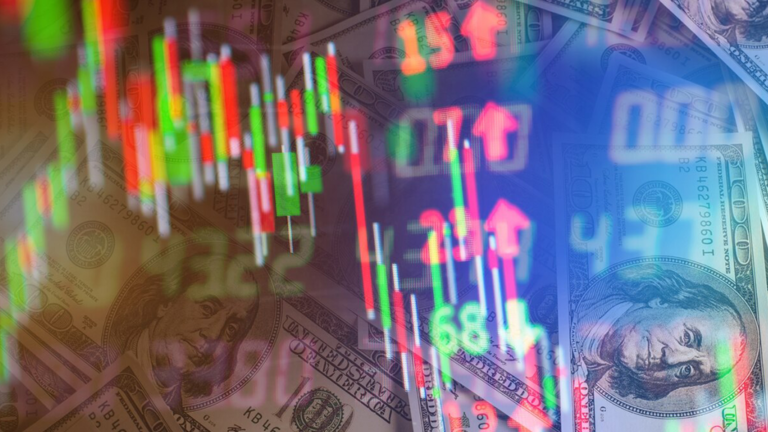
July 03, 2023: DUE TO THE INDEPENDENCE DAY HOLIDAY, the US stock market will have adjusted hours on Monday, July 3. The Nasdaq and New York Stock Exchange (NYSE) will close early at 1 p.m. Eastern Time (ET) on Monday and remain closed on Tuesday. Additionally, the bond market in the United States will close at 2 p.m. ET on Monday and will be closed on Tuesday as well.
Independence Day is a federal holiday in the United States, celebrated since 1870, with historical roots dating back to the 18th century. It commemorates the birth of American independence in 1776.
In 2023, Nasdaq will observe ten stock market holidays and two market half-day holidays. These include Martin Luther King Jr. Day, President’s Day, Good Friday, Memorial Day, Juneteenth, Independence Day, Labor Day, Thanksgiving (with early closing at 1 p.m. EST on the following day, commonly known as Black Friday), and Christmas Day.
Therefore, on Tuesday, July 4, the US stock and bond markets will be closed in observance of the Fourth of July holiday.
It’s important to note that federal holidays, such as Independence Day, also affect non-essential federal government offices, federal banks, and post offices, likely to be closed or operate with reduced hours. Commercial banks and other financial institutions may also follow similar schedules.
Supreme Court Ends Affirmative Action Programs

June 30, 2023: The recent decision by the Supreme Court to invalidate affirmative action programs at Harvard and UNC-Chapel Hill may mark the beginning of a new phase in the ongoing battle over race in America. With a conservative majority on the Court, this ruling is part of a long-term effort to challenge the use of race in allocating state benefits. The decision signifies a shift from viewing affirmative action as objectionable to deeming it unconstitutional due to changes in the Court’s composition.
While some may see this decision as the conclusion of a conservative legal project underway since the 1980s, it could also pave the way for further undermining government and corporate efforts to address racial and ethnic disparities. The ruling could move the law in a more conservative direction and have legal and political consequences comparable to last year’s Roe v. Wade decision.
One likely consequence of this ruling is the invalidation of “disparate impact” rules, which allow plaintiffs to demonstrate discrimination by pointing to significant racial disparities. Conservative justices have targeted disparate impact laws for over a decade, and the recent ruling against race-based college admissions strengthens their position.
Dismissing these provisions would make the law less favorable for those facing discrimination from individuals who are careful not to display racist motives openly. Paradoxically, a race-blind approach by the Supreme Court would make it easier for others to discriminate, contradicting Chief Justice Roberts’ assertion that the way to end racial discrimination is by not discriminating based on race.
Moreover, this decision could disrupt laws addressing racially concentrated harms. If government action can be challenged not because it explicitly mentions race but because it aims to mitigate harm experienced by a specific racial group, it could cast doubt on many state and federal statutes designed to protect minority groups. For instance, laws protecting minority voters or addressing racial disparities in areas such as healthcare could face challenges under this ruling.
The reasons behind the Court’s direction can be attributed to the justices’ alignment with partisan interests, particularly the Republican Party. By targeting race-conscious policies as unconstitutional, the Court provides a legal framework for labeling policies that Republicans oppose as “woke” and, therefore, invalid. This would curtail the ability of Democrats to advance the interests of minority groups within their electoral coalition.
In summary, the Supreme Court’s decision to strike down affirmative
action programs mark not just the end of one chapter but the beginning of a new phase in the American struggle over race. It can potentially move the law in a more conservative direction, undermine efforts to address racial disparities, and set the stage for a new kind of political warfare. The repercussions of this decision could extend beyond university admissions and have far-reaching consequences for policies that seek to promote equality and justice.
Virgin Galactic Rocket Plane Makes Historic Commercial Flight.

June 30, 2023: Virgin Galactic, the space tourism venture founded by Sir Richard Branson in 2004, achieved a significant milestone as its rocket plane, Unity, completed its first commercial flight. This event marks a breakthrough for the company, which has been working towards offering commercial trips to the edge of space for nearly two decades.
The mission took place over the New Mexico desert, where Unity reached an altitude of approximately 53 miles, providing its passengers with breathtaking views and a few minutes of weightlessness. On board were two Italian air force colonels, an aerospace engineer from the National Research Council of Italy, and three crew members from Virgin Galactic.
Previously, Virgin Galactic had conducted test flights, but this marked the first mission with paying customers. The company has sold around 800 tickets priced at up to $450,000 for future space travel experiences.
Unity’s flight began after being carried to an altitude of about 50,000 feet by its carrier plane, VMS Eve. Once released, Unity’s rocket engine ignited, propelling the spacecraft to approximately three times the speed of sound. At its peak, Unity reached an altitude of nearly 85 kilometers (about 53 miles).
During the flight, the Italian team on board conducted scientific experiments, focusing on various aspects affected by microgravity conditions. These included studying the mixing of liquids and the behavior of biological cells, among other research endeavors.
The successful completion of this commercial flight is a significant step forward for Virgin Galactic. The company plans to expand its operations, aiming to launch up to 400 flights annually. This endeavor aligns Virgin Galactic with other prominent players in the space tourism industry, such as Blue Origin, founded by Jeff Bezos, and SpaceX, led by Elon Musk.
Virgin Galactic’s achievement opens up new possibilities for individuals interested in experiencing space travel. While Unity is currently limited in passenger capacity, the company is developing a new class of rocket planes to increase its commercial offerings. These new vehicles are expected to be introduced in 2026 and will enable more frequent flights, with a target of one per week.
Sir Richard Branson expressed his excitement about the milestone, stating that this flight ushers in a new era of repeatable and reliable access to space for private passengers and researchers. Virgin Galactic’s dedication to scientific missions and its commercial goals highlights the company’s commitment to advancing knowledge and exploration beyond our planet.
As Virgin Galactic continues to make strides in space tourism, the hope is that space travel will become more accessible and commonplace, paving the way for a future where venturing beyond Earth’s boundaries becomes an achievable dream for many.
Hollywood Actors’ Strike: What’s at Stake and its Impact on the Film Industry.

June 30, 2023: This summer, Hollywood faces a potential crisis as writers’ strikes have already hit TV and film productions worldwide. The spotlight is on actors threatening to strike if significant studios, streamers, and production companies don’t reach a new contract agreement.
What Actors Want: The actors’ primary demands revolve around higher pay and protections against the unauthorized use of their images through artificial intelligence (AI). With AI technology capable of replicating facial expressions, body movements, and even voices with astonishing accuracy, actors fear losing their jobs to machines. They want guarantees that AI won’t replace their roles, making them obsolete. High-profile stars like Tom Cruise and Keanu Reeves have already experienced the unsettling impact of AI-generated deep fake videos.
Additionally, the streaming boom has significantly influenced contract negotiations. Although series budgets are increasing, the share of money going to performers has not seen a proportional rise. Furthermore, residuals for actors working on streaming platforms are much smaller than traditional broadcast TV rates. The burden of “self-taped auditions,” where actors film their auditions for casting consideration, has also become contentious.
The Studios’ Response: The Alliance of Motion Picture and Television Producers (AMPTP), representing major Hollywood studios like Walt Disney and Netflix, aims to negotiate a new agreement that benefits both SAG-AFTRA members and the industry. However, they have been facing challenges as the Writers Guild of America (WGA) has been on strike for two months, demanding higher minimum pay, more writers per show, and less exclusivity on single projects. The ongoing writers’ strike has already impacted productions, and an actors’ strike could further disrupt Hollywood’s programming for streaming services and the autumn TV schedule.
Actress Rebecca Ferguson has voiced her concerns about the impact of AI technology on creative professionals in the film industry. Many Hollywood stars share this concern. Many Hollywood stars have shown solidarity with the writers’ strike, joining picket lines and supporting the cause. The entertainment industry is united in its fight to protect the value of human creativity and emotion that AI-generated content cannot replicate.
Impact on Movie Lovers: The film industry could reach a near-standstill if actors go on strike. Productions would halt due to the need for more scripts and performers. Moreover, promotion events for completed projects, such as movie premieres and TV show promotions, would suffer as actors would be absent from red carpets, TV shows, and interviews. This situation could have far-reaching consequences on the release schedules for upcoming films and lead to difficulties for film festivals and awards season campaigns.
The Business Impact: Beyond the disappointment for movie and TV lovers, a prolonged strike could significantly impact the box office’s recent post-pandemic recovery. With US box office earnings already nearing $4 billion, an actors’ strike would disrupt the positive trend. Negotiations with the writers’ and actors’ guilds put pressure on studios, necessitating careful handling to avoid further disruptions.
Hollywood is on edge as the summer continues due to the potential actors’ strike. The demands for higher pay and AI safeguards, along with the ongoing writers’ strike, are testing the resilience of the entertainment industry. With notable films like Christopher Nolan’s Oppenheimer and the live-action Barbie movie scheduled for release, the impact of an actors’ strike could be felt across the entertainment landscape. The situation remains fluid as negotiations continue, and the industry and audiences hold their breath to see if Hollywood can avoid a major shutdown.
Fed Official Michelle Bowman Opposes Stricter Banking Regulations.

June 29, 2023: In a recent speech, Federal Reserve Governor Michelle Bowman voiced her strong opposition to proposed stricter regulations for the nation’s largest banks. Bowman, appointed by former President Trump in 2018, criticized her colleagues on the board for considering more stringent requirements. Notably, she also raised concerns about the Fed’s report on the collapse of Silicon Valley Bank, cautioning against using perceived weaknesses in the banking sector as a basis for harsher regulation.
Bowman’s remarks are significant due to their provocative nature, as disagreements within the Fed’s board of governors rarely become public. This isn’t the first time the topic of banking regulation has sparked tensions among officials. Previously, then-Fed governor Lael Brainard strongly dissented against regulatory changes led by Trump-appointed vice chair Randal Quarles.
The current disagreement between Bowman and Michael Barr, the Biden-appointed official leading new regulatory proposals, highlights the diverging opinions within the board. Bowman targeted the Fed’s post-mortem on Silicon Valley Bank, questioning the need for more input from other board members and the report’s adequacy in providing a comprehensive account of the situation.
Bowman emphasized the potential consequences of misperceptions and misunderstandings about the causes of bank failures and their associated issues. She warned that unnecessary increases in capital requirements could impede bank lending and diminish competition, harming banks, their customers, the financial system, and the broader economy.
While Barr may have the necessary votes to implement a more aggressive regulatory agenda due to the Biden-appointed board members, there must be a smoother process. Expect a potential battle as different perspectives clash.
By advocating for improved supervision rather than higher capital requirements, Bowman suggests a shift in focus toward ensuring that examiners have the appropriate tools and support to identify critical issues promptly. She reiterates the need for an independent review of recent bank failures to address underlying concerns about the effectiveness of supervision.
Bowman’s opposition to stricter banking regulations adds to the ongoing discourse surrounding this topic and showcases the divisions within the Federal Reserve’s board of governors.
President Biden’s Sleep Apnea: Condition and Treatment Options

June 29, 2023: President Biden, like many others, has been diagnosed with sleep apnea. Sleep apnea is a severe sleep disorder where a person’s breathing stops for 10 seconds or longer during sleep. It is estimated that millions of American adults and hundreds of millions worldwide may suffer from obstructive sleep apnea, the most common type.
Obstructive sleep apnea occurs when the airways are blocked by weak, heavy, or relaxed soft tissues, unlike central sleep apnea, where the brain fails to signal the body to breathe. As people age, the muscle tone in their soft palate and neck weakens, making sleep apnea more common in older individuals. However, studies have found that older individuals tend to have milder to moderate cases of sleep apnea, with more severe cases occurring at younger ages.
If left untreated, obstructive sleep apnea can lead to various health risks, including hypertension, heart disease, type 2 diabetes, depression, and an increased risk of early death. The condition disrupts sleep cycles, causing frequent “micro-awakenings” throughout the night. Sleep apnea symptoms include excessive daytime sleepiness, loud snoring, waking up with a dry mouth or sore throat, and morning headaches.
Fortunately, there are effective treatments available for sleep apnea. Weight loss can significantly reduce or eliminate sleep apnea, as it reduces pressure on the airway by reducing tissue mass in the mouth, tongue, and neck. Doctors can also prescribe oral appliances that help enlarge the airway by repositioning the tongue or jaw forward. Surgery may be recommended in some cases to address anatomical issues contributing to sleep apnea, such as nasal polyps, enlarged tonsils or adenoids, or a deviated septum.
For milder cases of sleep apnea, positional therapy can be beneficial. This means sleeping on your side instead of your back to improve airway flow and reduce snoring. One of the most common and effective treatments is using a continuous positive airway pressure machine (CPAP). This device delivers constant and steady air pressure through a mask worn while sleeping, keeping the airway open. CPAP machines have become more advanced, allowing physicians to monitor sleep and adjust air pressure accordingly remotely.
Deep sleep is crucial for the body’s restoration and memory consolidation. Sleep apnea interrupts deep sleep and can prevent individuals from reaching the final stage of sleep, called rapid eye movement (REM) sleep, where dreams occur. Missing out on deep and REM sleep can lead to memory deficits, cognitive issues, and increased risks of chronic diseases.
Individuals need to be aware of sleep apnea symptoms and seek evaluation by a sleep specialist if necessary. Loved ones can play a crucial role by speaking up if they notice loud snoring or periods of breathing cessation at night. Sleep apnea can be effectively managed with the appropriate diagnosis and treatment, improving overall sleep quality and reducing associated health risks.
Americans Face a 71% Increase in Grocery Expenses Compared to Last Year.

June 28, 2023: New research reveals that the average American can expect to spend over two-thirds (71%) more on their weekly groceries than last year, even if they try to be frugal.
Nutrition experts from Total Shape analyzed the latest food plans released by the U.S. Department of Agriculture (USDA) and compared them to actual spending data from last year reported by the Bureau of Labor Statistics (BLS). The findings show that even the most budget-friendly plan represents a significant increase from last year’s expenses.
The USDA recommends a monthly spend of $271 for adults aged 20-50 in a four-person household, equivalent to $3,252 per year. However, single individuals must add 20% to their grocery budget, raising the monthly cost to $325, or $3,902 annually.
While this may seem straightforward, it actually translates to a substantial 71% increase from the average American’s grocery spending of $2,280 last year, according to the BLS. Those following the liberal food plan face even higher grocery bills, with an expected monthly expenditure of $426, or $511 for individuals living alone.
It is important to note that these food plans are based on consumption and price data from 2013-2016, updated to current dollars using the Consumer Price Index for specific food items. As a result, they may need to accurately reflect the current cost of living, especially considering the 4% increase in food prices in May. This disparity makes it difficult for typical Americans to prioritize healthy eating habits, as revealed by a recent Cleveland Clinic survey, which found that 46% of respondents cited the cost of food as the main obstacle to maintaining a healthy diet.
Comparing the cost of fast food to cooking at home, the average fast food combo meal in America costs $9.55, while purchasing the ingredients to make the same meal at home amounts to around $22. The higher price at home is due to the typical portion sizes of products in supermarkets, which often require buying more than necessary for a single meal.
However, variations vary across states, depending on average salaries and local grocery prices. For example, states like Iowa, Montana, and Hawaii must allocate more salary for grocery expenses. At the same time, residents of Minnesota find it more challenging to justify buying groceries over opting for takeout, as a combo meal is cheaper than groceries.
In response to these findings, a spokesperson from Total Shape emphasized the importance of planning to make healthy eating decisions more manageable. They provided several actionable tips for reducing grocery costs and making cooking at home more affordable:
- Take inventory of what you already have at home and create a list of potential meals using those ingredients to avoid unnecessary purchases.
- Keep an eye out for coupons and promotions, and consider switching to online grocery shopping to stick to your list and prevent impulse purchases.
- Batch-cooking meals can save money by buying more significant portions and freezing the extra meals for later, making healthy eating more convenient throughout the week.
By following these strategies, consumers can alleviate the financial burden of grocery shopping, especially for single-person households with limited budgets. The spokesperson emphasized that even cooking at home a few times a week can be more affordable and beneficial for long-term health than relying on fast food daily.
Maxar and Esri Enhance Collaboration to Visualize Precision3D in ArcGIS Living Atlas of the World

June 28, 2023: Maxar Technologies and Esri have expanded their partnership to bring the power of Precision3D data to ArcGIS Online Living Atlas of the World. Maxar, a company specializing in space solutions and geospatial intelligence, will make its Precision3D data accessible for viewing on Esri’s platform. This collaboration aims to enhance location intelligence and decision-making processes for ArcGIS users.
The Precision3D products offered by Maxar provide high-resolution data with a 50 cm resolution and an absolute accuracy of 3 m SE90 (Spherical Error 90%). Using advanced algorithms and a big data approach, Maxar combines its expertise with the largest archive of high-quality commercial satellite imagery to create a geo-specific 3D representation of the Earth. This technology allows users to immerse themselves in a digital twin, which merges the physical and virtual worlds, enabling better decision-making.
Precision3D serves various use cases, including aligning datasets to geospatial foundations, running digital simulations in urban environments, and preparing comprehensive natural disaster response plans. Its high resolution and accuracy make it an invaluable tool for these applications.
In addition to Precision3D, Maxar will make other geospatial products available in the ArcGIS Living Atlas. Vivid Standard, Vivid Advanced, NaturalVue 2.0, and National Urban Change Indicator (NUCI) are among the offerings. Vivid Standard provides visually consistent global imagery base maps, while Vivid Advanced offers improved quality over selected metropolitan areas with nearly cloud-free imagery base maps. NaturalVue 2.0 is an image mosaic created from over 60,000 Landsat 8 images, resulting in a seamless, virtually cloud-free, 15-meter base map that accurately reflects the Earth’s colors. NUCI is a commercial urban change detection product that highlights areas of new construction activity by isolating persistent changes over time.
Maxar will showcase a demo of Precision3D at the Esri User Conference in San Diego, California, from July 11-13, 2023. This event provides an opportunity for attendees to experience the capabilities of Precision3D firsthand and gain a deeper understanding of its potential for advancing geospatial projects.
This expanded partnership between Maxar and Esri demonstrates their commitment to pushing the boundaries of geospatial technologies and empowering users with valuable insights derived from high-quality spatial data. By integrating Precision3D into ArcGIS, users can access a comprehensive and accurate 3D map of the world, revolutionizing how we understand and interact with our planet’s geospatial information.
Borrowers Face Impending Student Loan Repayments Amidst High Inflation.

June 28, 2023: Student loan borrowers, who have enjoyed a three-year break from repayments, are now grappling with frustration and anxiety as the deadline to resume payments looms just three months away. In September, interest will start accruing on the federal student loan debt owed by approximately 40 million Americans, with payments due in early October.
As the three-year payment pause nears its end, borrowers find themselves in a precarious position, awaiting the Supreme Court’s decision on the fate of student loan forgiveness. Concerned about the impending debt, they are now scrambling to create a budget and assess their loan situation, fearing that it may impede their future goals.
The payment pause might not return. Since March 2020, student borrowers have been relieved of their federal loan obligations due to an executive order by former President Trump. Despite previous extensions, borrowers had to give up hope for another as the debt ceiling deal between President Biden and Speaker of the House Kevin McCarthy officially set an expiration date for the pause.
Biden’s decision to end the pause drew criticism from student borrower advocates and progressives who felt betrayed by the president’s agreement before knowing the outcome of student debt relief. The Supreme Court is expected to rule this week on the constitutionality of Biden’s executive order to eliminate up to $20,000 in student loans for millions of Americans.
Concerns of unprepared borrowers Many borrowers feel they need more time to resume payments, according to Cody Hounanian, the executive director of the Student Debt Crisis Center. The long-term economic impacts of the pandemic, surging inflation rates, and significant changes in the federal student loan system have created insurmountable obstacles for numerous borrowers.
Borrowers’ reactions to upcoming payments For some borrowers, the resumption of payments signifies a lack of concern for their well-being from officials. Marcus Jones, a 23-year-old finance company employee, felt “smacked in the face” by the lack of change or extended deadlines. He emphasized students’ challenges in recent years and the perception that their concerns still need to be addressed.
Preparations and challenges ahead While some borrowers, like financial analyst LyAsia Monroe, have devised feasible plans to resume loan payments, they believe that their student debt prevents them from living the “American dream.” Cristian deRitis, the deputy chief economist with Moody’s Analytics, predicts that many borrowers have been preparing for the end of the pause but acknowledges that those already facing financial stress will have to make difficult choices regarding bill payments.
Implications on borrowers’ lives The burden of impending loan repayments is causing borrowers to reconsider significant life decisions, such as purchasing a home. Keisha Medina, a psychometrist burdened with $20,000 to $30,000 of student loan debt, believes that her debt will prevent her from achieving the American dream of homeownership.
Impact of Repayments on an uncertain economy Record-high inflation rates have significantly increased household costs over the past year, particularly in housing. Despite signs of inflation easing, consumers continue to bear the burden. Housing expenses remain a primary driver of inflation, even as the annual growth rate slows down.
The economic impact of student loan payments is estimated to be approximately $86 billion per year if millions of borrowers who do not receive additional forbearance start paying an average of $300 per month. This additional burden, combined with other economic factors, could significantly challenge the economy.
Possible relief through income-driven repayment plans DeRitis suggests that income-driven repayment plans (IDR) could alleviate the burden of loan payments. Borrowers should closely monitor IDR options as the Biden administration plans to implement changes next year, including reducing the percentage of discretionary income allocated to student loans.
Read More: Student Loan Payments Set to Resume, Causing Concern for Borrowers.
Student Loan Payments Set to Resume, Causing Concern for Borrowers.

June 27, 2023: In a few months, student loan borrowers will face the resumption of payments, leading to potential financial difficulties. After an over-three-year pause, student loan payments are set to restart this fall, making borrowers uneasy.
President Joe Biden’s Education Department recently confirmed that payments will resume in October, accompanied by interest accrual on borrowers’ balances starting in September. This decision follows multiple extensions of the pandemic-era payment pause by former President Donald Trump and Biden, providing financial relief to millions of federal borrowers.
However, with the signing of a bill to raise the debt ceiling into law in June, signaling the end of the student-loan payment pause, the White House has made it clear that another extension is unlikely. Bank of America and Morgan Stanley have expressed concerns in recent notes, highlighting the challenges that most borrowers may face, with some at risk of falling behind.
Bank of America’s Ethan Harris, head of global economics, explained that if payments were to resume in full, it could significantly increase seriously delinquent balances. This increase, amounting to $167 billion, would raise total serious delinquencies across all categories of household debt by approximately 67%, causing a sizeable shock. The effects could extend to other debt categories as well.
Morgan Stanley researchers noted that only 29% of federal student-loan borrowers are confident they can afford payments without adjusting their spending in other areas. Furthermore, 37% of surveyed borrowers anticipate the need to cut back on expenses, while 34% stated they cannot afford the payments.
As highlighted in previous reports, the student-loan payment resumption is expected to have negative economic impacts. Marshall Steinbaum, a senior fellow at the Jain Family Institute and economics professor at the University of Utah, warned that attempting to collect debt from borrowers who cannot repay would strain the economy. It would create a burdensome situation where the government tries to collect uncollectible debt and places additional pressure on borrowers.
Despite these concerns, Education Secretary Miguel Cardona expressed confidence in facilitating a smooth transition to repayment for borrowers. He emphasized the importance of providing accurate information to borrowers and ensuring a seamless reentry into repayment.
Meanwhile, borrowers await the Supreme Court’s decision on President Biden’s plan to cancel up to $20,000 in student debt. If an adverse ruling occurs, some Democratic lawmakers advocate extending the payment pause, allowing borrowers to delay repayment until their balances are reduced.
As the student loan payment pause ends, economists and advocates warn that millions of borrowers may face significant challenges. Many borrowers have accumulated more debt during the pause period, including credit card debt, auto loans, and mortgages.
Some borrowers need help to keep up with other loan payments, even before the student loan payments kick in. Additionally, changes in loan servicers may further complicate the transition to repayment.
To prepare for the resumption of student loan payments, borrowers should consider exploring options to keep their payments as low as possible. Applying for alternative repayment plans or seeking assistance from loan servicers can help alleviate the financial burden. Borrowers must stay informed and proactive during this transition period.
Is It Too Late to Buy Clearway Energy, Inc. (NYSE: CWEN.A)?

June 27, 2023: Clearway Energy, Inc. (NYSE: CWEN.A) has caught the attention of investors with significant price fluctuations on the NYSE in recent months. The stock reached a high of US$30.84 and dropped to a low of US$27.23. These movements can present opportunities for investors to enter the stock at a lower price. The question is whether Clearway Energy is currently trading at its actual value or is undervalued, offering a buying opportunity. To determine this, let’s examine Clearway Energy’s outlook and value based on the latest financial data and identify any potential catalysts for a price change.
Is Clearway Energy Still a Good Buy?
The good news for investors is that Clearway Energy is still trading relatively cheaply based on the price-to-earnings ratio compared to the industry average. Using the price-to-earnings (PE) ratio, Clearway Energy’s ratio of 5.21x is below the peer average of 30.31x in the Renewable Energy industry. This suggests that the stock is trading at a lower price compared to its industry counterparts. Additionally, Clearway Energy’s share price has shown stability compared to the overall market, indicated by its low beta. This means that if the share price is expected to move closer to its industry peers, the low beta implies it may take time to reach that level, and once it does, it may be resistant to falling back into an attractive buying range.
What Growth Can We Expect from Clearway Energy?
When investing in a stock, assessing its future growth potential is essential. Although value investors may prioritize the intrinsic value relative to the price, an investment thesis with high growth potential at a low price is more compelling. However, Clearway Energy is expected to experience a significant adverse change in profit in the next few years, indicating that near-term growth is not a driving factor for a buying decision. The company faces a high level of uncertainty shortly.
What Does This Mean for You?
If you are a shareholder of Clearway Energy, it is essential to consider the potential risks associated with negative growth prospects, despite the stock currently trading below the industry’s price-to-earnings ratio. You should carefully evaluate whether increasing your exposure to CWEN.A aligns with your overall risk and return objectives or if diversifying into another stock would be a better move.
For potential investors monitoring Clearway Energy, now is an opportune time to conduct further research on the stock. Given its current price multiple, it may present a favorable buying opportunity. However, it is essential to weigh the risks associated with negative growth prospects in the future before deciding.
In summary, Clearway Energy, Inc. (NYSE: CWEN.A) continues to trade at a relatively low price compared to its industry peers. However, investors should be aware of the potential risks associated with negative growth prospects. It is advisable to conduct thorough research and carefully evaluate your investment objectives and risk tolerance before making any investment decisions.
Local Spread of Malaria Detected in Texas and Florida, First in 20 Years.

June 27, 2023: In a concerning development, the Centers for Disease Control and Prevention (CDC) has reported five locally acquired malaria cases in the United States over the past two months. This marks the country’s first occurrence of local spread in two decades. The cases, four of which were found in southwest Florida and one in southern Texas, have prompted health officials to issue a public health alert.
Malaria, a severe disease transmitted through the bite of infective female anopheline mosquitoes, poses a medical emergency and should be treated accordingly, as emphasized by the CDC. Prompt evaluation and treatment within 24 hours of presentation are crucial for suspected malaria patients.
The CDC stresses that while malaria can be fatal, illness and death can usually be prevented. However, it is essential to note that the five cases in Texas and Florida are unrelated.
The Florida Department of Health issued a statewide advisory regarding mosquito-borne illnesses following the identification of four cases in Sarasota County. Similarly, in Texas, a single case was identified in a resident of Cameron County who spent time working outdoors. Public health authorities in both states closely monitor local mosquito populations and conduct surveillance to detect any further cases. Efforts to control the mosquito population are underway in Sarasota County, Florida.
Encouragingly, all five patients have received treatment and are showing signs of improvement. It is worth mentioning that locally acquired malaria cases have not been reported in the United States since 2003, when eight cases were identified in Palm Beach County, Florida.
Although the risk of catching malaria in the United States remains extremely low, the CDC cautions that female anopheline mosquitoes can be found in many regions of the country and have the potential to spread the disease if they bite an infected person. The risk is higher in areas with favorable climatic conditions for these mosquitoes and where individuals from malaria-endemic regions are present.
Globally, malaria is a significant health concern, with over 240 million cases occurring annually, predominantly in Africa. In the United States, most cases are reported in individuals who have traveled from countries with malaria transmission.
With the resumption of international travel to pre-pandemic levels, the CDC warns that more people may bring the disease into the United States. They advise taking precautions, such as using bug spray during warmer months to reduce the risk of mosquito bites.
Symptoms of malaria include fever, chills, headache, muscle aches, fatigue, and in some cases, nausea, vomiting, and diarrhea. It’s important to note that symptoms can manifest anywhere from 10 days to four weeks after infection and occasionally up to a year later.
Healthcare providers must consider malaria a potential diagnosis in individuals presenting with febrile illness, even if they have no travel history to malaria-endemic areas. Diagnosing and treating malaria promptly can prevent severe disease, death, and further transmission to local Anopheles mosquitoes.
In summary, the recent local spread of malaria in Texas and Florida after a 20-year hiatus raises concerns about imported cases and the potential for future spread. Vigilance, preventive measures, and prompt treatment are essential to mitigate the risks associated with this severe disease.
North Korean Analyst: Dollar Dominance Facing Rapid Decline.

June 27, 2023: A North Korean analyst has warned about the accelerated decline of the U.S. dollar’s dominance in the global economy. In an article published by the Korean Central News Agency (KCNA), Jong Il Hyon, an international affairs analyst of the DPRK, highlighted the expanding membership of the BRICS bloc as an inevitable consequence of the existing unfair international economic order.
According to Jong, the primary reason behind numerous countries joining BRICS is the unfair and unreasonable international economic order centered around the U.S.-led monetary system, which relies heavily on the dollar. He argued that the U.S., having accumulated significant wealth during World War II, established the Bretton Woods system in 1944 with the dollar as the international standard currency. However, since then, the U.S. has exploited its dominant position in currency minting and utilized the dollar to pursue its political objectives.
Jong further explained that the U.S. has employed various means and methods to maintain the dollar’s supremacy as the key currency over the past century. From the gold dollar in the 1940s to the oil dollar in the 1970s and now the debt dollar, the U.S. has consistently used its position to impose financial sanctions on countries that displease it. An example cited by Jong is the imposition of financial sanctions on Russia following its invasion of Ukraine.
The analyst emphasized that these actions by the U.S. have reduced reliance on the U.S. dollar and increased the adoption of national currencies for international trade by several countries, including the BRICS nations and members of the Association of Southeast Asian Nations (ASEAN). Notably, the BRICS bloc is considering the proposal for a common currency, which will be discussed during an upcoming leaders’ summit.
Jong highlighted that the trend of de-dollarization indicates that the U.S., through its assertive and arbitrary actions in pursuit of global dominance, has unintentionally expedited efforts to move away from the dollar. This, in turn, has stimulated the creation of a new monetary system and encouraged numerous countries to join the BRICS bloc. Consequently, the U.S. faces the unintended consequences of its sanctions and pressures, undermining its position.
Furthermore, at a recent meeting of foreign ministers, the BRICS member states agreed to promote the use of national currencies for trade settlement among member states and with their allies. According to the North Korean analyst, the economic bloc is steadily increasing its political influence in the international arena and is becoming a challenge to the existing international order and financial system led by the U.S. and the West.
In conclusion, the warning from the North Korean analyst suggests that the U.S. dollar’s dominance in the international economic order is rapidly eroding. The unfairness of the existing system and the U.S.’s exploitation of its currency’s position has prompted many countries to seek alternatives, such as adopting national currencies for international trade. The growing de-dollarization trend significantly challenges the existing international order and the U.S.-led financial system.
CATL Develops Game-Changing EV Battery for Long-Distance Travel

June 26, 2023: CATL has made a groundbreaking announcement regarding their upcoming electric vehicle (EV) battery, which can potentially revolutionize the industry.
The new battery, known as the “semi-solid state battery,” boasts an impressive energy density of up to 500 watt-hours per kilogram. This is twice the energy density of current leading batteries available in the market. This battery could enable EVs to travel significantly longer distances without requiring frequent charging if successfully produced.
Notably, CATL claims that the semi-solid state battery has the necessary energy density and safety features for aircraft use. The company is collaborating with partners to develop an electric passenger aircraft. This innovation holds immense promise for the planet as air travel contributes approximately 2.4% of global greenhouse gas emissions.
While the exact technology behind CATL’s battery remains undisclosed, the term “semi-solid state” suggests using a solid electrolyte material alongside the liquid or gel electrolytes typically found in lithium-ion batteries. Additionally, CATL refers to its battery as a “condensed matter battery,” although the exact meaning of this term remains uncertain, even to experts in the field.
An Inside Climate News correspondent contacted a battery scientist, who said, “I have no idea what that is.” The scientist further explained that companies often employ branding tactics, sometimes without scientific significance, and this practice is not uncommon.
Regardless of the specifics, if CATL’s battery lives up to its claims, it could pave the way for EVs with impressive driving ranges and even power electric passenger airplanes. This development is undoubtedly worth closely monitoring as it has the potential to reshape the future of transportation.
Prologis to Acquire 14 Million Square Feet of Blackstone Industrial Properties for $3.1 Billion.

June 26, 2023: Logistics real estate leader Prologis has announced a definitive agreement to acquire nearly 14 million square feet of industrial properties from Blackstone-affiliated real estate funds. The Deal, valued at $3.1 billion, will be funded by cash. The acquisition price represents an approximate 4% cap rate in the first year, adjusting to a 5.75% cap rate based on today’s market rents.
Dan Letter, President of Prologis, expressed satisfaction with the Deal, highlighting the properties’ high quality and alignment with the company’s long-term growth plan. He emphasized the potential for expanding customer relationships and opportunities for their growing Essentials platform.
Blackstone’s Head of Real Estate Americas, Nadeem Meghji, acknowledged the importance of strategic investments in high-quality warehouses. With significant ownership of warehouses in North America and globally, he highlighted logistics as a high-conviction theme. Meghji praised Prologis as a world-class company with deep expertise in the sector.
The transaction builds on the longstanding partnership between Prologis and Blackstone, which have completed multiple deals over the past 11 years. The leadership of both companies values the relationship and the opportunities it provides to execute their respective strategies across different markets and cycles.
Prologis owns 1.2 billion square feet of logistics real estate in 19 countries. This acquisition will enhance their presence in key markets, including Atlanta, Baltimore/Washington DC, California (Southern California, Central Valley, SF Bay Area), Dallas, Las Vegas, New York/New Jersey, Phoenix, and South Florida. Prologis intends to retain all the acquired properties, strengthening relationships with 50 existing customers and adding 77 new customers.
The transaction is expected to be completed by the end of the second quarter.
Financial advisors for Blackstone include Eastdil Secured, Barclays, BofA Securities, Citigroup Global Markets Inc., Deutsche Bank Securities Inc., Goldman Sachs & Co. LLC, J.P. Morgan Securities LLC, Morgan Stanley & Co. LLC, PJT Partners, and Wells Fargo. Legal advisory services were provided by Simpson Thacher & Bartlett LLP.
About Prologis: Prologis, Inc. is a global leader in logistics real estate, focusing on high-barrier, high-growth markets. With approximately 1.2 billion square feet (113 million square meters) of properties and development projects across 19 countries, Prologis leases modern logistics facilities to around 6,600 customers in the business-to-business and retail/online fulfillment sectors.
About Blackstone Real Estate: Blackstone is a renowned global investor with a business established in 1991. The company manages investor capital amounting to $332 billion. As the largest commercial real estate owner worldwide, Blackstone operates assets across various geographies and sectors, including logistics, residential, office, hospitality, and retail.
Their opportunistic funds seek undermanaged, well-located assets globally. Blackstone’s Core+ business focuses on stable real estate assets through institutional and income-focused strategies, including Blackstone Real Estate Income Trust, Inc. (BREIT), a U.S. non-listed REIT, and a European yield-oriented strategy. Additionally, Blackstone Real Estate manages one of the leading global real estate debt businesses, providing comprehensive financing solutions through Blackstone Mortgage Trust (NYSE: BXMT).
5 Key Points to Know Before the Stock Market Opens

June 26, 2023: 5 Key Points to Know Before the Stock Market Opens
Lucid Soars on Aston Martin Deal: Lucid, a U.S. electric vehicle maker, experienced a significant share surge during pre-market trading. The company announced a $232 million deal with luxury automaker Aston Martin. As part of the agreement, Lucid will acquire a 3.7% stake in Aston Martin and share its “high-performance technology.” This partnership will also provide Aston Martin access to Lucid’s EV battery and powertrain technology.
IBM’s Potential Acquisition of Apptio: IBM, a technology giant, is reportedly nearing a deal to acquire software company Apptio for approximately $5 billion. This acquisition would enhance IBM’s automation capabilities and support its transformation into a cloud and artificial intelligence business. The news caused a slight dip of 0.5% in IBM shares during pre-market trading[2].
Tesla Faces Downgrade from Goldman Sachs: Tesla, the electric vehicle manufacturer, experienced a 3% decline in its shares during pre-market trading following a downgrade by Goldman Sachs. The investment bank lowered Tesla’s rating from buy to neutral, citing potential challenges in new vehicle sales in the coming months. Several other analysts, including Barclays, Morgan Stanley, and DZ Bank, downgraded the stock last week for similar reasons.
UBS Downgrades Alphabet: Analysts at UBS downgraded Google’s parent company, Alphabet, from buy to neutral. Although they don’t consider ChatGPT a threat to Google’s search dominance, the report highlights limited growth upside and medium-term revenue risks for Alphabet, mainly as it invests more in artificial intelligence. UBS suggests investment opportunities lie with companies like Amazon and Meta (formerly Facebook). Alphabet shares experienced a 1.5% decline in pre-market trading.
Goldman Sachs Implements Cost-Cutting Measures: Goldman Sachs is laying off 125 managing directors across its international operations, including some in the investment banking division. This move is part of the bank’s ongoing cost-cutting efforts, prompted by decreased business in mergers and acquisitions and initial public offerings. Due to this announcement, Goldman Sachs shares were down 1.5% in pre-market trading.
Takeaway:
Lucid’s deal with Aston Martin marks a significant milestone in the electric vehicle industry, as both companies will benefit from shared technology and expertise.
IBM’s potential acquisition of Apptio showcases its commitment to expanding automation capabilities and positioning itself as a cloud and artificial intelligence solutions leader.
Tesla’s downgrade by Goldman Sachs and previous downgrades by other analysts suggest potential challenges for the company’s vehicle sales and market performance.
UBS’s downgrade of Alphabet reflects a cautious outlook on its growth potential, particularly in the context of increased investments in artificial intelligence by competitors like Meta and Amazon.
Goldman Sachs’ layoffs indicate the bank’s continued focus on cost reduction and adapting to changing market conditions.
Please note that stock market conditions can change rapidly, and it’s essential to consult up-to-date financial information and expert advice before making any investment decisions.
Pride Month 2023: A Closer Look at Changing Attitudes

June 23, 2023: Pride Month 2023 is unfolding with a distinctive tone, catching the attention of many. Americans from diverse backgrounds increasingly express dissatisfaction, indicating a shift in societal values. This shift was anticipated by some, who believed that the success of the gay rights movement could eventually lead to unintended consequences.
In a 2015 reflection on the state of affairs, I highlighted the notion of “pushback” as a critical trend. As victims of past bullying now engage in similar behavior, a growing backlash emerges. With each legal and societal victory for gay activists, their objectives become more extreme, inadvertently working against their cause.
The evidence has been clear for some time: can a caring and rational society truly tolerate stories like the one involving a California woman who sued doctors for removing her breasts at thirteen, influenced by online personalities claiming to be transgender?
As we find ourselves in 2023, even secular platforms are addressing the growing opposition to what is perceived as excessive expressions of gender fluidity. Articles like the one published on The New Republic website proclaim a surge in ultra-conservative resistance against companies endorsing equal rights. Another headline asks whether this year marks a significant turning point in LGBTQ+ rights, framed in a pro-LGBTQ+ perspective. The term “pushback” is frequently employed, underscoring the rise of righteous opposition.
While it is true that some individuals involved in this pushback harbor mean-spirited or hateful views, it is crucial to denounce and admonish such behavior. Most of those engaged in this movement are motivated by love—for God and their fellow citizens. They genuinely believe that course correction is necessary for the betterment of society.
Several articles have focused on the remarkable findings of a recent Gallup poll, which reveals a sharp increase in conservatism across America in the past two years. While only 10% of Democrats identify as conservative or very conservative, Independents have seen a rise from 24% to 29%, and Republicans from 60% to 74%. Consequently, the percentage of liberal or very liberal Independents has declined from 27% to 23% over the same period.
Analyzing the data by age group, Gallup reports a double-digit increase in conservative social ideology among middle-aged adults (ages 30-64) since 2021. Older Americans’ views on social issues have remained steady, while young adults exhibit a modest increase in conservative social ideology.
Even though the rise among young adults may be considered modest, it is still noteworthy, with the percentage of 18–29 year-olds identifying as conservative or very conservative climbing from 24% to 30% in just two years. The shift is even more dramatic among those aged 30-49, surging from 22% to 35% within the same period. These changes carry significant implications.
Regarding views on same-sex relationships, Gallup notes a decline from last year’s record-high moral acceptance rating of 71% among U.S. adults to 64% this year, returning to a level last observed in 2019. Will this number continue to decrease?
As more states pass legislation to safeguard gender-questioning children from irreversible medical interventions, the Human Rights Campaign, the world’s largest LGBTQ+ activist organization, has declared a national state of emergency for the first time in its 40-year history.
I am fully aware that the LGBTQ+ community, upon reading this article, may feel saddened, angered, or shocked by its contents. They may also view my perspective as hateful, an unapologetic display of homophobia and transphobia resulting from rigid religious beliefs.
I acknowledge these reactions and understand the fear that this analysis might undermine progress over the past five decades.
Twitter’s New CEO, Linda Yaccarino, emailed employees outlining her plans.

June 22, 2023: Twitter’s New CEO, Linda Yaccarino, recently emailed employees outlining her plans to transform the company. Two words stood out among the usual corporate jargon: “First principles.” This concept, rooted in physics and emotional intelligence, holds immense potential for personal and business growth. Understanding and applying the first principles of thinking allows us to break down complex problems, reason, and avoid succumbing to social pressure or outdated practices.
So, what exactly are the first principles? They are fundamental truths that can be proven, not assumptions based on popularity or analogy. We can approach challenges with clarity and emotional intelligence by employing first-principles thinking, preventing emotions from clouding our judgment. It enables us to question existing norms and explore innovative solutions that defy conventional wisdom.
Consider some examples of first-principles thinking in action:
Biology teaches us that humans require oxygen, water, and food to survive. We can explore new frontiers and overcome extreme environments by fulfilling these basic needs.
Hiring employees comes with significant costs and legal responsibilities for a company. By leveraging freelancers, early-stage and small businesses can manage working capital and mitigate legal risks more effectively.
In basketball, the team with the most points wins. The Golden State Warriors revolutionized the game by adopting a smaller, faster lineup, emphasizing three-point shooting, challenging traditional approaches, and achieving multiple championships.
Linda Yaccarino’s emphasis on first-principles thinking aligns with the philosophy of Twitter’s owner, Elon Musk, who attributes the success of his companies to this approach. Tesla disrupted the automotive industry by focusing on cost-effective large batteries, while SpaceX defied experts by developing reusable rockets.
So, how can first-principles thinking benefit you and your business? The key is to break down complex problems into their simplest components and work from there. For instance, if you’re struggling to attract new customers, consider the first principle that people prefer doing business with those they know, like, and trust. You can connect with a broader audience by showcasing your personality in advertising or social media.
Similarly, if you feel overwhelmed by a lack of time, remember the first principle that everyone has the same 24 hours a day. You can enhance productivity and regain control by structuring your day and week more efficiently.
These are just a few examples, but first-principles thinking can be applied to any challenge. Whether seeking reinvention or needing a fresh perspective, embracing first principles empowers you to return to basics, manage emotions, and find innovative solutions. So, next time you face a hurdle, go back to the fundamentals and approach it with a new mindset.
Pay attention to the losers in the Federal Reserve’s efforts to soften the labor market.

June 21, 2023:- Federal Reserve Chair Jerome Powell is set to testify before Congress, and tensions are expected to arise. In the Monetary Policy Report, he will acknowledge that the tight labor market has benefited disadvantaged groups but argue for some softening, which will most likely impact low-income people.
It’s important to note that lower-income workers have been filling job openings, particularly in the leisure and hospitality sectors. They also have the potential to increase labor productivity in the future. The benefits of a tight labor market, such as wage growth, have been observed among those with lower levels of education. Workers with a high school degree or less have experienced consistent wage growth outpacing those with a college degree or higher, and their wage growth has exceeded inflation.
Looking at long-term data, the recent wage relationship between these two groups is highly unusual. Typically, workers with a high school degree have lower wage growth than those with a college degree, creating a growing disparity over time. This affects millions of Americans and reduces the incentive to work. Approximately 40% of the US population holds a high school degree or less, similar to the share of those with a college degree or higher.
The wage growth of less-educated workers is connected to broader socioeconomic issues. Declining labor force participation, especially among those with a high school degree or less, particularly men, is a troubling long-term trend. Additionally, lower levels of education are associated with higher mortality rates. The solution does not lie in merely encouraging more years of schooling but rather in providing more opportunities and higher-paying jobs through a tight labor market.
While recent years have seen relatively rapid growth, there still needs to catch up to do. Long-term solutions should focus on improving the marketable skills of individuals with high school degrees without solely promoting college education. High-quality apprenticeships and training programs often offer better alternatives. The Biden administration’s initiative, Raise the Bar: Unlocking Career Success, emphasizes expanding apprenticeship and training programs in manufacturing, automotive, and cybersecurity. The aim is to establish connections between K-12 schools, colleges, employers, and workforce development programs to ensure high-quality training aligned with job needs.
Despite the promise of apprenticeship programs, they take time to implement effectively. Active labor market programs have shown mixed outcomes in delivering better employment results. The type of program matters, with those focusing on skill-building tending to fare better, albeit with modest effects. Therefore, designing training programs in collaboration with employers to identify in-demand skills is crucial.
Unions present another avenue to enhance the skills and wages of workers with high school degrees. They have successfully negotiated compensation contracts for workers with lower education levels. It’s the skills rather than academic degrees that truly matter. However, recent unionization efforts, such as among Starbucks and Amazon workers, have not been sufficient to drive wage growth for those at the bottom. Unionization rates declined during the pandemic, reaching just 10% in 2022. While unions may be active in specific sectors, their impact on the labor market is limited.
Lastly, businesses should evaluate the productivity of employees hired during labor shortages at higher wages. Are they working more efficiently per hour? Has employee turnover decreased? These factors influence business costs, profits, and productivity. However, the outcomes of these changes take time to predict. A study conducted by Northwestern University’s Kellogg School of Management in December 2022, examining the impact of raising the minimum wage, found reduced profits due to higher pay. Nevertheless, the recent labor shortages present a different scenario. Businesses may consider implementing substantial raises and practices like predictable schedules if it proves profitable.
Ethereum Blockchain: A Beginner’s Guide to Decentralized Finance and Smart Contracts

June 21, 2023:- 2009 Bitcoin revolutionized the world by introducing a decentralized alternative to traditional currencies. This breakthrough sparked a wave of innovation and curiosity around blockchain technology. Enter Ethereum, founded by a visionary named Vitalik Buterin. Ethereum aimed to surpass Bitcoin’s capabilities and provide a platform for developers to build decentralized applications using smart contracts.
What is Ethereum?
As of Q2 2023, Ethereum holds the second spot as the most prominent cryptocurrency with a market capitalization of $220 billion. Ethereum is not just a cryptocurrency; it is a decentralized blockchain platform with a mission to change the world. Its unique features focus on smart contracts, decentralized finance (DeFi), and decentralized applications (dApps).
Smart Contracts:
Smart contracts can be compared to digital vending machines. When you use a vending machine, you enter into a smart contract: you pay the exact amount, select your desired item, and the machine delivers it. Similarly, smart contracts operate on the same principle, executing predefined terms directly through code. Once deployed on the Ethereum network, these contracts are immutable and cannot be changed.
Ether (ETH):
Ether, the native cryptocurrency of Ethereum, powers smart contracts and serves as fuel for transactions and computational services on the network.
History and Challenges:
Ethereum has had its share of challenges, including the infamous DAO attack 2016. This attack led to a hard fork, creating two separate Ethereum networks: the current Ethereum blockchain and Ethereum Classic. Ethereum has since transitioned from proof of work (PoW) to a proof of stake (PoS) consensus mechanism through a significant upgrade known as the Merge.
Token Standards:
Ethereum supports various token standards. ERC-20 tokens are fungible and interchangeable, while ERC-721 tokens are non-fungible tokens (NFTs) for representing unique digital assets. ERC-1155 tokens combine features of both ERC-20 and ERC-721 standards, enabling developers to create unique and interchangeable items.
Ethereum Wallets:
To interact with Ethereum’s smart contracts, users need Ethereum wallets. These wallets can be software or hardware tools that hold private keys and provide public addresses for sending and receiving Ether. Full and light nodes are the two types of Ethereum wallets, each with advantages.
Popular dApps:
Ethereum’s decentralized applications, or dApps, operate on a distributed network of computers, offering various functionalities. Some famous examples include Uniswap, a decentralized exchange (DEX), Aave Protocol for borrowing and lending assets, and OpenSea, a marketplace for NFTs.
Benefits and Disadvantages:
Ethereum brings versatility, cost efficiency, and enhanced performance compared to centralized systems. However, it faces rising transaction costs, Ether volatility, and scalability concerns.
The Future of Ethereum:
Ethereum’s future looks promising as it transitions to become more robust and scalable. The development roadmap includes phases like the Merge, Surge, Verge, Purge, and Splurge, aiming to address limitations and attract more developers and users to the platform.
Ethereum has paved the way for decentralized finance and intelligent contracts, offering a platform for innovation and collaboration across industries. As Ethereum continues to evolve and overcome challenges, it will remain a dominant force in the blockchain and cryptocurrency space in the coming decade.
Casa, a Bitcoin Startup, Diversifies with Ethereum Vaults for Expanded Crypto Support.

June 21, 2023:- Casa, a Bitcoin wallet provider, has expanded its services beyond Bitcoin by introducing Ethereum vaults. This new offering aims to give Ethereum (ETH) holders a more secure way to take control of their funds.
The concept of “not your keys, not your coins” is central to the cryptocurrency industry. Casa seeks to simplify and enhance the security of storing funds by enabling self-custody, allowing users to manage their assets instead of relying on third-party exchanges.
Recognizing that many Bitcoin owners also hold ETH, Casa decided to add support for Ethereum. According to a survey by Grayscale Investments, a significant majority (87%) of Bitcoin investors own at least one other cryptocurrency. Casa initially revealed its plans to expand to Ethereum in November last year.
Incidents of third-party failures in the crypto space, like the downfall of the FTX exchange in November, highlight the risks associated with trusting external platforms. By practicing self-custody and holding private keys, users can minimize the chances of their assets being frozen, misused, or stolen during exchange-related issues.
Casa’s CEO, Nick Neuman, emphasized that self-custody empowers users by giving them control and responsibility over their assets. He believes reducing reliance on third parties and adopting self-custody with private critical ownership is the future of managing finances.
Typically, users secure their ETH or BTC with a single private key. If that key is lost or compromised, the funds are permanently inaccessible. Casa utilizes multi-signature technology, requiring multiple keys to secure the funds.
Casa’s standard multi-signature setup involves two-of-three keys, meaning that two of three are needed to authorize fund transfers. This approach offers added security because even if a hacker obtains one of the keys, they cannot move the funds without the others. It also safeguards forgetful users, as two keys would need to be lost to permanently lose access to their ETH or BTC.
With the latest update, Casa extends its technology to secure Ethereum holdings, joining other multi-signature products available in the Ethereum ecosystem, such as Safe.
For users concerned about the complexity of self-custody, Casa strives to make the process surprisingly simple. Their app provides users with a clear overview of their essential health and guides them through crucial replacement if a key is lost or stolen. Casa compares the user experience to a regular banking app, offering support and guidance at every step.
Additionally, Casa offers an advanced plan for users with significant holdings. This plan features a five-key vault with additional security measures like video verification and emergency support.
Elon Musk Declares ‘Cisgender’ and ‘Cis’ as ‘Slurs’ on Twitter, Fueling Anti-Trans Controversy

June 21, 2023:- Elon Musk, the billionaire owner of Twitter, has once again stirred controversy with his recent comments against the transgender community. In his latest anti-trans statements, Musk has rejected using specific terms on the platform that holds significance for transgender individuals.
A Twitter user shared their experience of receiving messages from “trans activists” after expressing their rejection of the term ‘cis’ and their unwillingness to be called by it. They revealed that they were targeted with derogatory language like ‘cissy’ and were told they were ‘cis’ regardless of their preference. They highlighted the double standards at play and asked readers to imagine the situation if roles were reversed.
Musk tweeted that repeated and targeted harassment towards any account would result in temporary suspensions for the offending statements. He also stated that the words ‘cis’ or ‘cisgender’ are considered slurs on the platform. Furthermore, he labeled the person who coined the term ‘cis’ as a “contemptible creep” with serious problems.
Musk has a history of making unilateral decisions about Twitter’s policies based on his preferences. However, whether this stance will be adopted as an official policy by the platform remains to be seen.
The term “cisgender” holds importance in the vocabulary of many transgender individuals as it refers to people who identify with the sex assigned to them at birth.
Although Twitter’s hateful conduct policy does not explicitly mention the term, it prohibits targeting individuals with repeated slurs, tropes, or content that aims to degrade or perpetuate negative stereotypes about protected categories.
Musk has previously publicly attacked transgender people, even going as far as stating his intention to actively lobby for the criminalization of healthcare options for transgender children, which he believes can lead to irreversible and severe changes.
Insider conducted a test in April that revealed Twitter’s limitation on the visibility of specific tweets sent through direct messages when terms like “trans,” “transgender,” or “intersex” were used.
It is worth noting that Musk has a transgender daughter legally changed her name in 2022 due to her gender identity and desire to disassociate from her biological father, Elon Musk.
When contacted for comment, Twitter responded with an automated message that provided no context regarding Musk’s claims.
Hunter Biden Will Plead Guilty to tax offenses.

June 21, 2023:- Hunter Biden, the son of President Joe Biden, has reached a deal with the Justice Department that allows him to plead guilty to federal tax offenses while avoiding prosecution on a gun charge. The agreement, announced on Tuesday, focuses on misdemeanor tax offenses and the illegal possession of a firearm as a drug user. Hunter Biden is expected to avoid time behind bars by adhering to the conditions set by prosecutors.
This deal ends a lengthy investigation by the Justice Department into the president’s son, who has publicly acknowledged his struggles with addiction following the death of his brother in 2015. By resolving the case, the Biden administration aims to avoid distracting headlines and maintain distance from the Justice Department, a priority for the White House.
It’s important to note that the agreement’s scope is limited to tax and weapons violations and does not extend to broader issues or any connection to the Democratic president. However, some Republicans, including former President Donald Trump, have used the case to criticize Joe Biden and question the independence of the Justice Department. Trump likened the agreement to a minor offense, while others suggested favoritism due to Hunter Biden’s familial ties.
Under the terms of the agreement, the Justice Department is expected to recommend probation for the tax charges, removing the possibility of prison time for Hunter Biden. However, the final decision rests with the judge overseeing the case. The tax offenses involve failing to pay over $100,000 in taxes on income exceeding $1.5 million in 2017 and 2018. It’s worth noting that the back taxes have already been paid.
Regarding the gun charge, Hunter Biden possessed a handgun for 11 days in October 2018, despite being aware of his status as a drug user. This charge carries a maximum sentence of up to 10 years in prison, but a pretrial agreement has been reached. If Hunter Biden adheres to the agreement’s terms, the charge will likely be expunged from his record.
Hunter Biden’s lawyer Christopher Clark expressed his understanding that the five-year investigation has now been resolved. He stated that Hunter Biden takes responsibility for the mistakes made during a challenging period of his life and looks forward to continuing his recovery.
It’s important to note the context surrounding this case. The resolution of Hunter Biden’s case comes when the Justice Department is pursuing a significant case against former President Trump. Trump faces federal criminal charges related to the alleged mishandling of classified documents. The Trump charges have triggered criticism from Republicans who claim that the Justice Department is being politicized.
While Republican lawmakers continue to investigate Hunter Biden’s business dealings, there is no evidence of corruption tied to the family’s financial ties. On the other hand, Democratic Senator Chris Coons of Delaware believes that the case has been thoroughly investigated over the past five years and asserts that this resolution ends baseless conspiracy theories.
In conclusion, Hunter Biden’s agreement with the Justice Department allows him to plead guilty to tax offenses while avoiding prosecution on a gun charge. This outcome, which avoids prison time, concludes a long-running investigation and addresses specific violations without broader implications for the Democratic president. The resolution of this case comes at a time when the Justice Department is handling significant charges against former President Trump, leading to ongoing political debates.
Rising Presence of Latin American Women CEOs Making Waves in the Tech Industry

Women have shown strength and resilience, making a strong presence in fintech, health tech, biotech, and edtech industries. According to a recent study conducted by Statista, only about 3% of the world’s largest companies have female CEOs, despite women accounting for about 25% of the predicted CEO population in Latin America. However, this figure has improved to over 36% as of 2022. While only two Latin American women are CEOs of Fortune 500 companies in the US, the number of female entrepreneurs in STEM in Latin America and the Caribbean is on the rise, with 54% of these women raising capital for their ventures.
Laura Mendoza, the founder of Unima, is one example of a Latin American female entrepreneur making a difference. Her company creates at-home blood tests processed through smartphone images and sent to doctors, allowing patients to receive faster test results. Other female leaders impacting the region include Carolina Hernandez, CEO of Colorchain, who combines textile technology with safety certifications to create better uniforms for medical professionals. Komal Dadlani, co-founder and CEO of Lab4U, who created a smartphone app that simulates a science lab for STEM learning.
Despite these examples, women are still underrepresented in leadership positions in Latin America and worldwide. Latin America is growing in terms of tech companies, and the potential for women in leadership, but the bar for female representation is still too low. Efforts must be made to promote female and diverse ownership, leadership, and management in Latin America and beyond. However, the trend of Latin American women building their tables and sending invites to join them is definitely on the rise. The conversation around diversity and inclusion in tech leadership is just beginning.
Amazon enters AI race for corporate clients with launch of new platform, joining Google and Microsoft
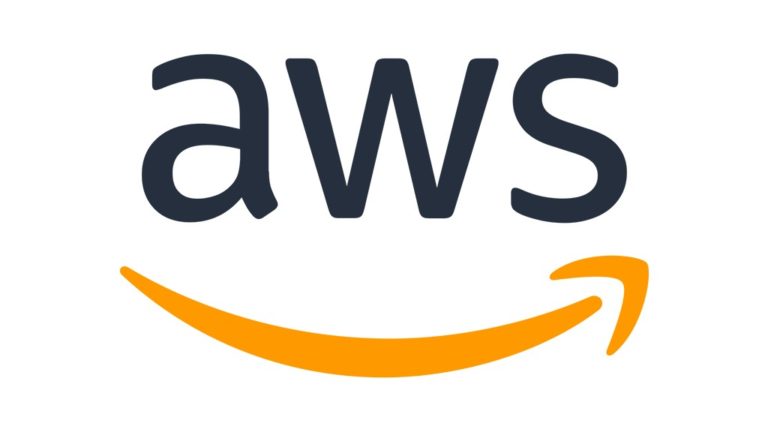
Amazon has launched a new generative AI service called Bedrock through its cloud computing platform. The service will offer corporate clients tools to create artificial intelligence applications designed specifically for their business needs. The tools include two large language models called Titan Text and Titan Embeddings and models from startups, including AI21, Anthropic and Stability AI. Clients will be able to customize the Titan models to their data and needs, but the information they input will not train the Titan models. This means that all data remains secure from other customers and competitors. Pegasystems and Salesforce are among the companies looking to use Bedrock. Amazon focuses on corporate clients rather than consumers and largely avoids heavy investment in any AI startup. Amazon CEO Andy Jassy released a letter to shareholders expressing optimism after “one of the harder macroeconomic years in recent memory.”
Amazon CEO Andy Jassy Shares His Vision in Letter to Shareholders

Amazon’s President and CEO, Andy Jassy, has outlined his vision for the company’s future in an 11-page letter to shareholders. Jassy, who took over from Jeff Bezos in 2021, expressed his confidence in controlling costs and shared his ideas for the future. He is focused on unproven businesses like Kulper Internet Satellite, a venture that aims to create a low Earth orbit satellite system to deliver high-quality broadband internet service to areas that do not currently have it. Jassy also spoke about the importance of applying machine learning in many ways and the introduction of Bedrock. This service gives developers access to LLMs from Amazon and other startups.
One of the most important guidelines outlined in Jassy’s letter is a series of four questions each manager must address before proposing new business ideas. These questions include whether the opportunity could be big and have a reasonable return on invested capital, whether the opportunity is well-served today, whether there is a different approach, and whether the company has the competence in that area. If the answers to these questions are favourable, the company will invest.
Jassy also spoke about the evolution of existing businesses, including healthcare. Amazon Pharmacy, launched in 2020, is now a full-service online pharmacy business that continues innovating. Recently, Amazon Pharmacy launched RxPass, which enables Prime members to get many eligible prescription medications for a $5 per month flat fee. Additionally, Amazon is working on a digital app that makes it easy for patients to discuss issues with a medical practitioner via chat or video conference.
Jassy emphasized the importance of the team working together and reprioritizing resources to ensure profitable performance. After taking a deep look across the company, business by business, the company eliminated 27,000 corporate roles and made other decisions, such as offering free grocery shipping over $35.
Overall, Jassy’s letter expresses a positive outlook for the future of Amazon, focusing on innovation and investment in areas that address a high customer need.
Airline Investors Spooked by American’s Guidance as Revenue Concerns Linger

American Airlines released its first quarter earnings guidance on Wednesday, revealing higher earnings and costs than anticipated. However, the guidance fell short of expectations, disappointing investors and analysts. American’s earnings per share are projected to be between one and six cents, compared to the previously estimated breakeven EPS. The consensus estimate was for a higher profit. Bank of America analyst Andrew Didora predicted nine-cent EPS, while the Visible Alpha consensus estimate was three cents. American’s shares closed down 9% on Wednesday, with Delta’s down 2% and United’s down 7%. Despite the disappointing guidance, Cowen analyst Helane Becker had a contrarian view, citing “a better than expected first quarter.” America’s TRASM, or total revenue per available seat mile, is expected to increase by 25.5% compared to the first quarter of 2022. Its CASM, cost per available seat mile excluding fuel, is expected to decrease by 1.5%. United is set to report earnings on April 19, while America is expected to report on April 20. The focus of the earnings season is expected to be on 2Q revenue guidance and commentary on the upcoming peak summer travel season.
Airline Investors Spooked by American’s Guidance and Revenue Concerns Looming

American Airlines’ First Quarter Earnings Guidance Falls Short of Investor Expectations American Airlines released its first quarter earnings guidance on Wednesday, revealing that it expects higher earnings and costs than previously anticipated. However, the announcement still disappointed investors and some analysts. American Airlines stated that its earnings per share would range from one cent to six cents, whereas it had previously estimated breakeven EPS. Although the Visible Alpha consensus estimate was for three cents, Bank of America analyst Andrew Didora had predicted earnings per share of nine cents. The announcement caused American Airlines’ shares to drop by 9%, while Delta and United shares fell by 2% and 7%, respectively.
In addition to American Airlines’ lower-than-expected guidance, Didora had previously expressed concerns about the industry’s forward bookings. He noted that since March, airline bookings have slowed by 400 basis points. Diadora said, “We expect the focus of 1Q airlines earnings season to be on 2Q revenue guidance and commentary on the upcoming peak summer travel season,” adding that domestic net sales have decelerated by 550bps and international net sales have decelerated by 250bps since mid-March. He further warned that domestic, leisure-oriented airlines could be at greater risk in the second quarter of 2023 due to more off-peak leisure periods between now and Memorial Day.
Cowen analyst Helane Becker, however, had a different view of American Airlines’ guidance. In a note issued Wednesday morning, she cited “a better than expected first quarter” and stated that “revenues were in line with our forecast, but CASM ex was down a little more than we estimated.” American Airlines had guided to a TRASM (total revenue per available seat mile) increase of 25.5%, compared to the first quarter of 2022, with a CASM (cost per available seat mile) decrease of 1.5% excluding fuel. It had previously estimated a TRASM increase between 24% and 27%, with a CASM decrease of down 3% to flat.
United is expected to report earnings on April 19th, while America is expected to report on April 20th. Becker believes that the key that day will be forward guidance, which should be fairly robust, even with any accruals for labour contracts that they may discuss. She further believes that June quarter revenues will continue to be strong, in part because capacity is not back to 2019 levels while demand exceeds those levels. American Airlines reported that its first-quarter capacity totalled 65 billion available seat miles, up 9.2% from the first quarter of 2022.
Google CEO Sundar Pichai Advocates For AI Regulation: “Consequences are a Must”

The CEO of Google, Sundar Pichai, has expressed his belief that artificial intelligence (AI) is one of our most significant technological advancements. In a recent “60 Minutes” interview, Pichai explained that AI is becoming increasingly crucial to Google’s business. The company recently released an AI chatbot called Bard and developed a prototype named “Project Starlink” to create a more lifelike video conferencing experience.
Pichai emphasized the importance of there being consequences for creating deep fake videos that cause harm to society. However, Pichai also acknowledged the need for government regulation of AI, particularly given the emergence of deep fakes. He suggested that the approach to the technology would be “no different” from how Google tackled spam and Gmail, using better algorithms to detect and manage potential risks.
This call for regulation is not new. In March, an open letter signed by several tech leaders, including Elon Musk and Steve Wozniak, as well as CEOs, called for a six-month pause on AI development to assess potential risks. The letter has since gained over 26,000 signatures.
Pichai’s comments highlight the mixed reactions that AI technology is receiving, with some seeing it as a revolutionary and necessary advancement and others expressing concerns about potential risks and the need for regulation. While AI has shown immense potential in various industries, it is also essential to consider the ethical implications of its use and development.
Diageo, One of the World’s Largest Alcohol Companies, Appoints Its First Female CEO

Diageo, the company behind famous brands such as Guinness and Johnnie Walker, has appointed Debra Crew as its new CEO starting from July 1. Currently serving as the company’s chief operating officer, Crew will take over from Ivan Menezes, who has held the position for ten years. Women will make up more than 50% of Diageo’s executive committee with her appointment.
Diageo will become the largest UK company listed on the Financial Times Stock Exchange 100 Index to be led by a woman. Diageo is now the seventh-largest member of the FTSE 100, with only nine other companies led by women. In addition, Diageo was ranked the top company for women’s representation at the board level in the FTSE Women Leaders Review in February 2023.
The crew joined Diageo in 2019 as a non-executive director before becoming president of Diageo North America in July 2020. With a market value of $19 billion and $4.2 billion in profits in 2022, Forbes ranks Diageo as the fourth-largest alcoholic drink company. The crew has years of experience and expertise in the industry, having previously held leadership positions at PepsiCo, Kraft Foods, Nestlé S.A., and Mars, Inc. She was also CEO of the tobacco company Reynolds American and an officer in the United States Army.
Crew’s appointment reflects Diageo’s commitment to diversity and inclusion. The company has set ambitious targets to increase gender representation and diversity across all levels of the organization. The company’s gender pay gap report for 2021 showed progress, decreasing from 9.8% to 7.5%. However, work must still be done to achieve full gender parity.
In a statement, Crew said she was honoured to take on the CEO role and looks forward to leading the company through its next growth phase. Diageo’s chairman, Javier Ferrán, praised Crew’s leadership qualities, experience, and track record of delivering results, saying she was the ideal candidate to lead Diageo into the future. She also highlighted the importance of diversity and inclusion in driving business success.
Overall, Crew’s appointment as CEO of Diageo is a significant milestone for the company and the industry. With her wealth of experience and commitment to diversity and inclusion, she is poised to lead Diageo to greater success in the years ahead.
Delta and American Airlines Aim to Revitalize Detroit and Philadelphia Hubs After Pandemic Traffic Decline.

The recovery from the pandemic in the airline industry has been uneven across US hubs. Delta’s mid-continent hubs and America’s primary transatlantic hub, as well as California’s two major airports, have been slow to restore service. While average airport traffic recovery across the Fitch Ratings portfolio ended 2022 at 92% of 2019 levels, the recovery of traffic at some secondary hubs, such as Detroit, Minneapolis, and Philadelphia, has been slow. Delta and America are working to rebuild their depleted hubs. Delta’s daily Detroit departures declined from about 418 in 2019 to 131 in 2020 and then rebounded to 318 in June 2021, and it plans to have 297 daily departures in June 2023. Delta’s and American executives have talked about rebuilding their depleted hubs. Philadelphia’s traffic declined 31% between 2019 and 2022, Detroit’s declined 23%, and Minneapolis’s declined 21%. Fitch Ratings reported that the top airport gainers were Myrtle Beach, El Paso, and Boise, while Charlotte, Dallas, Miami, and Denver were the top gainers among major airports. The recovery of the airline industry has been affected by slower returns in demand for international and business travel and reduced rubbing activity.
White House plans to establish Women’s Business Centers in all US states

The Biden administration is set to announce the expansion of the Women’s Business Center (WBC) network, which will open 15 new centres by September, bringing the total to 160 nationwide. The WBCs are designed to help women-owned small businesses overcome the obstacles they often face when starting or expanding a business. The centres offer various resources, such as business training, counselling, federal contract support, and financing opportunities. The Biden administration has invested approximately $70 million into the network, with plans to triple the number of WBCs at minority-serving institutions and expand WBCs to every state, the nation’s capital, and Puerto Rico. The announcement comes amid a surge in small business applications, with 10.5 million Americans submitting new applications in the past two years, the most significant increase on record. Female entrepreneurs own 12 million businesses in the US and created almost half of the new businesses started in 2021. Despite this, women-owned businesses still face barriers to growth, such as difficulty obtaining funding and securing federal contracts. To address this, the SBA has expanded its North American Industry Classification System code eligibility and launched the Ascent e-learning platform, providing free resources and guidance to female entrepreneurs. The Women’s Business Summit, which includes a panel discussion with SBA administrator Isabella Casillas Guzman and the founders of Spanx, ClassPass, the Lip Bar, and Dunamis Charge, will also take place on Monday.































